
User Guide
AWS Billing
Version 2.0
Copyright © 2024 Amazon Web Services, Inc. and/or its affiliates. All rights reserved.

AWS Billing User Guide
AWS Billing: User Guide
Copyright © 2024 Amazon Web Services, Inc. and/or its affiliates. All rights reserved.
Amazon's trademarks and trade dress may not be used in connection with any product or service
that is not Amazon's, in any manner that is likely to cause confusion among customers, or in any
manner that disparages or discredits Amazon. All other trademarks not owned by Amazon are
the property of their respective owners, who may or may not be affiliated with, connected to, or
sponsored by Amazon.

AWS Billing User Guide
Table of Contents
What is AWS Billing and Cost Management? ................................................................................. 1
Features of AWS Billing and Cost Management .................................................................................... 1
Billing and payments .............................................................................................................................. 1
Cost analysis ............................................................................................................................................. 2
Cost organization .................................................................................................................................... 2
Budgeting and planning ........................................................................................................................ 3
Savings and commitments .................................................................................................................... 3
Related services ............................................................................................................................................ 3
AWS Billing Conductor ........................................................................................................................... 3
IAM ............................................................................................................................................................. 4
AWS Organizations ................................................................................................................................. 4
AWS Pricing Calculator .......................................................................................................................... 5
Getting set up with Billing ............................................................................................................. 6
Learn more about Billing features ......................................................................................................... 10
What do I do next? .................................................................................................................................... 11
Optimize your spending using AWS Cost Management features ................................................ 11
Using the Billing and Cost Management API .................................................................................. 11
Learn more ............................................................................................................................................. 11
Get help .................................................................................................................................................. 11
Setting up your tax information ............................................................................................................. 11
Updating and deleting tax registration numbers ........................................................................... 12
Turning on tax setting inheritance .................................................................................................... 12
Managing your US tax exemptions ................................................................................................... 13
Setting up your Amazon S3 to use your Tax Settings API ........................................................... 14
Customizing your Billing preferences .................................................................................................... 18
Invoice delivery preferences ............................................................................................................... 19
Alert preferences ................................................................................................................................... 19
Credit sharing preferences .................................................................................................................. 20
Reserved Instances and Savings Plans discount sharing preferences ........................................ 21
Detailed billing reports (legacy) ........................................................................................................ 22
Customizing your AWS payment preferences ...................................................................................... 23
View your payment methods ............................................................................................................. 24
Designate a default payment method ............................................................................................. 24
Remove a payment method ............................................................................................................... 25
Version 2.0 iii

AWS Billing User Guide
Changing the currency to pay your bill ........................................................................................... 25
Adding additional billing contact email addresses ........................................................................ 26
Setting up your India billing .................................................................................................................... 26
Signing up for AWS India ................................................................................................................... 27
Managing your AWS India account ................................................................................................... 27
Finding the seller of record ..................................................................................................................... 29
Current SORs ......................................................................................................................................... 30
Related resources .................................................................................................................................. 32
Reviewing your monthly billing best practices .................................................................................... 32
Check purchase order balance and expiration ................................................................................ 33
Review tax settings ............................................................................................................................... 33
Enable tax setting inheritance ........................................................................................................... 34
Update billing contact information .................................................................................................. 34
Review payment currency ................................................................................................................... 35
Getting help with your bills and payments ................................................................................. 37
AWS Knowledge Center ............................................................................................................................ 37
Contacting AWS Support .......................................................................................................................... 37
Understanding your charged usage ....................................................................................................... 38
Monitoring your Free Tier usage ............................................................................................................. 39
Closing your AWS account ....................................................................................................................... 39
Using the console home page ...................................................................................................... 40
Managing Billing and Cost Management widgets ............................................................................... 40
Cost summary ............................................................................................................................................. 41
Cost monitor ............................................................................................................................................... 42
Cost breakdown .......................................................................................................................................... 43
Recommended actions .............................................................................................................................. 43
Related resources .................................................................................................................................. 45
Cost allocation coverage ........................................................................................................................... 45
Savings opportunities ................................................................................................................................ 47
Understanding the Billing dashboard .................................................................................................... 47
Knowing the differences between Billing and Cost Explorer data ................................................... 50
Billing data ............................................................................................................................................. 50
Cost Explorer data ................................................................................................................................ 50
Amortized costs ..................................................................................................................................... 51
AWS service grouping .......................................................................................................................... 51
Estimated charges for the current month ....................................................................................... 52
Version 2.0 iv

AWS Billing User Guide
Rounding ................................................................................................................................................. 52
Presentation of discounts, credits, refunds, and taxes .................................................................. 52
Understanding your bill ................................................................................................................ 53
View your monthly charges ..................................................................................................................... 53
Use the Bills page to understand your monthly charges and invoice ............................................. 54
Download a PDF of your invoice ............................................................................................................ 57
Download a monthly report .................................................................................................................... 58
Understanding unexpected charges ....................................................................................................... 59
Usage exceeds AWS Free Tier ............................................................................................................ 60
Charges received after account closure ........................................................................................... 60
Charges incurred from resources in AWS Regions that are turned off ....................................... 61
Charges incurred by services launched by other services ............................................................. 61
Charges incurred by Amazon EC2 instances ................................................................................... 62
Charges incurred by Amazon Elastic Block Store volumes and snapshots ................................ 63
Charges incurred by Elastic IP addresses ......................................................................................... 65
Charges incurred by storage services ............................................................................................... 65
Contacting AWS Support .................................................................................................................... 65
Managing your payments ............................................................................................................. 66
Manage payment access using tags ....................................................................................................... 66
Making payments ....................................................................................................................................... 68
View remaining invoices, unapplied funds, and payment history .................................................... 69
Managing your payment verifications ................................................................................................... 71
Best practices for verification ............................................................................................................ 71
Payment verification ............................................................................................................................ 72
Troubleshooting payment verification ............................................................................................. 72
AWS Organizations ............................................................................................................................... 73
Subscription purchases ........................................................................................................................ 73
Managing credit card and ACH direct debit ......................................................................................... 73
Add a credit card .................................................................................................................................. 74
Update a credit card ............................................................................................................................ 74
Troubleshoot unverified credit cards ................................................................................................ 75
Delete a credit card .............................................................................................................................. 75
Manage ACH direct debit payment methods .................................................................................. 76
Using Advance Pay ..................................................................................................................................... 78
Registering your Advance Pay ............................................................................................................ 79
Adding funds to your Advance Pay .................................................................................................. 80
Version 2.0 v

AWS Billing User Guide
Making payments in Chinese yuan ......................................................................................................... 81
Using the China bank redirect payment method ........................................................................... 81
Use a Chinese yuan credit card ......................................................................................................... 84
Making payments using PIX (Brazil) ....................................................................................................... 87
Managing your payments in India .......................................................................................................... 88
Supported payment methods ............................................................................................................ 89
Use a credit or debit card to make a payment ............................................................................... 89
Save your credit or debit card details .............................................................................................. 89
Add card details when making a payment ...................................................................................... 90
Delete a credit or debit card .............................................................................................................. 91
Add a net banking account ................................................................................................................ 91
Use a net banking account to make a payment ............................................................................ 92
Remove a net banking account ......................................................................................................... 93
Use Unified Payments Interface (UPI) to make a payment .......................................................... 93
Managing your payments in AWS Europe ............................................................................................ 94
Making payments, checking unapplied funds, and viewing your payment history in AWS
Europe ..................................................................................................................................................... 94
Managing your AWS Europe credit card payment methods ........................................................ 97
Managing your AWS Europe credit card payment verifications .................................................. 98
Managing your SEPA direct debit payment method ................................................................... 101
Using payment profiles .......................................................................................................................... 104
Create payment profiles .................................................................................................................... 106
Edit payment profiles ........................................................................................................................ 109
Delete payment profiles .................................................................................................................... 109
Applying AWS credits .................................................................................................................. 111
Step 1: Choose credits to apply ........................................................................................................... 111
Step 2: Choose where to apply credits ............................................................................................... 112
Step 3: Apply AWS credits to multiple accounts ............................................................................... 113
Step 4: Share AWS credits ..................................................................................................................... 114
Credit sharing preferences ................................................................................................................ 115
Managing your purchase orders ................................................................................................. 116
Setting up purchase order configurations .......................................................................................... 118
Adding a purchase order ........................................................................................................................ 120
Editing your purchase orders ................................................................................................................ 122
Deleting your purchase orders .............................................................................................................. 125
Viewing your purchase orders ............................................................................................................... 125
Version 2.0 vi

AWS Billing User Guide
Reading your purchase order details page ......................................................................................... 126
Enabling purchase order notifications ................................................................................................. 128
Use tags to manage access to purchase orders ................................................................................ 128
Trying services using AWS Free Tier .......................................................................................... 131
Confirming eligibility to use AWS Free Tier ....................................................................................... 132
Avoiding unexpected charges after Free Tier .................................................................................... 132
Track your usage ...................................................................................................................................... 134
Using AWS Free Tier usage alerts ................................................................................................... 134
Recommended actions for Free Tier .............................................................................................. 136
Trackable AWS Free Tier services .................................................................................................... 136
Using the Free Tier API .......................................................................................................................... 170
Related resources ................................................................................................................................ 173
Viewing your carbon footprint ................................................................................................... 174
Getting started with the customer carbon footprint tool ............................................................... 174
IAM policies .......................................................................................................................................... 174
AWS Organizations users .................................................................................................................. 175
Understanding the customer carbon footprint tool ......................................................................... 175
Understanding your carbon emission estimations ............................................................................ 176
Regions, usage, and billing data factors ....................................................................................... 177
Customer carbon footprint tool and Amazon's carbon footprint report ................................. 177
Organizing costs using AWS Cost Categories ............................................................................ 178
Supported dimensions ............................................................................................................................ 181
Supported operations ............................................................................................................................. 182
Supported rule types .............................................................................................................................. 182
Default value ............................................................................................................................................ 183
Status .......................................................................................................................................................... 183
Quotas ........................................................................................................................................................ 184
Term comparisons .................................................................................................................................... 184
Creating cost categories ......................................................................................................................... 185
Understanding the cost preview panel .......................................................................................... 189
Tagging cost categories .......................................................................................................................... 189
Viewing cost categories .......................................................................................................................... 190
Navigating to your cost category details page ............................................................................ 190
Understanding your cost category details page .......................................................................... 190
Your cost category month-to-date categorizations .................................................................... 191
Change your cost type ...................................................................................................................... 191
Version 2.0 vii

AWS Billing User Guide
Downloading your cost category values ............................................................................................. 192
Editing cost categories ............................................................................................................................ 192
Deleting cost categories ......................................................................................................................... 192
Splitting charges within cost categories ............................................................................................. 193
Prerequisites ........................................................................................................................................ 194
Understanding split charge best practices .................................................................................... 194
Organizing and tracking costs using AWS cost allocation tags ................................................ 196
Using AWS-generated tags .................................................................................................................... 198
AWS Marketplace vendor-provided tags ....................................................................................... 203
Restrictions on AWS-generated tags cost allocation tags .......................................................... 203
Activating AWS-generated tags cost allocation tags .................................................................. 204
Deactivating the AWS-generated tags cost allocation tags ....................................................... 204
Using user-defined cost allocation tags .............................................................................................. 205
Applying user-defined cost allocation tags .................................................................................. 205
User-defined tag restrictions ........................................................................................................... 206
Activating user-defined cost allocation tags ................................................................................ 207
Backfill cost allocation tags ................................................................................................................... 208
Updating your AWS Cost Management services with backfill ................................................... 209
Using the monthly cost allocation report .......................................................................................... 209
Setting up a monthly cost allocation report ................................................................................ 210
Getting an hourly cost allocation report ....................................................................................... 211
Viewing a cost allocation report ..................................................................................................... 211
Understanding dates for cost allocation tags .................................................................................... 213
Calling AWS services and prices using the AWS Price List ........................................................ 214
Overview .................................................................................................................................................... 214
Getting started with AWS Price List .................................................................................................... 216
IAM permissions .................................................................................................................................. 216
Endpoints .............................................................................................................................................. 216
Quotas ................................................................................................................................................... 217
Finding services and products ............................................................................................................... 217
Getting price list files ............................................................................................................................. 223
Get price list files ............................................................................................................................... 223
Get price list files manually ............................................................................................................. 227
Read the price list files ..................................................................................................................... 233
Find prices in the service price list file .......................................................................................... 255
Set up price update notifications ......................................................................................................... 259
Version 2.0 viii

AWS Billing User Guide
Set up Amazon SNS notifications ................................................................................................... 260
Notification structure for AWS services ......................................................................................... 261
Notification structure for Savings Plans ........................................................................................ 263
Consolidating billing for AWS Organizations ............................................................................ 266
Consolidated billing process .................................................................................................................. 267
Consolidated billing in AWS EMEA ...................................................................................................... 268
Consolidation period .......................................................................................................................... 269
Services covered .................................................................................................................................. 269
Currency and foreign exchange rate .............................................................................................. 269
Changes to your AWS Cost and Usage Report ............................................................................. 269
Turn off consolidated billing ............................................................................................................ 270
Consolidated billing in India ................................................................................................................. 270
Effective billing date, account activity, and volume discounts ....................................................... 271
Billing and account activity .............................................................................................................. 271
Volume discounts ............................................................................................................................... 271
Reserved Instances .................................................................................................................................. 272
Billing examples for specific services ............................................................................................. 273
Reserved Instances and Savings Plans discount sharing ............................................................ 275
Understanding Consolidated Bills ........................................................................................................ 277
Calculating Consolidated Bills ......................................................................................................... 277
Pricing Tiers ......................................................................................................................................... 278
Reserved Instances ............................................................................................................................. 281
Savings Plans ....................................................................................................................................... 283
Blended Rates and Costs .................................................................................................................. 283
Requesting shorter PDF invoices .......................................................................................................... 286
Organization support charges ............................................................................................................... 288
Security ........................................................................................................................................ 289
Data protection ........................................................................................................................................ 290
Identity and Access Management ........................................................................................................ 291
User types and billing permissions ................................................................................................. 291
Overview of managing access ......................................................................................................... 292
Audience ............................................................................................................................................... 291
Authenticating with identities ......................................................................................................... 296
Managing access using policies ....................................................................................................... 299
How AWS Billing works with IAM ................................................................................................... 302
Identity-based policy with Billing ................................................................................................... 308
Version 2.0 ix

AWS Billing User Guide
AWS Billing policy examples ............................................................................................................ 321
Migrating access control ................................................................................................................... 344
AWS managed policies ...................................................................................................................... 419
Troubleshooting .................................................................................................................................. 458
Logging and monitoring ........................................................................................................................ 460
AWS Cost and Usage Reports .......................................................................................................... 461
AWS CloudTrail .................................................................................................................................... 461
Logging API calls with CloudTrail ................................................................................................... 461
Compliance validation ............................................................................................................................ 475
Resilience ................................................................................................................................................... 475
Infrastructure security ............................................................................................................................. 476
Quotas and restrictions ............................................................................................................... 477
Cost categories ......................................................................................................................................... 477
Purchase orders ........................................................................................................................................ 478
Advance Pay .............................................................................................................................................. 479
Cost allocation tags ................................................................................................................................. 480
AWS Price List ........................................................................................................................................... 480
Bulk policy migrator ................................................................................................................................ 481
Payment methods .................................................................................................................................... 481
Document history ........................................................................................................................ 483
Version 2.0 x

AWS Billing User Guide
What is AWS Billing and Cost Management?
Welcome to the AWS Billing User Guide.
AWS Billing and Cost Management provides a suite of features to help you set up your billing,
retrieve and pay invoices, and analyze, organize, plan, and optimize your costs.
To get started, set up your billing to match your requirements. For individuals or small
organizations, AWS will automatically charge the credit card provided.
For larger organizations, you can use AWS Organizations to consolidate your charges across
multiple AWS accounts. You can then configure invoicing, tax, purchase order, and payment
methods to match your organization’s procurement processes.
You can allocate your costs to teams, applications, or environments by using cost categories or
cost allocation tags, or using AWS Cost Explorer. You can also export data to your preferred data
warehouse or business intelligence tool.
See the following overview of features to help you manage your cloud finances.
Features of AWS Billing and Cost Management
Topics
• Billing and payments
• Cost analysis
• Cost organization
• Budgeting and planning
• Savings and commitments
Billing and payments
Understand your monthly charges, view and pay invoices, and manage preferences for billing,
invoices, tax, and payments.
• Bills page – Download invoices and view detailed monthly billing data to understand how your
charges were calculated.
Features of AWS Billing and Cost Management Version 2.0 1

AWS Billing User Guide
• Purchase orders – Create and manage your purchase orders to comply with your organization’s
unique procurement processes.
• Payments – Understand your outstanding or past-due payment balance and payment history.
• Payment profiles – Set up multiple payment methods for different AWS service providers or
parts of your organization.
• Credits – Review credit balances and choose where credits should be applied.
• Billing preferences – Enable invoice delivery by email and your preferences for credit sharing,
alerts, and discount sharing.
Cost analysis
Analyze your costs, export detailed cost and usage data, and forecast your spending.
• AWS Cost Explorer – Analyze your cost and usage data with visuals, filtering, and grouping. You
can forecast your costs and create custom reports.
• Data exports – Create custom data exports from Billing and Cost Management datasets.
• Cost Anomaly Detection – Set up automated alerts when AWS detects a cost anomaly to reduce
unexpected costs.
• AWS Free Tier – Monitor current and forecasted usage of free tier services to avoid unexpected
costs.
• Split cost allocation data – Enable detailed cost and usage data for shared Amazon Elastic
Container Service (Amazon ECS) resources.
• Cost Management preferences – Manage what data that member accounts can view, change
account data granularity, and configure cost optimization preferences.
Cost organization
Organize your costs across teams, applications, or end customers.
• Cost categories – Map costs to teams, applications, or environments, and then view costs along
these dimensions in Cost Explorer and data exports. Define split charge rules to allocate shared
costs.
• Cost allocation tags – Use resource tags to organize, and then view costs by cost allocation tag
in Cost Explorer and data exports.
Cost analysis Version 2.0 2

AWS Billing User Guide
Budgeting and planning
Estimate the cost of a planned workload, and create budgets to track and control costs.
Budgets – Set custom budgets for cost and usage to govern costs across your organization and
receive alerts when costs exceed your defined thresholds.
Savings and commitments
Optimize resource usage and use flexible pricing models to lower your bill.
• AWS Cost Optimization Hub – Identify savings opportunities with tailored recommendations
including deleting unused resources, rightsizing, Savings Plans, and reservations.
• Savings Plans – Reduce your bill compared to on-demand prices with flexible pricing models.
Manage your Savings Plans inventory, review purchase recommendations, and analyze Savings
Plan utilization and coverage.
• Reservations – Reserve capacity at discounted rates for Amazon Elastic Compute Cloud (Amazon
EC2), Amazon Relational Database Service (Amazon RDS), Amazon Redshift, Amazon DynamoDB,
and more.
Related services
AWS Billing Conductor
Billing Conductor is a custom billing service that supports the showback and chargeback workflows
of AWS Solution Providers and AWS Enterprise customers. You can customize a second, alternative
version of your monthly billing data. The service models the billing relationship between you and
your customers or business units.
Billing Conductor doesn't change the way that you're billed by AWS each month. Instead, you can
use the service to configure, generate, and display rates to specific customers over a given billing
period. You can also use it to analyze the difference between the rates that you apply to your
groupings relative to the actual rates for those same accounts from AWS.
As a result of your Billing Conductor configuration, the payer account (management account) can
also see the custom rate that's applied on the billing details page of the AWS Billing and Cost
Management console. The payer account can also configure AWS Cost and Usage Reports per
billing group.
Budgeting and planning Version 2.0 3

AWS Billing User Guide
For more information about Billing Conductor, see the AWS Billing Conductor User Guide.
IAM
You can use AWS Identity and Access Management (IAM) to control who in your account or
organization has access to specific pages on the Billing and Cost Management console. For
example, you can control access to invoices and detailed information about charges and account
activity, budgets, payment methods, and credits. IAM is a feature of your AWS account. You don't
need to do anything else to sign up for IAM and there's no charge to use it.
When you create an account, you begin with one sign-in identity that has complete access to all
AWS services and resources in the account. This identity is called the AWS account root user and is
accessed by signing in with the email address and password that you used to create the account.
We strongly recommend that you don't use the root user for your everyday tasks. Safeguard your
root user credentials and use them to perform the tasks that only the root user can perform.
For the complete list of tasks that require you to sign in as the root user, see Tasks that require root
user credentials in the IAM User Guide.
By default, IAM users and roles in your account can't access the Billing and Cost Management
console. To grant access, enable the Activate IAM Access setting. For more information, see About
IAM Access.
If you have multiple AWS accounts in your organization, you can manage linked account access to
Cost Explorer data by using the Cost Management preferences page. For more information, see
Controlling access to Cost Explorer.
For more information about IAM, see the IAM User Guide.
AWS Organizations
You can use the consolidated billing feature in Organizations to consolidate billing and payment
for multiple AWS accounts. Every organization has a management account that pays the charges of
all the member accounts.
Consolidated billing has the following benefits:
• One bill – Get one bill for multiple accounts.
• Easy tracking – Track charges across multiple accounts and download the combined cost and
usage data.
IAM Version 2.0 4

AWS Billing User Guide
• Combined usage – Combine the usage across all accounts in the organization to share the
volume pricing discounts, Reserved Instances discounts, and Savings Plans. This can result in a
lower charge for your project, department, or company than with individual standalone accounts.
For more information, see Volume discounts.
• No extra fee – Consolidated billing is offered at no additional cost.
For more information about Organizations, see the AWS Organizations User Guide.
AWS Pricing Calculator
AWS Pricing Calculator is a web-based planning tool to create estimates for your AWS use cases.
Use it to model your solutions before building them, explore the AWS service price points, and
review the calculations behind your estimates. Use AWS Pricing Calculator to help plan how you
spend, find cost saving opportunities, and make informed decisions when using AWS. AWS Pricing
Calculator is useful if you’re new to AWS and for those who want to reorganize or expand their
AWS usage.
For more information, see https://calculator.aws/#/ and the AWS Pricing Calculator User Guide.
AWS Pricing Calculator Version 2.0 5

AWS Billing User Guide
Getting set up with Billing
This section provides information that you need to get started with using the AWS Billing and Cost
Management console. Prerequisites include signing up for AWS and setting up IAM users, reviewing
your AWS bills, and other pages in the console you can use to customize your Billing and Cost
Management preferences.
Topics
• Learn more about Billing features
• What do I do next?
• Setting up your tax information
• Customizing your Billing preferences
• Customizing your AWS payment preferences
• Setting up your India billing
• Finding the seller of record
• Reviewing your monthly billing best practices
Step 1: (Prerequisite) Sign up for AWS and create an IAM user
If you're new to AWS, create an AWS account. For more information, see Getting Started with AWS.
Sign up for an AWS account
If you do not have an AWS account, complete the following steps to create one.
To sign up for an AWS account
1. Open https://portal.aws.amazon.com/billing/signup.
2. Follow the online instructions.
Part of the sign-up procedure involves receiving a phone call and entering a verification code
on the phone keypad.
When you sign up for an AWS account, an AWS account root user is created. The root user
has access to all AWS services and resources in the account. As a security best practice, assign
Step 1: (Prerequisite) Sign up for AWS and create an IAM user Version 2.0 6

AWS Billing User Guide
administrative access to a user, and use only the root user to perform tasks that require root
user access.
AWS sends you a confirmation email after the sign-up process is complete. At any time, you can
view your current account activity and manage your account by going to https://aws.amazon.com/
and choosing My Account.
Create a user with administrative access
After you sign up for an AWS account, secure your AWS account root user, enable AWS IAM Identity
Center, and create an administrative user so that you don't use the root user for everyday tasks.
Secure your AWS account root user
1. Sign in to the AWS Management Console as the account owner by choosing Root user and
entering your AWS account email address. On the next page, enter your password.
For help signing in by using root user, see Signing in as the root user in the AWS Sign-In User
Guide.
2. Turn on multi-factor authentication (MFA) for your root user.
For instructions, see Enable a virtual MFA device for your AWS account root user (console) in
the IAM User Guide.
Create a user with administrative access
1. Enable IAM Identity Center.
For instructions, see Enabling AWS IAM Identity Center in the AWS IAM Identity Center User
Guide.
2. In IAM Identity Center, grant administrative access to a user.
For a tutorial about using the IAM Identity Center directory as your identity source, see
Configure user access with the default IAM Identity Center directory in the AWS IAM Identity
Center User Guide.
Step 1: (Prerequisite) Sign up for AWS and create an IAM user Version 2.0 7

AWS Billing User Guide
Sign in as the user with administrative access
• To sign in with your IAM Identity Center user, use the sign-in URL that was sent to your email
address when you created the IAM Identity Center user.
For help signing in using an IAM Identity Center user, see Signing in to the AWS access portal in
the AWS Sign-In User Guide.
Assign access to additional users
1. In IAM Identity Center, create a permission set that follows the best practice of applying least-
privilege permissions.
For instructions, see Create a permission set in the AWS IAM Identity Center User Guide.
2. Assign users to a group, and then assign single sign-on access to the group.
For instructions, see Add groups in the AWS IAM Identity Center User Guide.
Activating IAM access to the AWS Billing and Cost Management console
By default, IAM roles within an AWS account can't access the Billing and Cost Management
console. This is true even if the IAM user or role has IAM policies that grant access to specific Billing
features. The root user can allow IAM users and roles access to Billing and Cost Management
console by using the Activate IAM access setting.
To provide access to the Billing and Cost Management console
1. Sign in to the Account page in the Billing and Cost Management console at https://
console.aws.amazon.com/billing/home?#/account.
2. Under IAM user and role access to Billing information, choose Edit.
3. Select Activate IAM access.
4. Choose Update.
For more information about this feature, see Activating access to the Billing and Cost Management
console.
Step 1: (Prerequisite) Sign up for AWS and create an IAM user Version 2.0 8

AWS Billing User Guide
Step 2: Review your bills and usage
Use features in the Billing and Cost Management console to view your current AWS charges and
AWS usage.
To open the Billing and Cost Management console and view your usage and charges
1. Sign into the AWS Management Console and open the Billing and Cost Management console
at https://console.aws.amazon.com/billing/.
2. Choose Bills to see details about your current charges.
3. Choose Payments to see your historical payment transactions.
4. Choose AWS Cost and Usage Reports to see reports that break down your costs.
For more information about setting up and using AWS Cost and Usage Reports, see the AWS Cost
and Usage Reports User Guide.
Step 3: Download or print your bill
AWS Billing closes the billing period at midnight on the last day of each month and calculates your
bill. Most bills are ready for you to download by the seventh accounting day of the month.
To download or print your bill
1. Sign into the AWS Management Console and open the Billing and Cost Management console
at https://console.aws.amazon.com/billing/.
2. On the navigation pane, choose Bills.
3. For Date, choose the month of the bill you want to work with.
4. Choose Download CSV to download a comma-separated variable file or choose Print.
Adding or updating alternate contacts
Alternate contacts allows AWS to contact another person about issues with your account, even if
you're unavailable. The alternate contact doesn't have to be a specific person. You could instead
add an email distribution list if you have a team that manages billing, operations and security
related issues.
Step 2: Review your bills and usage Version 2.0 9

AWS Billing User Guide
Examples for alternate contacts
AWS will reach out to each contact type in the following scenarios:
• Billing – When your monthly invoice is available, or your payment method needs to be updated.
If you enabled Receive PDF Invoice By Email in your Billing preferences, your alternate billing
contact also receives the PDF invoices. Notifications can be from AWS service teams.
• Operations – When your service is, or will be, temporarily unavailable in one of more AWS
Regions. Your contacts will also receive any notification related to operations. Notifications can
be from AWS service teams
• Security – When you have notifications from the AWS Security, AWS Trust and Safety, or AWS
service teams. These notifications might include security issues or potential abusive or fraudulent
activities on your AWS account. Notifications can be from AWS service teams concerning security
related topics associated with your AWS account usage. Don't include sensitive information in the
subject line or full name fields since this might be used in email communications to you.
For more information about managing your alternate account contacts, see Alternate account
contacts in the AWS Account Management Reference Guide.
Learn more about Billing features
Understand the features available to you in the Billing and Cost Management console.
• AWS Free Tier: Trying services using AWS Free Tier
• Payments: Managing Your Payments
• Viewing your bills: Understanding your bill
• AWS Cost Categories: Organizing costs using AWS Cost Categories
• Cost Allocation Tags: Organizing and tracking costs using AWS cost allocation tags
• AWS Purchase Orders: Managing your purchase orders
• AWS Cost and Usage Reports: Using AWS Cost and Usage Reports
• Using AWS CloudTrail: Logging Billing and Cost Management API calls with AWS CloudTrail
• Consolidated billing: Consolidating billing for AWS Organizations
Learn more about Billing features Version 2.0 10

AWS Billing User Guide
What do I do next?
Now that you can view and pay your AWS bill, you're ready to use the features available to you. The
rest of this guide helps you navigate your journey using the console.
Optimize your spending using AWS Cost Management features
Use the AWS Cost Management features to budget and forecast costs so you can optimize your
AWS spends and reduce your overall AWS bill. Combine and use the Billing and Cost Management
console resources to manage your payments, while using AWS Cost Management features to
optimize your future costs.
For more information about AWS Cost Management features, see the AWS Cost Management User
Guide.
Using the Billing and Cost Management API
Use the AWS Billing and Cost Management API Reference to programmatically use some AWS Cost
Management features.
Learn more
You can find more information about Billing features including presentations, virtual workshops,
and blog posts on the marketing page Cloud Financial Management with AWS.
You can find virtual workshops by choosing the Services dropdown list and selecting your feature.
Get help
If you have questions about any Billing features, there are many resources available for you. To
learn more, see Getting help with your bills and payments.
Setting up your tax information
You can use the Tax settings page under Preferences and Settings in the left navigation of
your AWS Billing and Cost Management console. Use this page to manage your tax registration
numbers, turn on tax setting inheritance so your tax registration information is aligned across your
What do I do next? Version 2.0 11

AWS Billing User Guide
Organizations accounts, and manage your tax exemptions. This page also shows how you can set
up your Amazon S3 buckets to use your Tax Settings API.
Updating and deleting tax registration numbers
Use the following steps to update or delete one or more tax registration numbers.
Note
If a country isn't listed in the Tax settings page dropdown, AWS doesn't collect tax
registration for that country at this time.
To update tax registration numbers
1. Sign in to the AWS Management Console and open the AWS Billing and Cost Management
console at https://console.aws.amazon.com/billing/.
2. In the navigation pane, choose Tax settings.
3. Under Tax registrations, select the numbers to edit.
4. For Manage tax registration, choose Edit.
5. Enter your updated information and choose Update.
You can remove one or more tax registration numbers.
To delete tax registration numbers
1. Sign in to the AWS Management Console and open the AWS Billing and Cost Management
console at https://console.aws.amazon.com/billing/.
2. In the navigation pane, choose Tax settings.
3. Under Tax Registrations, select the tax registration numbers to delete.
4. For Manage tax registration, choose Delete TRN.
5. In the Delete tax registration dialog box, choose Delete.
Turning on tax setting inheritance
You can use your tax registration information with your member accounts by turning on your
Tax settings inheritance. After you activate it, your tax registration information is added to your
Updating and deleting tax registration numbers Version 2.0 12

AWS Billing User Guide
other AWS Organizations accounts, saving you the effort of registering redundant information. Tax
invoices are processed with the consistent tax information, and your usage from member accounts
will consolidate to a single tax invoice.
Notes
• Tax inheritance settings are only available to accounts after a member account is added.
• If you turn off tax inheritance, the member accounts revert to the account's original TRN
setting. If there was no TRN originally set for the account, no TRN will be assigned.
Tax registration information includes:
• Business legal name
• Tax address
• Tax registration number
• Special exemptions
To turn on tax setting inheritance
1. Sign in to the AWS Management Console and open the AWS Billing and Cost Management
console at https://console.aws.amazon.com/billing/.
2. In the navigation pane, choose Tax settings.
3. Under Tax registrations, select Enable tax settings inheritance.
4. In the dialog box, choose Enable.
Managing your US tax exemptions
If your state is eligible, you can manage your US tax exemptions on the Tax settings page. The
documents you upload for the exemption are reviewed by AWS Support within 24 hours.
Note
You must have IAM permissions to view the Tax exemptions tab on the Tax settings page
in the Billing and Cost Management console.
Managing your US tax exemptions Version 2.0 13

AWS Billing User Guide
For an example IAM policy, see Allow IAM users to view US tax exemptions and create AWS
Support cases.
To upload or add your US tax exemption
1. Sign in to the AWS Management Console and open the AWS Billing and Cost Management
console at https://console.aws.amazon.com/billing/.
2. In the navigation pane, choose Tax settings.
3. Choose Tax exemptions.
4. Choose all of the accounts to add the tax exemption. Choose Manage tax exemption and
select Add tax exemption.
a. If you're logged in as a linked account, you can add tax exemptions to only the linked
account.
b. If you're logged in as a payer account, you can add tax exemptions to both payer and
linked accounts.
5. Specify your exemption type and jurisdiction.
6. Upload certificate documents.
7. Review your information, and choose Submit.
Within 24 hours, AWS Support will notify you through a support case if they need additional
information, or if any of your documents weren't valid.
Once the exemption is approved, you can view it under the Tax exemption tab with an Active
validity period.
You will be notified through a support case contact if your exemption was rejected.
Setting up your Amazon S3 to use your Tax Settings API
Follow this procedure so that the Tax Settings API has permission to send your tax documents to
an Amazon S3 bucket. You can then download the tax document from your Amazon S3 bucket. You
only need to do this procedure for the following countries that require a tax registration document:
• BD: Bangladesh
• KE: Kenya
Setting up your Amazon S3 to use your Tax Settings API Version 2.0 14

AWS Billing User Guide
• KR: South Korea
• ES: Spain
For all other countries, you don’t need to specify a tax registration document. If you call the
Tax Settings API and provide a tax registration document in your request, the API will return a
ValidationException error message.
The following Tax Settings API operations require access to your Amazon S3 bucket:
•
BatchPutTaxRegistration: Requires access to read the Amazon S3 bucket
•
PutTaxRegistration: Requires access to read the Amazon S3 bucket
•
GetTaxRegistrationDocument: Requires access to write to the Amazon S3 bucket
Adding resource policies to your Amazon S3 bucket
To allow the Tax Settings API to access the object in your Amazon S3 bucket, add the following
resource policies in your Amazon S3 bucket.
Example For BatchPutTaxRegistration and PutTaxRegistration
Replace DOC-EXAMPLE-BUCKET1 with the name of your bucket.
{
"Version": "2012-10-17",
"Statement": [
{
"Sid": "Allow the Tax Settings API to access objects",
"Effect": "Allow",
"Principal": {
"Service": "tax.amazonaws.com"
},
"Action": [
"s3:GetObject"
],
"Resource": "arn:aws:s3:::amzn-s3-demo-bucket1/*",
"Condition": {
"StringEquals": {
"aws:SourceArn": "arn:aws:tax:us-east-1:${AccountId}:*",
"aws:SourceAccount": "${AccountId}"
}
Setting up your Amazon S3 to use your Tax Settings API Version 2.0 15

AWS Billing User Guide
}
}
]
}
Example For GetTaxRegistrationDocument
Replace amzn-s3-demo-bucket1 with the name of your bucket.
{
"Version": "2012-10-17",
"Statement": [
{
"Sid": "Allow the Tax Settings API to access objects",
"Effect": "Allow",
"Principal": {
"Service": "tax.amazonaws.com"
},
"Action": [
"s3:PutObject"
],
"Resource": "arn:aws:s3:::amzn-s3-demo-bucket1/*",
"Condition": {
"StringEquals": {
"aws:SourceArn": "arn:aws:tax:us-east-1:${AccountId}:*",
"aws:SourceAccount": "${AccountId}"
}
}
}
]
}
Note
For the classic AWS Regions (aws partition), the aws:SourceArn will be:
arn:aws:tax:us-east-1:{YOUR_ACCOUNT_ID}:*
For the China Regions (aws-cn partition), the aws:SourceArn will be: arn:aws-
cn:tax:cn-northwest-1:{YOUR_ACCOUNT_ID}:*
Setting up your Amazon S3 to use your Tax Settings API Version 2.0 16

AWS Billing User Guide
To allow the Tax Settings API access to your S3 bucket
1. Go to the Amazon S3 console and sign in.
2. Choose Buckets from the left navigation, and then choose your bucket from the list.
3. Choose the Permissions tab, then, next to Bucket policy, choose Edit.
4. In the Policy section, add the policies to the bucket.
5. Choose Save changes to save your policy, attached to your bucket.
Repeat for each bucket that encrypts an S3 bucket that Tax Settings needs to access.
AWS KMS managed key policy
If your S3 bucket is encrypted with AWS KMS managed key (SSE-KMS), add the following
permission to the KMS key. This permission is required for the following API operations:
•
BatchPutTaxRegistration
•
PutTaxRegistration
•
GetTaxRegistrationDocument
{
"Version": "2012-10-17",
"Id": "key-consolepolicy-3",
"Statement": [
{
"Sid": "Allow the Tax Settings API to access objects",
"Effect": "Allow",
"Principal": {
"Service": "tax.amazonaws.com"
},
"Action": [
"kms:Decrypt",
"kms:GenerateDataKey*"
],
"Resource": "*",
"Condition": {
"StringEquals": {
"aws:SourceArn": "arn:aws:tax:us-east-1:${YOUR_ACCOUNT_ID}:*",
"aws:SourceAccount": "${YOUR_ACCOUNT_ID}"
}
Setting up your Amazon S3 to use your Tax Settings API Version 2.0 17

AWS Billing User Guide
}
}
]
}
To give Tax Settings access to AWS KMS for SSE-KMS encrypted S3 buckets
1. Go to the Amazon S3 console and sign in.
2. Choose Customer managed keys from the left navigation, and then choose the key that is
used to encrypt your bucket from the list.
3. Select Switch to policy view, then choose Edit.
4. In the Policy section, add the AWS KMS policy statement.
5. Choose Save changes to save your policy, attached to your key.
Repeat for each key that encrypts an S3 bucket that Tax Settings needs to access.
Customizing your Billing preferences
You can use the AWS Billing preferences page to manage your invoice delivery, alerts, credit
sharing, Reserved Instances (RI) and Savings Plans discount sharing, and detailed billing (legacy)
reports. For some sections, only the payer account can update them.
You can assign user permissions to view the Billing preferences page. For more information, see
Using fine-grained AWS Billing actions.
The Billing preferences page contains the following sections.
Contents
• Invoice delivery preferences
• Additional invoice email
• Alert preferences
• Credit sharing preferences
• Reserved Instances and Savings Plans discount sharing preferences
• Detailed billing reports (legacy)
Customizing your Billing preferences Version 2.0 18

AWS Billing User Guide
Invoice delivery preferences
You can choose to receive a PDF copy of your monthly invoice by email. The monthly invoices are
sent to the emails registered as the AWS account root user and the alternate billing contact. For
information about updating these email addresses, see Setting up your tax information.
To opt in or out of receiving monthly PDF invoices by email
1. Open the AWS Billing and Cost Management console at https://console.aws.amazon.com/
billing/.
2. In the navigation pane, choose Billing preferences.
3. In the Invoice delivery preferences section, choose Edit.
4. Select or clear PDF invoices delivery by email.
5. Choose Update.
Depending on the purchase, AWS sends monthly or daily invoices to the following contacts:
• The AWS account root user
• The billing contacts on the Payment preferences page
• The alternate billing contacts on the Account page
Additional invoice email
In addition to the PDF invoice email, AWS sends monthly or daily email with your invoice details to
the contact list in the previous section.
Note
If you specify a billing contact on the Payment preferences page, the root user won't
receive the PDF invoice or the additional invoice by email.
Alert preferences
You can receive email alerts when your AWS service usage is approaching or has exceeded the AWS
Free Tier usage limits.
Invoice delivery preferences Version 2.0 19
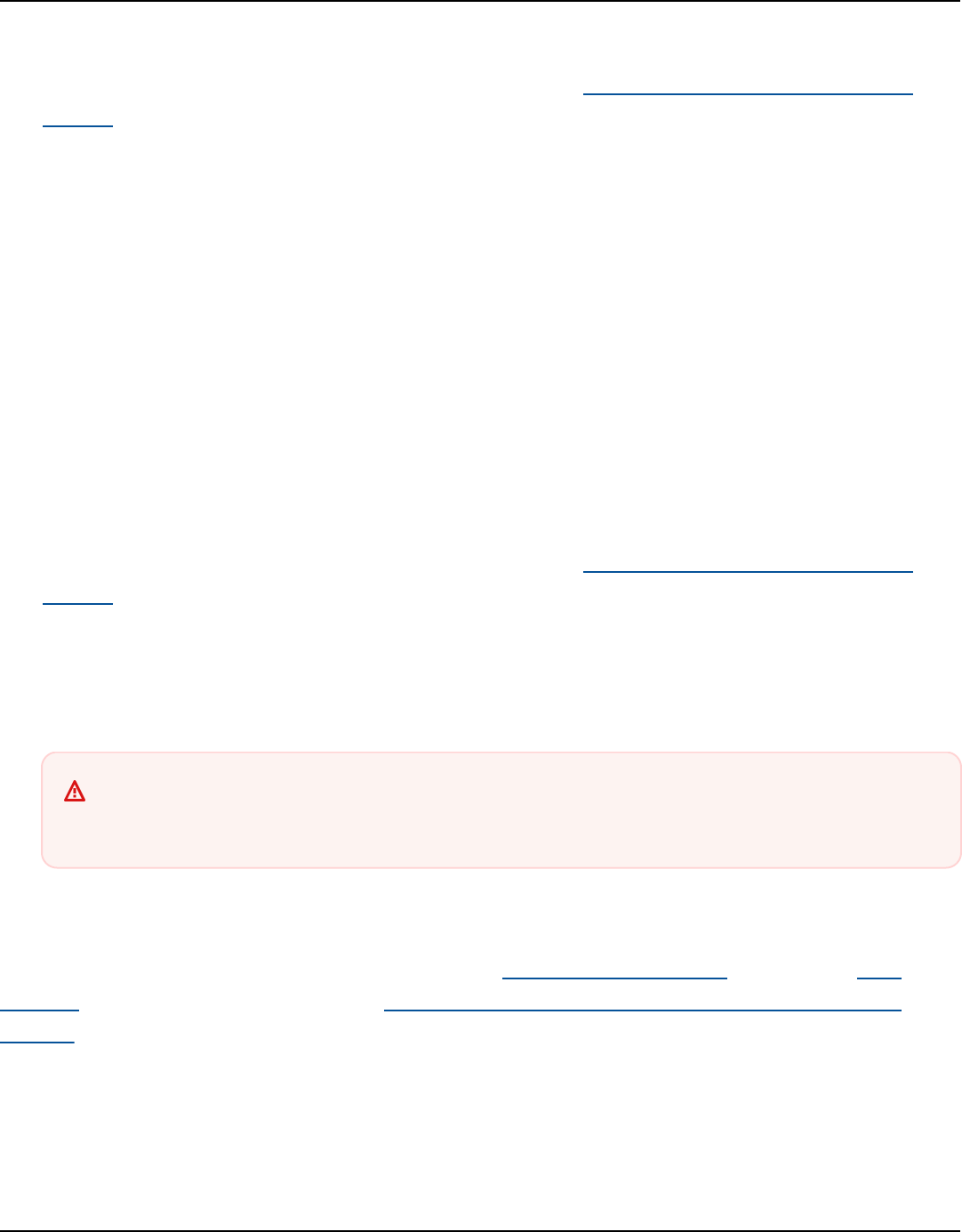
AWS Billing User Guide
To opt in or out of receiving AWS Free Tier usage alerts
1. Open the AWS Billing and Cost Management console at https://console.aws.amazon.com/
billing/.
2. In the navigation pane, choose Billing preferences.
3. In the Alert preferences section, choose Edit.
4. Select or clear Receive AWS Free Tier usage alerts.
5. (Optional) In the Additional email address to receive alerts, enter any email addresses that
aren't already registered as a root user or alternate billing contact.
6. Choose Update.
You can also use Amazon CloudWatch billing alerts to receive email notifications when your
charges reach a specified threshold.
To receive CloudWatch billing alerts
1. Open the AWS Billing and Cost Management console at https://console.aws.amazon.com/
billing/.
2. In the navigation pane, choose Billing preferences.
3. In the Alert preferences section, choose Edit.
4. Select Receive CloudWatch billing alerts.
Important
This preference can't be deactivated at a later time.
5. Choose Update.
To manage your CloudWatch billing alerts, see your CloudWatch dashboard or view your AWS
Budgets. For more information, see the Create a billing alarm to monitor your estimated AWS
charges in the Amazon CloudWatch User Guide.
Credit sharing preferences
You can use this section to activate sharing credits across member accounts in your billing family.
You can select specific accounts or enable sharing for all accounts.
Credit sharing preferences Version 2.0 20

AWS Billing User Guide
Note
This section is only available for the management account (payer account) as part of AWS
Organizations.
To manage credit sharing for member accounts
1. Open the AWS Billing and Cost Management console at https://console.aws.amazon.com/
billing/.
2. In the navigation pane, choose Billing preferences.
3. In the Credit sharing preferences section, choose Edit.
4. To activate or deactivate credit sharing for specific accounts, select them from the table and,
then choose Activate or Deactivate.
5. To activate or deactivate credit sharing for all accounts, choose Actions, and then choose
Activate All or Deactivate All.
6. Choose Update.
Tip
• To activate credit sharing for new accounts that join your organization, select Default
sharing for newly created member accounts.
• To download a history of your credit sharing preferences, choose Download preference
history (CSV).
For more information about AWS credits, see Applying AWS credits.
Reserved Instances and Savings Plans discount sharing preferences
You can use this section to activate sharing Reserved Instances and Savings Plan discounts across
accounts in your billing family. You can select specific accounts or enable sharing for all accounts.
Reserved Instances and Savings Plans discount sharing preferences Version 2.0 21

AWS Billing User Guide
Note
This section is only available for the management account (payer account) as part of AWS
Organizations.
To manage Reserved Instances and Savings Plans discount sharing for member accounts
1. Open the AWS Billing and Cost Management console at https://console.aws.amazon.com/
billing/.
2. In the navigation pane, choose Billing preferences.
3. In the Reserved Instances and Savings Plans discount sharing preference section, choose
Edit.
4. To activate or deactivate discount sharing for specific accounts, select them from the table,
and then choose Activate or Deactivate.
5. To activate or deactivate discount sharing for all accounts, choose Actions, and then choose
Activate All or Deactivate All.
6. Choose Update.
Tip
• To activate credit sharing for new accounts that join your organization, select Default
sharing for newly created member accounts.
• To download a history of your credit sharing preferences, choose Download preference
history (CSV).
Detailed billing reports (legacy)
You can receive legacy billing reports that are offered outside of the AWS Cost and Usage Reports
console page. However, we strongly recommend that you use AWS Cost and Usage Reports instead
because it provides the most comprehensive billing information. Also, these legacy reporting
methods will not be supported at a later date.
For more information about detailed billing reports, see Detailed Billing Reports in the AWS Cost
and Usage Reports User Guide.
Detailed billing reports (legacy) Version 2.0 22

AWS Billing User Guide
For more information about transferring your reports to AWS Cost and Usage Reports, see
Migrating from Detailed Billing Reports to AWS Cost and Usage Reports.
Notes
• This section is only visible if you use AWS Organizations.
• To download a CSV from the Bills page, first activate monthly reports.
To edit your detailed billing reports (legacy) settings
1. Open the AWS Billing and Cost Management console at https://console.aws.amazon.com/
billing/.
2. In the navigation pane, choose Billing preferences.
3. In the Detailed billing reports (legacy) section, choose Edit.
4. To set the Amazon S3 bucket for report delivery, select Legacy report delivery to Amazon S3
and Configure.
5. In the Configure Amazon S3 Bucket section, select an existing Amazon S3 bucket to receive
the AWS Cost and Usage Reports, or create a new bucket.
6. Choose Update.
7. To configure the granularity of the reports to show your AWS usage, select the reports to
activate.
8. In the Report activation section, choose Activate.
Customizing your AWS payment preferences
You can use the Payment preferences page of the AWS Billing and Cost Management console to
perform the following tasks for all payment types:
Topics
• View your payment methods
• Designate a default payment method
• Remove a payment method
• Changing the currency to pay your bill
Customizing your AWS payment preferences Version 2.0 23

AWS Billing User Guide
• Adding additional billing contact email addresses
Notes
• IAM users need explicit permission to access some of the pages in the Billing console. For
more information, see Overview of managing access permissions.
• You can also use the Payment preferences page to manage your credit cards and direct
debit accounts. For more information, see Managing credit card and ACH direct debit and
Manage ACH direct debit payment methods.
View your payment methods
You can use the console to view the payment methods that are associated with your account.
To view payment methods that are associated with your AWS account
1. Sign in to the AWS Management Console and open the AWS Billing and Cost Management
console at https://console.aws.amazon.com/billing/.
2. In the navigation pane, choose Payment preferences.
Payment methods that are associated with your AWS account are listed in the Payment method
section.
Designate a default payment method
You can use the console to designate a default payment method for your AWS account.
If you receive invoices from more than one AWS service provider (seller of record or SOR), you can
use payment profiles to assign a unique payment method for each one. For more information, see
Using payment profiles.
To designate a default payment method
1. Open the AWS Billing and Cost Management console at https://console.aws.amazon.com/
billing/.
2. In the navigation pane, choose Payment preferences.
View your payment methods Version 2.0 24

AWS Billing User Guide
Payment methods that are associated with your AWS account are listed in the Payment
method section.
3. Next to the payment method that you want to use as your default payment method, choose
Set as default.
Note
More information or actions might be required, depending on your payment method.
Additional actions might include completing your tax registration information or choosing
a supported payment currency.
Remove a payment method
You can use the console to remove a payment method from your account.
To remove a payment method from your AWS account
1. Open the AWS Billing and Cost Management console at https://console.aws.amazon.com/
billing/.
2. In the navigation pane, choose Payment preferences.
3. Ensure that your account has another valid payment method set as the default.
4. Select a payment method to remove, and choose Delete.
5. In the Delete payment method dialog box, choose Delete.
Changing the currency to pay your bill
To change the currency that you use to pay your bill, for example, from Danish kroner to South
African rand, perform the following procedure.
To change the local currency that's associated with your account
1. Sign in to the AWS Management Console and open the AWS Billing and Cost Management
console at https://console.aws.amazon.com/billing/.
2. On the navigation bar in the upper-right corner, choose your account name (or alias), and
choose Account.
Remove a payment method Version 2.0 25

AWS Billing User Guide
3. In the navigation pane, choose Payment preferences.
4. In the Default payment preferences section, choose Edit.
5. On the Payment currency section, choose the payment currency you want to use.
6. Choose Save changes.
Adding additional billing contact email addresses
Use additional billing contacts to contact another person about billing related items impacting
your AWS accounts. Additional billing contacts will be contacted with the root account contact and
alternate billing contact about billing events.
Notes
• If you use credit or debit cards as your payment method, see Adding or updating
alternate contacts.
• If you have pay by invoice as your payment method, you can use the following procedure
to add additional billing contacts to receive emails.
To add additional billing contacts to your account
1. Open the AWS Billing and Cost Management console at https://console.aws.amazon.com/
billing/.
2. In the navigation pane, choose Payment preferences.
3. In the Default payment preferences section, choose Edit.
4. For Billing contact email, enter the additional billing contact email messages that you want
AWS to send billing-related email notifications to.
5. Choose Save changes.
Setting up your India billing
If you sign up for a new account and choose India for your contact address, your user agreement is
with Amazon Web Services India Private Limited (AWS India), a local AWS seller in India. AWS India
manages your billing, and your invoice total is listed in rupees instead of dollars. After you create
an account with AWS India, you can't change the country in your contact information.
Adding additional billing contact email addresses Version 2.0 26

AWS Billing User Guide
If you have an existing account with an India address, your account is either with AWS or AWS India,
depending on when you opened the account. To learn whether your account is with AWS or AWS
India, see Finding the seller of record. If you're an existing AWS customer, you can continue to use
your AWS account. You also can choose to have both an AWS account and an AWS India account,
though they can't be consolidated into the same payment family. For information about managing
an AWS account, see Setting up your tax information.
Contents
• Signing up for AWS India
• Managing your AWS India account
• Adding or editing a Permanent Account Number
• Editing multiple Permanent Account Numbers
• Editing multiple Goods and Services Tax numbers
• Viewing a tax invoice
Signing up for AWS India
AWS India is a local seller of AWS. To sign up for an AWS India account if your contact address is in
India, see Manage accounts in India in the AWS Account Management Reference Guide.
Managing your AWS India account
Use the Account Settings page to perform the following tasks:
• Creating and editing your customer verification
• Manage customer verification
• Editing your username, password, or email address
• Add, update, or remote alternate contacts
• Editing your contact information
For more information about these tasks, see Managing your AWS India account in the AWS Account
Management Reference Guide.
Use the Tax Settings page of the Billing and Cost Management console to perform the following
tasks:
Signing up for AWS India Version 2.0 27

AWS Billing User Guide
• Adding or editing a Permanent Account Number
• Editing multiple Permanent Account Numbers
• Editing multiple Goods and Services Tax numbers
• Viewing a tax invoice
Adding or editing a Permanent Account Number
You can add your Permanent Account Number (PAN) to your account and edit it.
To add or edit a PAN
1. Sign in to the AWS Management Console and open the AWS Billing and Cost Management
console at https://console.aws.amazon.com/billing/.
2. In the navigation pane, choose Tax Settings.
3. On the Tax Settings navigation bar, choose Edit.
4. For Permanent Account Number (PAN), enter your PAN, and then choose Update.
Editing multiple Permanent Account Numbers
You can edit multiple Permanent Account Numbers (PANs) in your account.
To edit multiple PAN numbers
1. Sign in to the AWS Management Console and open the AWS Billing and Cost Management
console at https://console.aws.amazon.com/billing/.
2. In the navigation pane, choose Tax Settings.
3. Under Manage Tax Registration Numbers, select the PAN numbers that you want to edit.
4. For Manage Tax Registration, choose Edit.
5. Update the fields that you want to change, and then choose Update.
Editing multiple Goods and Services Tax numbers
You can edit multiple Goods and Services Tax numbers (GSTs) in your account.
Managing your AWS India account Version 2.0 28

AWS Billing User Guide
To edit multiple GST numbers
1. Sign in to the AWS Management Console and open the AWS Billing and Cost Management
console at https://console.aws.amazon.com/billing/.
2. On the navigation pane, choose Tax Settings.
3. Under Manage Tax Registration Numbers, select the GST numbers that you want to edit or
choose Edit all.
4. For Manage Tax Registration, choose Edit.
5. Update the fields that you want to change and choose Update.
Viewing a tax invoice
You can view your tax invoices in the console.
To view a tax invoice
1. Sign in to the AWS Management Console and open the AWS Billing and Cost Management
console at https://console.aws.amazon.com/billing/.
2. On the navigation pane, choose Bills.
3. Scroll down and choose the Invoices tab.
4. On the Tax invoices section, choose an invoice link that is mentioned under Document ID.
Note
The Tax invoices section only appears if there are tax invoices available.
Finding the seller of record
AWS regularly reviews its business structure to support customers. AWS creates the seller of record
(SOR), which is a local business entity established within a jurisdiction (country) to resell AWS
services. The local SOR is subject to local laws and regulations. The SOR becomes the contracting
party with local customers, so customers can be billed by and remit payment to a local business
entity. When you sign up for an AWS account, an SOR is automatically assigned to your account
based on your billing and contact information.
Finding the seller of record Version 2.0 29

AWS Billing User Guide
To find the SOR for your account
1. Sign in to the AWS Management Console and open the AWS Billing and Cost Management
console at https://console.aws.amazon.com/billing/.
2. Choose Payment preferences and under your default payment method, see the name under
Service provider.
3. You can also find this information in the Tax settings page, under the Seller column.
We recommend that you verify that your contact information, mailing address, and billing address
are up-to-date on the Account and Payment preferences pages.
If you have a business account, check that your tax information is correct on the Tax settings page
for the payer account and any member (linked) accounts.
AWS uses this information to prepare and issue your invoices with proper header information,
such as your preferred payment currency, tax settings, business legal name and address. For more
information, see the Reviewing your monthly billing best practices.
Current SORs
Use this table to find the SORs for the following countries.
Account country AWS SOR Mailing address
Australia Amazon Web Services
Australia Pty Ltd (ABN: 63
605 345 891)
Level 37, 2-26 Park Street,
Sydney, NSW, 2000, Australia
Brazil Amazon AWS Serviços Brasil
Ltda.
A. Presidente Juscelino
Kubitschek, 2.041, Torre E -
18th and 19th Floors, Vila
Nova Conceicao, São Paulo,
Brasil
Canada Amazon Web Services
Canada, Inc.
120 Bremner Blvd, 26th Floor,
Toronto, Ontario, M5J 0A8,
Canada
Current SORs Version 2.0 30

AWS Billing User Guide
Account country AWS SOR Mailing address
India Amazon Web Services India
Private Limited (formerly
known as Amazon Internet
Services Private Limited)
Unit Nos. 1401 to 1421
International Trade Tower,
Nehru Place, Delhi 110019,
India
Japan Amazon Web Services Japan
G.K.
1-1, Kamiosaki 3-chome,
Shinagawa-ku, Tokyo,
141-0021, Japan
Malaysia Amazon Web Services
Malaysia Sdn. Bhd. (Registra
tion No. 201501028710
(1154031-W))
Level 26 & Level 35, The
Gardens North Tower,
Lingkaran Syed Putra, Mid
Valley City, Kuala Lumpur,
59200, Malaysia
New Zealand Amazon Web Services New
Zealand Limited
Level 5, 18 Viaduct Harbour
Ave, Auckland, 1010, New
Zealand
Singapore Amazon Web Services
Singapore Private Limited
23 Church Street, #10-01,
Singapore 049481
South Africa Amazon Web Services South
Africa Proprietary Limited
Wembley Square 2, 134 Solan
Road, Gardens, Cape Town,
8001, South Africa
South Korea Amazon Web Services Korea
LLC
L12, East tower, 231,
Teheran-ro, Gangnam-gu,
Seoul, 06142, Republic of
Korea
Turkey Amazon Web Services Turkey
Pazarlama, Teknoloji ve
Danışmanlık Hizmetleri
Limited Şirketi
Esentepe Mahallesi Bahar
Sk. Özdilek/River Plaza/Wyn
dham Grand Hotel Apt. No:
13/52 Şişli/İstanbul, Turkey
Current SORs Version 2.0 31

AWS Billing User Guide
Account country AWS SOR Mailing address
EMEA – Any country within
Europe, the Middle East, or
Africa (excluding South Africa
and Turkey)
Amazon Web Services EMEA
SARL
38 Avenue John F. Kennedy,
L-1855, Luxembourg
For all other countries not
listed in this table
Amazon Web Services, Inc. 410 Terry Avenue North,
Seattle, WA 98109-5210
U.S.A.
Related resources
For more information about how AWS determines the location of your account, see How does AWS
determine the location of your account?
If you have questions about your SOR, create an Account and billing support case and specify the
Other Billing Questions option.
For more information about tax help, see Amazon Web Services Tax Help.
For more information about the AWS Customer Agreement, see the AWS Customer Agreement.
Reviewing your monthly billing best practices
AWS uses information that you provide in the AWS Billing and Cost Management console to
prepare and issue your invoices with proper header information, such as your preferred payment
currency, tax settings, business legal name and address.
If this information is missing or inaccurate, AWS might issue inaccurate invoices that you can't use
or process.
Follow this 10-minute checklist before the end of the monthly billing period to review your invoice
and ensure that your information is up-to-date in your AWS account.
Contents
• Check purchase order balance and expiration
• Review tax settings
Related resources Version 2.0 32

AWS Billing User Guide
• Enable tax setting inheritance
• Update billing contact information
• Review payment currency
Check purchase order balance and expiration
As part of the procure-to-pay process, you can use purchase orders to procure AWS services and
approve invoices for payment. To avoid issues with billing and payment, verify that your purchase
orders aren't expired or out-of-balance.
To check purchase order balance and expiration
1. Navigate to the Purchase orders page in the AWS Billing and Cost Management console. The
purchase order dashboard shows the state of your purchase orders.
2. Choose a purchase order to see thePurchase order detailspage.
3. Review the purchase order Balance and Expiration fields.
Tip
• You can set up email notifications so that you can proactively take action on expiring
or out-of-balance purchase orders. For more information, see Enabling purchase order
notifications.
• To add a purchase order to use in your invoices, see Adding a purchase order.
Review tax settings
To determine your account's location for tax purposes, AWS uses the tax registration number (TRN)
and the business legal address associated with your account. A TRN is also known as a value-added
tax (VAT) number, VAT ID, VAT registration number, or business registration number.
To review tax settings
1. Navigate to the Tax settings page in the Billing and Cost Management console.
2. Under theTax registrations tab, select the account IDs to edit.
Check purchase order balance and expiration Version 2.0 33

AWS Billing User Guide
3. UnderManage tax registration, chooseEdit.
4. Enter your updated information and then chooseUpdate.
For more information, see Updating and deleting tax registration numbers.
Enable tax setting inheritance
The management account and member accounts that are part of AWS Organizations can have
different TRNs or the same TRN. Unless your organization needs to use different TRNs for member
accounts, we recommend that you enable tax settings inheritance.
After you enable this setting from the management account, your tax registration information is
added to your member accounts in your organization. This saves you time so that you don't need
to enter this information for individual accounts. Tax invoices are processed with consistent tax
information, and your usage from member accounts will consolidate to a single tax invoice.
To enable tax settings inheritance
1. Navigate to the Tax settings page in the Billing and Cost Management console.
2. Under Tax registrations, select Enable tax settings inheritance.
3. In the dialog box, choose Enable.
For information about how to manage documents required for US tax exemptions, see Managing
your US tax exemptions.
Update billing contact information
Verify that your billing contact information is correct. AWS uses these contacts to contact you
about any billing or payment related communications. You can add additional billing contacts in
two ways:
• The Payment preferences page
• The Accounts page
To add billing contacts from the Payments preference page
1. Navigate to the Payment preferences page in the Billing and Cost Management console.
Enable tax setting inheritance Version 2.0 34

AWS Billing User Guide
2. In theDefault payment preferencessection, review the Billing contact email field. AWS uses
this contact for any billing or payment related communications.
3. Choose Edit.
4. In the Billing contact email - optional field, enter the email addresses that you want AWS to
send billing related email notifications, payment reminders and payment support notifications
to. You can add up to 15 email addresses.
5. ChooseSave changes.
You can add alternate contacts so that AWS has an alternate email address to contact about
issues with your account, even if the AWS account root user contact is unavailable. For the Billing
alternate contact, you can specify the email address to receive the invoice. Your alternate contact
will be authorized to communicate with AWS for billing, invoice, and payment issues.
The alternate contact doesn't have to be a specific person. For example, you can add an email
distribution list if you have a team that manages billing, operations, and security related issues.
To update alternate contact information from the Accounts page
1. Navigate to theAccounts page in the Billing and Cost Management console and scroll down to
the Alternate contacts section.
2. For the Billing field, review the contact information and confirm the email address where you
want your invoices delivered.
For more information about how to use alternate contacts, see Adding or updating alternate
contacts.
Review payment currency
The payment currency is the currency that your default payment method will be charged in. This is
also the currency displayed on your invoice under your default service provider. Some organizations
can't process invoices that are issued in the wrong currency, so it's important to ensure that your
payment currency is accurate.
To review your payment currency
1. Navigate to Payment preferences in the Billing and Cost Management console.
2. In theDefault payment preferencessection, chooseEdit.
Review payment currency Version 2.0 35

AWS Billing User Guide
Getting help with your bills and payments
There are many resources available for you if you have any questions about your AWS Billing and
Cost Management console tools, your charges, or payment methods. If you have any inquiries or
appeals regarding your AWS bill, we recommend you open a case with AWS Support so an associate
can assist you directly.
Topics
• AWS Knowledge Center
• Contacting AWS Support
• Understanding your charged usage
• Monitoring your Free Tier usage
• Closing your AWS account
AWS Knowledge Center
All AWS account owners have access to account and billing support free of charge. You can find
answers to your questions quickly by visiting the AWS Knowledge Center.
To find your question or request
1. Open AWS Knowledge Center.
2. Choose Billing Management.
3. Scan the list of topics to locate a question that is similar to yours.
Contacting AWS Support
Contacting AWS Support is the fastest and most direct method for communicating with an AWS
associate about your questions. AWS Support does not publish a direct phone number for reaching
a support representative. You can use the following process to have an associate contact to you by
email or phone instead.
Only personalized technical support requires a support plan. For more information, visit AWS
Support.
AWS Knowledge Center Version 2.0 37

AWS Billing User Guide
To open an AWS Support case where you specify Regarding: Account and Billing Support, you must
either be signed into AWS as the root account owner, or have IAM permissions to open a support
case. For more information, see Accessing AWS Support in the AWS Support User Guide.
If you have closed your AWS account, you can still sign in to AWS Support and view past bills.
To contact AWS Support
1. Sign in and navigate to the AWS Support Center. If prompted, enter the email address and
password for your account.
2. Choose Create case.
3. On the Create case page, choose Account and billing support and fill in the required fields on
the form.
4. After you complete the form, under Contact options, choose either Web for an email
response, or Phone to request a telephone call from an AWS Support representative. Instant
messaging support is not available for billing inquiries.
To contact AWS Support when you can't sign in to AWS
1. Recover your password or submit a form at AWS account support.
2. Choose an inquiry type in the Request information section.
3. Fill out the How can we help you? section.
4. Choose Submit.
Understanding your charged usage
If you want to see the usage behind your charged amount, you can check your usage yourself by
enabling Cost Explorer. This tool enables you to analyze your costs in depth by providing you with
premade reports and graphs.
Cost Explorer is available 24 hours after you activate the feature.
For more information about Cost Explorer, see Analyzing your costs with AWS Cost Explorer.
Understanding your charged usage Version 2.0 38

AWS Billing User Guide
Monitoring your Free Tier usage
You can track your AWS Free Tier usage to keep you under the Free Tier limits. You can set up alerts
on your AWS account when your Free Tier limits reach a threshold, and monitor your usage through
the Billing and Cost Management console.
For more information about using these features, see Tracking your AWS Free Tier usage.
To see details for usage that was charged beyond your Free Tier limit, see the Understanding your
charged usage section.
Closing your AWS account
For more information about closing your AWS account, see Close your account in the AWS Account
Management Reference Guide.
Monitoring your Free Tier usage Version 2.0 39

AWS Billing User Guide
Using the AWS Billing and Cost Management home page
Use the Billing and Cost Management home page for an overview of your AWS cloud financial
management data and to help you make faster and more informed decisions. Understand high-
level cost trends and drivers, quickly identify anomalies or budget overruns which require your
attention, review recommended actions, understand cost allocation coverage, and identify savings
opportunities.
The data on this page comes from AWS Cost Explorer. If you haven’t used Cost Explorer before,
it’s automatically enabled for you once you visit this page. It can take up to 24 hours for your data
to appear on this page. When available, your data will be refreshed at least once every 24 hours.
The Cost Explorer data on the home page is tailored for analytical purposes. This means the data
can differ from your invoices and the Bills page due to differences in how data is grouped into
AWS services; how discounts, credits, refunds, and taxes are displayed; differences in timing for the
current month's estimated charges; and rounding.
For more information, see Knowing the differences between Billing and Cost Explorer data.
For more information about AWS Cloud Financial Management, see the Getting started page in
the AWS Billing and Cost Management console. You can choose a topic and then follow the links to
that specific console page or the documentation.
Managing Billing and Cost Management widgets
You can customize how the widgets appear by moving or resizing the widgets.
To manage the Billing and Cost Management widgets
1. Open the AWS Billing and Cost Management console at https://console.aws.amazon.com/
costmanagement.
2. (Optional) To customize the Billing and Cost Management home page, drag and drop a widget
to move it, or change the widget size.
3. To take action on each recommendation or to learn more, review the data in the widget and
then follow the links in the widget.
4. To reset the layout, choose Reset layout and then choose Reset.
You can use the following widgets:
Managing Billing and Cost Management widgets Version 2.0 40
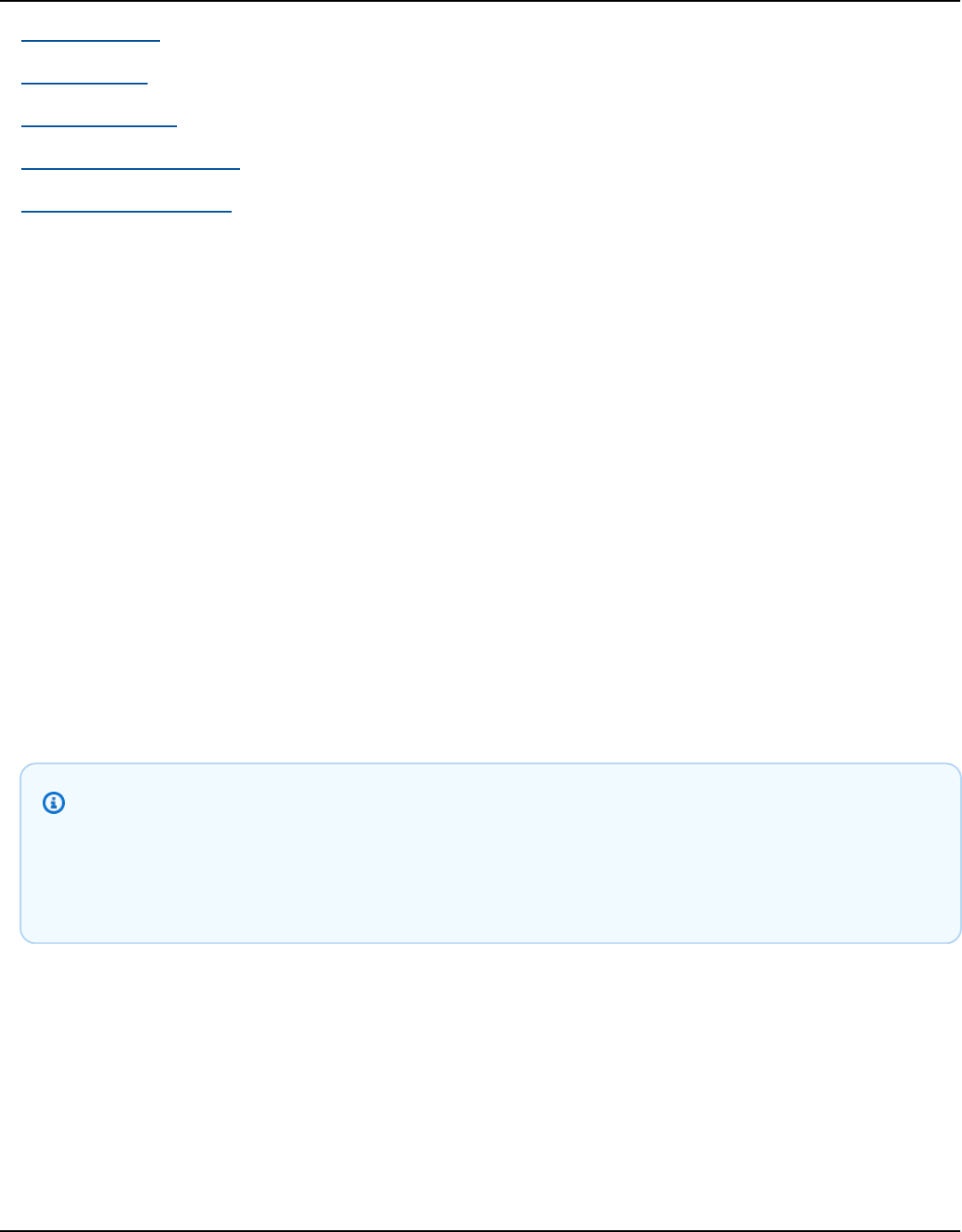
AWS Billing User Guide
• Cost summary
• Cost monitor
• Cost breakdown
• Recommended actions
• Savings opportunities
Cost summary
The cost summary widget provides a quick view of your current cost trends compared to your
spending in the last month.
To view your month-to-date estimated charges on the Bills page, choose View bill.
All metrics shown in the cost summary widget exclude credits and refunds. This means you might
see different numbers on the home page compared to the Bills page or your invoices. The widget
shows the following metrics that you can choose to view in Cost Explorer:
• Month-to-date cost – Your estimated costs for the current month. The trend indicator compares
the current month's costs to last month's cost for the same time period.
• Last month's cost for same time period – Your costs for last month, for the same time period.
For example, if today is February 15, the widget also shows last month's cost for January 1–15.
Note
Trend calculations might be influenced by the number of days in each month. For
example, on July 31, the trend indicator will look at costs from July 1–31 and compare it
to costs for June 1–30.
• Total forecasted cost for current month – A forecast of your estimated total costs for the
current month.
• Last month's total cost – The total costs for last month. For more information, choose each
metric to view the costs in Cost Explorer, or choose View bill to view your month-to-date
estimated charges on the Bills page.
Cost summary Version 2.0 41

AWS Billing User Guide
Note
The metrics in this widget exclude credits and refunds. The costs here might differ from
the costs on the Bills page or your invoices.
For more information about Cost Explorer, see Forecasting with Cost Explorer.
Cost monitor
This widget provides a quick view of your cost and usage budgets and any cost anomalies that AWS
detected, so that you can fix it.
• Budgets status – Alerts you if any of your cost and usage budgets were exceeded.
The status can be the following:
• OK – Cost and usage budgets haven't been exceeded.
• Over budget – A cost and usage budget has been exceeded. Your actual cost is greater than
100%. The number of exceeded budgets and a warning icon will appear.
• Setup required – You haven't created any cost and usage budgets.
Choose the status indicator to go to the Budgets page to review details of each budget or to create
one. The budgets status indicator only shows information about cost and usage budgets. Budgets
that you created to track the coverage or utilization of your Savings Plans or reservations won't
appear in this widget. Cost anomalies status alerts you if AWS detected any anomalies with your
costs since the first day of the current month. The status can be the following:
• OK – Cost anomalies haven't been detected in the current month.
• Anomalies detected – A cost anomaly has been detected. The number of anomalies detected
and a warning icon will appear.
• Setup required – You haven't created any anomaly detection monitors.
Choose the status indicator to go to the Cost Anomaly Detection page to review details of each
anomaly detected, or to create an anomaly detection monitor. The cost anomalies status indicator
Cost monitor Version 2.0 42

AWS Billing User Guide
only displays information about cost anomalies detected in the current month. To view your full
anomaly history, go to the Cost Anomaly Detection page.
For more information about budgets, see Managing your costs with AWS Budgets.
For more information about anomaly detection monitors, see Detecting unusual spend with AWS
Cost Anomaly Detection.
Cost breakdown
This widget provides a breakdown of your costs for the last six months, so you can understand cost
trends and drivers. To break down your costs, choose an option from the dropdown list:
• Service
• AWS Region
• Member account (for AWS Organizations management accounts)
• Cost allocation tag
• Cost category
If you choose cost category or cost allocation tag key, hover over the chart to see the values.
To dive deeper into your cost and usage, choose Analyze your costs in Cost Explorer. Use Cost
Explorer to visualize, group, and filter your costs and usage, with additional dimensions, such as
Availability Zone, instance type, and database engine.
For more information about Cost Explorer, see Exploring your data using Cost Explorer.
Recommended actions
This widget helps you implement AWS cloud financial management best practices and optimize
your costs.
To use the recommended actions widget
1. For each recommendation, follow the link to take action on your account. By default, the
widget shows up to seven recommended actions.
2. To load additional recommended actions, choose Load more actions.
3. To dismiss a specific recommendation, choose the X icon on the top right corner.
Cost breakdown Version 2.0 43

AWS Billing User Guide
Note
If you don’t have permission to access the AWS service that shows each recommendation,
you will see an access denied error. For example, if you have access to all Billing and
Cost Management actions except budgets:DescribeBudgets, you can view all
recommendations on the page except for budgets. See the error message about adding the
missing IAM action to your policy.
This widget provides the following recommendations:
Budgets
This widget shows recommendations if any budgets require your attention, such as the following
examples:
• Cost and usage budgets have been exceeded or are forecasted to be exceeded
• Savings Plan, reservation coverage, or utilization has dropped below the defined budget
thresholds
• Your custom budget alert thresholds have been exceeded
Unlike the cost monitor widget, this widget shows information related to:
• Budgets that are forecasted to be exceeded but haven’t yet
• Budgets that are in alarm but haven't been exceeded
• Utilization and coverage budgets for your Savings Plans or reservations
Cost anomaly detection
This widget shows recommendations if any anomalies have been detected that require your
attention. Unlike the cost monitor widget, this widget shows cost anomalies that were detected in
the last 90 days with a total cost impact greater than $100 and an impact percentage greater than
40%.
Cost optimization
This widget shows recommendations for the following reasons:
Recommended actions Version 2.0 44

AWS Billing User Guide
• To help you improve cost efficiency and lower your AWS bill. You will see recommendations from
AWS Cost Optimization Hub when the total estimated savings amount is at least 5% of last
month’s costs.
• To review under-utilized Savings Plans or reservations
• To renew any Savings Plans or reservations that will expire within the next 30 days
AWS Free Tier
This widget shows recommendations if your usage exceeded 85% of any service's free tier usage
limits.
Getting started
This widget shows recommendations to implement AWS cloud financial management best
practices, such as:
• Create budgets to track and govern spending
• You have active Savings Plans but haven't created a Savings Plan budget
• You have Reserved Instance commitments but haven't created a Reserved Instance budget
• Add an alternate billing contact so that the correct people receive communications from AWS
• You haven't set up a cost anomaly monitor
Related resources
For more information, see the following topics:
• Managing your costs with AWS Budgets
• Detecting unusual spend with AWS Cost Anomaly Detection
• Cost Optimization Hub
• Using the AWS Free Tier
• Adding additional billing contact email addresses
Cost allocation coverage
To create cost visibility and accountability in your organization, it's important to allocate costs
to teams, applications, environments, or other dimensions. This widget shows unallocated costs
Related resources Version 2.0 45

AWS Billing User Guide
for your cost categories and cost allocation tags, so that you can identify where to take action to
organize your costs.
Cost allocation coverage is defined as the percentage of your costs that don't have a value assigned
to the cost category or cost allocation tag keys that you've created.
Example Example
• Your month-to-date spend is $100, and you created a cost category (named Teams) to organize
costs by individual teams.
• You have $40 in the Team A cost category value, $35 in the Team B cost category value, and $25
that are unallocated.
• In this case, your cost allocation coverage is 25/100 = 25%.
A lower unallocated cost metric means that your costs are properly allocated along the dimensions
important to your organization. For more information, see Building a cost allocation strategy in the
Best Practices for Tagging AWS Resources whitepaper.
This widget compares the month-to-date unallocated cost percentage to all of last month's
unallocated cost percentage. The widget shows up to five cost allocation tag keys or five cost
categories. If you have more than five of either cost allocation tag keys or cost categories, use the
widget preferences to specify the ones that you want.
To analyze your unallocated costs in more detail by using Cost Explorer, choose the cost category
or cost allocation name.
To improve cost allocation coverage for your cost categories or cost allocation tags, you can edit
your cost category rules or improve resource tagging by using AWS Tag Editor.
For more information, see the following topics:
• Managing your costs with AWS cost categories
• Using AWS cost allocation tags
• Using Tag Editor
Cost allocation coverage Version 2.0 46

AWS Billing User Guide
Savings opportunities
This widget shows recommendations from Cost Optimization Hub to help you save money and
lower your AWS bill. This can include:
• Deleting unused resources
• Rightsizing over-provisioned resources
• Purchasing Savings Plans or reservations
For each savings opportunity, the widget shows your estimated monthly savings. Your estimated
savings are de-duplicated and automatically adjusted for each recommended savings opportunity.
Example Example
•
Let's say that you have two Amazon EC2 instances, InstanceA and InstanceB.
•
If you purchased a Savings Plan, you could reduce the cost for InstanceA by $20 and the cost of
InstanceB by $10, for a total of $30 savings.
•
However, if InstanceB is idle, the widget might recommend that you terminate it instead of
purchasing a Savings Plan. The savings opportunity would tell you how much you could save by
terminating the idle InstanceB.
To view the savings opportunities in this widget, you can opt in by visiting the Cost Optimization
Hub page or using the Cost Management preferences page.
Understanding the Billing dashboard
Note
You can access the previous version of the Billing home page from the Legacy Pages
section of the navigation pane.
Understanding the Billing dashboard (old console)
You can use the dashboard page of the AWS Billing console to gain a general view of your AWS
spending. You can also use it to identify your highest cost service or Region and view trends in your
spending over the past few months. You can use the dashboard page to see various breakdowns of
Savings opportunities Version 2.0 47

AWS Billing User Guide
your AWS usage. This is especially useful if you're a Free Tier user. To view more details about your
AWS costs and invoices, choose Billing details in the left navigation pane. You can customize your
dashboard layout at any time by choosing the gear icon at the top of the page to match your use
case.
Viewing your AWS costs in the AWS Billing console dashboard doesn't require turning on Cost
Explorer. To turn on Cost Explorer to access additional views of your cost and usage data, see
Enabling AWS Cost Explorer.
To open the AWS Billing console and dashboard
• Sign in to the AWS Management Console and open the AWS Billing and Cost Management
console at https://console.aws.amazon.com/billing/.
By default, the console shows the AWS Billing Dashboard page.
Understanding your dashboard page
Your AWS Billing console dashboard contains the following sections. To create your preferred
layout, drag and drop sections of the Dashboard page. To customize the visible sections and
layout, choose the gear icon at the top of the page. These preferences are stored for ongoing visits
to the Dashboard page. To temporarily remove sections from your view, choose the x icon for each
section. To make all sections visible, choose refresh at the top of the page.
AWS summary
This section is an overview of your AWS costs across all accounts, AWS Regions, service
providers, and services, and other KPIs. Total compared to prior period displays your total AWS
costs for the most recent closed month. It also provides a comparison to your total forecasted
costs for the current month. Choose the gear icon on the card to decide which KPIs you want to
display.
Highest cost and usage details
This section shows your top service, account, or AWS Region by estimated month-to-date (MTD)
spend. To choose which to view, choose the gear icon on the top right.
Cost trend by top five services
In this section, you can see the cost trend for your top five services for the most recent three to
six closed billing periods.
Understanding the Billing dashboard Version 2.0 48

AWS Billing User Guide
You can choose between chart types and time periods on the top of the section. You can adjust
additional preferences using the gear icon.
The columns provide the following information:
• Average: The average cost over the trailing three months.
• Total: The total for the most recent closed month.
• Trend: Compares the Total column with the Average column.
Account cost trend
This section shows the cost trend for your account for the most recent three to six closed billing
periods. If you're a management account of AWS Organizations, the cost trend by top five
section shows your top five AWS accounts for the most recent three to six closed billing periods.
If invoices weren't already issued, the data isn't visible in this section.
You can choose between chart types and time periods on the top of the section. Adjust
additional preferences using the gear icon.
The columns provide the following information:
• Average: The average cost over the trailing three months.
• Total: The total for the most recent closed month.
• Trend: Compares the Total column with the Average column.
On the dashboard, you can view the following graphs:
• Spend Summary
• Month-to-Date Spend by Service
• Month-to-Date Top Services by Spend
Spend Summary
The Spend Summary graph shows you how much you spent last month, the estimated costs
of your AWS usage for the month-to-date, and a forecast for how much you are likely to spend
this month. The forecast is an estimate that's based on your past AWS costs. Therefore, your
actual monthly costs might not match the forecast.
Understanding the Billing dashboard Version 2.0 49

AWS Billing User Guide
Month-to-Date Spend by Service
The Month-to-Date Spend by Service graph shows the top services that you use most and the
proportion of your costs that service contributed to. The Month-to-Date Spend by Service
graph doesn't include forecasting.
Month-to-Date Top Services by Spend
The Month-to-Date Top Services by Spend graph shows the services that you use most, along
with the costs incurred for the month to date. The Month-to-Date Top Services by Spend
graph doesn't include forecasting.
Note
The Billing and Cost Management console has a refresh time of approximately 24 hours to
reflect your billing data.
Knowing the differences between Billing and Cost Explorer
data
Once you have active data in your Billing and Cost Management console, there are key differences
to note between when you see in the Billing and Payments pages, compared to your Cost Explorer
data. This section explains in detail how each data sets are used, and the benefits of each.
Billing data
Your billing data appears on the Bills and Payments pages of the AWS Billing and Cost
Management console, and in the invoice that AWS issues to you. Billing data helps you understand
the actual invoiced charges for previous billing periods, and the estimated charges that you've
accrued for the current billing period, based on your month-to-date service usage. Your invoice
represents the amount that you owe to AWS.
Cost Explorer data
Your Cost Explorer data appears in the following places:
• The Billing and Cost Management home page
Knowing the differences between Billing and Cost Explorer data Version 2.0 50

AWS Billing User Guide
• The pages for Cost Explorer, Budgets, and Cost Anomaly Detection
• Your reports for coverage and usage
Cost Explorer supports deep-dive analysis so that you can identify savings opportunities. Cost
Explorer data provides more granular dimensions (such as Availability Zone or operating system)
and includes features that might show differences when compared to billing data. On the Cost
Management preferences page, you can manage your preferences for Cost Explorer data, including
linked account access and historical and granular data settings. For more information, see
Controlling access to Cost Explorer.
Amortized costs
Billing data is always presented on a cash basis. It represents the amount that AWS charges you
each month. For example, if you purchase a one-year, all-upfront Savings Plan in September, AWS
will charge you the full cost for that Savings Plan in the September billing period. Your billing
data will then include the full cost of that Savings Plan in September. This helps you understand,
validate, and pay your AWS invoices on time.
In contrast, you can use Cost Explorer data to view amortized costs. When costs are amortized, an
upfront charge is spread, or amortized over the life of that agreement. In the previous example, you
can use Cost Explorer for an amortized view of your Savings Plan. A one-year, all-upfront Savings
Plan purchase will be spread evenly across the 12 months of the commitment term. Use amortized
costs to gain insight into the effective daily costs associated with your portfolio of reservations or
Savings Plans.
AWS service grouping
With billing data, your AWS charges are grouped into AWS services on your invoice. To help with
deep-dive analysis, Cost Explorer will group some costs differently.
For example, let's say that you want to understand compute costs for Amazon Elastic Compute
Cloud compared to ancillary cost, such as Amazon Elastic Block Store volumes or NAT gateways.
Instead of a single group for Amazon EC2 costs, Cost Explorer will group costs into EC2 - Instances
and EC2 - Other.
In another example, to help analyze data transfer costs, Cost Explorer groups your transfer costs by
service. In billing data, data transfer costs are grouped into a single service named Data Transfer.
Amortized costs Version 2.0 51

AWS Billing User Guide
Estimated charges for the current month
Your billing data and Cost Explorer data are refreshed at least once per day. The cadence when
they're refreshed might differ. This can result in differences for your month-to-date estimated
charges.
Rounding
Your billing data and Cost Explorer data are processed at different granularities. For example, Cost
Explorer data is available with hourly and resource-level granularity. Billing data is monthly and
doesn't offer resource-level details. As a result, your billing data and Cost Explorer data might vary
due to rounding. When these data sources are different, the amount on your invoice is the final
amount that you owe to AWS.
Presentation of discounts, credits, refunds, and taxes
The billing data on the Bills page (for example, in the Charges by service tab) excludes refunds,
while Cost Explorer data includes refunds. When a refund is issued, this might cause differences in
other charge types.
For example, let's say that a portion of your taxes was refunded. On the Bills page, the Taxes by
service tab will continue to show the full tax amount. The Cost Explorer data will show the post-
refund tax amount.
Estimated charges for the current month Version 2.0 52

AWS Billing User Guide
Understanding your bill
Note
For questions about your AWS bills or to appeal your charges, contact AWS Support to
address your inquiries immediately. To get help, see Getting help with your bills and
payments. To understand your bills page contents, see Using the Bills page to understand
your monthly charges and invoice.
You receive AWS invoices monthly for usage charges and recurring fees. For one-time fees, such as
fees for purchasing an All Upfront Reserved Instance, you're charged immediately.
At any time, you can view estimated charges for the current month and final charges for previous
months. This topic describes how to view your monthly bill and past bills, how to receive and read
billing reports, and how to download invoices. To make a payment, see Making payments.
Topics
• Viewing your monthly charges
• Using the Bills page to understand your monthly charges and invoice
• Downloading a PDF of your invoice
• Downloading a monthly report
• Understanding unexpected charges
Viewing your monthly charges
Follow this procedure to view your monthly charges from the Billing and Cost Management
console.
To view your monthly charges
1. Sign in to the AWS Management Console and open the AWS Billing and Cost Management
console at https://console.aws.amazon.com/billing/.
2. In the navigation pane, choose Bills.
3. Choose a Billing period (for example, August 2023).
View your monthly charges Version 2.0 53
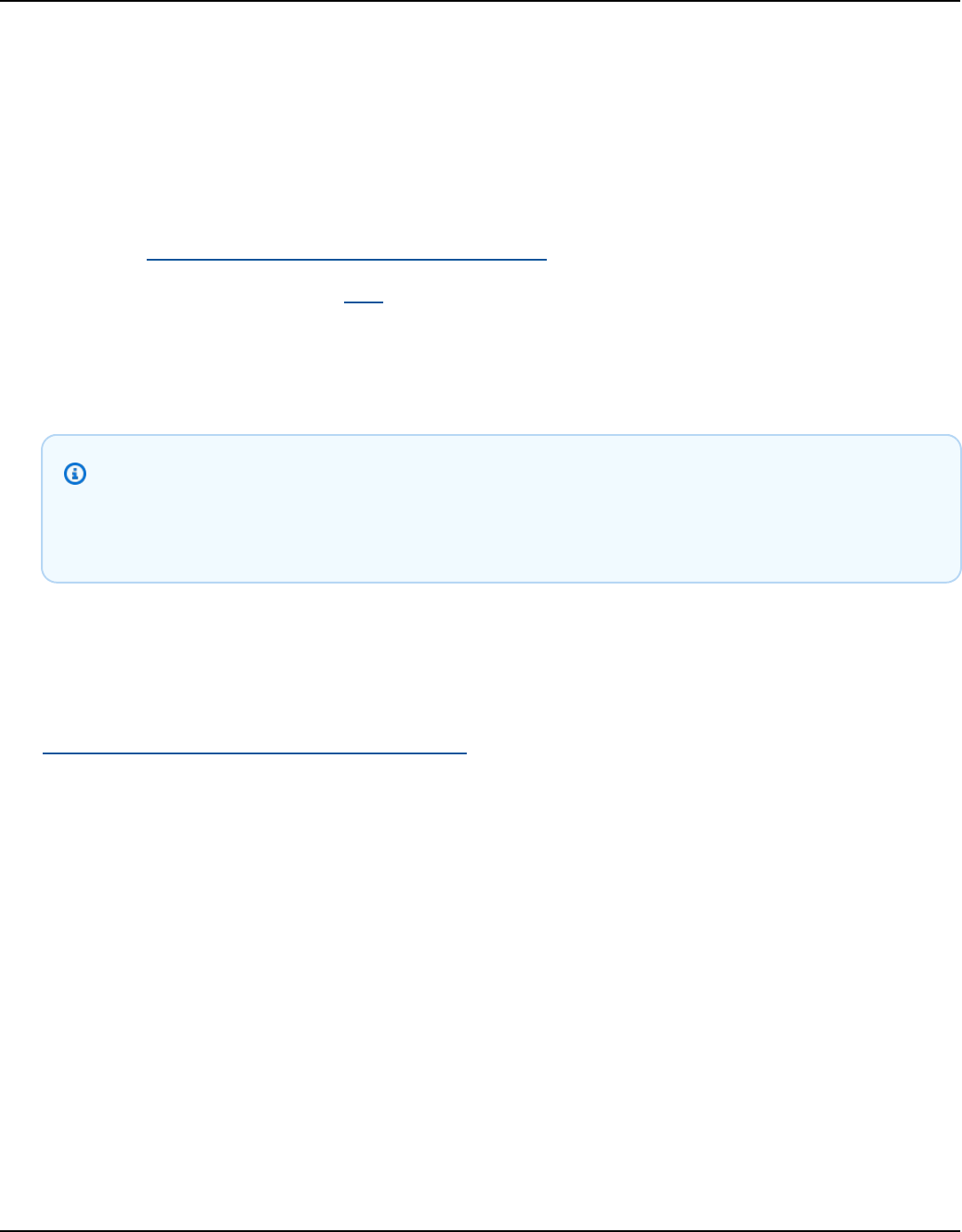
AWS Billing User Guide
4. View your AWS bill summary.
Viewing your monthly charges (old console)
To view your monthly charges
1. Sign in to the AWS Management Console and open the AWS Billing and Cost Management
console at https://console.aws.amazon.com/billing/.
2. In the navigation pane, choose Bills.
3. For Billing period, choose a month.
The Summary section displays a summary and details of your charges for that month.
Note
The summary isn't an invoice until the month's activity closes and AWS calculates the
final charges.
If you use the consolidated billing feature in AWS Organizations, the Bills page lists totals
for all accounts on the Charges by account tab. Choose the account ID to see the activity
for each account in the organization. For more information about consolidated billing, see
Consolidating billing for AWS Organizations.
Using the Bills page to understand your monthly charges and
invoice
At the end of a monthly billing period, or when you incur a one-time fee, AWS issues an invoice as
a PDF file. If you're paying by credit card, AWS also charges the credit card that you have on file at
this time.
To download invoices and view your monthly charge details, you can use the Bills page in the AWS
Billing and Cost Management console.
Use the Bills page to understand your monthly charges and invoice Version 2.0 54

AWS Billing User Guide
Note
IAM users need explicit permission to access some of the pages in the Billing and Cost
Management console. For more information, see Overview of managing access permissions.
Bills page
You can use the Bills page to see your monthly chargeable costs, along with details of your AWS
services and purchases made through AWS Marketplace. Invoices are generated when a monthly
billing period closes (the billing status appears as Issued), or when subscriptions or one-time
purchases are made. For monthly billing periods that haven't closed (the billing status appears
as Pending), this page shows the most recent estimated charges based on your AWS services
metered to date.
If you're signed in as the management account of your AWS Organizations, you can see the
consolidated charges for your member accounts. You can use the Charges by account to also
view account-level details.
Say you're an AWS Billing Conductor user and are signed in as a management account. You can
turn on a pro forma view by choosing the gear icon on the top of the page. Choose the month
and year to specify your billing period.
To customize the visible sections, choose the gear icon at the top of the page. These
preferences are saved for ongoing visits to the Bills page.
AWS bill summary
The AWS bill summary section shows an overview of your monthly charges. The information
shows your invoice totals for the closed billing periods (the billing status appears as Issued).
Billing periods that haven't closed have the Pending billing status. The totals show the most
recent estimated charges based on your AWS services metered to date. Totals are shown in US
dollars (USD). If your invoices are issued in another currency, the total in the other currency is
also shown.
Payment information
The Payment information section lists invoices for the selected billing period that AWS
received payments for. You can find the service provider, charge types, document types, invoice
IDs, payment status, the date AWS received the payments, and the total amount in USD. If your
Use the Bills page to understand your monthly charges and invoice Version 2.0 55

AWS Billing User Guide
invoices are issued in another currency, the total in the other currency is also shown. For more
information, see Managing Your Payments.
Highest cost by service provider
The Highest cost by service provider section identifies your account's service and AWS Region
with the highest cost for the billing period, and shows the month-over-month trends for each.
For pending billing periods, the month-over-month trend compares the month-to-date spend
in the current billing period with the equivalent portion of the previous billing period.
Charges by service
The Charges by service tab shows your spend in each AWS service. You can sort by service
name or amount in USD, and filter by service name and Region. Choose the + icon next to each
service to see the charges for that service by Region. Choose a Region to see charge details.
Charges by account
If you use AWS Organizations and signed in to your management account, the Charges by
account tab shows the spend of each of your member accounts. You can sort by account ID,
account name, or amount in USD, and filter by account ID or account name. Choose the + icon
next to each account to see charges for that account by service provider. Choose the + icon next
to each line item to see charges by service and Region. Choose a Region to see charge details.
Invoices
The Invoices tab lists the invoices for each service provider that you transacted with during the
selected billing period. This includes details such as charge type, invoice date, and total in USD.
If your invoices are issued in another currency, the total in the other currency is also shown. To
view and download a PDF format for individual invoices, choose the Invoice ID.
Savings
The Savings tab summarizes your savings during the billing period as the outcome of Savings
Plans, credits, or other discount programs. These savings are also reflected in the Charges by
service, Charges by account, and Invoices tabs. Choose each savings type to see the details by
service.
Taxes by service
The Taxes by service tab shows the pre-tax, tax, and post-tax charges for each service that was
charged taxes. You can sort by service name, post-tax charge, pre-tax charge, or tax in USD, and
filter by service name.
Use the Bills page to understand your monthly charges and invoice Version 2.0 56

AWS Billing User Guide
Tax Invoices and Supplemental Documents
The Tax Invoices and Supplemental Documents section lists tax invoices and other
supplemental documents for the selected billing period. Not all service providers issue tax
invoices. The Invoice ID column shows the associated commercial invoice associated with that
tax invoice. To view and download a PDF format for individual invoices, choose the Document
ID.
Downloading a PDF of your invoice
Follow this procedure to download a PDF of your monthly invoice.
To download a copy of your charges as a PDF document
1. Open the AWS Billing and Cost Management console at https://console.aws.amazon.com/
billing/.
2. On the Bills page, select a month for the Billing period.
3. Under the AWS bill summary section, confirm that the Bill status appears as Issued.
4. Choose the Invoices tab.
5. Choose the Invoice ID of the document that you want to download.
6. (For service providers other than AWS EMEA SARL) To download a copy of a particular tax
invoice, in the Tax Invoices and Supplemental Documents section, choose the Document ID.
7. (For AWS EMEA SARL) To download a copy of a particular tax invoice, in the AWS EMEA SARL
charges section, choose the Document ID.
Downloading a copy of your charges as a PDF (old console)
To download a copy of your charges as a PDF document
1. Open the AWS Billing and Cost Management console at https://console.aws.amazon.com/
billing/.
2. On the Bills page, select a month from the Date list that all activity is closed for.
3. Under Total, choose Amazon Web Services, Inc. - Service Charges.
4. Choose Invoice <invoiceID>.
Download a PDF of your invoice Version 2.0 57

AWS Billing User Guide
5. (For entities other than AWS EMEA SARL) To download a copy of a particular tax invoice,
choose the Invoice <invoiceID> in the Tax Invoices section.
6. (For AWS EMEA SARL) To download a copy of a particular tax invoice, choose the Invoice
<invoiceID> in the Amazon Web Services EMEA SARL – Service Charges section.
Downloading a monthly report
You can download CSV files for any future billing after you turn on monthly reports. This feature
delivers your reports to an Amazon S3 bucket.
Tip
We recommend that you use the AWS Cost and Usage Report for the most granular set of
cost and usage data available. For more information, see What are AWS Cost and Usage
Reports? in the AWS Cost and Usage Reports User Guide.
To download CSV files for a monthly report
1. Open the AWS Billing and Cost Management console at https://console.aws.amazon.com/
billing/.
2. On the navigation pane, choose Billing preferences.
3. Under Detailed billing reports (legacy), choose Edit, and then select Legacy report delivery
to S3.
4. Choose Configure an S3 bucket to activate to specify where your reports are delivered.
5. In the Configure S3 Bucket dialog box, choose one of the following options:
• To use an existing S3 bucket, choose Use an existing S3 bucket, and then select the S3
bucket.
• To create a new S3 bucket, choose Create a new S3 bucket, and then for S3 bucket name,
enter the name, and then choose the Region.
6. Choose Next.
7. Verify the default IAM policy and then select I have confirmed that this policy is correct.
8. Choose Save.
9. On the Bills page, choose Download all to CSV.
Download a monthly report Version 2.0 58

AWS Billing User Guide
Understanding unexpected charges
Note
For questions about your AWS bills or to appeal your charges, contact AWS Support to
address your inquiries immediately. To get help, see Getting help with your bills and
payments. To understand your bills page contents, see Using the Bills page to understand
your monthly charges and invoice.
Here are examples to help you avoid unexpected charges on your bill. This page lists specific
features or behaviors within individual services from AWS that can sometimes result in unexpected
charges, particularly if you unsubscribe from the service or close your account.
Note
This is not an exhaustive list. For any questions for your specific use case, contact AWS
Support by following the process on Getting help with your bills and payments.
If you close your account or unsubscribe from a service, make sure that you take the
appropriate steps for every AWS Region you've allocated AWS resources.
Topics
• Usage exceeds AWS Free Tier
• Charges received after account closure
• Charges incurred from resources in AWS Regions that are turned off
• Charges incurred by services launched by other services
• Charges incurred by Amazon EC2 instances
• Charges incurred by Amazon Elastic Block Store volumes and snapshots
• Charges incurred by Elastic IP addresses
• Charges incurred by storage services
• Contacting AWS Support
Understanding unexpected charges Version 2.0 59

AWS Billing User Guide
Usage exceeds AWS Free Tier
Check if your services have expired your free tier usage. Your eligibility for the 12 months free
service offering Free Tier expires 12 months after you first activate your AWS account. After your
eligibility expires, you’re charged at the standard AWS billing rates for usage. For more information
about how to identify free tier resources that are active and generating charges, see Avoiding
unexpected charges after Free Tier.
After you've identified the resources that are generating charges, you can continue to use the
resources and manage your billing, terminate unused resources, or close your AWS account.
• For information about managing your billing, see What is AWS Billing and Cost Management?
and Getting set up with Billing.
• For information about terminating resources, go to the resource documentation for that service.
For example, if you have unused Amazon Elastic Compute Cloud instances, see Terminate your
instance.
• For information about closing your AWS account, see Close your account in the AWS Account
Management Reference Guide.
Charges received after account closure
You might receive a bill after you close your account due to one of the following reasons:
You incurred charges in the month before you closed your account
You receive a final bill for the usage incurred between the beginning of the month and the date
that you closed your account. For example, if you closed your account on January 15, you will
receive a bill at the beginning of February for usage incurred from January 1-15.
You have active Reserved Instances on your account
You might have provisioned Amazon EC2 Reserved Instances, Amazon Relational Database
Service (Amazon RDS) Reserved Instances, Amazon Redshift Reserved Instances, or Amazon
ElastiCache Reserved Cache Nodes. You will continue to receive a bill for these resources until
the reservation period expires. For more information, see Reserved Instances in the Amazon EC2
User Guide.
Usage exceeds AWS Free Tier Version 2.0 60
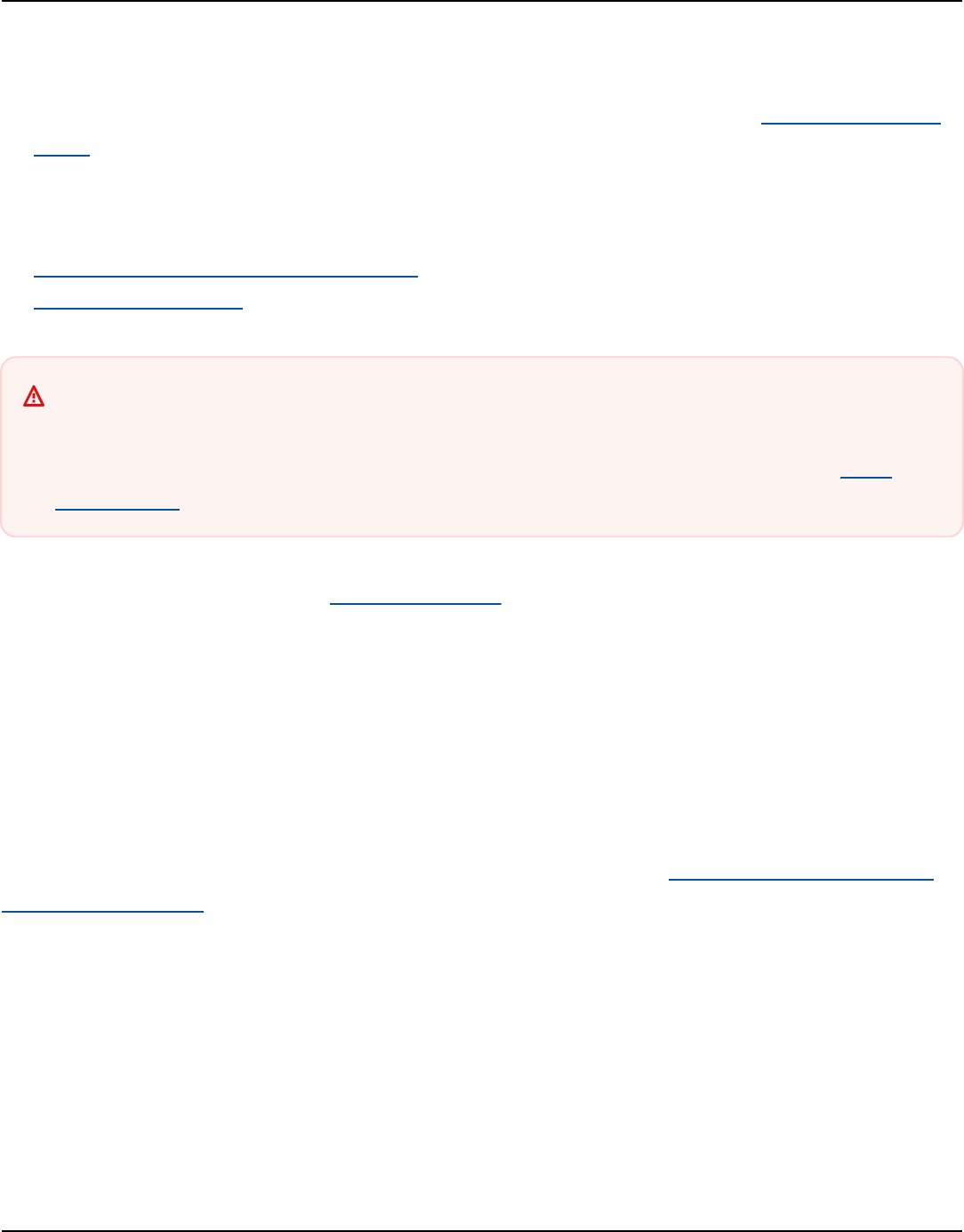
AWS Billing User Guide
You signed up for Savings Plans
You will continue to receive a bill for your compute usage covered under Savings Plans until the
plan term is completed. For more information about Savings Plans, see the Savings Plans User
Guide.
You have active AWS Marketplace subscriptions
AWS Marketplace subscriptions aren't automatically canceled on account closure. First,
terminate all instances of your software in the subscriptions. Then, cancel subscriptions on the
Manage subscriptions page of the AWS Marketplace console.
Important
Within 90 days of closing your account, you can sign in to your account, view resources that
are still active, view past billing, and pay for AWS bills. For more information, see Close
your account in the AWS Account Management Reference Guide.
To pay your unpaid AWS bills, see Making payments.
Charges incurred from resources in AWS Regions that are turned off
If you turn off (disable) an AWS Region that you still have resources in, you will continue to incur
charges for those resources. However, can't access the resources in a disabled Region.
To avoid incurring charges from these resources, enable the Region, terminate all resources in that
Region, and then disable the Region.
For more information about managing Regions for your account, see Specify which AWS Regions
your account can use in the AWS Account Management Reference Guide.
Charges incurred by services launched by other services
A number of AWS services can launch resources, so be sure to check for anything that might have
launched through any service that you've used.
Charges incurred from resources created by AWS Elastic Beanstalk
Elastic Beanstalk is designed to ensure that all the resources that you need are running, which
means that it automatically relaunches any services that you stop. To avoid this, you must
Charges incurred from resources in AWS Regions that are turned off Version 2.0 61

AWS Billing User Guide
terminate your Elastic Beanstalk environment before you terminate resources that Elastic Beanstalk
has created. For more information, see Terminating an Environment in the AWS Elastic Beanstalk
Developer Guide.
Charges incurred from Elastic Load Balancing (ELB) load balancers
Like Elastic Beanstalk environments, ELB load balancers are designed to keep a minimum number
of Amazon Elastic Compute Cloud (Amazon EC2) instances running. You must terminate your
load balancer before you delete the Amazon EC2 instances that are registered with it. For more
information, see Delete Your Load Balancer in the Elastic Load Balancing User Guide.
Charges incurred by services started in AWS OpsWorks
If you use the AWS OpsWorks environment to create AWS resources, you must use AWS OpsWorks
to terminate those resources or AWS OpsWorks restarts them. For example, if you use AWS
OpsWorks to create an Amazon EC2 instance, but then terminate it by using the Amazon EC2
console, the AWS OpsWorks auto healing feature categorizes the instance as failed and restarts it.
For more information, see the AWS OpsWorks User Guide.
Charges incurred by Amazon EC2 instances
After you remove load balancers and Elastic Load Balancing environments, you can stop or
terminate Amazon EC2 instances. Stopping an instance allows you to start it again later, but
you might be charged for storage. Terminating an instance permanently deletes it. For more
information, see Instance lifecycle, particularly Stop and start your instance and Terminate your
Instance in the Amazon EC2 User Guide.
Notes
• Amazon EC2 instances serve as the foundation for multiple AWS services. They can
appear in the Amazon EC2 console instances list even if they were started by other
services. For example, Amazon RDS instances run on Amazon EC2 instances.
• If you terminate an underlying Amazon EC2 instance, the service that started it might
interpret the termination as a failure and restart the instance. For example, AWS
OpsWorks has a feature called auto healing that restarts resources when it detects
failures. In general, it's a best practice to delete resources through the services that
started them.
Charges incurred by Amazon EC2 instances Version 2.0 62

AWS Billing User Guide
Additionally, if you create Amazon EC2 instances from an Amazon Machine Image (AMI) that is
backed by an instance store, check Amazon S3 for the related bundle. Deregistering an AMI doesn't
delete the bundle. For more information, see Deregistering your AMI in the Amazon EC2 User Guide.
Charges incurred by Amazon Elastic Block Store volumes and snapshots
Most Amazon EC2 instances are configured so that their associated Amazon EBS volumes are
deleted when they are terminated, but it's possible to set up an instance that preserves its volume
and the data. Check the Volumes pane in the Amazon EC2 console for volumes that you don’t
need anymore. For more information, see Deleting an Amazon EBS volume in the Amazon EC2 User
Guide.
If you have stored snapshots of your Amazon EBS volumes and no longer need them, you should
delete them as well. Deleting a volume doesn't automatically delete the associated snapshots.
For more information about deleting snapshots, see Deleting an Amazon EBS snapshot in the
Amazon EC2 User Guide.
Deleting a snapshot might not reduce your organization's data storage costs. Other snapshots
might reference that snapshot's data, and referenced data is always preserved.
Example Example: Deleting a snapshot
Say that when you take the first snapshot (snap-A) of a volume with 10 GiB of data, the size of the
snapshot is also 10 GiB. Because snapshots are incremental, the second snapshot that you take of
the same volume contains only blocks of data that changed since the first snapshot was taken.
The second snapshot (snap-B) also references the data in the first snapshot. That is, if you modify
4 GiB of data and take a second snapshot, the size of the second snapshot is 4 GiB. In addition, the
second snapshot references the unchanged 6 GiB in the first snapshot. For more information, see
How snapshots work in the Amazon EC2 User Guide.
In this example, you will see two entries in your daily AWS Cost and Usage Reports (AWS CUR).
AWS CUR captures the snapshot usage amount for a single day. In this example, the usage is 0.33
GiB (10 GiB/ 30 days) for snap-A, and 0.1333 GiB (4 GiB/ 30 days) for snap-B. Using the rate of
$0.05 per GB month, snap-A costs you 0.33 GiB x $0.05 = $0.0165. Snap-B costs you 0.133 GiB x
Charges incurred by Amazon Elastic Block Store volumes and snapshots Version 2.0 63
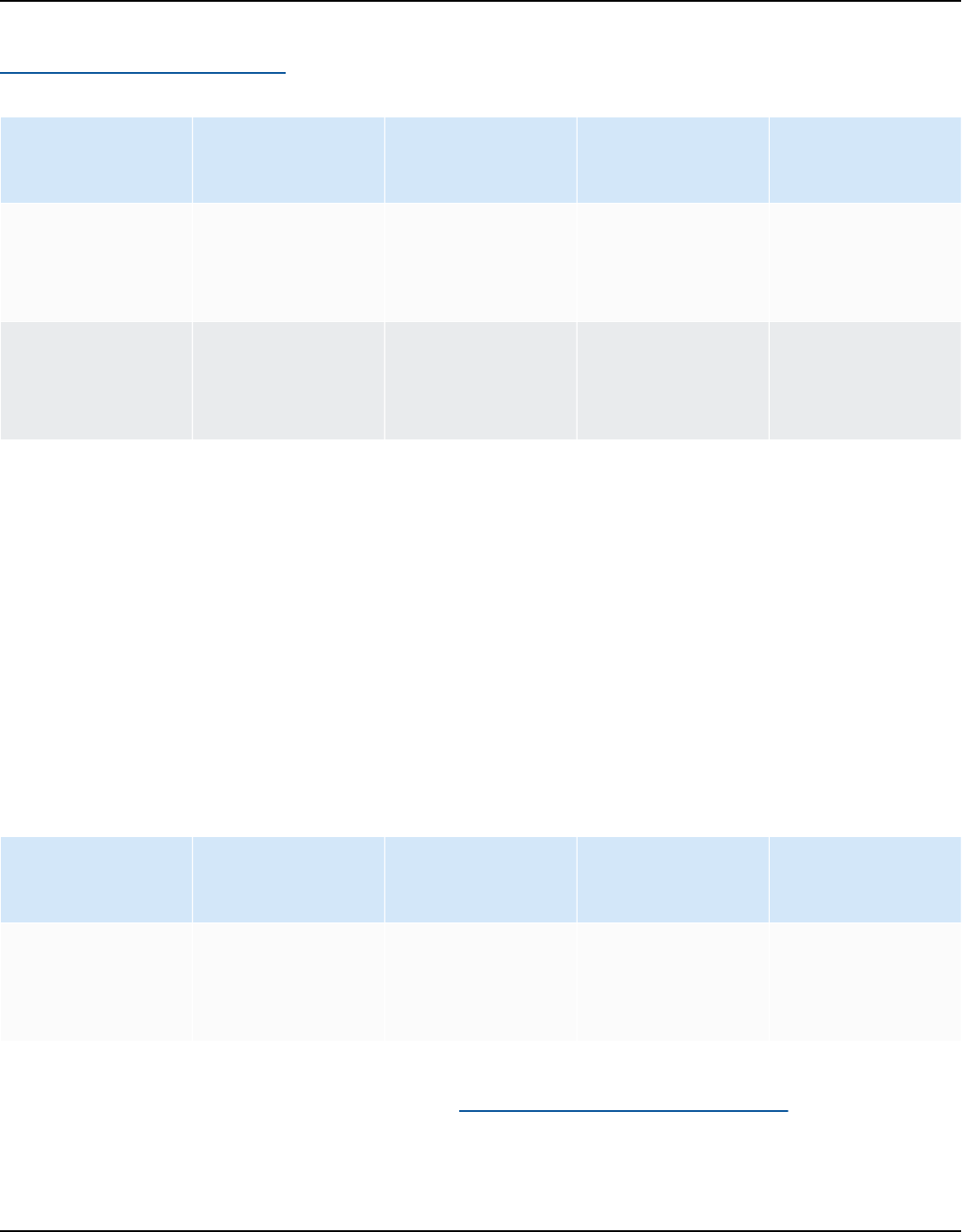
AWS Billing User Guide
$0.05 = $0.0066, for a total of $0.0231 per day for both snapshots. For more information, see the
AWS Data Exports User Guide.
lineItem/
Operation
lineItem/
ResourceId
lineItem/
UsageAmount
lineItem/
UnblendedCost
resourceTags/
user:usage
CreateSnapshot arn:aws:ec2:us-
east-1:123:s
napshot/snap-A
0.33 0.0165 dev
CreateSnapshot arn:aws:ec2:us-
east-1:123:s
napshot/snap-B
0.133 0.0066 dev
If you delete the first snapshot (snap-A in the first row of the previous table), any data that is
referenced by the second snapshot (snap-B in the second row of the previous table) is preserved.
Remember that the second snapshot contains the 4 GiB of incremental data, and references 6 GiB
from the first snapshot. After you delete snap-A, the size of snap-B becomes 10 GiB (4 changed
GiB from the snap-B and 6 unchanged GiB from snap-A).
In the following table, your daily AWS CUR will have the usage amount for snap-B as 0.33 GiB
(10 GiB/ 30 days), charged at $0.0165 per day. When you delete a snapshot, the charges for
the remaining snapshots are recalculated daily, resulting in the possibility that the cost for each
snapshot can change daily as well.
lineItem/
Operation
lineItem/
ResourceId
lineItem/
UsageAmount
lineItem/
UnblendedCost
resourceTags/
user:usage
CreateSnapshot arn:aws:ec2:us-
east-1:123:s
napshot/snap-B
0.33 0.0165 dev
For more information about snapshots, see the Cost Allocation for EBS Snapshots blog post.
Charges incurred by Amazon Elastic Block Store volumes and snapshots Version 2.0 64

AWS Billing User Guide
Charges incurred by Elastic IP addresses
Any Elastic IP addresses that are attached to an instance that you terminate are unattached,
but they are still allocated to you. If you don’t need that IP address anymore, release it to avoid
additional charges. For more information, see Release an Elastic IP address in the Amazon EC2 User
Guide.
Charges incurred by storage services
When you're minimizing costs for AWS resources, keep in mind that many services might incur
storage costs, such as Amazon RDS and Amazon S3. For more information about storage pricing,
see Amazon S3 pricing and Amazon RDS pricing.
Contacting AWS Support
The above is not an exhaustive list of all the reasons why you might see unexpected charges in your
AWS account. If you receive charges that aren't due to any of the reasons listed on this page, see
Contacting AWS Support.
Charges incurred by Elastic IP addresses Version 2.0 65

AWS Billing User Guide
Managing your AWS payments
To open an AWS account, you must have a valid payment method on file. Use the procedures in this
chapter to add, update, or remove payment methods and to make payments.
You can use the Payment preferences page of the AWS Billing and Cost Management console to
manage your AWS payment methods.
Note
IAM users need explicit permission to access some of the pages in the Billing console. For
more information, see Overview of managing access permissions.
For more information about payments or payment methods, see Getting help with your bills and
payments.
Topics
• Manage payment method access using tags
• Making payments
• View remaining invoices, unapplied funds, and payment history
• Managing your payment verifications
• Managing credit card and ACH direct debit
• Using Advance Pay
• Making payments in Chinese yuan
• Making payments using PIX (Brazil)
• Managing your payments in India
• Managing your payments in AWS Europe
• Using payment profiles
Manage payment method access using tags
You can use attribute-based access control (ABAC) to manage access to your purchase methods.
When you create your payment methods, you can tags with key-value pairs. You can then create
Manage payment access using tags Version 2.0 66

AWS Billing User Guide
IAM policies and specify the tags. For example, if you add the project key and assign it a value
of test, your IAM policies can explicitly allow or deny access to any payment instruments that has
this tag.
To add tags to new payment instruments or update existing ones, see Managing credit card and
ACH direct debit.
Example Use tags to allow access
The following policy allows the IAM entity to access payment instruments that have the
creditcard key and a value of visa.
{
"Version": "2012-10-17",
"Statement": [{
"Effect": "Allow",
"Action": [
"payments:ListPaymentInstruments",
"payments:GetPaymentInstrument",
"payments:ListTagsForResource"
],
"Resource": "arn:aws:payments:123456789012:*:payment-instrument/*",
"Condition": {
"StringEquals": {
"aws:ResourceTag/creditcard": "visa"
}
}
}]
}
Example Use tags to deny access
The following policy denies the IAM entity from completing any payment action on payment
methods that have the creditcard key and a value of visa.
{
"Version": "2012-10-17",
"Statement": [{
"Effect": "Allow",
"Action": "payments:*",
"Resource": "*"
},
Manage payment access using tags Version 2.0 67
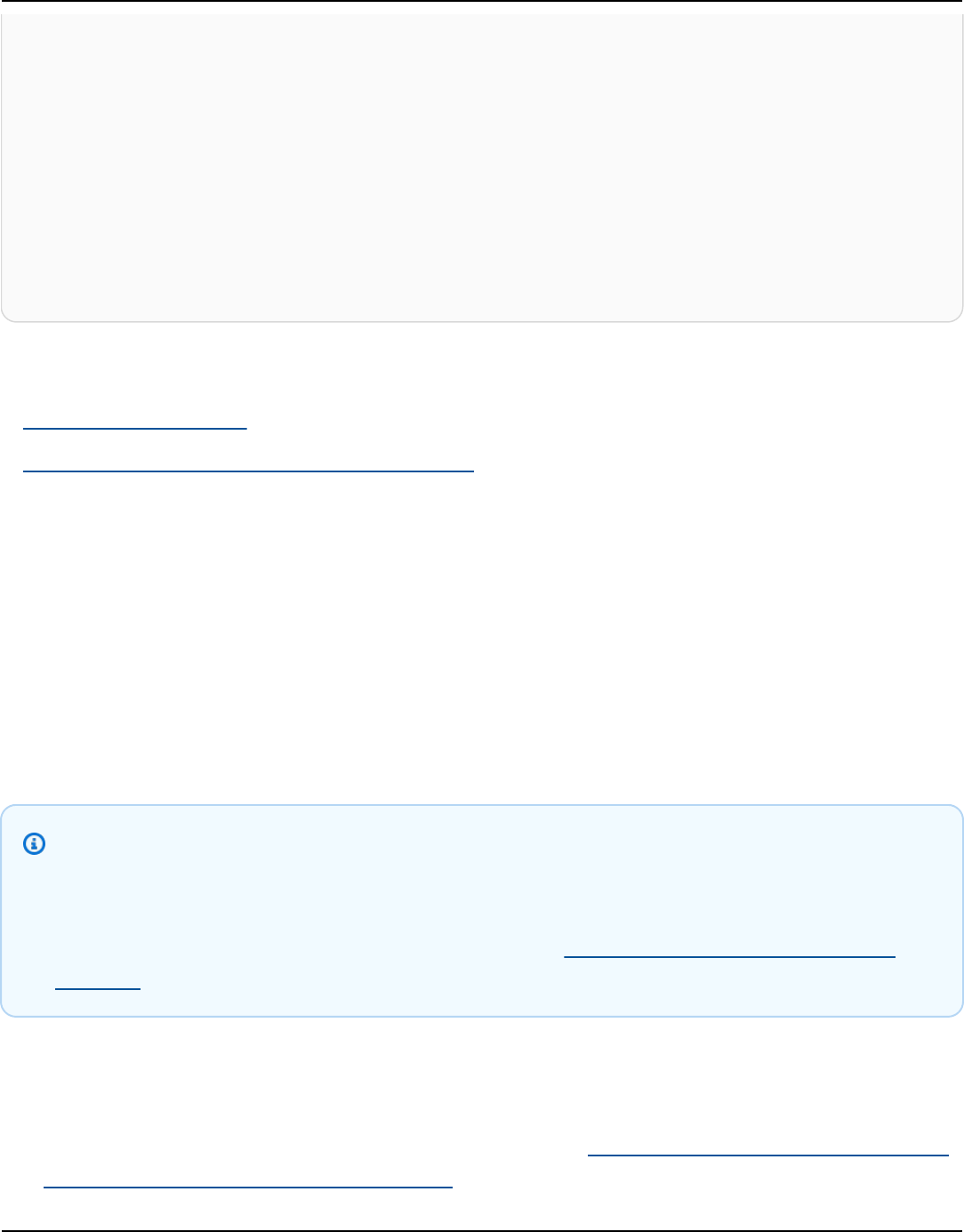
AWS Billing User Guide
{
"Effect": "Deny",
"Action": "payments:GetPaymentInstrument",
"Resource": "arn:aws:payments::123456789012:payment-instrument:*",
"Condition": {
"StringEquals": {
"aws:ResourceTag/creditcard": "visa"
}
}
}]
}
For more information, see the following topics in the IAM User Guide:
• What is ABAC for AWS?
• Controlling access to AWS resources using tags
Making payments
You can use the Payments page of the AWS Billing and Cost Management console to pay your AWS
bill using the process in this section.
AWS charges your default payment method automatically at the beginning of each month. If that
charge doesn't process successfully, you can use the console to update your payment method and
make a payment.
Note
If you pay by ACH direct debit, AWS provides you with your invoice and initiates the charge
to your payment method within 10 days of the start of the month. It can take 3–5 days for
your payment to succeed. For more information, see Manage ACH direct debit payment
methods.
Before making a payment, ensure that the payment method that you want to be automatically
charged in the future is set as your default payment method. If you're using a credit card, confirm
that your credit card isn't expired. For more information, see Designate a default payment method
and Managing credit card and ACH direct debit.
Making payments Version 2.0 68

AWS Billing User Guide
To make a payment
1. Open the AWS Billing and Cost Management console at https://console.aws.amazon.com/
billing/.
2. In the navigation pane, choose Payments.
The Payments due table lists all outstanding invoices. If there are no invoices that are listed,
you don't need to do anything at this time.
3. If there are outstanding invoices, select the invoice that you want to pay in the Payments due
table, and then choose Complete payment.
4. On the Complete a payment page, your default payment method is selected if it's eligible
for you to use to pay the invoice. If you want to use a different payment method or choose an
eligible payment method, choose Change.
5. Confirm that the summary matches what you want to pay, and choose Verify and pay.
After your bank processes your payment, you're redirected to the Payments page.
Suppose that you pay by ACH direct debit, and you receive an email message from AWS saying
that AWS can't charge your bank account and will try again. Then, work with your bank to
understand what went wrong.
If you receive an email saying that AWS failed the last attempt to charge your bank account,
select the invoice to pay in the Payments due table. Then, choose Complete payment to pay
the invoice. If you have questions about issues with charging your bank account or paying an
overdue balance, create a case in the Support Center.
If you pay by electronic funds transfer and your account payment is overdue, create a case in
the Support Center.
View remaining invoices, unapplied funds, and payment history
You can search and filter the Payments due, Unapplied funds, and Payment history tables
described in the following procedures. Choose the gear icon to change the default columns and
customize other table settings. Download items individually by choosing the appropriate ID, or
choose Download, and then Download CSV to download a CSV file of the table for reporting
purposes.
View remaining invoices, unapplied funds, and payment history Version 2.0 69

AWS Billing User Guide
To view remaining invoice payments
1. Open the AWS Billing and Cost Management console at https://console.aws.amazon.com/
billing/.
2. In the navigation pane, choose Payments.
3. Choose the Payments due tab to view the Payments due table.
The Payments due table lists all your remaining invoice payments. The table shows your total
invoice amount and remaining balance.
The table includes the following statuses:
• Due – Outstanding invoices with an approaching due date.
• Past due – Outstanding invoices with a payment that wasn't made by the due date.
• Scheduled – Invoices with an upcoming scheduled payment.
• Processing – Invoices that a payment is currently being scheduled for.
To view unapplied funds
1. Open the AWS Billing and Cost Management console at https://console.aws.amazon.com/
billing/.
2. In the navigation pane, choose Payments.
3. Choose the Unapplied funds tab to view the Unapplied funds table.
The Unapplied funds table lists all unapplied credit memos. The table shows your total invoice
amount and remaining balance.
If the status is Unapplied, there are available credit memos to be applied to an invoice.
If the status is Partially applied, there are credit memos where some amounts have been
applied to a previous invoice.
To view payment history
1. Open the AWS Billing and Cost Management console at https://console.aws.amazon.com/
billing/.
2. In the navigation pane, choose Payments.
View remaining invoices, unapplied funds, and payment history Version 2.0 70

AWS Billing User Guide
3. Choose the Transactions tab to view the Transactions table.
The Transactions table lists all completed transactions with AWS.
Managing your payment verifications
Your bank might ask you for additional verification whenever you use a credit card to pay AWS
online, add or update a credit card, or register a new AWS account.
If your bank requires additional verification, you will be redirected to your bank's website. Follow
the instructions from your bank to complete the verification process. To complete verification, your
bank might ask you to:
• Enter a one-time SMS code
• Use your bank's mobile application to verify your credit card
• Use biometrics or other authentication methods
Contents
• Best practices for verification
• Payment verification
• Troubleshooting payment verification
• AWS Organizations
• Subscription purchases
Best practices for verification
• Confirm that your default payment method is verified. See Troubleshoot unverified credit cards.
• Confirm that your credit card information with your bank is up-to-date. Banks send verification
codes only to the registered card owner.
• Enter the newest code. If you close the authentication portal or request a new code, you might
experience a delay in receiving your newest code.
• Enter the code as prompted. Don't enter the phone number that the code is sent from.
Managing your payment verifications Version 2.0 71

AWS Billing User Guide
Payment verification
You can use the AWS Billing console to confirm that your payment requires verification or to
reattempt any failed payments.
You will receive an email from AWS if your bank needs to verify your payments.
To verify your payment
1. Sign in to the AWS Management Console and open the AWS Billing and Cost Management
console at https://console.aws.amazon.com/billing/.
2. In the navigation pane, choose Payments.
3. Under Payments due, locate the invoice that you want to pay and choose Verify and pay.
4. On the choose Payment preferences page, select the preferred payment method.
5. Choose Complete payment.
6. If your payment requires verification, you're redirected to your bank's website. To complete
verification, follow the provided prompts.
After your bank processed our payment, you're redirected to the Payments page.
Note
Your invoice appears with a Payment processing status until your bank completes the
payment process.
Troubleshooting payment verification
If you can't successfully complete your verification, we recommend that you take any of the
following actions:
• Navigate to the Payment preferences page of the AWS Billing console and ensure that your credit
card is verified. See Troubleshoot unverified credit cards.
• Navigate to the Payment preferences page of the AWS Billing console and update your billing
contact information.
• Contact your bank to confirm that your contact information is up to date.
Payment verification Version 2.0 72

AWS Billing User Guide
• Contact your bank for details about why your verification has failed.
• Clear your cache and cookies or use a different browser.
AWS Organizations
If you're a member account in AWS Organizations, your purchased services that require upfront
payments might not activate until the Management account user verifies the payment. If
verification is required, AWS notifies the billing contact of the Management account by email.
Establish a communication process between your Management account and member accounts.
Subscription purchases
Suppose that you purchase multiple subscriptions at a time (or in bulk) and your bank requests
verification. Then, the bank might ask you to verify each individual purchase.
Subscriptions can include immediate purchases such as Reserved Instances, Business Support plan,
and Route53 domains. Subscriptions don't include AWS Marketplace charges.
Make sure to complete validation for all purchases.
Managing credit card and ACH direct debit
You can use the Payment preferences page of the AWS Billing and Cost Management console to
manage your credit cards and ACH direct debit payment methods.
Topics
• Add a credit card
• Update a credit card
• Troubleshoot unverified credit cards
• Delete a credit card
• Manage ACH direct debit payment methods
Note
If you're paying with a Chinese yuan credit card, see Use a Chinese yuan credit card.
AWS Organizations Version 2.0 73

AWS Billing User Guide
Add a credit card
You can use the Billing and Cost Management console to add a credit card to your account.
To add a credit card to your AWS account
1. Sign in to the AWS Management Console and open the AWS Billing and Cost Management
console at https://console.aws.amazon.com/billing/.
2. In the navigation pane, choose Payment preferences.
3. Choose Add payment method.
4. Enter the credit card information.
5. (Optional) For Set as default payment method, select whether you want this credit card to be
your default payment method.
6. Enter your card billing address.
7. (Optional) Enter the tag key and value. You can add up to 50 tags. For more information on
tags, see Managing Your Payments using tags.
8. Verify your information and then choose Add payment method.
Update a credit card
You can update the expiration date, name, address, and phone number that's associated with your
credit card.
Note
When you add or update your credit card, AWS charges any unpaid invoices from the
previous month to the new card.
To update a credit card
1. Open the AWS Billing and Cost Management console at https://console.aws.amazon.com/
billing/.
2. In the navigation pane, choose Payment preferences.
Payment methods associated with your AWS account appear in the Payment methods section.
3. Select the credit card to edit and then choose Edit.
Add a credit card Version 2.0 74

AWS Billing User Guide
4. Update the information that you want to change.
5. Verify your changes and then choose Save changes.
Troubleshoot unverified credit cards
To make a payment, you must have a valid, unexpired credit card on file.
To confirm that your credit card information is up-to-date
1. Open the AWS Billing and Cost Management console at https://console.aws.amazon.com/
billing/.
2. In the navigation pane, choose Payment preferences.
3. Review your Payments methods. If your credit card is unverified, choose Verify and follow the
prompts.
4. If you still can't verify this credit card, follow these steps:
a. Choose the payment method and then choose Delete.
b. Choose Add payment method, and then enter your credit card information again.
c. Follow the prompts to verify your credit card information.
Note
Your bank might ask for additional verification. You will be redirected to your bank's
website. For more information, see Managing your payment verifications.
Delete a credit card
Before you delete your credit card, ensure that your AWS account has another valid payment
method set as the default.
You can’t delete a payment method that is set to default.
To delete a credit card
1. Open the AWS Billing and Cost Management console at https://console.aws.amazon.com/
billing/.
Troubleshoot unverified credit cards Version 2.0 75

AWS Billing User Guide
2. In the navigation pane, choose Payment preferences. Payment methods associated with your
AWS account appear in the Payment method section.
3. Select the payment method and then choose Delete.
4. In the Delete payment method? dialog box, choose Delete.
Manage ACH direct debit payment methods
If you meet the eligibility requirements, add a US bank account as an ACH direct debit payment
method to your payment methods.
To be eligible, you must be an Amazon Web Services customer and also meet the following
requirements:
• You created your AWS account at least 60 days ago
• You paid at least one invoice (in full) in the previous 12 months
• You paid at least $100 (cumulatively) over the previous 12 months
• You set USD as the preferred currency
If you pay by ACH direct debit, AWS provides you with your invoice and initiates the charge to
your payment method within 10 days of the start of the month. It can take up to 20 days for the
payment to complete successfully, even if the payment shows as Succeeded on the AWS Billing and
Cost Management console.
You can use Billing and Cost Management console to add or update a direct debit account.
Contents
• Add a direct debit account
• Update direct debit account
Add a direct debit account
You can use the AWS Billing and Cost Management console to add a direct debit account to your
AWS payment methods. You can use any personal or business bank account, provided that the
account is located at a branch in the US.
Before you add an ACH direct debit account, have the following information ready:
Manage ACH direct debit payment methods Version 2.0 76

AWS Billing User Guide
• A US bank account number
• A US bank account routing number
• The address that's associated with the bank account
• (For a personal bank account) A US driver's license number or other state-issued ID number
• (For a business bank account) A Federal tax ID number
To add a direct debit account to your AWS account
1. Sign in to the AWS Management Console and open the AWS Billing and Cost Management
console at https://console.aws.amazon.com/billing/.
2. In the navigation pane, choose Payment preferences.
3. Choose Add payment method.
4. Choose Bank account (ACH).
5. For Account type, choose Personal or Business.
6. For Name on account, enter the name of the principal account holder.
7. For Bank routing number, enter the nine-digit routing number.
Routing numbers are always nine digits long. Some banks list the routing number first on a
check. Other banks list the account number first.
8. For Re-enter bank routing number, enter the routing number again.
9. For Checking account number, enter the account number.
Account numbers might be up to 17 digits long. The account must be an ACH-enabled
checking account at a bank that's located in the US.
10. For Re-enter checking account number, enter the bank account number again.
11. For personal bank accounts:
a. For Driver's license number or other state-issued ID, enter the primary account holder's
valid US driver's license or other state-issued ID number.
b. For State of ID issued, enter the name of the state.
12. For business bank accounts, for Tax ID, enter the Federal tax ID for the business.
13. (Optional) For Set as default payment method, select whether you want this direct debit
account to be your default payment method.
14. For Billing address, enter the valid US billing address of the primary account holder.
Manage ACH direct debit payment methods Version 2.0 77

AWS Billing User Guide
15. (Optional) Enter the tag key and value. You can add up to 50 tags. For more information on
tags, see Managing Your Payments using tags.
16. Choose Add payment method to agree to the Terms and Conditions and add your direct debit
account.
Update direct debit account
You can update the name, address, or phone number that's associated with your direct debit
account.
To update a direct debit account
1. Open the AWS Billing and Cost Management console at https://console.aws.amazon.com/
billing/.
2. In the navigation pane, choose Payment preferences.
Payment methods that are associated with your AWS account are listed in the Payment
method section.
3. Select the direct debit account that you want to edit and then choose Edit.
4. Update the information that you want to change.
5. Verify your changes and then choose Save changes.
Using Advance Pay
Note
Advance Pay is in public preview for AWS Billing and Cost Management and is subject to
change. This feature is available for a select group of customers. Your use of advance pay is
subject to the Betas and Previews terms of the AWS Service Terms (Section 2).
Use Advance Pay to pay for your AWS usage in advance. AWS uses the funds to pay for your
invoices automatically when they're due.
You can register for Advance Pay in the AWS Billing and Cost Management console. You can add
funds to Advance Pay by using electronic fund transfer or by using any personal or business bank
account. If you're adding funds using a bank account, the bank must be a US branch location.
Using Advance Pay Version 2.0 78

AWS Billing User Guide
Notes
• You can use Advance Pay if your seller of record (SOR) is AWS Inc. and you’re paying in
USD. If you don’t see the Advance Pay tab, this can be for the following reasons:
• You have a different SOR for your AWS account. To find your SOR, go to the Payment
preferences page and under your default payment method, see the name under
Service provider. You can also find this information in the Tax settings page, under
the Seller column.
• If you’re a member account that is part of an organization, only the management
account (also called the payer account) can use Advance Pay.
• Advance Pay isn’t available in AWS GovCloud (US).
• For a full list of service restrictions for Advance Pay, see Advance Pay.
Topics
• Registering your Advance Pay
• Adding funds to your Advance Pay
Registering your Advance Pay
You can use the AWS Billing and Cost Management console to register for Advance Pay.
To register for Advance Pay
1. Sign in to the AWS Management Console and open the AWS Billing and Cost Management
console at https://console.aws.amazon.com/billing/.
2. In the navigation pane, choose Payments.
3. Choose the Advance Pay tab.
4. Accept the Advance Pay terms and conditions.
5. Choose Register.
Registering your Advance Pay Version 2.0 79

AWS Billing User Guide
Adding funds to your Advance Pay
You can add funds to Advance Pay using electronic funds transfer, or a personal or business bank
account.
To add funds to your Advance Pay using electronic funds transfer
1. Open the AWS Billing and Cost Management console at https://console.aws.amazon.com/
billing/.
2. In the navigation pane, choose Payments.
3. Choose the Advance Pay tab.
4. Choose Add funds.
5. Under Amount, enter the fund amount that you want to add.
The amount must be entered in US dollars.
6. Under Payment method, choose Choose payment method.
7. Choose Wire transfer.
8. Choose Use this payment method.
9. Review the payment details, and choose Verify.
10. Complete your electronic funds transfer by using the instructions in the Payment summary
section.
To use Advance Pay, you must meet eligibility requirements to add a US bank account as an ACH
direct debit payment method. For more information, see Manage ACH direct debit payment
methods.
To add funds to your Advance Pay using a bank account
1. Open the AWS Billing and Cost Management console at https://console.aws.amazon.com/
billing/.
2. In the navigation pane, choose Payments.
3. Choose the Advance Pay tab.
4. Choose Add funds.
5. Under Amount, enter the fund amount that you want to add.
Adding funds to your Advance Pay Version 2.0 80

AWS Billing User Guide
The amount must be entered in US dollars.
6. Under Payment method, choose Choose payment method.
7. Choose Bank account.
8. Choose Use this payment method.
9. Review the payment details, and choose Add funds.
Your bank account is charged with the amount that you enter.
You can download the funding summary document from the Advance pay summary page.
Making payments in Chinese yuan
If you're an AWS Inc. customer, you can make payments using the Chinese yuan currency.
Using the China bank redirect payment method
If you’re a customer based in China, you can use the China bank redirect payment method to
complete payments. To do this, you must have Chinese yuan payments activated and set as your
preferred currency. With the China bank redirect method, you can make payments in Chinese yuan
for AWS Inc.
Topics
• Requirements for using China bank redirect payments
• Setting up China bank redirect payments
• Making payments using China bank redirect
• Switching from China bank redirect to Pay by invoice
Requirements for using China bank redirect payments
To use China bank redirect as your payment method, you must be an Amazon Web Services, Inc.
customer and also meet the following requirements:
• You have Chinese yuan payments activated.
• You set Chinese yuan as your preferred currency.
Making payments in Chinese yuan Version 2.0 81

AWS Billing User Guide
Setting up China bank redirect payments
To use China bank redirect as your payment method, activate Chinese yuan payments on the AWS
Billing and Cost Management console.
To activate Chinese yuan payments, submit information for identity verification. For a personal
account, you need your national ID number for verification. For a business account, you must have
the following information:
• Your uniform social credit code or organization code
• Your business license image
After you gathered the required information, follow the following procedure. This procedure
outlines how to change your preferred currency to Chinese yuan and to set up China bank redirect
payments.
To activate Chinese yuan payments and set up the China bank redirect payment method
1. Sign in to the AWS Management Console and open the AWS Billing and Cost Management
console at https://console.aws.amazon.com/billing/.
2. In the navigation pane, choose Payment methods.
3. In the Pay with Chinese yuan section, choose Get started or Pay in Chinese yuan.
4. Review the Terms and Conditions for Chinese Yuan Payments. Then, select I have read and
agree to the Terms and Conditions for Chinese Yuan Payments.
5. Choose Next.
6. If you have a personal account, do the following:
• For Full name, enter your full name in Chinese.
• For Identity card number, enter your national ID number.
If you have a business account, do the following:
• For Company name, enter the company name in Chinese.
• For Contact name, enter the contact name in Chinese.
• For Contact phone number, enter the contact phone number for your company.
• For Uniform social credit code or organization code, enter your company's code.
Using the China bank redirect payment method Version 2.0 82

AWS Billing User Guide
• For Company business license, upload the image of your company’s business license.
Note
If applicable to your account, you might be required to add a China UnionPay credit
card. For more information, see Use a Chinese yuan credit card.
7. Choose Next.
8. Review the identity information that you entered to make sure it's correct. Then, choose
Submit.
It can take up to one business day to verify your identity information. After your identity is verified,
your default currency automatically changes to Chinese yuan. Additionally, the China bank redirect
payment method is made available to you in the Pay with Chinese yuan section of the Payment
Methods console page.
Making payments using China bank redirect
After setting up the payment method, you can use China bank redirect to make payments on your
invoices.
Note
If you have a business account, the bank account name that you choose for a China bank
redirect payment method must be the same as your company's legal name that you
submitted when you set up your CNY payment. See step 6 in the previous procedure.
To pay invoices using China bank redirect
1. Open the AWS Billing and Cost Management console at https://console.aws.amazon.com/
billing/.
2. In the navigation pane, choose Payments.
3. Select the invoice that you want to pay, and then choose Complete payment.
4. For Select payment option, choose China bank redirect.
Using the China bank redirect payment method Version 2.0 83

AWS Billing User Guide
5. For payments that are more than $50,000, confirm that you fulfilled the applicable tax and
surcharge withholding obligations. To do so, select I confirm that I fulfilled the Chinese tax
and surcharge withholding obligations according to Chinese tax laws and regulations.
6. Choose Verify and pay.
7. To proceed with the redirect, choose OK.
After you’re redirected, choose your bank from the dropdown menu and complete your payment
on your bank’s website. It can take up to 24 hours for your transaction request to process.
Switching from China bank redirect to Pay by invoice
To change your default payment method to Pay by invoice, follow these steps.
To switch to the Pay by invoice method
1. Open the AWS Billing and Cost Management console at https://console.aws.amazon.com/
billing/.
2. In the navigation pane, choose Payment methods.
3. In the Pay by invoice section, choose Make default next to the default payment method that
you want to use.
4. In the Change your payment method and currency dialog box, choose Yes, I want to proceed.
After you change your payment method, your preferred currency defaults to US dollars. To change
your preferred currency back to Chinese yuan, choose Make default next to the China bank redirect
payment method. To change your preferred currency to another supported currency, see Changing
the currency to pay your bill.
Use a Chinese yuan credit card
If you have an account with AWS Inc., are charged in USD, and are based in China, you can use the
following sections to add a Chinese yuan (CNY) credit card to your account.
You can use the Payment Methods page of the AWS Billing and Cost Management console to
perform the following tasks:
• the section called “Set up a Chinese yuan credit card”
• the section called “Switch from a Chinese yuan credit card to an international credit card”
Use a Chinese yuan credit card Version 2.0 84

AWS Billing User Guide
• the section called “Add a new Chinese yuan credit card”
Set up a Chinese yuan credit card
To change your preferred currency to CNY and add a credit card, you must have the following
information:
• National ID number
• Business license number (if applicable)
• Business license image (if applicable)
After you have the required information, you can use the following procedure to change your
preferred currency and add your first Chinese credit card.
To add your first Chinese credit card
1. Sign in to the AWS Management Console and open the AWS Billing and Cost Management
console at https://console.aws.amazon.com/billing/.
2. In the navigation pane, choose Payment methods.
3. Choose Pay with Chinese yuan.
4. In the Setting up Chinese yuan payment dialog box, read the Terms and Conditions
for Chinese yuan payments, select I've already read and agree to the above terms and
conditions, and choose Next.
5. For Verify customer identity, provide the following information:
• National ID name
• Contact number
• (Business only) Company Name
• National ID number
• (Business only) Business License number
• (Business only) Business License image
After you provide the required information, choose Next.
6. For Add a China Union Pay credit card, for the credit card fields, enter the information for the
card and bank.
Use a Chinese yuan credit card Version 2.0 85

AWS Billing User Guide
7. Choose Get Code, enter the provided code, and choose Next.
8. Review your information, select I have confirmed that the provided information is accurate
and valid, and choose Submit.
It can take up to one business day to verify your customer information. AWS emails you after your
information is fully verified.
Switch from a Chinese yuan credit card to an international credit card
To switch from a Chinese yuan credit card to an international credit card, change your preferred
currency. You can use the following procedure to change your default payment method and
preferred currency at the same time.
To change your default payment methods and currency
1. Open the AWS Billing and Cost Management console at https://console.aws.amazon.com/
billing/.
2. In the navigation pane, choose Payment methods.
3. Next to the international credit card that you want to use as your default payment method,
choose Make Default.
4. In the dialog box, for Select payment currency, choose the currency that you want to use.
Then, choose Yes, I want to proceed.
Add a new Chinese yuan credit card
Use the following procedure to add other Chinese yuan credit cards.
To add another Chinese credit card
1. Open the AWS Billing and Cost Management console at https://console.aws.amazon.com/
billing/.
2. In the navigation pane, choose Payment methods.
3. Choose Add a Chinese yuan credit card.
4. For the credit card boxes, enter the information about the card and bank.
5. Choose Get Code, enter the provided code, and choose Continue.
Use a Chinese yuan credit card Version 2.0 86

AWS Billing User Guide
Making payments using PIX (Brazil)
If you meet the requirements, you can use your preferred mobile banking app with the PIX feature
turned on. You can use this feature to scan the AWS generated QR code and make a payment for
your AWS account.
To use PIX, you must be an Amazon Web Services Brazil customer and your AWS account must
meet the following requirements:
• Your invoices are generated in Brazilian real (BRL), with BRL set as the preferred currency.
• You have a credit card set as the default payment.
Registering a credit card is a requirement. However, if your credit card is a valid payment option,
PIX isn't an available payment option. If your credit card payment fails, you can choose PIX as a
payment method.
To complete a transaction using PIX
1. Sign in to the AWS Management Console and open the AWS Billing and Cost Management
console at https://console.aws.amazon.com/billing/.
2. In the navigation pane, choose Payments.
3. In the Payments due section, choose an invoice with a Past due status.
4. Choose Complete payment.
5. Choose Change payment method, or Use PIX.
6. Choose Generate QR code.
Note
The PIX QR code is active for 30 minutes. If the transaction time exceeds 30 minutes,
complete these steps again to generate a new QR code.
7. In your mobile banking app, open the PIX option and scan the AWS generated QR code to see
the details of your transaction. You can also choose Copy PIX code on the AWS Complete a
payment page to paste the code into your banking page.
8. Complete any additional steps that are required through your banking app.
9. Confirm your completed transaction in the Payments page.
Making payments using PIX (Brazil) Version 2.0 87
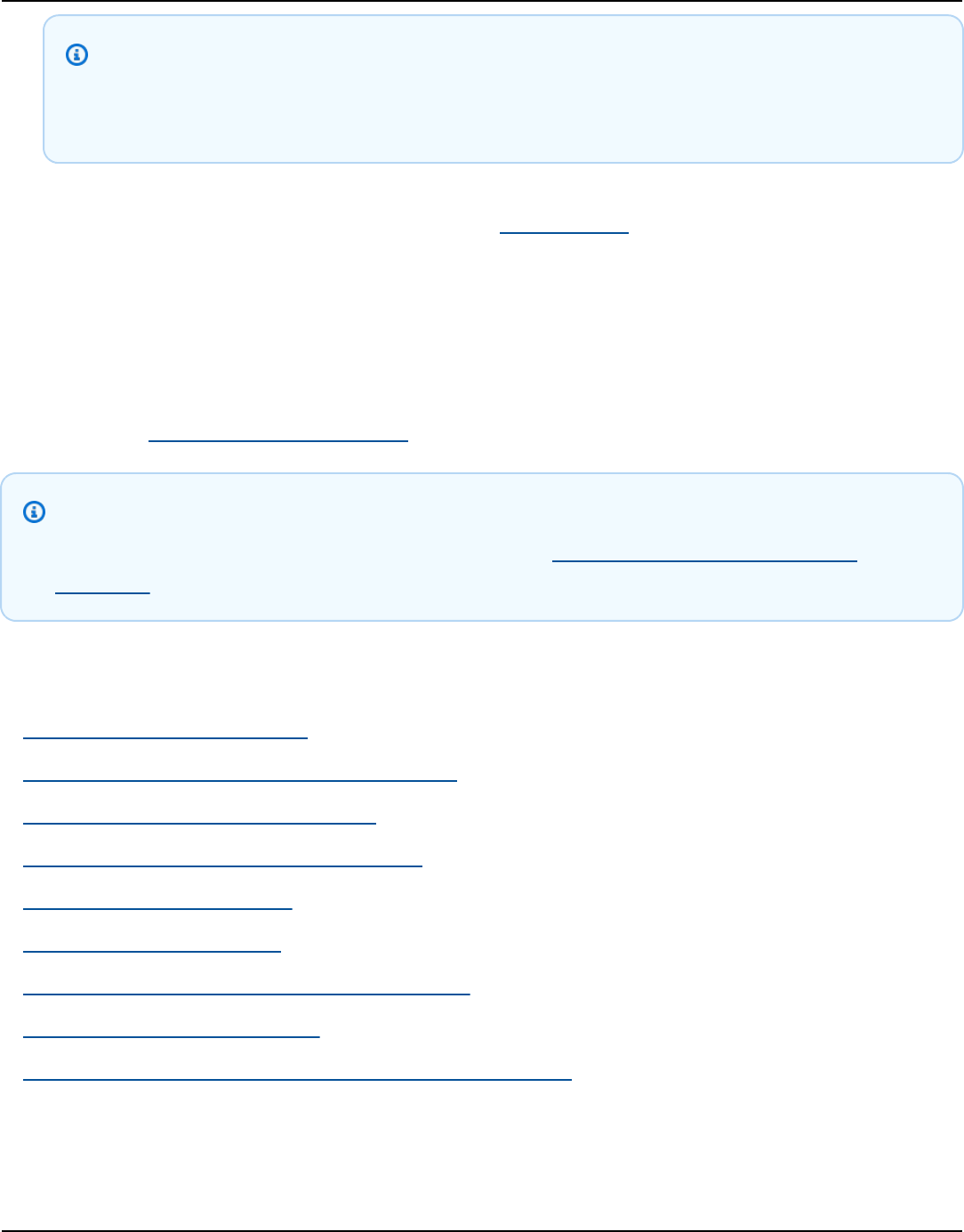
AWS Billing User Guide
Note
It takes up to two minutes to receive the payment confirmation from your bank. Your
Payments page to reflect the changes as soon as the information is received.
For any questions about your PIX payment, contact AWS Support.
Managing your payments in India
If your account is with AWS India, follow the procedures in this topic to manage your payment
methods and make payments, For more information about whether your account is with AWS or
AWS India, see Finding the seller of record.
Note
If you have questions about payment methods, see Getting help with your bills and
payments.
Contents
• Supported payment methods
• Use a credit or debit card to make a payment
• Save your credit or debit card details
• Add card details when making a payment
• Delete a credit or debit card
• Add a net banking account
• Use a net banking account to make a payment
• Remove a net banking account
• Use Unified Payments Interface (UPI) to make a payment
Managing your payments in India Version 2.0 88

AWS Billing User Guide
Supported payment methods
AWS supports Visa, Mastercard, American Express, and RuPay credit and debit cards for AWS India
accounts. In addition, you can use internet banking (net banking) accounts and Unified Payments
Interface (UPI) to pay invoices for AWS India.
Use a credit or debit card to make a payment
You can use the Billing and Cost Management console to pay your AWS India bills. Follow this
procedure to make a payment with a credit or debit card.
Note
You can't use credit or debit cards for automatic payments.
To use a credit or debit card to make a payment
1. Open the AWS Billing and Cost Management console at https://console.aws.amazon.com/
billing/.
2. In the navigation pane, choose Payments.
The Payments due table lists all of your remaining invoices. If there aren't any invoices listed,
you don't have to do anything.
3. Choose the invoices that you're paying in the Payments due table.
4. Choose Complete payment.
5. On the Complete payment page, enter your card CVV in the Summary section, and then
choose Verify and pay.
6. For Visa, Mastercard, American Express, and RuPay payment methods, you're redirected to your
bank to verify your payment.
After your payment is verified, you're redirected to the Payments page. Your invoice will
remain on the Payments due table until your bank processes your payment.
Save your credit or debit card details
You can save your credit or debit card details for card networks in AWS for subsequent invoice
payments as per the guidelines of the Reserve Bank of India (RBI).
Supported payment methods Version 2.0 89

AWS Billing User Guide
To save debit or credit card details
1. Open the AWS Billing and Cost Management console at https://console.aws.amazon.com/
billing/.
2. In the navigation pane, choose Payment preferences.
3. Choose Add payment method.
4. Choose Credit / Debit Card.
5. Enter your card number, expiration date, security code (CVV) and the name of the card holder.
6. Provide your consent to Save card information for future payments.
7. In the Billing address section, enter your name, billing address, and phone number.
8. Review your card information and then choose Add payment method.
You will be redirected to your bank website to verify the card and will be charged 2 Indian
rupee (INR). This charge will be refunded back to your card within 5-7 business days.
After your card is verified successfully, your card details will be saved to your AWS account.
Add card details when making a payment
You can also add your credit or debit card details when you pay your invoice. After you add the card
as a payment method, you don't need to repeat this procedure.
To add card details when making a payment
1. Open the AWS Billing and Cost Management console at https://console.aws.amazon.com/
billing/.
2. In the navigation pane, choose Payments.
The Payments due table lists all of your remaining invoices. If there aren't any invoices listed,
you don't have to do anything.
3. Choose the invoices to pay in the Payments due table.
4. Choose Make payments.
5. Choose Add payment method and then choose Credit / Debit Card.
6. Enter your card number, expiration date, security code (CVV) and the name of the card holder.
7. Provide your consent to Save card information for future payments.
Add card details when making a payment Version 2.0 90

AWS Billing User Guide
8. In the Billing address section, enter your name, billing address, and phone number.
9. Review your card information and then choose Add payment method.
You will be redirected to the invoice payment summary where you will be prompted to make a
payment.
Once your payment is successful, your card details will be saved to your AWS account.
Delete a credit or debit card
Before you delete your credit or debit card, ensure that your AWS account has another valid
payment method set as the default.
To delete a credit or debit card
1. Open the AWS Billing and Cost Management console at https://console.aws.amazon.com/
billing/.
2. In the navigation pane, choose Payment preferences. Payment methods associated with your
AWS account appear in the Payment method section.
3. Select the payment method and then choose Delete.
4. In the Delete payment method? dialog box, choose Delete.
Add a net banking account
You can use the Billing and Cost Management console to add internet banking (net banking)
accounts as your payment method. This payment option is available to all AWS India customers.
To add a net banking account
1. Open the AWS Billing and Cost Management console at https://console.aws.amazon.com/
billing/.
2. In the navigation pane, choose Payment preferences.
3. Choose Add payment method.
4. Choose Net Banking.
5. Under Net banking information, choose your bank name.
6. In the Billing address section, enter your name, billing address, and phone number.
Delete a credit or debit card Version 2.0 91

AWS Billing User Guide
7. Choose Add payment method.
Use a net banking account to make a payment
You can use the Billing and Cost Management console to pay your AWS India bills. Follow this
procedure to make a payment with net banking.
Note
Because of current AWS India regulations, you're redirected to your bank to authorize the
charge with each AWS payment. You can't use net banking for automatic payments.
To use net banking to make a payment
1. Open the AWS Billing and Cost Management console at https://console.aws.amazon.com/
billing/.
2. In the navigation pane, choose Payments.
The Payments due table lists all of your remaining invoices. If there aren't any invoices listed,
you don't have to do anything.
3. Choose the invoices that you're paying in the Payments due table.
4. Choose Complete payment.
5. On the Complete a payment page, the net banking account that you previously saved is
selected by default. To use another net banking account, choose Add payment method, then
Net Banking.
6. Review the summary and then choose Verify and pay.
7. You're redirected to your bank's website to verify your payment. Sign in to your bank's account
and follow the prompts to approve the payment.
After your payment is verified, you're redirected to the Payments page. A success message
appears at the top of the page.
Use a net banking account to make a payment Version 2.0 92

AWS Billing User Guide
Remove a net banking account
You can use the Billing and Cost Management console to remove a net banking account from your
AWS account.
To remove a net banking account
1. Open the AWS Billing and Cost Management console at https://console.aws.amazon.com/
billing/.
2. In the navigation pane, choose Payment preferences. Payment methods that are associated
with your AWS account are listed in the Payment method section.
3. Ensure that your AWS account has another valid payment method set as the default.
4. Select the payment method, and then choose Delete.
5. In the Delete payment method dialog box, choose Delete.
Use Unified Payments Interface (UPI) to make a payment
You can use the Billing console to pay your AWS India bills. Follow this procedure to make a
payment with Unified Payments Interface (UPI).
Note
In order to approve UPI transactions, after you enter a valid UPI ID and billing address, AWS
India will send a request to the UPI application (app) associated with the UPI ID that you
specified. To complete a payment, open your UPI app and approve the transaction within
10 minutes. If the transaction isn't approved within 10 minutes, the request expires, and
you will need to retry a payment again from the Billing console.
To use UPI to make a payment
1. Open the AWS Billing and Cost Management console at https://console.aws.amazon.com/
billing/.
2. In the navigation pane, choose Payments.
The Payments due table lists all of your remaining invoices. If there aren't any invoices listed,
you don't have to do anything.
Remove a net banking account Version 2.0 93

AWS Billing User Guide
3. Choose the invoices that you're paying in the Payments due table.
4. Choose Complete payment.
5. Do one of the following on the Complete a payment page:
• Choose the Use UPI button.
• Choose Add payment method, then choose Unified Payments Interface (UPI) from the
menu.
6. Enter your UPI ID and choose Verify.
7. If successful, enter the billing address or choose to use an existing address.
8. Choose Add payment method.
9. Once you're redirected the Payments page, review the summary and then choose Verify and
pay.
You will be redirected to an intermediate page that shows the instructions you need to
approve the payment. After your payment is verified, you're redirected to the Payments page
with a success message at the top of the page.
Managing your payments in AWS Europe
If your account is with AWS Europe, follow the procedures in this section to manage your payment
methods and payments.
Topics
• Making payments, checking unapplied funds, and viewing your payment history in AWS Europe
• Managing your AWS Europe credit card payment methods
• Managing your AWS Europe credit card payment verifications
• Managing your SEPA direct debit payment method
Making payments, checking unapplied funds, and viewing your
payment history in AWS Europe
You can use the Payments page of the AWS Billing and Cost Management console to perform the
following tasks for all payment types:
• Make a payment
Managing your payments in AWS Europe Version 2.0 94

AWS Billing User Guide
• View outstanding invoices
• View unapplied funds
• View payment history
Make a payment
AWS Europe charges your default payment method automatically at the beginning of each month.
If that charge doesn't process successfully, you can use the console to update your payment
method and make a payment.
Note
If you pay by SEPA direct debit, AWS provides you with your invoice and initiates the charge
to your payment method either the following day or the invoice due date, whichever is
latest. It can take up to 5 business days for your payment to succeed. For more information,
see Managing your SEPA direct debit payment method.
Before making a payment, ensure that the payment method that you want automatically charged
in the future is set as your default payment method. If you're using a credit card, confirm that
your credit card isn't expired. For more information, see Designate a default payment method and
Managing credit card and ACH direct debit.
To make a payment
1. Open the AWS Billing and Cost Management console at https://console.aws.amazon.com/
billing/.
2. In the navigation pane, choose Payments.
The Payments due table lists all outstanding invoices. If there aren't any invoices listed, you
don't need to do anything at this time.
3. If there are outstanding invoices, select the invoice that you want to pay in the Payments due
table, and then choose Complete payment.
4. On the Complete a payment page, your default payment method is selected if it's eligible
for you to use to pay the invoice. If you want to use a different payment method or select an
eligible payment method, choose Change.
5. Confirm that the summary matches what you want to pay, and choose Verify and pay.
Making payments, checking unapplied funds, and viewing your payment history in AWS Europe Version 2.0 95

AWS Billing User Guide
After your bank processes your payment, you're redirected to the Payments page.
Say that you pay by SEPA direct debit, and you receive an email from AWS Europe saying that
AWS Europe can't charge your bank account and will try again. Then, work with your bank to
understand what went wrong.
Or, suppose that you receive an email saying that AWS Europe failed the last attempt to
charge your bank account. Choose Verify and pay on the console to pay your invoice. If you
have questions about issues with charging your bank account or paying an overdue balance,
create a case in the Support Center.
If you pay by electronic funds transfer and your account payment is overdue, create a case in
the Support Center.
View remaining invoices, unapplied funds, and payment history
You can search and filter the Payments due, Unapplied funds, and Payment history tables that
are described in the following procedures. Choose the gear icon to change the default columns
and customize other table settings. Download items individually by choosing the appropriate ID,
or choose Download and then Download CSV to download a CSV file of the table for reporting
purposes.
To view remaining invoices
1. Open the AWS Billing and Cost Management console at https://console.aws.amazon.com/
billing/.
2. In the navigation pane, choose Payments.
3. Choose the Payments due tab to view the Payments due table.
The Payments due table lists all your remaining invoices. The table shows your total invoice
amount and remaining balance.
The table includes the following statuses:
• Due – Outstanding invoices with an approaching due date.
• Past due – Outstanding invoices with a payment that wasn't made by the due date.
• Scheduled – Invoices with an upcoming scheduled payment.
Making payments, checking unapplied funds, and viewing your payment history in AWS Europe Version 2.0 96

AWS Billing User Guide
• Processing – Invoices that a payment is currently being scheduled for.
To view unapplied funds
1. Open the AWS Billing and Cost Management console at https://console.aws.amazon.com/
billing/.
2. In the navigation pane, choose Payments.
3. Choose the Unapplied funds tab to view the Unapplied funds table.
The Unapplied funds table lists all unapplied credit memos. The table shows your total invoice
amount and remaining balance.
To view payment history
1. Open the AWS Billing and Cost Management console at https://console.aws.amazon.com/
billing/.
2. In the navigation pane, choose Payments.
3. Choose the Transactions tab to view the Transactions table.
The Transactions table lists all completed transactions with AWS.
Managing your AWS Europe credit card payment methods
You can use the Payment preferences page of the AWS Billing and Cost Management console to
perform the following credit card tasks:
• Add a credit card to your AWS Europe account
• Update your credit card
• Confirm that your credit card is up to date
To add a credit card to your AWS Europe account
You can use the console to add a credit card to your account.
1. Sign in to the AWS Management Console and open the AWS Billing and Cost Management
console at https://console.aws.amazon.com/billing/.
Managing your AWS Europe credit card payment methods Version 2.0 97

AWS Billing User Guide
2. In the navigation pane, choose Payment Methods.
3. Choose Add a card.
4. For the credit card fields, enter the information and then choose Continue.
5. For the credit card information fields, enter your card billing address.
6. Choose Continue.
To update your credit card
You can update the name, address, or phone number that's associated with your credit card.
1. Sign in to the AWS Management Console and open the AWS Billing and Cost Management
console at https://console.aws.amazon.com/billing/.
2. In the navigation pane, choose Payment Methods.
3. Next to the credit card that you want to edit, choose Edit.
4. Update the fields that you want to change.
5. At the bottom on the page, choose Update.
To confirm that your credit card is up to date
You must have a valid, unexpired credit card on file to make a payment.
1. Sign in to the AWS Management Console and open the AWS Billing and Cost Management
console at https://console.aws.amazon.com/billing/.
2. In the navigation pane, choose Payment Methods.
3. Ensure that the Expires On date for your card is in the future. If your card has expired, add a
new card or update your current card.
Managing your AWS Europe credit card payment verifications
To comply with the recent EU regulation, your bank might ask you for verification whenever you
use a credit card to pay AWS online, add or update a credit card, or register a new AWS account.
Banks typically verify by sending unique security codes to credit card holders before online
purchases are completed. If your bank needs to verify your payment, you will receive an email from
AWS. After verification, you're redirected to the AWS website.
Managing your AWS Europe credit card payment verifications Version 2.0 98

AWS Billing User Guide
If you prefer not to verify payments, register a bank account as your payment method. For more
information about direct debit payment eligibility, see .
To learn more about the EU regulation, see the European Commission’s website.
•
•
•
•
•
Best practices for verification
• Confirm that your credit card information is up to date. Banks send verification codes only to the
registered card owner.
• Enter the newest code. If you close the authentication portal or request a new code, you might
experience a delay in receiving your newest code.
• Enter the code as prompted. Don't enter the phone number that the code is sent from.
Payment verification
You can use the AWS Billing and Cost Management console to confirm that your payment requires
verification or to reattempt any failed payments.
To verify your payment
1. Sign in to the AWS Management Console and open the AWS Billing and Cost Management
console at https://console.aws.amazon.com/billing/.
2. In the navigation pane, choose Orders and invoices.
3. Under Payments due, locate the invoice that you want to pay and choose Verify and pay.
4. On the choose Payment preferences page, select the preferred payment method.
5. Choose Complete payment.
6. If your payment requires verification, you're redirected to your bank's website. To complete
verification, follow the provided prompts.
Managing your AWS Europe credit card payment verifications Version 2.0 99

AWS Billing User Guide
After your bank processed our payment, you're redirected to the Orders and invoices page.
Note
Your invoice appears with a Payment processing status until your bank completes the
payment process.
Troubleshooting payment verification
If you can't successfully complete your verification, we recommend that you take any of the
following actions:
• Contact your bank to confirm that your contact information is up to date.
• Contact your bank for details about why your verification has failed.
• Clear your cache and cookies or use a different browser.
• Navigate to the Payment preferences page of the AWS Billing and Cost Management console and
update your billing contact information.
AWS Organizations
If you're a member account in AWS Organizations, your purchased services that require upfront
payments might not activate until the Management account user verifies the payment. If
verification is required, AWS notifies the billing contact of the Management account by email.
Establish a communication process between your Management account and member accounts. To
change your payment method, see .
Subscription purchases
Suppose that you purchase multiple subscriptions at a time (or in bulk) and your bank requests
verification. Then, the bank might ask you to verify each individual purchase.
Subscriptions can include immediate purchases such as Reserved Instances, Business support plan,
and Route53 domains. Subscriptions don't include AWS Marketplace charges.
Make sure to complete validation for all purchases or register a bank account as your payment
method. For more information about eligibility for direct debit payment, see .
Managing your AWS Europe credit card payment verifications Version 2.0 100

AWS Billing User Guide
Managing your SEPA direct debit payment method
AWS Europe customers can add a bank account to allow SEPA direct debit payments. You can use
any personal or business bank account, provided that the account is located at a branch in a SEPA-
supported country and payments are in the Euro currency.
If you pay by SEPA direct debit, AWS provides you with your invoice and initiates the charge to
your payment method either the following day or the invoice due date, whichever is latest. It can
take up to 5 business days for the payment to complete successfully, even if the payment shows as
Succeeded in the AWS Billing console.
You can use the Payment preferences page of the AWS Billing console to perform the following
SEPA direct debit tasks:
Contents
• Verify and link your bank account to your AWS Europe payment methods
• Manually add a direct debit account to your AWS Europe payment methods
• Update your direct debit account information
Verify and link your bank account to your AWS Europe payment methods
Notes
• This feature is in preview release for Billing and Cost Management and is subject to
change.
• To use this feature, you must have a billing address in Germany. To change your billing
address, see Update your direct debit account information.
You can verify and link a SEPA direct debit account to your AWS account by signing in to your bank
account. We ask that you to sign in to your bank account, so that we can verify your identity and
confirm your ownership of the bank account.
AWS works with TrueLayer to connect to your bank and securely verify ownership of your bank
account. Your information is protected with an encrypted end-to-end connection during this
one-time validation process. Your personal data won’t be shared or used beyond the purpose of
verifying that you're the owner of the connected bank account.
Managing your SEPA direct debit payment method Version 2.0 101

AWS Billing User Guide
If you don't have access to the bank account sign in credentials, you can create an IAM entity (such
as a user or role) for the bank account owner to provide them access to the Billing console. Then,
they can update the AWS account payment method. We recommend that you don't share sensitive
information, including username, password, or payment methods for your account. For more
information, see the following topics:
• Overview of managing access permissions
• Best practices to protect your account's root user in the AWS Account Management Reference
Guide
To verify and link your bank account
1. Sign in to the AWS Management Console and open the AWS Billing and Cost Management
console at https://console.aws.amazon.com/billing/.
2. In the navigation pane, choose Payment preferences.
3. Choose Add payment method.
4. Choose Bank account.
5. Choose Sign in to your bank.
6. Choose Link your bank account.
7. Select your bank name.
8. Choose Allow. The information that you share will only be used to confirm your ownership of
the bank account and to prevent fraud.
9. Sign in to your bank account. Use the credentials for your bank account, not the credentials
for your AWS account. Your connection is encrypted and your credentials are protected. AWS
won't access or store your online banking credentials.
Note
Your bank might ask that you sign in your account with multi-factor authentication
(MFA).
10. For Billing address information, enter the billing address of the primary account owner.
11. Choose Add payment method to agree to the Terms and Conditions and add your direct debit
account. Your bank account is now verified and added to your AWS Europe payment methods.
Managing your SEPA direct debit payment method Version 2.0 102

AWS Billing User Guide
Note
AWS won't access or store your online banking credentials. AWS will ask for your explicit
consent and will only request the following information from your bank:
• Name of account holder
• Account number
Your bank might ask for your consent to share additional information. However, any
additional information won't be shared with AWS. AWS can confirm your ownership of the
bank account and charge your bank account after we first collect this information. AWS
access to this information will expire based on local regulations and your bank’s policy.
To remove direct debit payments from your account, see Remove a payment method. To
remove AWS data access to your bank information, see the TrueLayer documentation.
Manually add a direct debit account to your AWS Europe payment methods
To manually add a direct debit account, you must meet the following requirements:
• Paid at least one invoice in full in the previous 12 months
• Paid at least 100 (USD or EUR) cumulatively over the previous 2 months.
Before you add your payment method, you need the following information:
• Bank Identifier Code (BIC)
• International Bank Account Number (IBAN)
• The address that the bank associates with the account
To manually add a SEPA direct debit account
1. Sign in to the AWS Management Console and open the AWS Billing and Cost Management
console at https://console.aws.amazon.com/billing/.
2. In the navigation pane, choose Payment preferences.
3. Choose Add payment method.
4. Choose Bank account.
Managing your SEPA direct debit payment method Version 2.0 103

AWS Billing User Guide
5. For Account Holder Name, enter the name of the principal account holder.
6. For BIC (Swift Code), enter the 8 or 11 digit number. Routing numbers are either 8 or 11 digits
long.
7. For Confirm BIC (Swift Code), reenter the BIC. Don't copy and paste.
8. For IBAN, enter the digits for the IBAN.
9. For Reenter IBAN, reenter the IBAN digits. Don't copy and paste.
10. For Make Default, select whether you want this direct debit account to be your default
payment method.
11. For Billing Address information, enter the billing address of the primary account holder.
12. Choose Add bank account to agree to the Terms and Conditions and add your direct debit
account.
Update your direct debit account information
You can update the name, address, or phone number that's associated with your direct debit
account.
To update your direct debit account information
1. Sign in to the AWS Management Console and open the AWS Billing and Cost Management
console at https://console.aws.amazon.com/billing/.
2. In the navigation pane, choose Payment preferences.
Payment methods that are associated with your AWS account are listed in the Payment
method section.
3. Select the direct debit account that you want to edit, and choose Edit.
4. Update the fields that you want to change.
5. At the bottom of the dialog box, choose Save changes.
If you have questions about payment methods, see Getting help with your bills and payments.
Using payment profiles
You can use payment profiles to assign payment methods that are different than your default
payment method to pay your invoices automatically. If you receive invoices from more than one
Using payment profiles Version 2.0 104

AWS Billing User Guide
AWS service provider ("seller of record"), use payment profiles to assign a unique payment method
for each one.
After you create a payment profile for a service provider, your payment profile pays your AWS bills
automatically by using the payment method that you specified, as long as your payment profile
uses the same currency as the invoice and the selected payment method is eligible for automatic
payments.
For example, you receive an invoice from AWS Europe for 100 Euro (EUR). If you create a payment
profile for AWS Europe and select the EUR currency, your payment profile will automatically pay
your bill from AWS Europe by using the payment method selected in your payment profile.
If the currency for a payment profile isn't the same as your invoice, AWS ignores your payment
profile and will charge your default payment method instead.
Payment profiles are useful in avoiding situations such as incomplete payments, failed subscription
orders, and unprocessed contract renewals despite having a valid default payment method. When
you use payment profiles, you can do the following:
• Use different payment methods for different AWS service providers
• Customize your payment preferences for your AWS Organizations member accounts that use
different service providers
• Consistently have valid payment methods for your automatic bill payments
• Avoid service interruptions and incomplete balances
Note
Because some country and technological limitations, not all payment methods are available
for all providers. If your default payment method isn't valid for different service providers,
create payment profiles by using the payment methods that are accepted by your service
provider. For more information, see Creating your payment profiles.
Topics
• Creating your payment profiles
• Editing your payment profiles
Using payment profiles Version 2.0 105

AWS Billing User Guide
• Deleting your payment profiles
Creating your payment profiles
You can create new custom profiles using the following steps in the Billing and Cost Management
console.
To create payment profiles
1. Sign in to the AWS Management Console and open the AWS Billing and Cost Management
console at https://console.aws.amazon.com/billing/.
2. In the navigation pane under Preferences, choose Payment methods.
3. Under the Payment profiles section, choose Visit payment profiles.
4. Under the Payment profiles section, choose Create payment profiles.
5. Choose a service provider that matches your invoice.
6. Choose a payment currency that matches your invoice from your service provider.
7. (Optional) Enter a name for your payment profiles.
8. Under the Payment method section, choose the payment method to pay your specified service
provider and currency with.
• To add a new payment method
a. Choose Add a new payment method to open a new tab.
b. Add a new payment method to your account. For more information, see Managing
Your Payments.
c. Return to the Create payment profile tab.
d. Under the Payment method section, choose the refresh icon.
e. Choose the new payment method that you created.
9. Choose Create payment profile.
Note
Check that your payment profile currency matches the currency of your invoice for the
same service provider.
Create payment profiles Version 2.0 106

AWS Billing User Guide
Example: Creating a payment profile for AWS Inc. bills
This section shows an example of how to create a payment profile for the bills that you receive
from the AWS Inc. service provider. In this example, your AWS Organizations management account
is with AWS Europe (shown as "AWS EMEA SARL" as the service provider). Your default payment
currency is Euro (EUR).
If you have a valid default payment method on file, you can pay your AWS Europe invoices
automatically. Examples of a valid payment method include a credit card and a SEPA direct debit
account. For more information, see Managing your payments in AWS Europe.
For your AWS Inc. invoices, you can create a payment profile to pay using a EUR currency credit
card that's eligible for AWS Inc.
To create a payment profile for this AWS Inc. example
1. Open the AWS Billing and Cost Management console at https://console.aws.amazon.com/
billing/.
2. In the navigation pane under Preferences, choose Payment methods.
3. Under the Payment profiles section, choose Visit payment profiles.
4. Choose Create payment profiles.
5.
For Service provider, choose AWS Inc.
6.
For Currency, choose EUR - Euro.
7.
(Optional) Enter a name for your payment profiles (for example, My AWS Inc. payment
profile).
8. Under the Payment method section, choose the payment method to pay your specified service
provider and currency with.
9. Choose Create payment profile.
After this payment profile is created, your AWS Inc. invoices are paid automatically using EUR
currency and the payment method that you specified.
Example: Creating a payment profile for AWS Europe bills
This section shows an example of how to create a payment profile for the bills that you
receive from the AWS Europe ("AWS EMEA SARL") service provider. In this example, your AWS
Create payment profiles Version 2.0 107

AWS Billing User Guide
Organizations management account is with AWS Inc. Your default payment currency is US dollars
(USD).
If you have a valid default payment method on file, you can pay your AWS Inc. invoices
automatically. Examples of a valid payment method include a credit card and a US bank account
for ACH direct debit payments. For more information, see Managing Your Payments.
For your AWS Europe invoices, you can create a payment profile to pay using a USD currency credit
card that's eligible for AWS Europe.
To create a payment profiles for this AWS Europe example
1. Open the AWS Billing and Cost Management console at https://console.aws.amazon.com/
billing/.
2. In the navigation pane under Preferences, choose Payment methods.
3. Under the Payment profiles section, choose Visit payment profiles.
4. Choose Create payment profiles.
5.
For Service provider, choose AWS EMEA SARL.
6.
For Currency, choose USD - US dollar.
7.
(Optional) Enter a name for your payment profiles (for example, My AWS Europe payment
profile).
8. Under the Payment method section, choose the payment method to pay your specified service
provider and currency with.
9. Choose Create payment profile.
Example: Creating a payment profile for AWS Brazil bills
This section shows an example of how to create a payment profile for the bills that you receive
from the AWS Brazil ("Amazon Web Services"/> Serviços Brasil Ltda.") service provider. In this
example, your AWS Organizations management account is with AWS Inc. Your default payment
currency is US dollars (USD).
If you have a valid default payment method on file, you can pay your AWS Inc. invoices
automatically. Examples of a valid payment method include a credit card and a US bank account
for ACH direct debit payments. For more information, see Managing Your Payments.
Create payment profiles Version 2.0 108

AWS Billing User Guide
For your AWS Brazil invoices, you can create a payment profile to pay using a Brazilian real (BRL)
currency credit card that's eligible for AWS Brazil.
To create payment profiles for this AWS Brazil example
1. Open the AWS Billing and Cost Management console at https://console.aws.amazon.com/
billing/.
2. In the navigation pane under Preferences, choose Payment methods.
3. Under the Payment profiles section, choose Visit payment profiles.
4. Choose Create payment profiles.
5.
For Service provider, choose Amazon Web Services"/> Serviços Brasil Ltda.
6.
For Currency, choose BRL - Brazilian real.
7.
(Optional) Enter a name for your payment profiles (for example, My AWS Brazil payment
profile).
8. Under the Payment method section, choose the payment method to pay your specified service
provider and currency with.
9. Choose Create payment profile.
Editing your payment profiles
After you create a payment profile, you can edit the details by using the Billing and Cost
Management console at any time.
To edit a payment profile
1. Open the AWS Billing and Cost Management console at https://console.aws.amazon.com/
billing/.
2. In the navigation pane, under Preferences, choose Payment methods.
3. Under the Payment profiles section, choose a payment profile and choose Edit.
4. Update your payment profile and choose Save changes.
Deleting your payment profiles
You can delete your payment profiles by using the Billing and Cost Management console at any
time.
Edit payment profiles Version 2.0 109

AWS Billing User Guide
To delete a payment profile
1. Open the AWS Billing and Cost Management console at https://console.aws.amazon.com/
billing/.
2. In the navigation pane, under Preferences, choose Payment methods.
3. Under the Payment profiles section, choose Visit payment profiles.
4. Choose a payment profile, and then choose Delete.
Delete payment profiles Version 2.0 110

AWS Billing User Guide
Applying AWS credits
AWS credits are automatically applied to bills to help cover costs that are associated with eligible
services. For more information about eligible services, see Redeem Your AWS Promotional Credit.
Credits are applied until they are exhausted or they expire.
For any questions about AWS credits in general or any credits that have already expired, contact
AWS Support. For more information about how to contact AWS Support, see Getting help with
your bills and payments.
Viewing AWS credits
• To view your credit balance since the last billing date, navigate to the Credits page in the
Billing console. You can find the credit balance under the Amount remaining column.
Your credit balance is updated each month at the end of the current billing cycle. For
example, if you already applied a credit to an invoice this month, the Amount remaining
column will be updated at the end of this billing cycle.
• To view your estimated credit balance for the current month, navigate to the Bills page
in the Billing console, and then choose the Savings tab. This credit balance is updated
every 24 hours and shows your latest estimated credit balance.
Topics
• Step 1: Choosing the credits to apply
• Step 2: Choose where to apply your credits
• Step 3: Applying AWS credits across single and multiple accounts
• Step 4: Sharing AWS credits
Step 1: Choosing the credits to apply
This section explains how AWS credits apply in a single or standalone AWS account. If an AWS
account has more than one credit, the available credits apply in the following order:
The order of how credits apply if an AWS account has more than one credit
1. The soonest to expire amongst the credits
Step 1: Choose credits to apply Version 2.0 111

AWS Billing User Guide
2. The credit with the least number of eligible services
3. The oldest of all credits
For example, Jorge has two credits available to him. Credit one is for 10 dollars, it expires January
2019, and it can be used for either Amazon S3 or Amazon EC2. Credit two is for 5 dollars, it expires
December 2019, and it can be used only for Amazon EC2. Jorge has sufficient AWS charges to
apply all credits. AWS selects credit one for application first because it expires sooner than credit
two.
Note
• If you have remaining, eligible usage after credit is consumed, the process will repeat
until your credits are consumed or your usage is covered.
• Credit is applied to the largest services charge (for example, Amazon EC2, Amazon S3).
Then, the consumption will continue in a descending pattern for the remainder of the
service charges.
• Credits don't require customer selection to apply during the billing process. AWS will
automatically apply eligible credits to applicable services.
Step 2: Choose where to apply your credits
This section shows how AWS credits apply in an AWS Organizations when credit sharing is turned
on.
The order of how credits are applied in an AWS Organizations when credit sharing is activated
1. Account that owns the credit is covered for the service charges
2. Credits are applied towards the AWS account with the highest spend
3. Within the linked account, the charges are grouped by specific fields and credits are applied to
the group with the highest charges
4. Within this group, credits are applied to the highest charge first
The process repeats until the credit is consumed, or all customer spend is covered.
Step 2: Choose where to apply credits Version 2.0 112

AWS Billing User Guide
AWS applies the credit to the largest available charge across all eligible sellers of record. This
means that AWS tries to apply your credits before they expire. So they might use a generic credit
for a specific service.
For example, Jorge has two credits available to him. Credit one is for 10 dollars, expires January
2019, and can be used for either Amazon S3 or Amazon EC2. Credit two is for 5 dollars, expires
December 2019, and can be used only for Amazon EC2. Jorge has two AWS charges: 100 dollars
for Amazon EC2 and 50 dollars for Amazon S3. AWS applies credit one, which expires in January,
to the Amazon EC2 charge, which leaves him with a 90-dollar Amazon EC2 charge and a 50-dollar
Amazon S3 charge. AWS applies credit two to the remaining 90 dollars of Amazon EC2 usage, and
Jorge has to pay 85 dollars for Amazon EC2 and 50 dollars for Amazon S3. He has now used all of
his credits.
Step 3: Applying AWS credits across single and multiple
accounts
The following rules specify how AWS applies credits to bills for single accounts and for
organizations by default (Credit sharing turned on):
• The billing cycle begins on the first day of each month.
• Suppose that an AWS account is owned on the first day of the month by an individual who isn't
part of an organization. Later in the month, that individual account joins an organization. In
this situation, AWS applies that individual's credits to their individual bill for their usage for that
month. That is, AWS applies the credit up to the day that the individual joined the organization.
Note
An individual's account credits don't cover the account usage from the day that the
individual joined the organization to the end of that month. For this period, the
individual's account credits aren't applied to the bill. However, starting the next month,
AWS applies the individual’s account credits to the organization.
• If an account is owned by an organization at the start of the month, AWS applies credits
redeemed by the payer account or by any linked account to the organization's bill, even if the
account leaves the organization in the same month. The start of the month begins one second
after 0:00 UTC+0. For example, assume that an account leaves an organization on August 1.
Step 3: Apply AWS credits to multiple accounts Version 2.0 113

AWS Billing User Guide
AWS still applies the August credits the account redeemed to the organization's bill because the
account belonged to the organization during that calendar month.
• If an individual leaves an organization during the month, AWS begins applying credits to the
individual’s account on the first day of the following month.
• Credits are shared with all accounts that join an organization at any point in the month. However,
the organization’s shared credit pool consists of only credits from accounts that have been part
of the organization since the first day of the month.
For example, assume that Susan owns a single account on the first day of the month and then
joins an organization during the month. Also assume that she redeems her credits on any day after
she joins the organization. AWS applies her credits to her account for usage she incurred from the
first of the month to the day that she joined the organization. However, from the first day of the
next month, AWS applies the credits to the organization's bill. If Susan leaves the organization,
any credits that she redeems are also applied to the organization's bill until the first of the month
after her departure. Starting the month after her departure, AWS applies Susan's credits to her bill
instead of the organization's bill.
In another example, assume that Susan owns a single account on January 1 and joins an
organization on January 11. If Susan redeems 100 dollars of credits on January 18, AWS applies
them to her account for the usage that she incurred for the month of January. From February 1st
onwards, Susan's credits are applied to the organization's consolidated bill. If Susan has 50 dollars
of credits and leaves the organization on April 16, her credits are applied to the organization's
consolidated bill for April. From May onward, Susan's credits are applied to her account.
Step 4: Sharing AWS credits
You can turn off credit sharing on the Billing preferences page on the Billing and Cost
Management console. The following rules specify how credits are applied to bills for single
accounts and for organizations when credit sharing is turned off:
• The billing cycle begins on the first day of each month.
• Credits are applied to only the account that received the credits.
• Bills are calculated using the credit sharing preference that is active on the last day of the month.
• In an organization, only the payer account can turn credit sharing off or on. The payer account
user can also select which accounts credits can be shared with.
Step 4: Share AWS credits Version 2.0 114

AWS Billing User Guide
Credit sharing preferences
You can use this section to activate sharing credits across member accounts in your billing family.
You can select specific accounts or enable sharing for all accounts.
Note
This section is only available for the management account (payer account) as part of AWS
Organizations.
To manage credit sharing for member accounts
1. Open the AWS Billing and Cost Management console at https://console.aws.amazon.com/
billing/.
2. In the navigation pane, choose Billing preferences.
3. In the Credit sharing preferences section, choose Edit.
4. To activate or deactivate credit sharing for specific accounts, select them from the table, and
then choose Activate or Deactivate.
5. To activate or deactivate credit sharing for all accounts, choose Actions, and then choose
Activate All or Deactivate All.
6. Choose Update.
Tip
• To activate credit sharing for new accounts that join your organization, select Default
sharing for newly created member accounts.
• To download a history of your credit sharing preferences, choose Download preference
history (CSV).
Credit sharing preferences Version 2.0 115

AWS Billing User Guide
Managing your purchase orders
You can use your Billing and Cost Management console to manage your purchase orders and
configure how they reflect on your invoices. You have the option to add multiple purchase orders
with multiple line items. Based on your configurations, we select the purchase order that best
matches with your invoice. You can manage purchase orders if you're using a regular AWS account
or an AWS Organizations management account. For more information about accessing the feature,
see Overview of managing access permissions.
Each purchase order can have several line items, and every line item is used for matching with
invoices. The following types of line items are available:
• ALL – All charges on your AWS account.
• AWS Monthly Usage – Your AWS monthly invoice charges.
• AWS Subscription Purchase – Your subscription invoice charges; for example, upfront charges
for Reserved Instances (RI) and AWS Support charges.
• AWS Marketplace Transaction – Your purchase order line item for invoice charges from an AWS
Marketplace contract subscription. This is available only for the following entities, because all
AWS Marketplace invoices are generated from these seller of records: AWS Inc., AWS EMEA SARL,
AWS Australia, and AWS New Zealand. Currently, this line item only supports invoices outside of
your normal monthly billing cycle.
• AWS Marketplace Blanket Usage – Your default purchase order for AWS Marketplace invoice
charges. This is available only for the following entities, because all AWS Marketplace invoices
are generated from these seller of records: AWS Inc., AWS EMEA SARL, AWS Australia, and AWS
New Zealand. All invoices with AWS Marketplace subscriptions contain an AWS Marketplace
Blanket Usage line item, unless the subscription has a transaction-specific purchase order.
If the subscription has a transaction-specific purchase order, then your invoice has an AWS
Marketplace Transaction line item instead.
• AWS Professional Services and Training Purchase – Your default purchase order line item for
invoice charges from AWS Professional Services and Training. This applies to all consulting, in-
person, or digital training services, and is only available for the AWS Inc. entity. This line item
only supports invoices outside of your normal monthly billing cycle.
Version 2.0 116

AWS Billing User Guide
Many criteria and parameters are used to determine the optimal purchase order for your invoices.
You can create up to 100 active purchase orders with up to 100 line items for each regular account
or AWS Organizations management account.
When an invoice is generated, all purchase orders that are added to your management account are
considered for association. Then, expired or suspended purchase orders are filtered out, leaving
only the active purchase orders. Your invoice’s billing entity is matched with the “Bill from” entity
in your purchase order, filtering out those that don’t match. For example, if you have a purchase
order added for the AWS Inc. entity (PO_1), and another one for the AWS EMEA SARL entity
(PO_2). If you purchase a Reserved Instance from AWS Europe, only PO_2 will be considered for
invoice association.
Next, we evaluate line item configurations to determine the best fit for your invoice. To be matched
with a line item, the invoice's billing period must be within the line item's start and end month,
and it must also match the line item type. If multiple line items match, we use the line item with
the most specific type for invoice association. For example, if you have an RI invoice, we use the
subscription line item instead of ALL if both are configured.
Lastly, the line items with enough balance to cover your invoice amount are selected above the
out of balance line items. If line items that belong to multiple purchase orders match all criteria
precisely, we use the purchase order that was most recently updated to match the invoice.
Topics
• Setting up purchase order configurations
• Adding a purchase order
• Editing your purchase orders
• Deleting your purchase orders
• Viewing your purchase orders
• Reading your purchase order details page
• Enabling purchase order notifications
• Use tags to manage access to purchase orders
Version 2.0 117

AWS Billing User Guide
Setting up purchase order configurations
You can use purchase orders and their line item attributes to flexibly define a configuration that
best fits your needs. The following are examples of purchase order configuration scenarios that you
can use.
You can configure separate purchase orders for different time periods by choosing distinct effective
and expiration months.
Note
To be matched with a line item, the invoice's billing period must be within the line item's
start and end month, and it must also match the line item type.
Example Example 1
If you use monthly purchase orders, you can define one purchase order for each month by selecting
the same effective and expiration month for each purchase order. The purchase order will only
apply to the billing period of the invoices.
Here are a few purchase order configurations that you can use for this setup:
•
PO #M1_2021 with the effective month set to Jan 2021 and expiration month Jan 2021.
•
PO #M2_2021 with the effective month set to Feb 2021 and expiration month Feb 2021.
•
PO #M3_2021 with the effective month set to Mar 2021 and expiration month Mar 2021.
Here is an example of how you can also define a purchase order for a particular quarter, half-year,
or the entire year:
•
PO #Q4_2021 with the effective month set to Apr 2021 and expiration month Jun 2021.
•
PO #2H_2021 with the effective month set to Jul 2021 and expiration month Dec 2021.
•
PO #2022Y with the effective month set to Jan 2022 and expiration month as Dec 2022.
Example Example 2
You can configure separate purchase orders for different types of invoices through line item
configurations.
Setting up purchase order configurations Version 2.0 118

AWS Billing User Guide
•
PO #Anniversary_Q4_2021 with the effective month set to Apr 2021, and expiration month
Jun 2021, Line item type = AWS monthly usage.
•
PO #Subscriptions_Q4_2021 with the effective month set to Apr 2021, and expiration
month Jun 2021, Line item type = AWS Subscription Purchase.
•
PO #Marketplace_Q4_2021 with the effective month set to Apr 2021, and expiration month
Jun 2021, Line item type = AWS Marketplace Purchase.
You can track the balance of a given purchase order for different time periods by configuring
granular line item start and end months.
Example Example 3
Consider PO #Q4_2021 from Example 1 with an effective month of Apr 2021 and an expiration
month Jun 2021. You can track this purchase order's balance on a monthly basis by setting up the
following line items:
•
Line item #1 with the start month Apr 2021, end month Apr 2021, Line item type =
ALL.
•
Line item #2 with the start month May 2021, end month May 2021, Line item type =
ALL.
•
Line item #3 with the start month Jun 2021, end month Jun 2021, Line item type =
ALL.
Alternatively, you can track balance for each line item type separately for the same purchase order
and time period.
Example Example 4
The same PO #Q4_2021 from Example 1 can be set up using the following configuration to track
balance of different line item types separately.
•
Line item #1 with the start month Apr 2021, end month Jun 2021, Line item type = AWS
monthly usage.
•
Line item #1.2 with the start month Apr 2021, end month Jun 2021, Line item type =
AWS Subscription Purchase.
•
Line item #1.3 with the start month Apr 2021, end month Jun 2021, Line item type =
AWS Marketplace Purchase.
Setting up purchase order configurations Version 2.0 119

AWS Billing User Guide
Continue this configuration for May and June.
Example Example 5
You can also combine the previous two configurations to track balances for different time periods
and line item types separately.
•
Line item #1.1 with the start month Apr 2021, end month Apr 2021, Line item type =
AWS monthly usage.
•
Line item #1.2 with the start month Apr 2021, end month Apr 2021, Line item type =
AWS Subscription Purchase.
•
Line item #1.3 with the start month Apr 2021, end month Apr 2021, Line item type =
AWS Marketplace Purchase.
Continue this configuration for May and June.
Adding a purchase order
You can use the Billing and Cost Management console to add purchase orders to use in your
invoices. Adding a purchase order is a two-step process involving purchase orders and line item
configurations. First, you enter your purchase order details (for example, purchase order ID,
shipping address, effective and expiration month). Then, you define the purchase order line item
configurations that are used to match the purchase order with an invoice. If you add multiple
purchase orders, we use the purchase order that has the line item best matching the invoice being
generated.
To add a purchase order
1. Sign in to the AWS Management Console and open the AWS Billing and Cost Management
console at https://console.aws.amazon.com/billing/.
2. In the navigation pane, choose Purchase orders.
3. Choose Add purchase order.
4. For Purchase order ID, enter a unique identifier for your purchase order ID. Purchase order IDs
must be unique within your account. For details about character restrictions for your purchase
ID, see Purchase orders.
5. (Optional) For Description, describe your purchase order, including any notes for your
reference.
Adding a purchase order Version 2.0 120

AWS Billing User Guide
6. For Bill from, choose the AWS billing entity that you are invoiced from.
Note
Remittance details are different for each Bill from location. Be sure to verify your
Bill from selection. You must make your payments to the legal entity that you're
billed from. We don't recommend configuring more than one Bill from location for a
purchase order.
7. (Optional) If your purchase order is invoiced from the Amazon Web Services EMEA SARL
billing entity: For Tax registration number, select the tax registration numbers that you want
to associate with your purchase order. Your purchase order is associated with only the invoices
generated for the tax registration numbers that you select.
Note
The Tax registration number selection is available for only the Amazon Web Services
EMEA SARL billing entity. For more information on your tax registration number
settings, see Setting up your tax information.
8. For Ship to, enter your shipping address.
(Optional) Select Copy Bill to address to copy and edit the address populated from your Bill
to field.
9. For Effective month, choose the billing period when you want your purchase order to start.
Your purchase order is eligible for invoices that are associated with usage, starting from the
billing period that you specify.
10. For Expiration month, choose the billing period when you want your purchase order to end.
Your purchase order expires at the end of the specified billing period. It's not used for invoices
that are associated with usage after the billing period.
11. (Optional) For Purchase order contacts, enter the contact name, email address, and phone
number. You can add up to 20 contacts.
12. (Optional) Enter the tag key and value. You can add up to 50 tags.
13. Choose Configure line items.
14. For Line item number, enter a unique identifier for your line item number.
15. (Optional) For Description, enter a description for your line item.
Adding a purchase order Version 2.0 121

AWS Billing User Guide
16. For Line item type, choose your preferred line item type. For a detailed description for each
line item type, see Managing your purchase orders.
17. For Start month, choose the month you want your line item to start from. This date cannot be
earlier than your purchase order Effective month.
18. For End month, choose the month you want your line item to end. This date cannot be later
than your purchase order Expiration month.
19. (Optional) Choose Enable balance tracking to track the balance of your line item.
20. For Amount, enter the total amount of your purchase order line item.
21. For Quantity, enter the quantity amount.
22. (Optional) For Tax, enter the tax amount. This can be an absolute value or a percentage of the
line item amount.
For Tax type, choose % of amount to enter a percentage, or amount in $ to enter an absolute
tax amount.
23. To add other line items, choose Add new line item. You can add up to 100 line items.
24. Choose Submit purchase order.
Some fields are automatically filled and cannot be edited. Here is a list of where the automated
fields are referenced from.
• Bill to – The Bill to address for your invoice. This field is included as a reference, because your
purchase order billing address should match your invoice billing address.
• Payment terms – Your negotiated payment terms.
• Currency – Your preferred invoice currency.
Editing your purchase orders
You can edit your purchase order, line item information, and status using the Billing and Cost
Management console. You can't change your purchase order ID in this process.
To edit a purchase order
1. Open the AWS Billing and Cost Management console at https://console.aws.amazon.com/
billing/.
2. In the navigation pane, choose Purchase orders.
Editing your purchase orders Version 2.0 122

AWS Billing User Guide
3. Select the purchase order that you want to edit.
4. Choose Edit purchase order.
5. Change any parameter of your choice. Purchase order IDs cannot be changed.
6. Choose Configure line items.
7. Choose Submit purchase order.
To update contacts
1. Open the AWS Billing and Cost Management console at https://console.aws.amazon.com/
billing/.
2. In the navigation pane, choose Purchase orders.
3. Choose the purchase order that you want to edit.
4. Choose Manage contacts.
5. Change the contacts information as needed.
6. Choose Save changes.
To change the status of your purchase order
1. Open the AWS Billing and Cost Management console at https://console.aws.amazon.com/
billing/.
2. In the navigation pane, choose Purchase orders.
3. Choose the purchase order that you want to edit.
4. Choose Change status.
5. Choose a status:
• Suspended – Your purchase order will no longer be used for invoice association.
• Active – Your purchase order will be used for invoice association.
6. Choose Change status.
Note
You can use a suspended purchase order for invoice association when it is past its expiration
date and set to Suspended-Expired status. To do so, you must change the status to
Editing your purchase orders Version 2.0 123

AWS Billing User Guide
Expired and update the expiration month to make it Active. Be sure to update your line
item end months accordingly.
To add a line item
1. Open the AWS Billing and Cost Management console at https://console.aws.amazon.com/
billing/.
2. In the navigation pane, choose Purchase orders.
3. Choose the purchase order you want to edit.
4. In the Line items section, choose Add line item.
5. Change the information as needed.
6. Choose Save line item.
To edit a line item
1. Open the AWS Billing and Cost Management console at https://console.aws.amazon.com/
billing/.
2. In the navigation pane, choose Purchase orders.
3. Choose the purchase order you want to edit.
4. In the Line items section, choose Edit.
5. Change the line item information as needed.
6. Choose Save line item.
To delete a line item
1. Open the AWS Billing and Cost Management console at https://console.aws.amazon.com/
billing/.
2. In the navigation pane, choose Purchase orders.
3. Choose the purchase order you want to edit.
4. Select all of the line items to delete in the Line items section.
5. Choose Delete.
6. Choose Confirm.
Editing your purchase orders Version 2.0 124

AWS Billing User Guide
Use the following procedure to update your tags for your purchase order.
To update tags for purchase orders
1. Open the AWS Billing and Cost Management console at https://console.aws.amazon.com/
billing/.
2. In the navigation pane, choose Purchase orders.
3. Choose the purchase order that you want to edit.
4. Choose Manage tags.
5. Change your tag information as needed.
6. Choose Save changes.
Deleting your purchase orders
You can use the Billing and Cost Management console to delete your purchase order at any time,
along with all of its notifications and associated contacts. A deleted purchase order can't be
recovered.
To delete a purchase order
1. Open the AWS Billing and Cost Management console at https://console.aws.amazon.com/
billing/.
2. In the navigation pane, choose Purchase orders.
3. Select all of the purchase orders that you want to delete.
4. Choose Delete purchase order.
5. Choose Confirm.
Viewing your purchase orders
Your purchase order dashboard on the Billing and Cost Management console shows you the state
of your purchase orders at a glance. Your purchase orders are listed on the dashboard, along with
the following information.
• Purchase order ID – The unique identifier for your purchase order.
• Value – Your purchase order amount. This is the sum of all line item amounts.
Deleting your purchase orders Version 2.0 125

AWS Billing User Guide
• Balance – The sum of all line item balances. This sum is updated whenever an invoice is
associated.
• Effective and Expiration – The start and end of your purchase order ID.
• Status – The current status of your purchase order.
• Updated on – The most recent date you updated your purchase order.
To view your purchase orders
1. Open the AWS Billing and Cost Management console at https://console.aws.amazon.com/
billing/.
2. In the navigation pane, choose Purchase orders.
3. Choose a purchase order to see the Purchase order details page.
Reading your purchase order details page
You can review the contents of your individual purchase orders on the Purchase order details page
of the Billing and Cost Management console.
To change your purchase order or line items, see Editing your purchase orders.
• Bill to – The address reflected on your invoice. To change your billing address, update the
information from your Payment methods.
• Ship to – Your purchase order's shipping address.
• Bill from – The AWS legal entity you're billed from.
• Tax registration numbers – The tax registration numbers that you selected for your purchase
order. Your purchase order is associated with the invoices generated for these tax registration
numbers.
Note
The Tax registration number selection is available for only the Amazon Web Services
EMEA SARL billing entity. For more information on your tax registration number settings,
see Setting up your tax information.
• Payment terms – Your negotiated AWS payment terms.
Reading your purchase order details page Version 2.0 126

AWS Billing User Guide
• Currency – Your preferred invoice payment currency.
• Effective month– The billing period from when your purchase order is effective. Your purchase
order is eligible for invoices that are associated with usage, starting from the specified billing
period.
• Expiration month– The billing period when your purchase order expires. Your purchase order is
only used for invoices in the current billing period. It's not used for invoices that are associated
from usage after the specified billing period.
• Contacts – A list of all contacts for this purchase order. Choose Manage contacts to see all listed.
• Status – The current status of your purchase order.
• Active – Eligible for invoice association.
• Suspended – Not eligible for invoice association. You can suspend an active or expired
purchase order.
• Expired – A purchase order that is past its expiration date, and is no longer eligible for invoice
association.
• Suspended-expired – A suspended purchase order that is also past its expiration date.
• Balance amount – The balance remaining on your purchase order. This is the total balance
amount of all line items configured on your purchase order.
• Total amount – The sum of your total values for all line items configured in your purchase order.
• Line items – The line item details you used when adding the purchase order.
• Number – The unique identifier for your line item.
• Type – Your line item type.
• Start month – The month that your line is effective from. The line item is eligible for invoice
association from this month.
• End month – The month your line item expires. The line item is not eligible for invoice
association at the end of this month.
• Amount – The unit price amount.
• Quantity – The number of units.
• Tax – The tax amount.
• Total value – The total value of amount for the particular line item.
• Current balance – The remaining balance after subtracting the total amount of all invoices
matched with this line item. To see details for all invoices matching this line item, see the
invoices table.
Reading your purchase order details page Version 2.0 127

AWS Billing User Guide
• Invoices – All invoices associated with your purchase order.
• Date issued – The date when the invoice was issued.
• Type – The type of invoice. For example, invoice and credit memo.
• ID – The unique identifier of the invoice.
• Line item number – The line item number of your purchase order, associated with the invoice.
• Amount – The invoice amount.
• Due date – Your payment due date for the invoice.
Enabling purchase order notifications
You can enable email notifications on the Billing and Cost Management console by adding
contacts to your purchase orders. You need at least one purchase order contact added to receive
notifications.
Notifications are beneficial to proactively take action on your expiring, or out of balance purchase
orders. This helps you make payments without delay. To update your contacts information, see
Editing your purchase orders.
Purchase order notifications are sent to your contacts for the following scenarios:
• Balance tracking – When your purchase order's line item balance drops below the 75% threshold.
The purchase order balance is tracked at the line item level, and must be enabled at each level.
• Expiration tracking – When your purchase order is approaching its expiration. Your contacts
receive notifications leading up to your expiration date. If your purchase order expiration is
less than one month away, notifications are sent one week prior and on the expiration date. If
your expiration date is one to three months away, a notification is sent one month before the
expiration date. If the expiration is more than three months away, notifications are sent two
months before the expiration date.
Use tags to manage access to purchase orders
You can use attribute-based access control (ABAC) to manage access to your purchase orders.
When you create your purchase orders, you can tags with key-value pairs. You can then create IAM
policies and specify the tags. For example, if you add the project key and assign it a value of
test, your IAM policies can explicitly allow or deny access to any purchase order that has this tag.
Enabling purchase order notifications Version 2.0 128

AWS Billing User Guide
To add tags to new purchase orders or update existing ones, see Adding a purchase order and
Editing your purchase orders.
Example Example: Use tags to allow access
The following policy allows the IAM entity to add, modify, or tag purchase orders that have the
project key and a value of test.
{
"Version": "2012-10-17",
"Statement": [{
"Effect": "Allow",
"Action": [
"purchase-orders:AddPurchaseOrder",
"purchase-orders:TagResource",
"purchase-orders:ModifyPurchaseOrders"
],
"Resource": "arn:aws:purchase-orders::*:purchase-order/*",
"Condition": {
"StringEquals": {
"aws:RequestTag/project": "test"
},
"ForAllValues:StringEquals": {
"aws:TagKeys": "project"
}
}
}]
}
Example Example: Use tags to deny access
The following policy denies the IAM entity from completing any purchase order action on purchase
orders that have the project key and a value of test.
{
"Version": "2012-10-17",
"Statement": [{
"Effect": "Deny",
"Action": "purchase-orders:*",
"Resource": "arn:aws:purchase-orders::*:purchase-order/*",
"Condition": {
"StringEquals": {
"aws:ResourceTag/Project": "test"
Use tags to manage access to purchase orders Version 2.0 129

AWS Billing User Guide
Trying services using AWS Free Tier
When you create an AWS account, you can try some AWS services free of charge within certain
usage limits.
AWS Free Tier provides three types of offers:
Always free
These free tier offers don't expire and are available to all AWS customers.
12 months free
You can use these offers for 12 months following your initial sign up date to AWS.
Short-term trials
You can use a free tier limit each month for less than 12 months. Most short-term free trial
offers start from the date that you activate a particular service.
To find services that offer AWS Free Tier benefits, types, and usage limits
1. Navigate to the AWS Free Tier page.
2. In the Free Tier details section, choose a filter to search for the tier type and product category.
For example, you can choose Always Free and choose Compute to learn about the number of
free requests available for AWS Lambda (Lambda).
For more information about AWS Free Tier and on how to avoid charges while you’re eligible, see
the following topics:
Topics
• Confirming eligibility to use AWS Free Tier
• Avoiding unexpected charges after Free Tier
• Tracking your AWS Free Tier usage
• Using the Free Tier API
Version 2.0 131

AWS Billing User Guide
Confirming eligibility to use AWS Free Tier
Your AWS usage stays within the AWS Free Tier limits when all of these conditions are met:
• You’re within the active trial period for the AWS Free Tier offering. For example, within 12
months for a 12-month free type of service like Amazon Elastic Compute Cloud (Amazon EC2).
• You use only AWS services that offer AWS Free Tier benefits.
• Your usage stays within the AWS Free Tier limits of those services.
If you use AWS services beyond one or more of these conditions, then you're charged at the
standard AWS billing rates for usage that exceeds the Free Tier limits.
To learn more about the AWS Free Tier limits, see AWS Free Tier.
Note
For AWS Organizations, the AWS Free Tier eligibility for all member accounts begins on
the day that the management account is created. For more information, see the AWS
Organizations User Guide.
Avoiding unexpected charges after Free Tier
Your eligibility for the 12 month free service offering AWS Free Tier expires 12 months after you
first activate your AWS account. You can’t extend your Free Tier eligibility after this time.
Note
You can continue to use Always Free offers, even after your AWS Free Tier eligibility expires.
To learn more about available Always Free offers, see AWS Free Tier.
As the expiration date of your AWS Free Tier eligibility approaches, we recommend that you shut
down or delete any resources that you don't need. After your eligibility expires, you’re charged at
the standard AWS billing rates for usage.
Confirming eligibility to use AWS Free Tier Version 2.0 132

AWS Billing User Guide
For short-term trials, there are no expiration notification for these services. You will receive free tier
alerts during the trial period only. To avoid unexpected costs in a short-term trial, you must turn off
these resources before the end of the trial period.
Even if you aren’t regularly signing in to your account, you might have active resources running.
Use the following procedure to identify your account’s active resources.
Note
You can also use the GetFreeTierUsage API operation to get your free tier usage. For
more information about the Free Tier API, see the AWS Billing and Cost Management API
Reference.
To identify your active resources by using AWS Billing
1. Sign in to the AWS Management Console and open the Billing console at https://
console.aws.amazon.com/billing/.
2. On the navigation pane, choose Bills .
3. On the Charges by service tab, choose Expand all.
4. Review the list to find the services with active resources and by AWS Region, and the charges
for each resource.
To identify your active resources by using AWS Cost Explorer
1. Sign in to the AWS Management Console and open the AWS Cost Management at https://
console.aws.amazon.com/cost-management/home.
2. On the navigation pane, choose Cost Explorer.
3. On the Cost and usage graph, note the services and AWS Regions with resources that
you don't need. For instructions on how to shut down or delete those resources, see the
documentation for that service.
For example, to terminate an Amazon EC2 Linux instance, see the Amazon EC2 User Guide.
Avoiding unexpected charges after Free Tier Version 2.0 133

AWS Billing User Guide
Tip
You might decide to close your AWS account. For more information and important
considerations, see Close your account in the AWS Account Management Reference Guide.
Tracking your AWS Free Tier usage
You can track your AWS Free Tier usage in the following ways:
• Turn on Free Tier usage alerts in Billing preferences. By default, AWS Free Tier usage alerts
automatically notifies you over email when you exceed 85 percent of the Free Tier limit for each
service. You can also configure AWS Budgets to track your usage to 100 percent of the Free Tier
limit by setting a zero spend budget using the template.
• Review your AWS Free Tier usage by using the Free Tier page in the Billing and Cost
Management console.
Topics
• Using AWS Free Tier usage alerts
• Recommended actions for Free Tier
• Trackable AWS Free Tier services
Using AWS Free Tier usage alerts
You can use AWS Free Tier usage alerts to track and take action on your cost and usage. For more
information about this feature, see Managing your costs with AWS Budgets.
AWS Free Tier usage alerts automatically notifies you over email when you exceed 85 percent
of your Free Tier limit for each service. For additional tracking, you can configure AWS Budgets
to track your usage to 100% of the Free Tier limit by setting a zero spend budget using the
template. You can also filter your budget to track individual services.
For example, you can set up a budget to send you an alert when you’re forecasted to exceed 100
percent of the Free Tier limit for Amazon Elastic Block Store. To set up a usage budget, see Creating
a usage budget.
Track your usage Version 2.0 134

AWS Billing User Guide
AWS Free Tier usage alerts cover Free Tier offerings active in the current month, such as the first 25
GB of Amazon DynamoDB storage or the first 10 custom Amazon CloudWatch metrics. It's common
to have all three types of AWS Free Tier offerings active within the first 12 months.
For example, you use Amazon EC2, Amazon SageMaker, and Amazon S3. You will see Free Tier
usage for those usage types in the Billing and Cost Management console, Free Tier page. After
using SageMaker for two months, the short-term trial will end while Amazon EC2 and Amazon S3
continue. After 12 months from account creation, the Amazon EC2 12-month free period expires,
but Amazon S3 will continue because the service offers Always free status.
When you exceed the Free Tier limit for a service, AWS sends an email to the email address that
you used to create your account (the AWS account root user). To change the email address for AWS
Free Tier usage alerts, see the following procedure:
To change the email address for AWS Free Tier usage alerts
1. Sign in to the AWS Management Console and open the Billing console at https://
console.aws.amazon.com/billing/.
2. Under Preferences in the navigation pane, choose Billing preferences.
3. For Alert preferences, choose Edit.
4. Enter the email address to receive the usage alerts.
5. Choose Update.
AWS Budgets usage alerts for 85 percent of the Free Tier limit are automatically activated for
all individual AWS accounts, but not for a management account in an AWS Organizations. If you
own a management account, you must opt in to get AWS Free Tier usage alerts. Use the following
procedure to opt in or out of Free Tier usage alerts.
To opt in or out of AWS Free Tier usage alerts
1. Sign in to the AWS Management Console and open the Billing console at https://
console.aws.amazon.com/billing/.
2. Under Preferences in the navigation pane, choose Billing preferences.
3. For Alert preferences, choose Edit.
4. Select Receive AWS Free Tier alerts to opt in to Free Tier usage alerts. To opt out, clear
Receive AWS Free Tier alerts.
5. Choose Update.
Using AWS Free Tier usage alerts Version 2.0 135

AWS Billing User Guide
Recommended actions for Free Tier
If you're eligible for AWS Free Tier and you use a free tier offering, you can track your usage with
the Recommended actions widget on the Billing and Cost Management home page. This widget
shows recommendations if your usage exceeded 85% of any service's free tier usage limits.
The following conditions might limit whether you see AWS Free Tier data:
• You use an AWS service that doesn't offer Free Tier
• Your Free Tier has expired
• You access AWS through an AWS Organizations member account
• You use an AWS service in the AWS GovCloud (US-West) or AWS GovCloud (US-East) Regions
For more information, see Recommended actions.
Trackable AWS Free Tier services
With AWS, you can track how much you used AWS Free Tier services and what service usage types
you used. Usage types are the specific type of usage that AWS tracks. For example, the usage type
BoxUsage:freetier.micro means that you used an Amazon EC2 micro instance.
The AWS Free Tier usage alerts and the Top AWS Free Tier Services by Usage table cover both
expiring and non-expiring AWS Free Tier offerings. You can track the following services and usage
types.
Service Usage type Free Tier type
AWS Amplify
BuildDuration
DataStorage
DataTransferOut
HostingComputeRequ
estCount
HostingComputeRequ
estDuration
12 Months Free
Recommended actions for Free Tier Version 2.0 136

AWS Billing User Guide
Service Usage type Free Tier type
AWS AppSync
ConnectionDuration
GraphQLInvocation
GraphQLNotification
ResponseData
12 Months Free
AWS Audit Manager
Resource-Assessment-
Collected
Free Trial
AWS Budgets
ActionEnabledBudge
tsUsage
Always Free
AWS CloudFormation
Resource-Invocation-
Count-FreeTier
Always Free
AWS CodeArtifact
Requests
TimedStorage-ByteHrs
Always Free
AWS CodeCommit
User-Month
Always Free
AWS CodePipeline
actionExecutionMin
ute
activePipeline
Always Free
AWS Data Pipeline
AWS-Activities-inf
req
AWS-Preconditions-
infreq
12 Months Free
AWS Data Transfer
DataTransfer-Out-B
ytes
DataTransfer-Regio
nal-Bytes
Always Free
Trackable AWS Free Tier services Version 2.0 137

AWS Billing User Guide
Service Usage type Free Tier type
AWS Database Migration
Service
InstanceUsg:dms.t2
.micro
InstanceUsg:dms.t3
.micro
Always Free
AWS DeepRacer
ServiceUse-Train-E
valuate-Job
TimedStorage-Gigab
yteHrs
Free Trial
AWS Directory Service
MicrosoftAD-DC-Usage
Small-Directory-Us
age
Free Trial
AWS Elemental MediaConnect
DataTransfer-Out-B
ytes
Always Free
AWS Glue
Catalog-Request
Catalog-Storage
Always Free
AWS IoT Greengrass
ActiveGGC-Devices
12 Months Free
AWS HealthImaging
API-Requests-Core
EarlyDelete-Active
ByteHrs
TimedStorage-Activ
eByteHrs
TimedStorage-Archi
veByteHrs
12 Months Free
Trackable AWS Free Tier services Version 2.0 138

AWS Billing User Guide
Service Usage type Free Tier type
AWS IoT
ActionsExecuted
ConnectionMinutes
LoRaWAN-FUOTA
Messages
RegistryAndShadowO
perations
RulesTriggered
Solved-Positions
12 Months Free
AWS IoT Analytics
DataProcessing-Bytes
DataScanned-TB
ProcessedStorage-B
yteHrs
RawStorage-ByteHrs
12 Months Free
AWS IoT Device Defender
Detect
Free Trial
AWS IoT Device Management
JobExecutions
12 Months Free
AWS IoT Events
Messages
12 Months Free
Trackable AWS Free Tier services Version 2.0 139

AWS Billing User Guide
Service Usage type Free Tier type
AWS IoT TwinMaker
IoTTwinMaker-BaseT
ier1-Queries
IoTTwinMaker-BaseT
ier1-UnifiedDataAc
cess
IoTTwinMaker-BaseT
ier2-Queries
IoTTwinMaker-BaseT
ier2-UnifiedDataAc
cess
IoTTwinMaker-BaseT
ier3-Queries
IoTTwinMaker-BaseT
ier3-UnifiedDataAc
cess
IoTTwinMaker-BaseT
ier4-Queries
IoTTwinMaker-BaseT
ier4-UnifiedDataAc
cess
IoTTwinMaker-Unifi
edDataAccess
12 Months Free
AWS Key Management
Service
KMS-Requests
Always Free
Trackable AWS Free Tier services Version 2.0 140

AWS Billing User Guide
Service Usage type Free Tier type
AWS Lambda
Lambda-GB-Second
Lambda-Streaming-R
esponse-Processed-
Bytes
Request
Always Free
AWS Migration Hub Refactor
Spaces
API-Request
EnvironmentHours
Always Free
AWS OpsWorks
OpsWorks-Chef-Auto
mate
OpsWorks-Puppet-En
terprise
12 Months Free
AWS RoboMaker
SimulationUnitHour
Free Trial
AWS Security Hub
OtherProduct:PaidF
indingsIngestion
RuleEvaluation
Always Free
AWS Service Catalog
SC-API-Calls
Always Free
AWS Step Functions
StateTransition
Always Free
AWS Storage Gateway
Uploaded-Bytes
Always Free
AWS Supply Chain
ADPSiteProductCount
SiteProductCount
StorageSize
Free Trial
Trackable AWS Free Tier services Version 2.0 141

AWS Billing User Guide
Service Usage type Free Tier type
AWS Systems Manager
AWS-Auto-ScriptDur
ation-Tier3
AWS-Auto-Steps-Tier1
IM-Notifications-T
ier1
Always Free
Amazon Virtual Private Cloud
PublicIPv4:InUseAd
dress
12 Months Free
AWS WAF
AMR-BotControl-Req
uest
AMR-BotControl-Tar
geted-Request
AMR-FraudControl-R
equest
ShieldProtected-AMR-
BotControl-Request
ShieldProtected-AMR-
BotControl-Targeted-
Request
ShieldProtected-AMR-
FraudControl-Request
Always Free
AWS X-Ray
XRay-TracesAccessed
XRay-TracesStored
Always Free
Trackable AWS Free Tier services Version 2.0 142

AWS Billing User Guide
Service Usage type Free Tier type
Amazon API Gateway
ApiGatewayHttpRequ
est
ApiGatewayMessage
ApiGatewayMinute
ApiGatewayRequest
12 Months Free
Amazon AppStream
stream-hrs:720p:g2
stream.standard.la
rge-ib
Free Trial
Amazon Augmented AI
A2ICustom-Objects
A2IRek-Objects
A2ITextract-Objects
12 Months Free
Amazon Braket
Simulators-Task
Free Trial
Amazon Cloud Directory
Requests-Tier1
Requests-Tier2
TimedStorage-ByteHrs
12 Months Free
Amazon CloudFront
DataTransfer-Out-B
ytes
Executions-CloudFr
ontFunctions
Invalidations
Requests-Tier1
Always Free
Trackable AWS Free Tier services Version 2.0 143

AWS Billing User Guide
Service Usage type Free Tier type
Amazon CloudSearch
DocumentBatchUpload
IndexDocuments
SearchInstance:m1.
large
SearchInstance:m1.
small
SearchInstance:m2.
2xlarge
SearchInstance:m2.
xlarge
SearchInstance:m3.
2xlarge
SearchInstance:m3.
large
SearchInstance:m3.
medium
SearchInstance:m3.
xlarge
SearchInstance:m4.
2xlarge
SearchInstance:m4.
large
SearchInstance:m4.
xlarge
Free Trial
Trackable AWS Free Tier services Version 2.0 144

AWS Billing User Guide
Service Usage type Free Tier type
SearchInstance:sea
rch.2xlarge
SearchInstance:sea
rch.large
SearchInstance:sea
rch.medium
SearchInstance:sea
rch.previousgenera
tion.2xlarge
SearchInstance:sea
rch.previousgenera
tion.large
SearchInstance:sea
rch.previousgenera
tion.small
SearchInstance:sea
rch.previousgenera
tion.xlarge
SearchInstance:sea
rch.small
SearchInstance:sea
rch.xlarge
Amazon Cognito
CognitoEnterpriseMAU
CognitoUserPoolMAU
Always Free
Amazon Cognito Sync
CognitoSyncOperation
TimedStorage-ByteHrs
Always Free
Trackable AWS Free Tier services Version 2.0 145

AWS Billing User Guide
Service Usage type Free Tier type
Amazon Comprehend
Comprehend-DC-Custom
Comprehend-DE-Custom
Comprehend-EA
Comprehend-KP
Comprehend-LD
Comprehend-SA
Comprehend-Syntax
ContainsPiiEntities
DetectEvents
DetectPiiEntities
DetectTgtSentiment
DetectTopics
DocClassification-
INSURANCE
DocClassification-
MORTGAGE
DocClassification-
PromptSafety
12 Months Free
Amazon Connect
chat-message
end-customer-mins
tasks
12 Months Free
Trackable AWS Free Tier services Version 2.0 146

AWS Billing User Guide
Service Usage type Free Tier type
Amazon Connect Customer
Profiles
MonthlyConnectBase
Profiles
MonthlyProfiles
12 Months Free
Amazon Connect Voice ID
Authentication
Enrollment
FraudDetection
12 Months Free
Amazon DataZone
DataZoneCompute
DataZoneRequests
DataZoneStorage
DataZoneUsers
Free Trial
Amazon DevOpsGuru
DevOpsGuru-APICalls
ResourceGroup-A-us
agehours
ResourceGroup-B-us
agehours
Free Trial
Amazon DocumentDB (with
MongoDB compatibility)
BackupUsage
InstanceUsage:db.t
3.medium
StorageIOUsage
StorageUsage
Free Trial
Trackable AWS Free Tier services Version 2.0 147

AWS Billing User Guide
Service Usage type Free Tier type
Amazon DynamoDB
ReadCapacityUnit-Hrs
ReplWriteCapacityU
nit-Hrs
Streams-Requests
TimedStorage-ByteHrs
WriteCapacityUnit-
Hrs
Always Free
Amazon Elastic Container
Registry
TimedStorage-ByteHrs
12 Months Free
Amazon ElastiCache
NodeUsage:cache.t1
.micro
12 Months Free
Trackable AWS Free Tier services Version 2.0 148

AWS Billing User Guide
Service Usage type Free Tier type
Amazon Elastic Compute
Cloud
BoxUsage:freetier.
micro
BoxUsage:freetrial
CW:AlarmMonitorUsage
CW:MetricMonitorUs
age
CW:Requests
CarrierIP:IdleAddr
ess
CarrierIP:Remap
DataProcessing-Bytes
DataTransfer-Out-B
ytes
DataTransfer-Regio
nal-Bytes
EBS:SnapshotUsage
EBS:VolumeIOUsage
EBS:VolumeUsage
ElasticIP:IdleAddr
ess
ElasticIP:Remap
LCUUsage
LoadBalancerUsage
12 Months Free
Trackable AWS Free Tier services Version 2.0 149

AWS Billing User Guide
Service Usage type Free Tier type
Amazon Elastic Container
Registry Public
Internet-ECRPublic-
Out-Bytes
TimedStorage-ByteHrs
12 Months Free
Amazon Elastic Container
Service
ECS-Anywhere-Insta
nce-hours-WithFree
Free Trial
Amazon Elastic File System
TimedStorage-ByteHrs
12 Months Free
Amazon Elastic Transcoder
ets-audio-success
ets-hd-success
ets-sd-success
12 Months Free
Amazon Forecast
DataInjection
ForecastDataPoints
TrainingHours
Free Trial
Trackable AWS Free Tier services Version 2.0 150

AWS Billing User Guide
Service Usage type Free Tier type
Amazon Fraud Detector
FraudPrediction-Ac
countTakeoverInsig
hts
FraudPrediction-On
lineFraudInsights
FraudPrediction-Ru
lesOnly
FraudPrediction-Tr
ansactionFraudInsi
ghts
HostingHrs
StoredDataset
TrainingHrs
Free Trial
Amazon GameLift
BoxUsage:c3.large
DailyActiveUser
FlexMatchMatchmaki
ngHrs
FlexMatchPlayerPac
kages
GLAGameSessionsPla
ced
GLAServerProcessCo
nnMin
12 Months Free
Trackable AWS Free Tier services Version 2.0 151

AWS Billing User Guide
Service Usage type Free Tier type
AWS HealthLake
FHIRDataStorage
FHIRQueries
Always Free
Amazon IVS Chat
Messaging-Deliveries
Messaging-Requests
12 Months Free
Amazon Interactive Video
Service
Input-Basic-Hours
Output-SD-Hours
Real-Time-Encode-H
ours
Real-Time-Hours
Stages-Participant-
Hours
12 Months Free
Amazon Kendra
KendraDeveloperEdi
tion
KendraIntelligentR
anking-BaseCapacity
Free Trial
Amazon Keyspaces (for
Apache Cassandra)
ReadRequestUnits
TimedStorage-ByteHrs
WriteRequestUnits
Free Trial
Amazon Lex
Speech-Requests
Text-Requests
botdesign
12 Months Free
Trackable AWS Free Tier services Version 2.0 152

AWS Billing User Guide
Service Usage type Free Tier type
Amazon Lightsail
BundleUsage:0.5GB
BundleUsage:0.5GB_
win
BundleUsage:1GB
BundleUsage:1GB_win
BundleUsage:2GB
BundleUsage:2GB_win
ContainerSvcUsage:
Micro-0.25CPU-1GB-
Free
DNS-Queries
DatabaseUsage:1GB
UnusedStaticIP
Free Trial
Trackable AWS Free Tier services Version 2.0 153

AWS Billing User Guide
Service Usage type Free Tier type
Amazon Location Service
DeviceDelete
Geocode
GeofenceCreateRead
UpdateDelete
GeofenceList
MapTile
PositionEvaluation
PositionRead
PositionWrite
ResourceCreateRead
UpdateDelete
ReverseGeocode
Route
Suggest
Free Trial
Amazon Lookout for
Equipment
Inference-Hours-L4E
Ingestion-GB-L4E
Training-Hours-L4E
Free Trial
Amazon Lookout for Metrics
ANOMALY_DETECTION
Free Trial
Trackable AWS Free Tier services Version 2.0 154

AWS Billing User Guide
Service Usage type Free Tier type
Amazon Lookout for Vision
EdgeInference
Free-Inference
Free-Training
Inference
Training
Free Trial
Amazon MQ
InstanceUsage:mq.t
2.micro
MQ:RabbitStorageUs
age
MQ:StorageUsage
12 Months Free
Amazon Macie
EventsProcessing
S3ContentClassific
ation
SensitiveDataDisco
very
Free Trial
Amazon Managed Service for
Prometheus
AMP:MetricSampleCo
unt
AMP:MetricStorageB
yteHrs
AMP:QuerySamplesPr
ocessed
Always Free
Amazon MemoryDB
DataWritten
NodeUsage:db.t4g.s
mall
Free Trial
Trackable AWS Free Tier services Version 2.0 155

AWS Billing User Guide
Service Usage type Free Tier type
Amazon Mobile Analytics
EventsRecorded
12 Months Free
Amazon Neptune
BackupUsage
DataTransfer-Out-B
ytes
InstanceUsage:db.t
3.medium
StorageIOUsage
StorageUsage
Free Trial
Trackable AWS Free Tier services Version 2.0 156

AWS Billing User Guide
Service Usage type Free Tier type
AWS HealthOmics
AnalyticsType:Anno
tation-Bytes-hour
AnalyticsType:Vari
ant-Bytes-hour
StorageClass:Active-
Gigabase-hour
StorageClass:Archi
ve-Gigabase-hour
WorkflowType:Priva
te-RunStorage-GB-h
our
WorkflowType:Priva
te-omics.c.12xlarg
e-hours
WorkflowType:Priva
te-omics.c.16xlarg
e-hours
WorkflowType:Priva
te-omics.c.24xlarg
e-hours
WorkflowType:Priva
te-omics.c.2xlarge-
hours
WorkflowType:Priva
te-omics.c.4xlarge-
hours
Free Trial
Trackable AWS Free Tier services Version 2.0 157

AWS Billing User Guide
Service Usage type Free Tier type
WorkflowType:Priva
te-omics.c.8xlarge-
hours
WorkflowType:Priva
te-omics.c.large-h
ours
WorkflowType:Priva
te-omics.c.xlarge-
hours
WorkflowType:Priva
te-omics.m.12xlarg
e-hours
WorkflowType:Priva
te-omics.m.16xlarg
e-hours
WorkflowType:Priva
te-omics.m.24xlarg
e-hours
WorkflowType:Priva
te-omics.m.2xlarge-
hours
WorkflowType:Priva
te-omics.m.4xlarge-
hours
WorkflowType:Priva
te-omics.m.8xlarge-
hours
Trackable AWS Free Tier services Version 2.0 158

AWS Billing User Guide
Service Usage type Free Tier type
WorkflowType:Priva
te-omics.m.large-h
ours
WorkflowType:Priva
te-omics.m.xlarge-
hours
WorkflowType:Priva
te-omics.r.12xlarg
e-hours
WorkflowType:Priva
te-omics.r.16xlarg
e-hours
WorkflowType:Priva
te-omics.r.24xlarg
e-hours
WorkflowType:Priva
te-omics.r.2xlarge-
hours
WorkflowType:Priva
te-omics.r.4xlarge-
hours
WorkflowType:Priva
te-omics.r.8xlarge-
hours
WorkflowType:Priva
te-omics.r.large-h
ours
Trackable AWS Free Tier services Version 2.0 159

AWS Billing User Guide
Service Usage type Free Tier type
WorkflowType:Priva
te-omics.r.xlarge-
hours
Amazon OpenSearch Service
ES:freetier-Storage
ES:freetier-gp3-St
orage
ESInstance:freetie
r.micro
ESInstance:t3.small
12 Months Free
Amazon Personalize
DataIngestion
TPS-hours
TrainingHour
Free Trial
Amazon Pinpoint
Domain-Inboxplacem
ent
EventsRecorded
InAppMessageRequests
MonthlyTargetedAud
ience
Pinpoint_DeliveryA
ttempts
Pinpoint_MonthlyTa
rgetedAudience
Predictive-Tests
12 Months Free
Trackable AWS Free Tier services Version 2.0 160

AWS Billing User Guide
Service Usage type Free Tier type
Amazon Polly
SynthesizeSpeech-C
hars
SynthesizeSpeechLo
ngForm-Characters
SynthesizeSpeechNe
ural-Characters
12 Months Free
Amazon QuickSight
QS-ENT-Alerts-Free
Trial
Free Trial
Amazon Redshift
Node:dc2.large
Node:dw2.large
Free Trial
Amazon Rekognition
FaceVectorsStored
Group1-ImagesProce
ssed
Group2-ImagesProce
ssed
ImagesProcessed
MinsOfLiveVideoPro
cessed
MinutesOfVideoProc
essed
UserVectorsStored
inferenceminutes
minutestrained
12 Months Free
Trackable AWS Free Tier services Version 2.0 161

AWS Billing User Guide
Service Usage type Free Tier type
Amazon Relational Database
Service
InstanceUsage:db.t
1.micro
PI_API
RDS:StorageIOUsage
RDS:StorageUsage
12 Months Free
Amazon Route53
Cidr-Blocks
Health-Check-AWS
Always Free
Trackable AWS Free Tier services Version 2.0 162

AWS Billing User Guide
Service Usage type Free Tier type
Amazon SageMaker Runtime
A2ICustom-Objects
A2IRek-Objects
A2ITextract-Objects
AsyncInf:ml.m.xlar
ge-AsyncInfParent
Autopilot-Redshift
ML:CreateModelRequ
est-Tier0-Parent
Canvas:CreateModel
Request-Tier0-Pare
nt
Canvas:Session-Hrs-
Parent
DataWrangler:ml.m.
xlarge-Parent
FeatureStore:ReadR
equestUnitsParent
FeatureStore:Timed
AndPITRStoragePare
nt
FeatureStore:Write
RequestUnitsParent
FreeMonitorParent
FreeServerlessParent
Free Trial
Trackable AWS Free Tier services Version 2.0 163

AWS Billing User Guide
Service Usage type Free Tier type
Geospatial:Noteboo
kCompute
Geospatial:TimedSt
orage
Host:ml.m.xlarge-H
ostingParent
LabeledObject
Notebk:ml.t.medium-
NotebookParent
RStudio:RSessionGa
teway-ml.t3.medium
-RSessionGatewayPa
rent
Rstudio:Rsession-m
l.t3.medium-RSessi
onParent
Train:ml.m.xlarge-
TrainingParent
Amazon Simple Email Service
Message
MessageUnits
Recipients-EC2
Recipients-Mailbox
Sim-EC2
VirtDelivMgr
Always Free
Trackable AWS Free Tier services Version 2.0 164

AWS Billing User Guide
Service Usage type Free Tier type
Amazon Simple Notification
Service
DeliveryAttempts-H
TTP
DeliveryAttempts-SMS
DeliveryAttempts-S
MTP
Notifications-Mobile
Requests-Tier1
SMS-Price-US
Always Free
Amazon Simple Queue
Service
Requests
Always Free
Amazon Simple Storage
Service
Requests-Tier1
Requests-Tier2
TimedStorage-ByteHrs
12 Months Free
Amazon Simple Workflow
Service
AggregateInitiated
Actions
AggregateInitiated
Workflows
AggregateWorkflowD
ays
Always Free
Amazon SimpleDB
BoxUsage
TimedStorage-ByteHrs
Always Free
Trackable AWS Free Tier services Version 2.0 165

AWS Billing User Guide
Service Usage type Free Tier type
Amazon Textract
PagesForLayout
PagesForSignatures
PagesforAnalyzeDoc
Forms
PagesforAnalyzeDoc
Queries
PagesforAnalyzeDoc
Tables
PagesforAnalyzeExp
ense
PagesforAnalyzeLen
ding
PagesforDocumentText
SyncExpensePagesPr
ocessed
SyncIDPagesProcessed
Free Trial
Amazon Timestream
DataIngestion-Bytes
DataScanned-Bytes
MagneticStore-Byte
Hrs
MemoryStore-ByteHrs
Free Trial
Trackable AWS Free Tier services Version 2.0 166

AWS Billing User Guide
Service Usage type Free Tier type
Amazon Transcribe
CallAnalyticsStrea
mingAudio
CallAnalyticsTrans
cribeAudio
HealthScribeBatch
MedicalStreamingAu
dio
MedicalTranscribeA
udio
StreamingAudio
TranscribeAudio
12 Months Free
Amazon Translate
ActiveCustomTransl
ationJob
TranslateText
12 Months Free
Amazon WorkSpaces
AW-HW-1-AutoStop-U
sage
AW-HW-1-AutoStop-U
ser
AW-HWU-3-AutoStop-
Usage
AW-HWU-3-AutoStop-
User
Free Trial
Trackable AWS Free Tier services Version 2.0 167

AWS Billing User Guide
Service Usage type Free Tier type
Amazon CloudWatch
CW:AlarmMonitorUsage
CW:Canary-runs
CW:ContributorInsi
ghtEvents
CW:ContributorInsi
ghtRules
CW:InternetMonitor-
CityNetwork
CW:MetricMonitorUs
age
CW:Requests
DashboardsUsageHour-
Basic
DataDelivery-Bytes
DataProcessing-Bytes
DataScanned-Bytes
Logs-LiveTail
TimedStorage-ByteHrs
Always Free
CloudWatch Events
Event-8K-Chunks
ScheduledInvocation
Always Free
CodeBuild
Build-Min:Linux:g1
.small
Build-Sec:Lambda.1GB
Always Free
Trackable AWS Free Tier services Version 2.0 168

AWS Billing User Guide
Service Usage type Free Tier type
CodeCatalyst
Compute
DevEnvironment-Com
pute
DevEnvironment-Sto
rage
Package-Storage
Repo-Storage
Always Free
CodeGuru
Profiler-Lambda-Sa
mpling-Hour
Free Trial
Amazon Comprehend Medical
ComprehendMedical-
Batching
DetectEntities
DetectPHI
InferICD10CM
InferRxNorm
InferSNOMEDCT
Free Trial
Trackable AWS Free Tier services Version 2.0 169

AWS Billing User Guide
Service Usage type Free Tier type
Contact Center Telecommu
nications (service sold by
AMCS, LLC)
did-inbound-mins
did-numbers
outbound-mins
tollfree-inbound-m
ins
tollfree-numbers
tollfree-numbers-STD
12 Months Free
Contact Center Telecommu
nications Korea
did-inbound-mins
did-numbers
12 Months Free
Contact Center Telecommu
nications South Africa
did-inbound-mins
did-numbers
12 Months Free
Contact Lens for Amazon
Connect
ChatAnalytics
VoiceAnalytics
12 Months Free
Elastic Load Balancing
DataProcessing-Bytes
LCUUsage
LoadBalancerUsage
12 Months Free
Using the Free Tier API
AWS Free Tier offers free usage each month for AWS services and products. You can use the Free
Tier API to programmatically track your free tier usage against the monthly usage limits.
Use the API to understand when your free usage will change to pay-as-you-go pricing each month.
This helps you avoid unintended charges by comparing forecasted usage to the free tier limit for
each service throughout the month. For example, to know when your usage might exceed the free
Using the Free Tier API Version 2.0 170

AWS Billing User Guide
offer limit for AWS Glue, you can use the API to track your AWS account usage. You can then decide
whether to keep the service or make any changes before the free tier limit ends.
You can also use the API to create visualizations or write scripts to automate changes to AWS
resources based on your API responses.
Example Example: Find your free tier offers for AWS Glue
The following AWS Command Line Interface (AWS CLI) command uses the GetFreeTierUsage
API operation to filter by free tier usage for AWS Glue.
Request
aws freetier get-free-tier-usage --filter '{"Dimensions": {"Key": "SERVICE", "Values":
["Glue"], "MatchOptions": ["CONTAINS"]}}'
Response
The following response returns two Always Free offers from AWS Glue.
{
"freeTierUsages": [
{
"actualUsageAmount": 287.0,
"description": "1000000.0 Request are always free per month as part of AWS
Free Usage Tier (Global-Catalog-Request)",
"forecastedUsageAmount": 2224.25,
"freeTierType": "Always Free",
"limit": 1000000.0,
"operation": "Request",
"region": "global",
"service": "AWS Glue",
"unit": "Request",
"usageType": "Catalog-Request"
},
{
"actualUsageAmount": 176.36827958,
"description": "1000000.0 Obj-Month are always free per month as part of
AWS Free Usage Tier (Global-Catalog-Storage)",
"forecastedUsageAmount": 1366.8541667450002,
"freeTierType": "Always Free",
"limit": 1000000.0,
"operation": "Storage",
Using the Free Tier API Version 2.0 171

AWS Billing User Guide
"region": "global",
"service": "AWS Glue",
"unit": "Obj-Month",
"usageType": "Catalog-Storage"
}
]
}
Example Example: Find your free tier offers for Amazon Elastic Compute Cloud
The following AWS CLI command uses the GetFreeTierUsage API operation to filter by free tier
usage for Amazon EC2.
Request
aws freetier get-free-tier-usage --filter '{"Dimensions": {"Key": "SERVICE", "Values":
["EC2"], "MatchOptions": ["CONTAINS"]}}'
Response
The following response returns two 12 Months Free offers from Amazon EC2.
{
"freeTierUsages": [
{
"actualUsageAmount": 15.97777618,
"description": "30.0 GB-Mo for free for 12 months as part of AWS Free Usage
Tier (Global-EBS:VolumeUsage)",
"forecastedUsageAmount": 23.96666427,
"freeTierType": "12 Months Free",
"limit": 30.0,
"operation": "",
"region": "global",
"service": "Amazon Elastic Compute Cloud",
"unit": "GB-Mo",
"usageType": "EBS:VolumeUsage"
},
{
"actualUsageAmount": 750.0,
"description": "750.0 Hrs for free for 12 months as part of AWS Free Usage
Tier (Global-BoxUsage:freetier.micro)",
"forecastedUsageAmount": 1125.0,
"freeTierType": "12 Months Free",
Using the Free Tier API Version 2.0 172

AWS Billing User Guide
"limit": 750.0,
"operation": "RunInstances",
"region": "global",
"service": "Amazon Elastic Compute Cloud",
"unit": "Hrs",
"usageType": "BoxUsage:freetier.micro"
}
]
}
Related resources
The AWS CLI and the AWS Software Development Kits (SDKs) include support for the Free Tier API.
For a list of languages that support the Free Tier API, choose the operation name, and in the See
Also section, choose your preferred language.
For more information about the Free Tier API, see the AWS Billing and Cost Management API
Reference.
To use the AWS Billing and Cost Management console to track your free tier usage, such as
receiving email alerts, see Tracking your AWS Free Tier usage.
For more information about using Free Tier with Amazon EC2, see the Tutorial: Get started with
Amazon EC2 Linux instances in the Amazon EC2 User Guide.
You can also create budgets for your AWS costs and then set up notifications and alerts when
your budgets exceed or are forecasted to exceed your costs and usage. For more information, see
Managing your costs with AWS Budgets in the AWS Cost Management User Guide.
Related resources Version 2.0 173
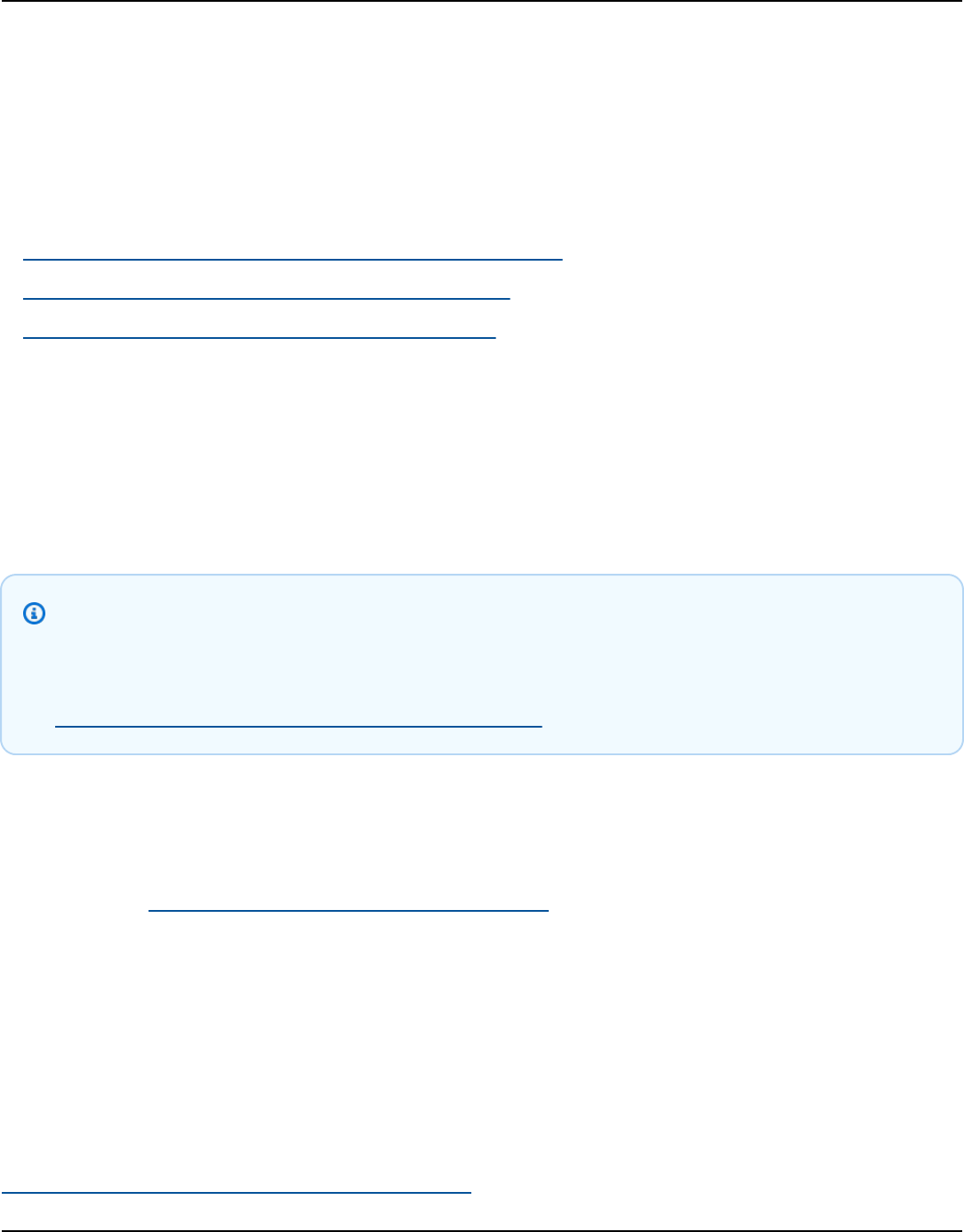
AWS Billing User Guide
Viewing your carbon footprint
You can use the customer carbon footprint tool to view estimates of the carbon emissions
associated with your AWS products and services.
Topics
• Getting started with the customer carbon footprint tool
• Understanding the customer carbon footprint tool
• Understanding your carbon emission estimations
Getting started with the customer carbon footprint tool
The customer carbon footprint tool is available for all accounts. Your data is updated monthly with
a delay of three months while AWS processes the data required to calculate your carbon emission
estimates.
Note
If a report isn't available for your account, your account might be too new to show data,
or your total carbon footprint is under the display threshold. For more information, see
Understanding the customer carbon footprint tool.
To use the customer carbon footprint tool
1. Sign in to the AWS Management Console and open the AWS Billing and Cost Management
console at https://console.aws.amazon.com/billing/.
2. On the navigation pane, choose Legacy Pages, then Cost and Usage Reports.
3. Under Customer Carbon Footprint Tool, choose your Start month and End month.
IAM policies
You must have the IAM permission sustainability:GetCarbonFootprintSummary to access
the customer carbon footprint tool and data. For more information regarding IAM permissions, see
Identity and Access Management for AWS Billing.
Getting started with the customer carbon footprint tool Version 2.0 174

AWS Billing User Guide
AWS Organizations users
If you're signed in as a management account of AWS Organizations, the customer carbon footprint
tool dashboard and spreadsheet download report the consolidated member account data for the
duration that those member accounts were a part of your organization.
If you're a member account, the customer carbon footprint tool reports emission data for all the
periods. This is regardless of any changes that might have occurred to your account's associated
membership in an organization.
Understanding the customer carbon footprint tool
This page defines each console section, so you can understand the information provided in depth.
The unit of measurement for carbon emissions is metric tons of carbon dioxide-equivalent
(MTCO2e), an industry-standard measure. This measurement considers multiple greenhouse gases,
including carbon dioxide, methane, and nitrous oxide. All greenhouse gas emissions are converted
to the amount of carbon dioxide that would result in equivalent warming.
Carbon emissions data is available for the previous 36 months. New data is available monthly,
with a delay of three months as AWS gathers and processes the data that's required to provide
your carbon emissions estimates. You will see your data if the trailing 36 month total carbon
emissions are collectively greater than 0.1 MT. The customer carbon footprint tool shows your
carbon footprint at the 0.001 metric ton, or kilogram, resolution.
Your carbon emissions summary
This section shows your estimated AWS emissions and estimated emissions savings. Emissions
savings are divided into two categories:
• Emission savings from AWS cloud infrastructure efficiencies: this number is the emissions
savings associated with using cloud infrastructure, based on a 451 Research report. The
report shows that moving workloads from on-premise to AWS can lower the workload carbon
footprint by an average of 72%.
• Emission savings from AWS purchase of renewable energy: this number is the difference
between the carbon footprint emissions calculated using the location-based method (LBM)
and the market-based method (MBM).
AWS Organizations users Version 2.0 175

AWS Billing User Guide
Your emissions by geography
This section shows the carbon emissions associated with each applicable geographical region.
This information shows high-level geographical groupings such as AMER, EMEA, and not by
AWS Regions.
Your emissions by service
This section shows the carbon emissions resulting from your usage of Amazon Elastic Compute
Cloud (EC2), Amazon Simple Storage Service (S3), and any other AWS products and services.
Your AWS carbon emissions
This section shows trends in your carbon emissions over time. You can choose between a
monthly, quarterly, or annual view.
Projected future emissions
This graph shows how your carbon emissions are projected to change over time. These figures
are based on your current AWS usage profile.
The Projected future emissions graph isn't impacted by your date range selection.
Understanding your carbon emission estimations
Carbon emissions data in the customer carbon footprint tool adhere to the Greenhouse Gas
Protocol and ISO. Carbon footprint estimates for AWS include Scope 1 (emissions from direct
operations) and Scope 2 (emissions from electricity production) data. For more information about
carbon emissions, see the EPA Scope 1 and Scope 2 Inventory Guidance.
The Scope 2 portion of the estimate is calculated using the GHGP market-based method. This
means it factors in Amazon enabled renewable projects on the grids where the customer footprint
is being estimated. Because we use the market-based method to calculate Scope 2 emissions,
only purchased renewables on the grid where your workloads are running are included in the
carbon footprint estimates. Estimates factor the grid mix of the AWS Regions where you run your
workloads, following GHGP guidance. Carbon emission estimates also factor in the AWS power
usage effectiveness (PUE) in our data centers.
To estimate your emissions savings compared to on-premises workload equivalent, we use data
from 451 Research, which is a part of S&P Global Market Intelligence. This research found that
AWS can lower a workload's carbon footprint by 88% for the median surveyed US enterprise data
Understanding your carbon emission estimations Version 2.0 176

AWS Billing User Guide
centers, and compared to European data enterprise centers, up to 96% once AWS is powered with
100% renewable energy. This target is on path to meet by the year 2025. For more information,
see Reducing carbon by moving to AWS.
Regions, usage, and billing data factors
Electricity grids in different parts of the world use various sources of power. Some use carbon-
intense fuels (for example, coal), and some are primarily low-carbon hydro or other renewables.
The locations of Amazon's renewable energy projects also play a role, because the energy produces
by these projects are accounted against our emissions from Regions on the same grid. As a result,
not all AWS Regions have the same carbon intensity.
There are some Regions where high usage result in relatively low emissions. There are others where
the low usage results in higher emissions. For carbon reports, EMEA Regions are often shown as
under represented in estimates since there are more renewables on the grid. APAC Regions are
often shown over represented in estimates. This is because sourcing renewable energy is difficult.
Carbon estimates are based on usage only, and one-time charges such as upfront Savings Plan
purchases, won't result in similar increases in carbon emissions.
Customer carbon footprint tool and Amazon's carbon footprint report
Amazon's carbon footprint report is a part of our annual sustainability report. This covers Scope
1 through 3 emissions for all Amazon operations, including Amazon Web Services. The customer
carbon footprint report provides you with the emissions that attribute to your own AWS usage. For
more information, see Amazon Sustainability.
Regions, usage, and billing data factors Version 2.0 177

AWS Billing User Guide
Organizing costs using AWS Cost Categories
Cost allocation helps you identify who is spending what, within your organization. Cost categories
is a cost allocation service to help you map your AWS costs, to your unique internal business
structures.
With cost categories, you create rules to group your costs into meaningful categories.
Example Example scenario 1
Say that your business is organized into several teams, Team1, Team2, and so on. Your teams
use 10 AWS accounts in your business. You can define rules to group your AWS costs, so that it's
allocated between these teams.
1.
You created a cost category named Team for your business.
2. For this cost category, you defined a rule so that:
•
All costs for accounts 1-3 are categorized as Team : Team1.
•
All costs for accounts 4-5 are categorized as Team : Team2.
•
For all other accounts, all costs are categorized as Team : Team3.
3. Using this rule, every cost line item from account 6 will be categorized with a cost category
value Team3. These categorizations will appear as a column in your AWS Cost and Usage Report
(AWS CUR) like in the following example. Based on your rule, costs for account 3 are categorized
as Team1. and costs for account 6 is allocated to Team3.
Resource
Id
AccountID LineItemT
ype
UsageType Unblended
Cost
NetUnblen
ded Cost
ResourceT
ag/
Project
costCateg
ory/
Team
i-11223 3 Usage BoxUsage:
c1.xlarge
3.36 3.36 Beta
Team1
i-12345 6 SavingsPl
anCovered
Usage
BoxUsage:
m5.xl
150 140 Alpha
Team3
Version 2.0 178

AWS Billing User Guide
You can also use these categories across multiple products in the AWS Billing and Cost
Management console. This includes AWS Cost Explorer, AWS Budgets, AWS CUR, and AWS Cost
Anomaly Detection. For example, you can filter costs allocated to Team1 in Cost Explorer. by
applying the filter value = Team 1, to the cost category named Team.
You can also create multilevel hierarchical relationships among your cost categories to replicate
your organizational structure.
Example Example scenario 2
1.
You create another cost category named BusinessUnit that includes groupings of multiple
teams.
2.
You then define a cost category value that's named BU1. For this cost category value, you select
Team 1 and Team 2 from your Team cost category.
3.
You then define a cost category value that's named BU2. For this cost category value, you select
Team 3 and Team 4 from the Team cost category.
This example will appear in your cost and usage report, as shown below.
Resource
Id
AccountID LineItemT
ype
UsageTypeUnblended
Cost
NetUnblen
ded
Cost
ResourceT
ag/
Project
costCateg
ory/
Team
costCateg
ory/
Busin
essUnit
i-11223 3 Usage BoxUsage:
c1.xlarge
3.36 3.36 Beta
Team1 BU1
i-12345 6 SavingsPl
anCovered
Usage
BoxUsage:
m5.xl
150 140 Alpha
Team3 BU2
After you create the cost categories, they appear in Cost Explorer, AWS Budgets, AWS CUR,
and Cost Anomaly Detection. In Cost Explorer and AWS Budgets, a cost category appears as an
additional billing dimension. You can use this to filter for the specific cost category value, or
group by the cost category. In AWS CUR, the cost category appears as a new column with the cost
category value in each row. In Cost Anomaly Detection, you can use cost category as a monitor
type to monitor your total costs across specified cost category values.
Version 2.0 179

AWS Billing User Guide
Notes
• Similar to resource tags, which are key-value pairs applied to AWS resources, a cost
category is a key-value pair, applied to every cost line item. The key is the cost category
name. The value is the cost category value. In the previous examples, this means that
the cost category name Team is the key. Team1, Team2, and Team3 are the cost category
values.
• Cost categories are effective at the start of the current month. If you create or update
your cost category in the middle of the month, your change is automatically applied to
cost and usage from the start of the month. For example, if you updated your rules for a
cost category on Oct 15, any cost and usage since Oct 1 will use your updated rules.
• Only the management account in AWS Organizations or individual accounts can create
and manage cost categories.
Topics
• Supported dimensions
• Supported operations
• Supported rule types
• Default value
• Status
• Quotas
• Term comparisons
• Creating cost categories
• Tagging cost categories
• Viewing cost categories
• Downloading your cost category values
• Editing cost categories
• Deleting cost categories
• Splitting charges within cost categories
Version 2.0 180

AWS Billing User Guide
Supported dimensions
You can select from a list of billing dimensions to create your cost category rules. These billing
dimensions are used to group your data. For example, assume that you wanted to group a set of
accounts to form a team. You need to choose the account billing dimension, and then choose the
list of accounts that you want to include in the team.
The following billing dimensions are supported.
Account
This can be the AWS account name or the account ID, depending on the operation. If you're
using an exact match operation (is or is not), account refers to the account ID. If you're using
an approximate match operation (starts with, ends with, or contains), account refers to
account name.
Charge type
The type of charges based on line items details. Also referred to as the RECORD_TYPE in the
Cost Explorer API. For more information, see Term comparisons.
Cost category
A dimension from another cost category. Using cost categories as a dimension helps you
organize the levels of categories.
Region
The geographic areas where AWS hosts your resources.
Service
AWS services, such as Amazon EC2, Amazon RDS, and Amazon S3.
Tag key
The cost allocation tag keys that are specified on the resource. For more information, see
Organizing and tracking costs using AWS cost allocation tags.
Usage Type
Usage types are the units that each service uses to measure the usage of a specific type of
resource. For example, the BoxUsage:t2.micro(Hrs) usage type filters by the running hours of
Amazon EC2 t2.micro instances.
Supported dimensions Version 2.0 181

AWS Billing User Guide
Billing Entity
Billing entities are the units to identify if your invoices or transactions are for AWS Marketplace
or for purchases of other AWS services. For example, the AWS Marketplace billing entity filters
by the invoices or transactions for purchases of AWS Marketplace.
Supported operations
You can use these operations to create the filter expression when you're creating a cost category
rule.
The following operations are supported.
Is
The exact match operation that's used to filter for the exact value specified.
Is not
The exact match operation that's used to filter for the exact value that isn't specified.
Is absent
The exact match operation that's used to exclude the tag key that matches this value.
Contains
The approximate match that's used to filter for a text string containing this value. This value is
case sensitive.
Starts with
The approximate match that's used to filter for a text string that starts with this value. This
value is case sensitive.
Ends with
The approximate match that's used to filter for a text string that ends with this value. This value
is case sensitive.
Supported rule types
Use rule type to define which cost category values to use to categorize your costs.
Supported operations Version 2.0 182

AWS Billing User Guide
The following rule types are supported.
Regular Rule
This rule type adds statically defined cost category values that categorize costs based on the
defined dimension rules.
Inherited Value
This rule type adds the flexibility of defining a rule that dynamically inherits the cost category
value from the dimension value defined. For example, assume that you wanted to dynamically
group costs based on the value of a specific tag key. You need to choose the inherited value rule
type, then choose the Tag dimension and specify the tag key to use. Optionally, you can use a
tag key, teams, to tag your resources. They can tag them with values such as alpha, beta, and
gamma. Then, with an inherited value rule, you can select Tag as the dimension and use teams
as the tag key. This generates the dynamic cost category values of alpha, beta, and gamma.
Default value
Optionally, if no rules are matched for the cost category, you can define this value to be used
instead.
Status
You can use the console to confirm the status of whether your cost categories completed
processing the cost and usage information. After you create or edit a cost category, it can take up
to 24 hours before it has categorized your cost and usage information in the AWS Cost and Usage
Report, Cost Explorer, and other cost management products.
There are two status states.
Applied
Cost categories completed processing, and the information in AWS Cost and Usage Report, Cost
Explorer, and other cost management products is up to date with the new rules.
Processing
The cost category updates are still in progress.
Default value Version 2.0 183

AWS Billing User Guide
Quotas
For more information about cost categories quotas, see Quotas and restrictions.
Term comparisons
CHARGE_TYPE is a dimension supported for cost category expressions. It's the RECORD_TYPE value
in the Cost Explorer API. This dimension uses different terms, depending on whether you're using
the console or the API/JSON editor. The following table compares the terminology used for both
scenarios.
Term comparison
Value in API or JSON editor Name used in the console
Credit Credit
DiscountedUsage Reservation applied usage
Fee Fee
Refund Refund
RIFee Recurring reservation fee
SavingsPlanCoveredUsage Savings Plan Covered Usage
SavingsPlanNegation Savings Plan Negation
SavingsPlanRecurringFee Savings Plan Recurring Fee
SavingsPlanUpfrontFee Savings Plan Upfront Fee
Tax Tax
Usage Usage
Quotas Version 2.0 184

AWS Billing User Guide
Creating cost categories
Cost allocation helps you map and assign your AWS Cloud costs to the correct groups within your
organization. To allocate these costs, create cost categories. Cost categories are composed of rules.
There are two types of rules:
1. Rules to group costs
2. Rules to split costs
Rules to group costs
Define rules to group costs by using one or more of the following dimensions:
• Accounts
• Cost allocation tags
• Charge Type, such as credits and refunds
• Service
• Region
• Usage Type, such as BoxUsage:t2.micro
• Billing Entity, such as AWS and AWS Marketplace
Rules are evaluated in the order in which they're defined.
Example Example: Rules to group costs
Your engineering department has projects Alpha and Beta, and the marketing department has
project Gamma.
All resources are tagged with the project name that they're used for, such as Project:Alpha,
Project:Beta, or Project:Gamma.
You create a cost category named Department to allocate costs to the Marketing and
Engineering departments. For the Department cost category, you define your rules as:
•
Rule 1: If a cost has a cost allocation tag of Project:Alpha or Project:Beta, then assign
the cost to Department:Engineering.
•
Rule 2: If a cost has a cost allocation tag of Project:Gamma, then assign the cost to
Department:Marketing.
Creating cost categories Version 2.0 185

AWS Billing User Guide
You can also provide a default name for uncategorized costs. In this example, costs associated
with untagged resources should be allocated to the IT department
•
Rule 1: If a cost has a cost allocation tag of Project:Alpha or Project:Beta, then assign
the cost to Department:Engineering.
•
Rule 2: If a cost has a cost allocation tag of Project:Gamma, then assign the cost to
Department:Marketing.
•
For all other costs, assign it to Department:IT.
In this example, the cost category name is Department. The cost category values are
Engineering, Marketing, and IT.
Rules to split costs
Costs that are allocated to one cost category value can be split among others. In this example, if
IT costs should be split between Engineering and Marketing departments in a 70:30 ratio,
you can define a split charge rule to perform that allocation.
When you create your cost category, you can provide additional details such as:
• Effective Date – Set the start date for your cost category. By default, this date will be set to
the current month. If you choose a prior month, your cost category rules are then applied
retroactively from that date.
• Tags – To control access to who can edit this cost category, add a tag to the cost category.
You then update your IAM policy to allow or deny access to that cost category. For example,
you can add a tag Role:Administrator to your cost categories and then update an IAM
policy to explicitly allow specific roles access to cost categories that have that tag.
Dy default, regular accounts and the management account in AWS Organizations have access to
create cost categories.
Tip
To request a backfill of your cost data in your AWS Cost and Usage Report, create a support
case. In your support case, specify the report name and the billing period that you want
backfilled. For more information, see Contacting AWS Support.
Use the following procedure to create a cost category. After you create a cost category, wait up to
24 hours for your usage records to be updated with the cost category values.
Creating cost categories Version 2.0 186

AWS Billing User Guide
To create a cost category
1. Sign in to the AWS Management Console and open the AWS Billing and Cost Management
console at https://console.aws.amazon.com/billing/.
2. In the navigation pane, choose Cost Categories.
3. Choose Create cost category. You can use the cost preview panel as reference as you update
your rules.
4. Next to Group your costs, enter the name of your cost category. Your cost category name
must be unique within your account.
5. Use either the Rule Builder or JSON editor to define your cost categories.
For more information about the JSON request syntax, see the Cost category section in the AWS
Billing and Cost Management API Reference
6. For Rule builder, choose Add rule.
7. Choose Rule type, either Manually define how to group costs (Regular rule) or
Automatically group costs by account or tag (Inherit rule).
8. For regular rule, choose if your costs meets all or any of the conditions.
9. Choose a billing Dimension from the list.
a. For a regular rule type, you can choose Accounts, Service, Charge Type (for example,
recurring reservation fee), Tag key, Region, Usage Type, Cost Category, or Billing
Entity. (You can choose Cost Category to create hierarchical relationships among your
cost categories.)
b. For an inherited value rule type, you can choose Account or Tag key (Cost allocation tags
key).
10. For a regular rule type, choose Operator from the dropdown list. Your options are Is, Contains,
Starts with, and Ends with.
Note
Contains, Starts with, and Ends with are only supported with Accounts and Tag
dimensions. If you use these operators with Accounts, the engine evaluates against
account name, and not account ID.
11. Choose a filtered value or enter your own value for your Dimension in the attribute selector.
Creating cost categories Version 2.0 187

AWS Billing User Guide
Note
The Account dimension uses account names, not account IDs for the inherited cost
category value.
12. Choose Add a condition as needed and repeat steps 9 - 11.
13. For Group costs together as, enter a cost category value.
14. Choose Create rule.
15. (Optional) Add a default value. It categorizes all unmatched costs to this value.
16. (Optional) To rearrange the rule order, use the arrows or change the number on the top right
of each rule.
Rules are processed in order. If there are multiple rules that match the line item, then the first
rule to match is used to determine that cost category value.
17. (Optional) To remove a rule, select the rule and choose Delete.
18. Choose Next.
19. (Optional) To split your cost, choose Add a split charges. For more information about split
charge rules, see Splitting charges within cost categories.
a. Choose Add a split charge.
b. Under Source value, choose your cost category value.
c. Under Target values, choose one or more cost category values you wish to allocate split
charges to.
d. Under Charge allocation method, choose how you want to allocate your costs. Your
choices are proportional, fixed, and even split.
e. For fixed charge allocation, enter the percentage amount to allocate each target cost
category value.
f. Repeat step 19 as needed.
20. Choose Next.
21. (Optional) To add a lookback period for your cost category rules, choose the month from when
you want to retroactively apply the rules.
22. (Optional) To add a tag, choose Add new resource tag and enter a key and value.
23. Choose Create cost category.
Creating cost categories Version 2.0 188

AWS Billing User Guide
Understanding the cost preview panel
The cost preview panel shows you in real time how your costs group together or split apart as
you create or update your cost categories rules. The results you see in the cost preview panel is an
estimate based on your month-to-date net amortized cost.
Here are some things to keep in mind as you use the cost preview panel:
• The cost preview results might not be accurate if your rules have complex conditions. For
example, containing too many matched values with Contains, Starts With, Ends With
operators.
For a more precise results, save your rules and check the cost categories details page.
• If your rules are too complex or takes too long to calculate in real time, the preview will not show
a cost breakdown.
Tagging cost categories
Tagging cost categories is beneficial to control access to cost categories. For more information, see
Controlling access to AWS resources using tags in the IAM User Guide.
You can tag your existing cost categories using the following procedure:
To tag a cost category
1. Sign in to the AWS Management Console and open the AWS Billing and Cost Management
console at https://console.aws.amazon.com/billing/.
2. In the navigation pane, choose Cost Categories.
3. Choose the cost category you want to tag.
4. Navigate to the Resource tags section.
5. Choose Manage resource tags.
6. Choose Add new resource tag.
7. Enter a Key and Value.
8. Once you configure the tags, choose Save changes.
Understanding the cost preview panel Version 2.0 189

AWS Billing User Guide
Viewing cost categories
From the cost categories dashboard in AWS Billing and Cost Management, you can view
comprehensive information about your category details and values by using details page. This
section shows you how to navigate to the details page, understand values shown, and customize
your view to show different cost types.
Topics
• Navigating to your cost category details page
• Understanding your cost category details page
• Your cost category month-to-date categorizations
• Change your cost type
Navigating to your cost category details page
You can choose any cost category name in the Billing and Cost Management console to open a
details page. The details page is also shown when you add or edit a cost category.
To view your cost category details page
1. Sign in to the AWS Management Console and open the AWS Billing and Cost Management
console at https://console.aws.amazon.com/billing/.
2. In the navigation pane, choose Cost categories.
3. Under the Cost category column, choose a cost category name.
Understanding your cost category details page
Your cost category details page breaks down your month-to-date cost allocations using the
Category details and Category values sections.
• Use the month selector on the top right of the page to change the month you're viewing. You
can see a detailed breakdown of cost category value cost allocations within your cost category.
• Under the Category details section, you can view your current status, default value, value count,
and your total month-to-date net amortized costs.
• The graph under Categorized costs shows the allocation of cost category values in your monthly
spend. Any uncategorized costs are shown as Uncategorized.
Viewing cost categories Version 2.0 190

AWS Billing User Guide
Your cost category month-to-date categorizations
In the Category values section, you can see the month-to-date spend for each configured cost
category value. The amounts that are shown are the net amortized costs.
To further explore your costs, open Cost Explorer by choosing View in AWS Cost Explorer.
Change your cost type
You can view your cost categories by using different cost types. You can choose the following
options:
• Unblended costs
• Amortized costs
• Blended costs
• Net unblended costs
• Net amortized costs
For more information about these cost types, see Exploring your data using Cost Explorer in the
AWS Cost Management User Guide.
To change your cost category type
1. Open the AWS Billing and Cost Management console at https://console.aws.amazon.com/
billing/.
2. In the navigation pane, choose Cost categories.
3. Under the Cost category column, choose a cost category name. Currently, you can change the
cost type for a cost category one at a time.
4. On the upper-right corner of the page, choose the preferences icon
( ).
5. In the Cost category preferences dialog box, choose how to aggregate your costs.
6. Choose Confirm. The page will refresh with the new cost type.
Your cost category month-to-date categorizations Version 2.0 191

AWS Billing User Guide
Downloading your cost category values
You can download an offline copy of your month-to-date cost category spend from your cost
category dashboard details page. The details page is presented after you create or edit your cost
category.
To download your cost category details page
1. Open the AWS Billing and Cost Management console at https://console.aws.amazon.com/
billing/.
2. In the navigation pane, choose Cost categories.
3. Under the Cost category column, choose a cost category name.
4. Choose Download CSV to download a comma-separated values file.
Editing cost categories
You can edit your cost categories using the following procedure. Cost category names can't be
edited. If you're using split charges, you can choose Uncategorized cost as your source value at this
time.
To edit a cost category
1. Sign in to the AWS Management Console and open the AWS Billing and Cost Management
console at https://console.aws.amazon.com/billing/.
2. In the navigation pane, choose cost categories.
3. Select the cost category to edit.
4. Choose Edit cost category.
5. If you want the changes to retroactively apply from a previous date, choose the month you
want the parameter changes to apply from.
6. Make changes to parameters and choose Confirm cost category.
Deleting cost categories
You can delete your cost categories using the following procedure.
Downloading your cost category values Version 2.0 192

AWS Billing User Guide
To delete a cost category
1. Sign in to the AWS Management Console and open the AWS Billing and Cost Management
console at https://console.aws.amazon.com/billing/.
2. In the navigation pane, choose Cost categories.
3. Select the cost category to delete.
4. Choose Delete cost category.
Note
Once you delete a cost category, it can continue to appear in your reports for up to 12
months, depending on the date range that you specify. For example, say that you deleted
CostCategoryA on September 15. If you create an AWS Cost Explorer report from
October 1 to December 31, this cost category won't appear in your report.
Splitting charges within cost categories
You can use split charge rules to allocate your charges between your cost category values. Splitting
charges is useful when you have costs that aren't directly attributed to a single owner. Therefore,
the costs can't be categorized into a single cost category value. For example, your organization
has a set of costs shared by multiple teams, business units, and financial owners that incur data
transfer costs, enterprise support, and operating costs. You can define split charge rules when you
create or edit your cost categories. For more information about these processes, see Creating cost
categories and Editing cost categories.
This is a list of terms you'll see when configuring your split charges.
Source
The group of shared costs you want to split. Sources can be any of your existing cost category
values.
Targets
The cost category values you want to split your costs across, defined by the source.
Splitting charges within cost categories Version 2.0 193

AWS Billing User Guide
Allocation method
How you want your source costs split between your targets. You can choose from the following
methods:
Proportional - Allocates costs across your targets based on the proportional weighted cost of
each target.
Fixed - Allocates costs across your targets based on your defined allocation percentage.
Even split - Allocates costs evenly across all targets.
Prerequisites
Before you define your split charge rules, you must categorize your costs into the appropriate cost
category values.
Example Example
You define a business unit view of your organization, using a Business unit cost category, with
values engineering, marketing, and FinOps. Your organization is also operating a shared
infrastructure platform that supports engineering and marketing business units.
To allocate costs of this shared infrastructure platform to the target business unit, categorize
its costs into a new cost category value, Infrastructure Platform using the appropriate
dimensions.
We recommend that you move your cost category values containing shared costs to the top of
the rule list. Because cost category rules are evaluated in a top-down order, your shared costs
are categorized before individual business units are categorized. After these shared costs are
categorized, they can then be split across your business units.
Understanding split charge best practices
For instructions on how to configure your split charges, see Creating cost categories step 15. After
you define split charge rules, you can view the split and allocated costs on the cost categories
details page in the console. The details page provides an overview of your costs for each cost
category value. This includes the costs for before and after calculating the split charges. You can
also download a CSV report from the details page.
Prerequisites Version 2.0 194

AWS Billing User Guide
Note the following scenarios when configuring your split charges:
• A cost category value can be used as a source only once across all split charge rules. This means
that, if a value is used as a source, it can't be used as a target. If the value is used as a target, it
can't be used as a source. A value can be used as a target in multiple split charge rules.
• If you want to use cost category values as a source or split charge target when the value was
created from inherited values rules, you must wait until the cost category status changes to
Applied.
• Split charge rules and the total allocated costs are only presented on the cost categories details
page. These costs do not appear and don't impact your AWS Cost and Usage Reports, Cost
Explorer, and other AWS Cost Management tools.
• You can define up to 10 split charge rules for a cost category
For more information about cost category quotas, see Cost categories.
Understanding split charge best practices Version 2.0 195

AWS Billing User Guide
Organizing and tracking costs using AWS cost allocation
tags
Note
For questions about your AWS bills or to appeal your charges, contact AWS Support to
address your inquiries immediately. To get help, see Getting help with your bills and
payments. To understand your bills page contents, see Using the Bills page to understand
your monthly charges and invoice.
A tag is a label that you or AWS assigns to an AWS resource. Each tag consists of a key and a value.
For each resource, each tag key must be unique, and each tag key can have only one value. You can
use tags to organize your resources, and cost allocation tags to track your AWS costs on a detailed
level. After you activate cost allocation tags, AWS uses the cost allocation tags to organize your
resource costs on your cost allocation report, to make it easier for you to categorize and track your
AWS costs.
AWS provides two types of cost allocation tags, an AWS-generated tags and user-defined tags.
AWS, or AWS Marketplace ISV defines, creates, and applies the AWS-generated tags for you, and
you define, create, and apply user-defined tags. You must activate both types of tags separately
before they can appear in Cost Explorer or on a cost allocation report.
The following diagram illustrates the concept. In the example, you've assigned and activated tags
on two Amazon EC2 instances, one tag called Cost Center and another tag called Stack. Each of
the tags has an associated value. You also activated the AWS-generated tags, createdBy before
creating these resources. The createdBy tag tracks who created the resource. The user-defined
tags use the user prefix, and the AWS-generated tag uses the aws: prefix.
Version 2.0 196
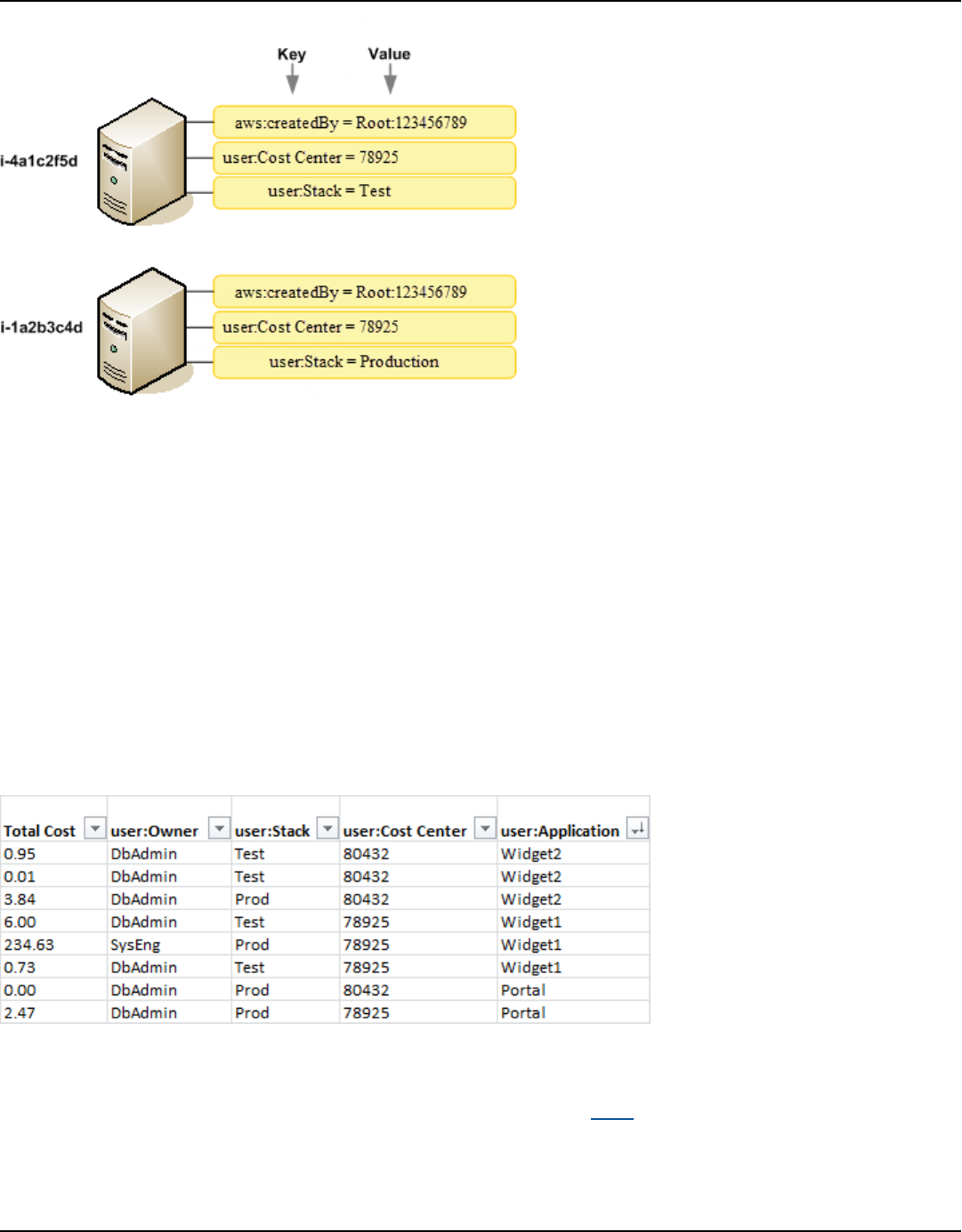
AWS Billing User Guide
After you or AWS applies tags to your AWS resources (such as Amazon EC2 instances or Amazon
S3 buckets) and you activate the tags in the Billing and Cost Management console, AWS generates
a cost allocation report as a comma-separated value (CSV file) with your usage and costs grouped
by your active tags. You can apply tags that represent business categories (such as cost centers,
application names, or owners) to organize your costs across multiple services.
The cost allocation report includes all of your AWS costs for each billing period. The report includes
both tagged and untagged resources, so that you can clearly organize the charges for resources.
For example, if you tag resources with an application name, you can track the total cost of a single
application that runs on those resources. The following screenshot shows a partial report with
columns for each tag.
At the end of the billing cycle, the total charges (tagged and untagged) on the billing report with
cost allocation tags reconciles with the total charges on your Bills page total and other billing
reports for the same period.
Version 2.0 197

AWS Billing User Guide
You can also use tags to filter views in Cost Explorer. For more information about Cost Explorer, see
Analyzing your costs with AWS Cost Explorer.
For more information about activating the AWS-generated tags, see Activating AWS-generated
tags cost allocation tags. For more information about applying and activating user-defined tags,
see Using user-defined cost allocation tags. All tags can take up to 24 hours to appear in the Billing
and Cost Management console.
Notes
• As a best practice, don't include sensitive information in tags.
• Only the management account in an organization and single accounts that aren't
members of an organization have access to the cost allocation tags manager in the
Billing console.
• To create and update tags, use AWS Tag Editor. For more information about Tag Editor,
see Using Tag Editor in the Tagging AWS Resources User Guide.
Topics
• Using AWS-generated tags
• Using user-defined cost allocation tags
• Backfill cost allocation tags
• Using the monthly cost allocation report
• Understanding dates for cost allocation tags
Using AWS-generated tags
The AWS-generated tag createdBy is a tag that AWS defines and applies to supported AWS
resources for cost allocation purposes. To use the AWS-generated tag, a management account
owner must activate it in the Billing and Cost Management console. When a management
account owner activates the tag, the tag is also activated for all member accounts. After the tag is
activated, AWS starts applying the tag to resources that are created after the AWS-generated tag
is activated. The AWS-generated tag is available only in the Billing and Cost Management console
and reports, and doesn't appear anywhere else in the AWS console, including the AWS Tag Editor.
The createdBy tag does not count towards your tags per resource quota.
Using AWS-generated tags Version 2.0 198

AWS Billing User Guide
The aws:createdBy tags are populated only in the following AWS Regions:
•
ap-northeast-1
•
ap-northeast-2
•
ap-south-1
•
ap-southeast-1
•
ap-southeast-2
•
cn-north-1
•
eu-central-1
•
eu-west-1
•
sa-east-1
•
us-east-1
•
us-east-2
•
us-gov-west-1
•
us-west-1
•
us-west-2
Resources created outside of these AWS Regions will not have this tag auto-populated.
The createdBy tag uses the following key-value definition:
key = aws:createdBy
value = account-type:account-ID or access-key:user-name or role session name
Not all values include all of the value parameters. For example, the value for a AWS-generated tag
for a root account doesn't always have a user name.
Valid values for the account-type are Root, IAMUser, AssumedRole, and FederatedUser.
If the tag has an account ID, the account-id tracks the account number of the root account or
federated user who created the resource. If the tag has an access key, then the access-key tracks
the IAM access key used and, if applicable, the session role name.
The user-name is the user name, if one is available.
Using AWS-generated tags Version 2.0 199
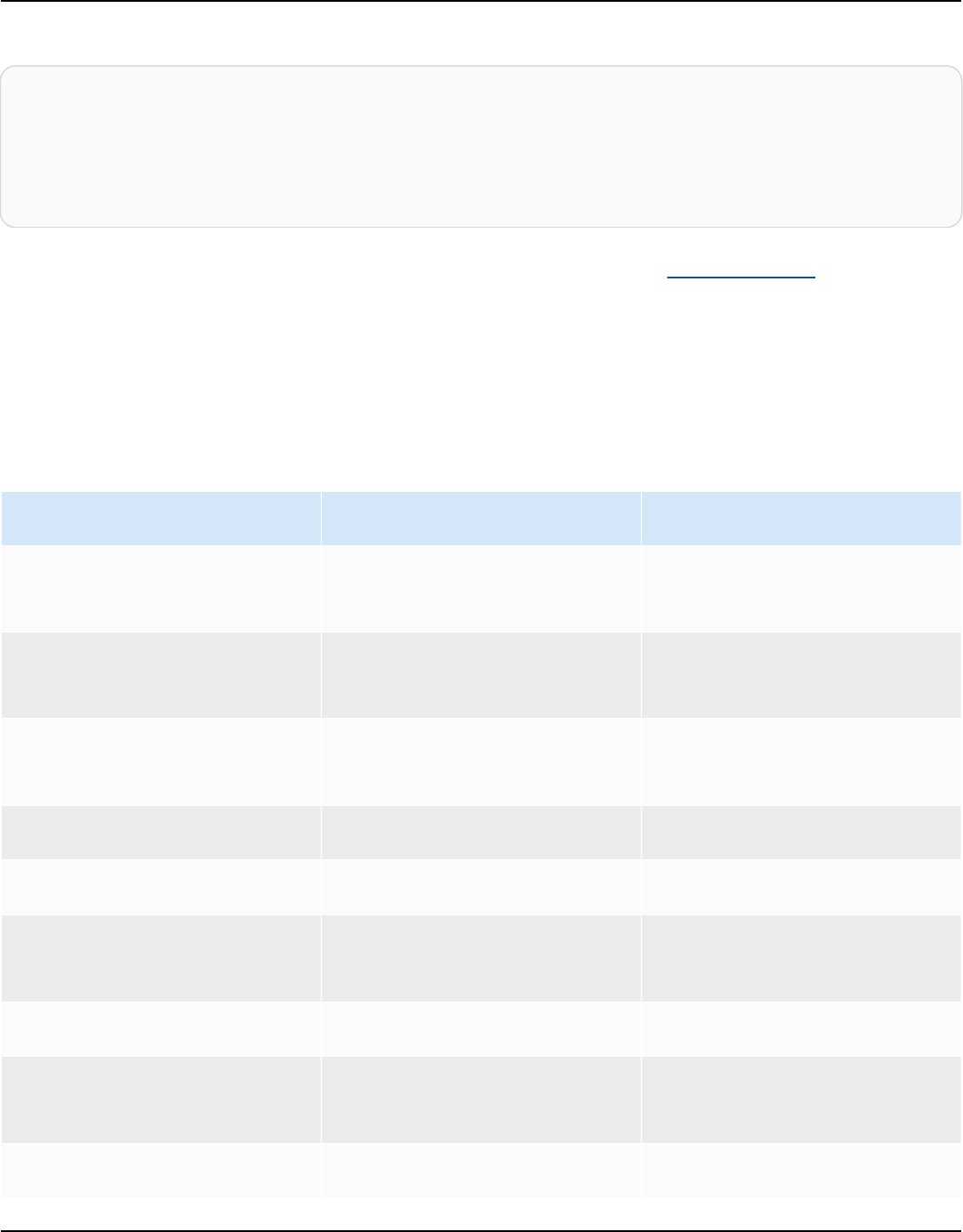
AWS Billing User Guide
Here are some examples of tag values:
Root:1234567890
Root: 111122223333 :exampleUser
IAMUser: AIDACKCEVSQ6C2EXAMPLE :exampleUser
AssumedRole: AKIAIOSFODNN7EXAMPLE :exampleRole
FederatedUser:1234567890:exampleUser
For more information about IAM users, roles, and federation, see the IAM User Guide.
AWS generated cost allocation tags are applied on a best-effort basis. Issues with services that
AWS-generated tag depends on, such as CloudTrail, can cause a gap in tagging.
The createdBy tag is applied only to the following services and resources after the following
events.
AWS Product API or Console Event Resource Type
AWS CloudFormation (AWS
CloudFormation)
CreateStack
Stack
AWS Data Pipeline (AWS Data
Pipeline)
CreatePipeline
Pipeline
Amazon Elastic Compute
Cloud (Amazon EC2)
CreateCustomerGate
way
Customer gateway
CreateDhcpOptions
DHCP options
CreateImage
Image
CreateInternetGate
way
Internet gateway
CreateNetworkAcl
Network ACL
CreateNetworkInter
face
Network interface
CreateRouteTable
Route table
Using AWS-generated tags Version 2.0 200

AWS Billing User Guide
AWS Product API or Console Event Resource Type
CreateSecurityGroup
Security group
CreateSnapshot
Snapshot
CreateSubnet
Subnet
CreateVolume
Volume
CreateVpc
VPC
CreateVpcPeeringCo
nnection
VPC peering connection
CreateVpnConnection
VPN connection
CreateVpnGateway
VPN gateway
PurchaseReservedIn
stancesOffering
Reserved-instance
RequestSpotInstances
Spot-instance-request
RunInstances
Instance
Amazon ElastiCache (ElastiCa
che)
CreateSnapshot
Snapshot
CreateCacheCluster
Cluster
AWS Elastic Beanstalk (Elastic
Beanstalk)
CreateEnvironment
Environment
CreateApplication
Application
Elastic Load Balancing (Elastic
Load Balancing)
CreateLoadBalancer
Loadbalancer
Amazon S3 Glacier (S3
Glacier)
CreateVault
Vault
Using AWS-generated tags Version 2.0 201

AWS Billing User Guide
AWS Product API or Console Event Resource Type
Amazon Kinesis (Kinesis)
CreateStream
Stream
Amazon Relational Database
Service (Amazon RDS)
CreateDBInstanceRe
adReplica
Database
CreateDBParameterG
roup
ParameterGroup
CreateDBSnapshot
Snapshot
CreateDBSubnetGroup
SubnetGroup
CreateEventSubscri
ption
EventSubscription
CreateOptionGroup
OptionGroup
PurchaseReservedDB
InstancesOffering
ReservedDBInstance
CreateDBInstance
Database
Amazon Redshift (Amazon
Redshift)
CreateClusterParam
eterGroup
ParameterGroup
CreateClusterSnaps
hot
Snapshot
CreateClusterSubne
tGroup
SubnetGroup
CreateCluster
Cluster
Amazon Route53 (Route53)
CreateHealthCheck
HealthCheck
CreatedHostedZone
HostedZone
Using AWS-generated tags Version 2.0 202

AWS Billing User Guide
AWS Product API or Console Event Resource Type
Amazon Simple Storage
Service (Amazon S3)
CreateBucket
Bucket
AWS Storage Gateway
(Storage Gateway)
ActivateGateway
Gateway
Note
The CreateDBSnapshot tag isn't applied to the snapshot backup storage.
AWS Marketplace vendor-provided tags
Certain AWS Marketplace vendors can create tags and associate them with your software usage.
These tags will have the prefix aws:marketplace:isv:. To use the tags, a management account
owner must activate the tag in the Billing and Cost Management console. When a management
account owner activates the tag, the tag is also activated for all member accounts. Similar to
aws:createdBy tags, these tags appear only in the Billing and Cost Management console and
they don't count towards your tags per resource quota. You can find the tag keys that apply to the
product on the AWS Marketplace product pages.
Restrictions on AWS-generated tags cost allocation tags
The following restrictions apply to the AWS-generated tags:
• Only a management account can activate AWS-generated tags.
• You can't update, edit, or delete AWS-generated tags.
• The maximum active tag keys for Billing and Cost Management reports is 500.
• AWS-generated tags are created using CloudTrail logs. CloudTrail logs over a certain size cause
AWS-generated tag creation to fail.
•
The reserved prefix is aws:.
AWS-generated tag names and values are automatically assigned the aws: prefix, which you
can't assign. AWS-generated tag names don't count towards the user-defined resource tag quota
of 50. User-defined tag names have the prefix user: in the cost allocation report.
AWS Marketplace vendor-provided tags Version 2.0 203

AWS Billing User Guide
• Null tag values will not appear in Cost Explorer and AWS Budgets. If there is only one tag value
that is also null, the tag key will also not appear in Cost Explorer or AWS Budgets.
Activating AWS-generated tags cost allocation tags
Management account owners can activate the AWS-generated tags in the Billing and Cost
Management console. When a management account owner activates the tag, it's also activated
for all member accounts. This tag is visible only in the Billing and Cost Management console and
reports.
Note
You can activate the createdBy tag in the Billing and Cost Management console. This tag
is available in specific AWS Regions. For more information, see Using AWS-generated tags.
To activate the AWS-generated tags
1. Sign in to the AWS Management Console and open the AWS Billing and Cost Management
console at https://console.aws.amazon.com/billing/.
2. In the navigation pane, choose Cost allocation tags.
3.
Under AWS-generated cost allocation tags, choose the createdBy tag.
4. Choose Activate. It can take up to 24 hours for tags to activate.
Deactivating the AWS-generated tags cost allocation tags
Management account owners can deactivate the AWS-generated tags in the Billing and Cost
Management console. When a management account owner deactivates the tag, it's also
deactivated for all member accounts. After you deactivate the AWS-generated tags, AWS no longer
applies the tag to new resources. Previously tagged resources remain tagged.
To deactivate the AWS-generated tags
1. Sign in to the AWS Management Console and open the AWS Billing and Cost Management
console at https://console.aws.amazon.com/billing/.
2. In the navigation pane, choose Cost allocation tags.
Activating AWS-generated tags cost allocation tags Version 2.0 204

AWS Billing User Guide
3. Under AWS-generated cost allocation tags, choose Deactivate.
It can take up to 24 hours for tags to deactivate.
Using user-defined cost allocation tags
User-defined tags are tags that you define, create, and apply to resources. After you have created
and applied the user-defined tags, you can activate by using the Billing and Cost Management
console for cost allocation tracking. Cost allocation tags appear on the console after you've
enabled Cost Explorer, Budgets, AWS Cost and Usage Reports, or legacy reports. After you activate
the AWS services, they appear on your cost allocation report. You can then use the tags on your
cost allocation report to track your AWS costs. Tags are not applied to resources that were created
before the tags were created.
Note
• As a best practice, reactivate your cost allocation tags when moving organizations.
When an account moves to another organization as a member, previously activated cost
allocation tags for that account lose their "active" status and need to be activated again
by the new management account.
• As a best practice, do not include sensitive information in tags.
• Only a management account in an organization and single accounts that aren't members
of an organization have access to the cost allocation tags manager in the Billing and
Cost Management console.
Applying user-defined cost allocation tags
For ease of use and best results, use the AWS Tag Editor to create and apply user-defined tags. The
Tag Editor provides a central, unified way to create and manage your user-defined tags. For more
information, see Working with Tag Editor in the AWS Resource Groups User Guide.
For supported services, you can also apply tags to resources using the API or the AWS Management
Console. Each AWS service has its own implementation of tags. You can work with these
implementations individually or use Tag Editor to simplify the process. For a full list of services that
support tags, see Supported Resources for Tag-based Groups and Resource Groups Tagging API
Reference.
Using user-defined cost allocation tags Version 2.0 205

AWS Billing User Guide
Note
The behavior of cost allocation tags varies across AWS services. To learn more about the
cost allocation tag behavior for a supported service, refer to the service’s documentation.
For example, to learn more about using cost allocation tags with Amazon ECS, see Tagging
your Amazon ECS resources in the Amazon Elastic Container Service Developer Guide.
After you create and apply user-defined tags, you can activate them for cost allocation. If you
activate your tags for cost allocation, it's a good idea to devise a set of tag keys that represent how
you want to organize your costs. Your cost allocation report displays the tag keys as additional
columns with the applicable values for each row, so it's easier to track your costs if you use a
consistent set of tag keys.
Some services launch other AWS resources that the service uses, such as Amazon EMR launching
an EC2 instance. If the supporting service (EC2) supports tagging, you can tag the supporting
resources (such as the associated Amazon EC2 instance) for your report. For a full list of resources
that can be tagged, use the Tag Editor to search. For more information about how to search for
resources using Tag Editor, see Searching for Resources to Tag.
Notes
• AWS Marketplace line items are tagged with the associated Amazon EC2 instance tag.
•
The awsApplication tag will be automatically added to all resources that are
associated with applications that are set up in AWS Service Catalog AppRegistry. This tag
is automatically activated for you as a cost allocation tag. Tags that are automatically
activated don’t count towards your cost allocation tag quota. For more information, see
Quotas and restrictions.
User-defined tag restrictions
For basic tag restrictions, see Tag Restrictions in the Amazon EC2 User Guide.
The following restrictions apply to user-defined tags for Cost Allocation:
•
The reserved prefix is aws:.
User-defined tag restrictions Version 2.0 206

AWS Billing User Guide
AWS-generated tag names and values are automatically assigned the aws: prefix, which you
can't assign. User-defined tag names have the prefix user: in the cost allocation report.
• Use each key only once for each resource. If you attempt to use the same key twice on the same
resource, your request will be rejected.
• In some services, you can tag a resource when you create it. For more information, see the
documentation for the service where you want to tag resources.
• If you need characters outside of those listed in Tag Restrictions, you can apply standard base-64
encoding to your tag. Billing and Cost Management does not encode or decode your tag for you.
• User-defined tags on non-metered services can be activated (for example, Account Tagging).
However, these tags will not populate in the Cost Management suite because these services are
not metered.
Activating user-defined cost allocation tags
For tags to appear on your billing reports, you must activate them. Your user-defined
cost allocation tags represent the tag key, which you activate in the Billing and Cost
Management console. Once you activate or deactivate the tag key, it will affect all tag values
that share the same tag key. A tag key can have multiple tag values. You can also use the
UpdateCostAllocationTagsStatus API operation to activate your tags in bulk. For more
information, see the AWS Billing and Cost Management API Reference.
To activate your tag keys
1. Sign in to the AWS Management Console and open the AWS Billing and Cost Management
console at https://console.aws.amazon.com/billing/.
2. In the navigation pane, choose Cost allocation tags.
3. Select the tag keys that you want to activate.
4. Choose Activate.
After you create and apply user-defined tags to your resources, it can take up to 24 hours for the
tag keys to appear on your cost allocation tags page for activation. It can then take up to 24 hours
for tag keys to activate.
For an example of how tag keys appear in your billing report with cost allocation tags, see Viewing
a cost allocation report.
Activating user-defined cost allocation tags Version 2.0 207

AWS Billing User Guide
About the awsApplication tag
The awsApplication tag will be automatically added to all resources that are associated with
applications that are set up in AWS Service Catalog AppRegistry. This tag is automatically activated
for you as a cost allocation tag. Use this tag to analyze the costs trends for your application and its
resources.
You can deactivate the awsApplication tag, but this will affect the cost reporting for the
application. If you deactivate the tag, it won’t be automatically activated again. To manually
activate the tag, use the Billing console or the UpdateCostAllocationTagsStatus API operation.
The awsApplication tag doesn’t count towards your cost allocation tag quota. For more
information about quotas and restrictions for cost allocation tags, see Quotas and restrictions.
For more information about AppRegistry, see the AWS Service Catalog AppRegistry Administrator
Guide.
Backfill cost allocation tags
Management account users can request a backfill of cost allocation tags for up to twelve months.
When you request a backfill, the current activation status of the tags are backfilled for the
duration of your choice.
For example, the Project tag was associated to an AWS Resources in June 2023 and activated
in November 2023. On December 2023, you request to backfill the tag from January 2023. As a
result, the Project tag is retroactively activated for the prior months from January to December
2023. The tag values associated to the Project tag will be available with the cost data from June
2023 to December 2023. However, January 2023 to May 2023 will not have tag values associated
because the Project tag was not present in the AWS Resources.
Backfill can also be used to deactivate tags for alignment. For example, a Team tag was active in
prior months, but currently is set to inactive status. Backfilling will result in the Team tag being
deactivated and removed from the cost data for previous months.
Note
• The resource tag must be historically assigned to the AWS Resource for the backfilled
cost data to be available.
Backfill cost allocation tags Version 2.0 208

AWS Billing User Guide
• You can't submit a new backfill request when there is a backfill in progress.
• You can only submit a new backfill request once every 24 hours.
To request a cost allocation tag backfill
1. Sign in to the AWS Management Console and open the AWS Billing and Cost Management
console at https://console.aws.amazon.com/billing/.
2. In the navigation pane, choose Cost allocation tags.
3. At the top right of the page, choose Backfill tags.
4. In the Backfill tags dialog box, choose the month you want the backfill to start from.
5. Choose Confirm.
Updating your AWS Cost Management services with backfill
Backfill will update your Cost Explorer, Data Exports, and AWS Cost and Usage Report
automatically. Because these services refresh your data once every 24 hours, your backfill
won't update as soon as it succeeds. For more information, see the following resources in their
corresponding guides:
• Analyzing your costs with Cost Explorer in the AWS Cost Management User Guide
• What is Data Exports? in the AWS Data Exports user guide
Using the monthly cost allocation report
The monthly cost allocation report lists the AWS usage for your account by product category and
linked account user. This report contains the same line items as the detailed AWS Cost and Usage
Report and additional columns for your tag keys. We recommend that you use AWS Cost and Usage
Report instead.
For more information about the monthly allocation report, see the following topics.
Topics
• Setting up a monthly cost allocation report
• Getting an hourly cost allocation report
Updating your AWS Cost Management services with backfill Version 2.0 209

AWS Billing User Guide
• Viewing a cost allocation report
Setting up a monthly cost allocation report
By default, new tag keys that you add using the API or the AWS Management Console are
automatically excluded from the cost allocation report. You can add them using the procedures
described in this topic.
When you select tag keys to include in your cost allocation report, each key becomes an additional
column that lists the value for each corresponding line item. Because you might use tags for more
than just your cost allocation report (for example, tags for security or operational reasons), you can
include or exclude individual tag keys for the report. This ensures that you're seeing meaningful
billing information that helps organize your costs. A small number of consistent tag keys makes it
easier to track your costs. For more information, see Viewing a cost allocation report.
Note
AWS stores billing reports in an Amazon S3 bucket that you create and own. You can
retrieve these reports from the bucket using the Amazon S3 API, AWS Management
Console for Amazon S3, or the AWS Command Line Interface. You can't download the
cost allocation report from the Account Activity page of the Billing and Cost Management
console.
To set up the cost allocation report and activate tags
1. Sign in to the AWS Management Console and open the AWS Billing and Cost Management
console at https://console.aws.amazon.com/billing/.
2. Under Detailed billing reports (legacy), choose Edit, and then select Legacy report delivery
to S3.
3. Choose Configure an S3 bucket to activate to specify where your reports are delivered.
4. In the Configure S3 Bucket dialog box, choose one of the following options:
• To use an existing S3 bucket, choose Use an existing S3 bucket, and then select the S3
bucket.
• To create a new S3 bucket, choose Create a new S3 bucket, and then for S3 bucket name,
enter the name, and then choose the Region.
Setting up a monthly cost allocation report Version 2.0 210

AWS Billing User Guide
5. Choose Next.
6. Verify the default IAM policy and then select I have confirmed that this policy is correct.
7. Choose Save.
8. In the Report list, select the check box for Cost allocation report, and then choose Activate.
9. Choose Manage Report Tags.
The page displays a list of tags that you've created using either the API or the console for the
applicable AWS service. Tag keys that currently appear in the report are selected. Tag keys that
are excluded aren't selected.
10. You can filter tags that are Inactive in the dropdown list, and then select the tags that you
want to activate for your report.
11. Choose Activate.
If you own the management account in an organization, your cost allocation report includes all the
usage, costs, and tags for the member accounts. By default, all keys registered by member accounts
are available for you to include or exclude from your report. The detailed billing report with
resources and tags also includes any cost allocation tag keys that you select using the preceding
steps.
Getting an hourly cost allocation report
The cost allocation report is one of several reports that AWS publishes to an Amazon S3 bucket
several times a day.
Note
During the current billing period (monthly), AWS generates an estimated cost allocation
report. The current month's file is overwritten throughout the billing period until a final
report is generated at the end of the billing period. Then a new file is created for the next
billing period. The reports for the previous months remain in the designated Amazon S3
bucket.
Viewing a cost allocation report
The following example tracks the charges for several cost centers and applications. Resources (such
as Amazon EC2 instances and Amazon S3 buckets) are assigned tags like "Cost Center"="78925"
Getting an hourly cost allocation report Version 2.0 211
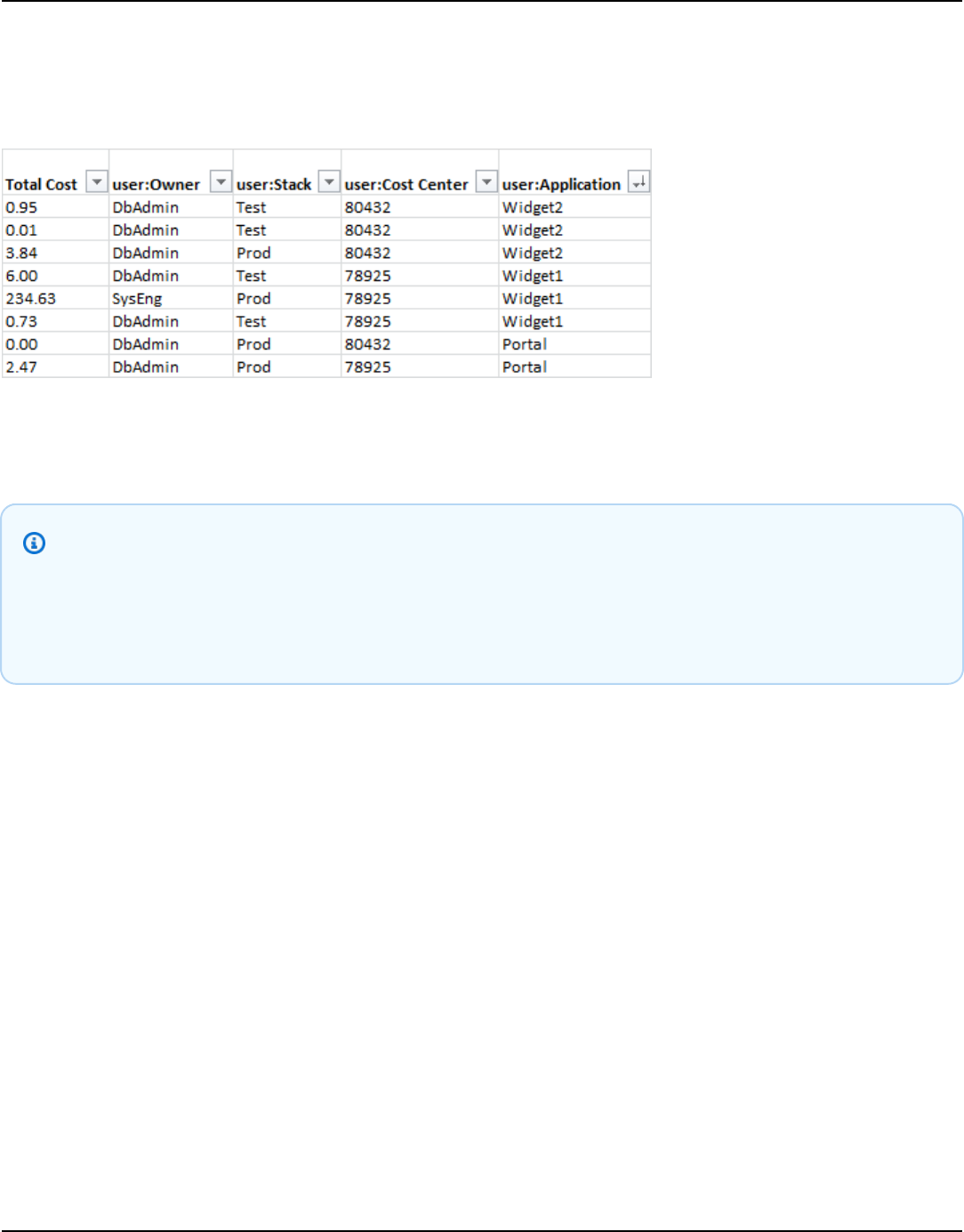
AWS Billing User Guide
and "Application"="Widget1". In the cost allocation report, the user-defined tag keys have the
prefix user, such as user:Cost Center and user:Application. AWS-generated tag keys have
the prefix aws. The keys are column headings identifying each tagged line item's value, such as
"78925".
Pick your keys carefully so that you have a consistent hierarchy of values. Otherwise, your report
won't group costs effectively, and you will have many line items.
Note
If you add or change the tags on a resource partway through a billing period, costs are split
into two separate lines in your cost allocation report. The first line shows costs before the
update, and the second line shows costs after the update.
Unallocated resources in your report
Any charges that cannot be grouped by tags in your cost allocation report default to the standard
billing aggregation (organized by Account/Product/Line Item) and are included in your report.
Situations where you can have unallocated costs include:
• You signed up for a cost allocation report mid-month.
• Some resources aren't tagged for part, or all, of the billing period.
• You are using services that currently don't support tagging.
• Subscription-based charges, such as AWS Support and AWS Marketplace monthly fees, can't be
allocated.
• One-time fees, such as Amazon EC2 Reserved Instance upfront charges, can't be allocated.
Viewing a cost allocation report Version 2.0 212

AWS Billing User Guide
Unexpected costs associated with tagged resources
You can use cost allocation tags to see what resources are contributing to your usage and costs, but
deleting or deactivating the resources doesn't always reduce your costs. For more information on
reducing unexpected costs, see Understanding unexpected charges.
Understanding dates for cost allocation tags
Prerequisites
To view these dates in the Cost allocation tags page of the AWS Billing and Cost
Management console, you must have the ce:ListCostAllocationTags permission.
For more information about updating your AWS Identity and Access Management (IAM)
policies, see Managing access permissions.
When you use cost allocation tags, you can determine when the tags were last used or last updated
with the following metadata fields:
• Last updated date – The last date that the tag key was either activated or deactivated for cost
allocation.
For example, suppose that your tag key lambda:createdby changed from inactive to active on
July 1, 2023. This means that the Last updated date column will show July 1, 2023.
• Last used month – The last month that the tag key was used on an AWS resource.
For example, suppose that your tag key lambda:createdby was last used on April 2023.
The Last used month column will show April 2023. This means that the tag key hasn't been
associated with any resource since that date.
Notes
• The Last updated date column appears empty for newly created tag keys that haven't
been activated.
• The Last used month column shows Before April 2023 for tag keys that were used
before April 2023 and that aren't currently associated with any resource.
Understanding dates for cost allocation tags Version 2.0 213

AWS Billing User Guide
Calling AWS services and prices using the AWS Price List
Note
To provide feedback about AWS Price List, complete this short survey. Your responses will
be anonymous. Note: This survey is in English only.
AWS Price List provides a catalog of the products and prices for AWS services that you can purchase
on AWS.
This catalog includes free offers from AWS Free Tier. This catalog doesn't include limited time
or fixed usage based Free Tier products. For more information about Free Tier offers, see Trying
services using AWS Free Tier. Also, this catalog doesn't include Amazon Elastic Compute Cloud
(Amazon EC2) Spot Instances. For more information about Amazon EC2 Spot Instances, see
Amazon EC2 Spot Instances.
For more information, see the following topics:
• AWS Billing and Cost Management API Reference
• Language-specific AWS SDKs
• Tools for Amazon Web Services
Overview
To help you use the AWS Price List, the following are its key concepts:
Service
An AWS service, such as Amazon EC2 or Savings Plans. For example, a Savings Plan for Amazon
EC2 might be AWSComputeSavingsPlan and a Savings Plan for machine learning (ML) might
be AWSMachineLearningSavingsPlans.
Product
An entity sold by an AWS service. In the price list file, products are indexed by a unique stock
keeping unit (SKU).
Overview Version 2.0 214

AWS Billing User Guide
Attribute
The property associated with a product. This property consists of AttributeName
and AttributeValue. Products can have multiple attributes. Each attribute has one
AttributeName and a list of applicable AttributeValues.
You can use the following AWS Price List APIs:
AWS Price List Query API
This API provides a centralized and convenient way to programmatically query AWS for services,
products, and pricing information.
The Price List Query API uses product attributes and provides prices at the SKU level. Use this
API to build cost control and scenario planning tools, reconcile billing data, forecast future
spend for budgeting purposes, and provide cost benefit analyses that compare your internal
workloads with AWS.
Note
The Price List Query API doesn't support Savings Plan prices.
AWS Price List Bulk API
This API provides a way to programmatically fetch up-to-date pricing information on current
AWS services and products in bulk by using the price list files. The price list files are available in
JSON and CSV formats. The price list files are organized by AWS service and AWS Region.
Note
The Price List Query API and Price List Bulk API provide pricing details for informational
purposes only. If there's a difference between the price list file and a service pricing page,
AWS charges the prices on the service pricing page.
For more information about AWS service pricing, see AWS Pricing.
To call the AWS Price List APIs, we recommend that you use an AWS SDK that supports your
preferred programming language. AWS SDKs save you time and simplify the process of signing
Overview Version 2.0 215

AWS Billing User Guide
requests. You can also integrate the AWS SDKs with your development environment and access the
related commands.
Getting started with AWS Price List
IAM permissions
An AWS Identity and Access Management (IAM) identity, such as a user or role, must have
permission to use the Price List Query API or Price List Bulk API. To grant access, see Find products
and prices.
Endpoints
The Price List Query API and Price List Bulk API provides the following endpoints:
• https://api.pricing.us-east-1.amazonaws.com
• https://api.pricing.eu-central-1.amazonaws.com
• https://api.pricing.ap-south-1.amazonaws.com
The AWS Region is the API endpoint for the Price List Query API. The endpoints aren't related to
product or service attributes.
To call the Price List Query API or Price List Bulk API, see the following examples.
Java
In the following example, specify the region_name and use it to create the PricingClient.
public class Main {
public static void main(String[] args) {
// Create pricing client
PricingClient client = PricingClient.builder()
.region(Region.US_EAST_1)// or Region.AP_SOUTH_1
.credentialsProvider(DefaultCredentialsProvider.builder().build())
.build();
);
}
Getting started with AWS Price List Version 2.0 216
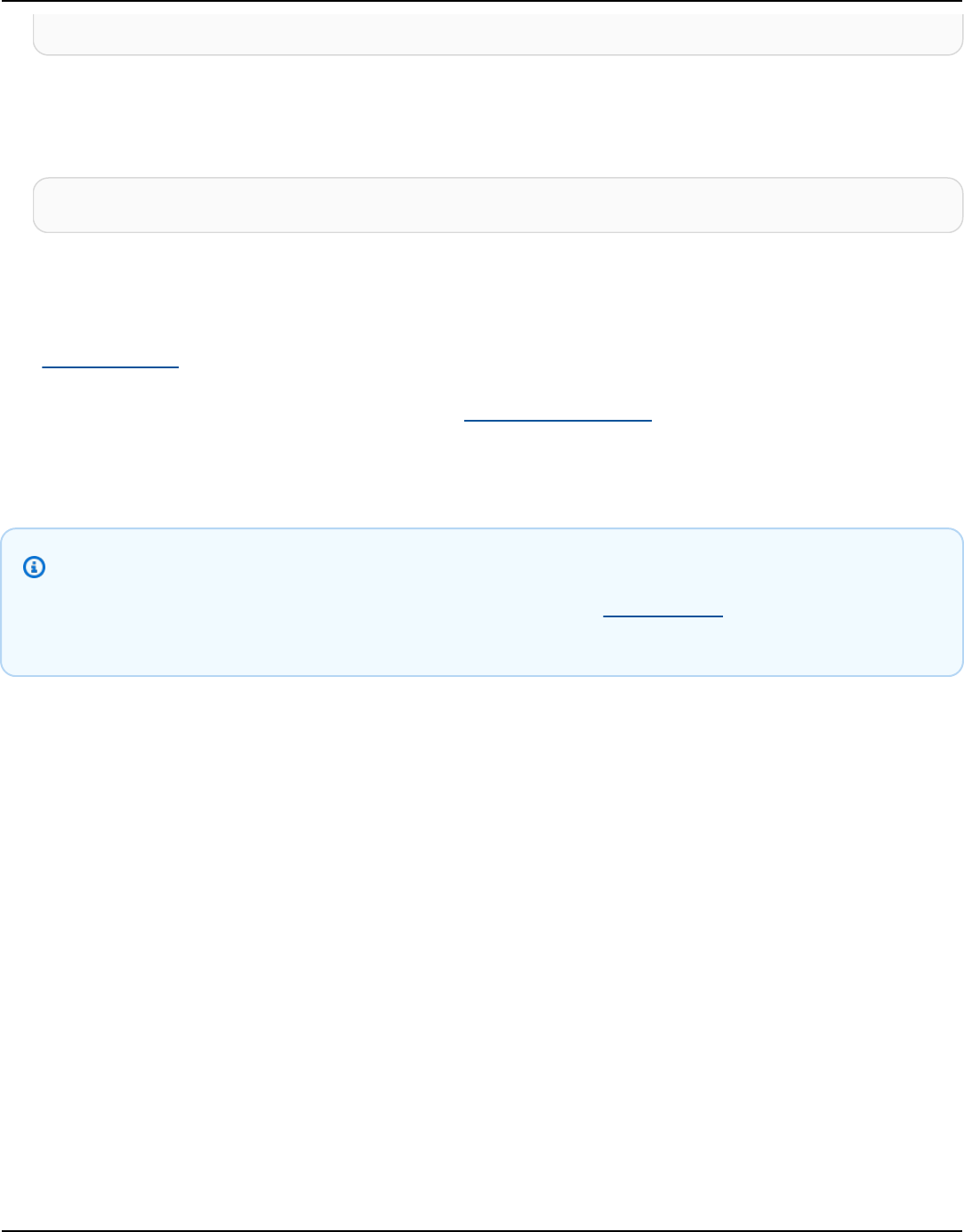
AWS Billing User Guide
}
AWS Command Line Interface
Specify the Region with the following command.
aws pricing describe-services --region us-east-1
Quotas
See AWS Price List in the Quotas and restrictions page.
For more information about service quotas, see AWS service quotas in the AWS General Reference.
Finding services and products using AWS Price List Query API
Note
To provide feedback about AWS Price List, complete this short survey. Your responses will
be anonymous. Note: This survey is in English only.
We recommend that you use the Price List Query API when you want to:
• Find pricing information about a product.
• Search for products and rates that match your filters.
• Quickly find products and prices that you need when you're developing applications that have
limited resources, such as front-end environments.
To find AWS services, their products, and the product attributes and prices, see the following steps.
Step 1: Finding available AWS services
Once you find the service, you can then get its attributes by using the DescribeServices API
operation. If you know the service code, you can also use the AWS Price List Query API to get
attributes for a service. Then, you can use the service attributes to find the products that meet your
requirements based on the attribute values.
Quotas Version 2.0 217

AWS Billing User Guide
Examples: Find services
The following AWS Command Line Interface (AWS CLI) commands show how to find services.
Example Example: Find all services
aws pricing describe-services --region us-east-1
Response
{
"FormatVersion": "aws_v1",
"NextToken": "abcdefg123",
"Services": [
{
"AttributeNames": [
"volumeType",
"maxIopsvolume",
"instanceCapacity10xlarge",
"locationType",
"operation"
],
"ServiceCode": "AmazonEC2"
},
{
"AttributeNames": [
"productFamily",
"volumeType",
"engineCode",
"memory"
],
"ServiceCode": "AmazonRDS"
},
{...}
]
}
Example Example: Find service metadata for Amazon Elastic Compute Cloud (Amazon EC2)
The following command shows how to find service metadata for Amazon EC2.
aws pricing describe-services --region us-east-1 --service-code AmazonEC2
Finding services and products Version 2.0 218

AWS Billing User Guide
Response
{
"FormatVersion": "aws_v1",
"NextToken": "abcdefg123",
"Services": [
{
"AttributeNames": [
"productFamily",
"volumeType",
"engineCode",
"memory"
],
"ServiceCode": "AmazonEC2"
}
]
}
The AWS Region is the API endpoint for the Price List Query API. The endpoints aren't related to
product or service attributes.
For more information, see DescribeServices in the AWS Billing and Cost Management API Reference.
Step 2: Finding available values for attributes
In step 1, you retrieved a list of attributes for an AWS service. In this step, you use these attributes
to search for products. In step 3, you need the available values for these attributes.
To find the values for an attribute, use the GetAttributeValues API operation. To call the API,
specify the AttributeName and ServiceCode parameters.
Example: Get attribute values
The following AWS Command Line Interface (AWS CLI) command shows how to get attribute
values for an AWS service.
Example Example: Find attribute values for Amazon Relational Database Service (Amazon RDS)
aws pricing get-attribute-values --service-code AmazonRDS --attribute-name operation --
region us-east-1
Response
Finding services and products Version 2.0 219

AWS Billing User Guide
{
"AttributeValues": [
{
"Value": "CreateDBInstance:0002"
},
{
"Value": "CreateDBInstance:0003"
},
{
"Value": "CreateDBInstance:0004"
},
{
"Value": "CreateDBInstance:0005"
}
],
"NextToken": "abcdefg123"
}
The AWS Region is the API endpoint for the Price List Query API. The endpoints aren't related to
product or service attributes.
For more information, see GetAttributeValues and language-specific AWS SDKs in the AWS Billing
and Cost Management API Reference.
Step 3: Finding products from attributes
In this step, you use the information from step 1 and step 2 to find the products and their terms.
To get information about products, use the GetProducts API operation. You can specify a list of
filters to return the products that you want.
Note
The Price List Query API supports only "AND" matching. The response to your command
only contains products that match all specified filters.
Examples: Find products from attributes
The following AWS Command Line Interface (AWS CLI) commands show how to find products by
using attributes.
Finding services and products Version 2.0 220

AWS Billing User Guide
Example Example: Find products with specified filters
The following command shows how you can specify filters for Amazon Relational Database Service
(Amazon RDS).
aws pricing get-products --service-code AmazonRDS --region us-east-1 --filters
Type=TERM_MATCH,Field=operation,Value="CreateDBInstance:0002"
Response
{
"FormatVersion": "aws_v1",
"PriceList": ["{
\"product\":{
\"productFamily\":\"Database Instance\",
\"attributes\":{
\"engineCode\":\"2\",
\"enhancedNetworkingSupported\":\"Yes\",
\"memory\":\"64 GiB\",
\"dedicatedEbsThroughput\":\"2000 Mbps\",
\"vcpu\":\"16\",
\"locationType\":\"AWS Region\",
\"storage\":\"EBS Only\",
\"instanceFamily\":\"General purpose\",
\"regionCode\":\"us-east-1\",
\"operation\":\"CreateDBInstance:0002\",
...
},
\"sku\":\"22ANV4NNQP3UUCWY\"},
\"serviceCode\":\"AmazonRDS\",
\"terms\":{...}"
],
"NextToken": "abcd1234"
}
Example Example: Use the filters.json file to specify filters
The following command shows how you can specify a JSON file that contains all filters.
aws pricing get-products --service-code AmazonRDS --region us-east-1 --filters file://
filters.json
Finding services and products Version 2.0 221

AWS Billing User Guide
For example, the filters.json file might include the following filters.
[
{
"Type": "TERM_MATCH",
"Field": "operation",
"Value": "CreateDBInstance:0002"
}
]
The following example shows how you can specify more than one filter.
[
{
"Type": "TERM_MATCH",
"Field": "AttributeName1",
"Value": "AttributeValue1"
},
{
"Type": "TERM_MATCH",
"Field": "AttributeName2",
"Value": "AttributeValue2"
},
...
]
Response
{
"FormatVersion": "aws_v1",
"PriceList": ["{
\"product\":{
\"productFamily\":\"Database Instance\",
\"attributes\":{
\"engineCode\":\"2\",
\"enhancedNetworkingSupported\":\"Yes\",
\"memory\":\"64 GiB\",
\"dedicatedEbsThroughput\":\"2000 Mbps\",
\"vcpu\":\"16\",
\"locationType\":\"AWS Region\",
\"storage\":\"EBS Only\",
\"instanceFamily\":\"General purpose\",
Finding services and products Version 2.0 222
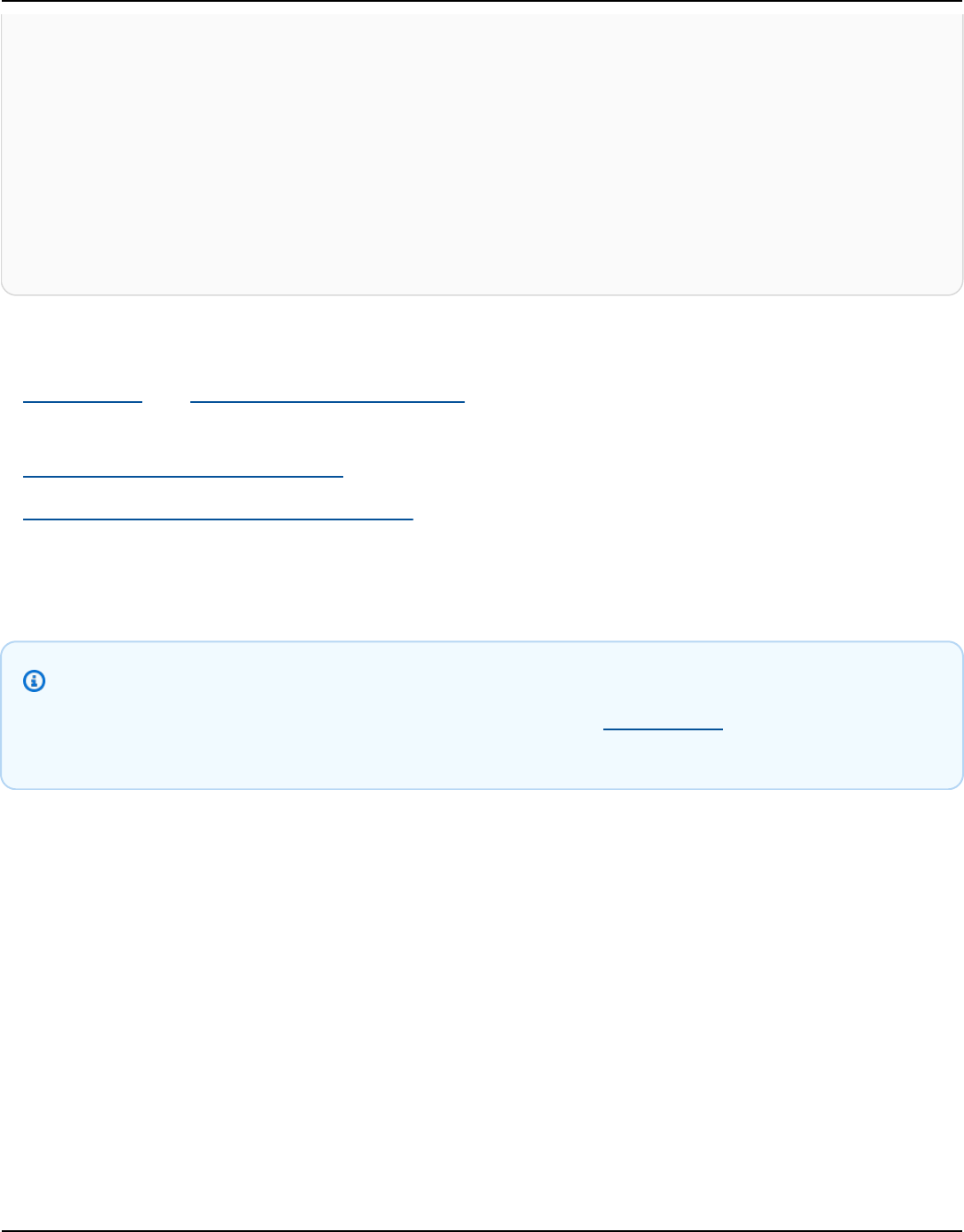
AWS Billing User Guide
\"regionCode\":\"us-east-1\",
\"operation\":\"CreateDBInstance:0002\",
...
},
\"sku\":\"22ANV4NNQP3UUCWY\"},
\"serviceCode\":\"AmazonRDS\",
\"terms\":{...}"
],
"NextToken": "abcd1234"
}
For more information, see the following topics:
• GetProducts and language-specific AWS SDKs in the AWS Billing and Cost Management API
Reference
• Reading the service price list files
• Finding prices in the service price list file
Getting price list files using the AWS Price List Bulk API
Note
To provide feedback about AWS Price List, complete this short survey. Your responses will
be anonymous. Note: This survey is in English only.
We recommend that you use the Price List Bulk API when you want to do the following tasks:
• Consume large amounts of product and pricing information for AWS services.
• Consume product and pricing information with a high throughput for an AWS service, such as
processing in bulk.
Also, when the Price List Query API doesn't provide sufficient throughput and quotas for your use
case, use the Price List Bulk API.
We recommend that you use the AWS Price List Bulk API to find and download price list files
programmatically. To get the URL of the price list files, see the following steps.
Getting price list files Version 2.0 223

AWS Billing User Guide
If you don't want to use the AWS Price List Bulk API, you can download the price list files manually.
For more information, see Getting price list files manually.
Step 1: Finding available AWS services
Use the DescribeServices API operation to find all available AWS services that the Price List
Bulk API supports. This API operation returns the ServiceCode value from the list of services. You
use this value later to find relevant price list files.
Example Example: Find available services
The following command shows how to find available AWS services.
aws pricing describe-services --region us-east-1
The AWS Region is the API endpoint for the Price List Bulk API. The endpoints aren't related to
product or service attributes.
Response
{
"FormatVersion": "aws_v1",
"NextToken": "abcdefg123",
"Services": [
{
"AttributeNames": [
"volumeType",
"maxIopsvolume",
"instanceCapacity10xlarge",
"locationType",
"operation"
],
"ServiceCode": "AmazonEC2"
},
{
"AttributeNames": [
"productFamily",
"volumeType",
"engineCode",
"memory"
],
"ServiceCode": "AmazonRDS"
Getting price list files Version 2.0 224

AWS Billing User Guide
},
{...}
]
}
For more information about this API operation, see DescribeServices and language-specific AWS
SDKs in the AWS Billing and Cost Management API Reference
Step 2: Finding price list files for an available AWS service
Use the ListPriceLists API operation to get a list of price list references that you have
permission to view. To filter your results, you can specify the ServiceCode, CurrencyCode, and
EffectiveDate parameters.
The AWS Region is the API endpoint for the Price List Bulk API. The endpoints aren't related to
product or service attributes.
Examples to find price list files
Example Example: Find price list files for all AWS Regions
If you don't specify the --region-code parameter, the API operation returns price list file
references from all available AWS Regions.
aws pricing list-price-lists --service-code AmazonRDS --currency-code USD --effective-
date "2023-04-03 00:00"
Response
{
"NextToken": "abcd1234",
"PriceLists": [
{
"CurrencyCode": "USD",
"FileFormats": [ "json", "csv" ],
"PriceListArn": "arn:aws:pricing:::price-list/aws/AmazonRDS/
USD/20230328234721/us-east-1",
"RegionCode": "us-east-1"
},
{
"CurrencyCode": "USD",
"FileFormats": [ "json", "csv" ],
Getting price list files Version 2.0 225

AWS Billing User Guide
"PriceListArn": "arn:aws:pricing:::price-list/aws/AmazonRDS/
USD/20230328234721/us-west-2",
"RegionCode": "us-west-2"
},
...
]
}
Example Example: Find price list files for a specific Region
If you specify the RegionCode parameter, the API operation returns price list file references that
are specific to that Region. To find historical price list files, use the EffectiveDate parameter. For
example, you can specify a date in the past to find a specific price list file.
From the response, you can then use the PriceListArn value with the GetPriceListFileUrl API
operation to get your preferred price list files.
aws pricing list-price-lists --service-code AmazonRDS --currency-code USD --region-
code us-west-2 --effective-date "2023-04-03 00:00"
Response
{
"PriceLists": [
{
"CurrencyCode": "USD",
"FileFormats": [ "json", "csv" ],
"PriceListArn": "arn:aws:pricing:::price-list/aws/AmazonRDS/
USD/20230328234721/us-west-2",
"RegionCode": "us-west-2"
}
]
}
For more information about this API operation, see ListPriceLists and language-specific AWS SDKs
in the AWS Billing and Cost Management API Reference.
Step 3: Getting a specific price list file
Use the GetPriceListFileUrl API operation to get a URL for a price list file. This URL is based
on the PriceListArn and FileFormats values that you retrieved from the ListPriceLists
response in step 1 and step 2
Getting price list files Version 2.0 226
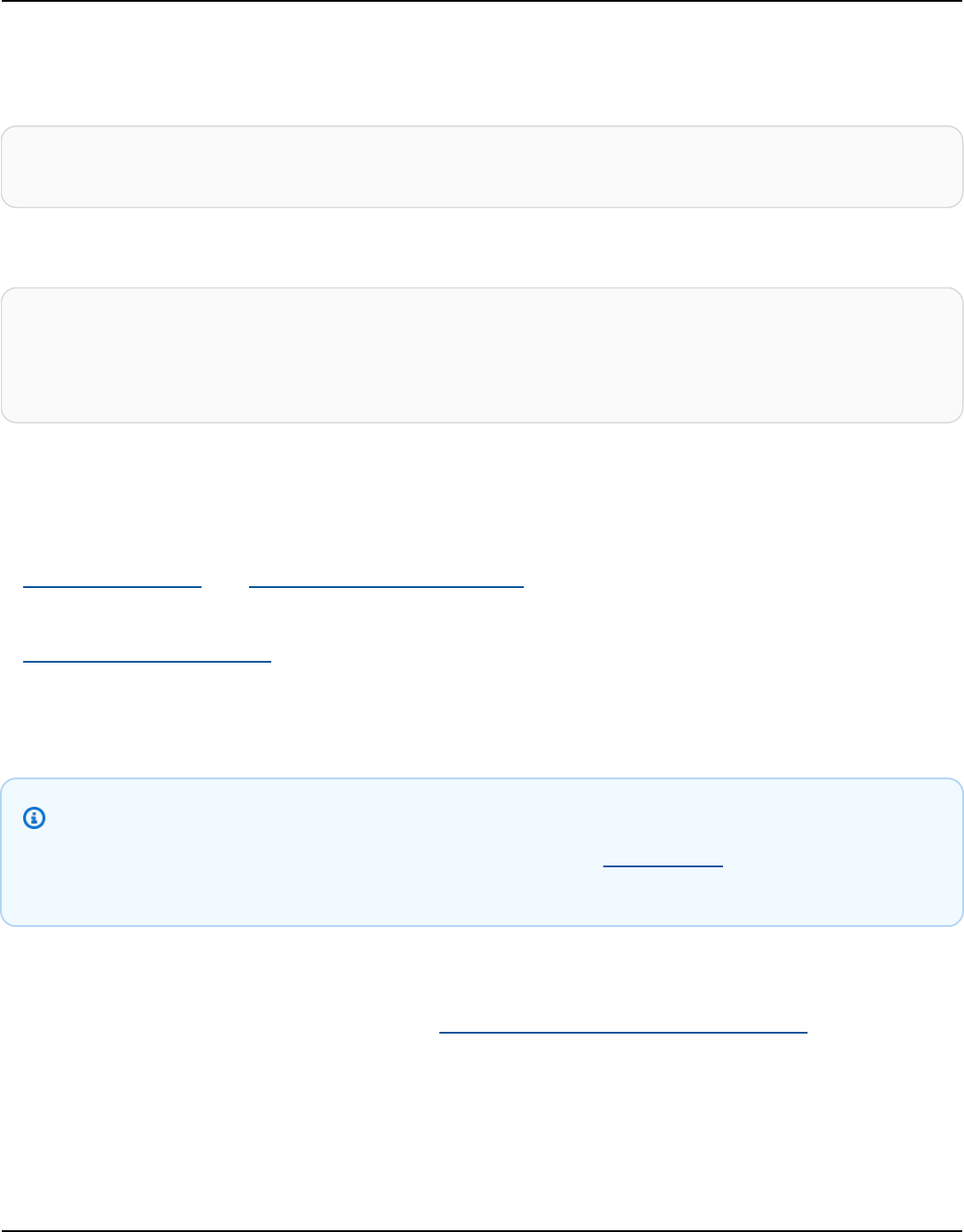
AWS Billing User Guide
Example Example: Get a specific price list file
The following command gets the URL for a specific price list file for Amazon RDS.
aws pricing get-price-list-file-url --price-list-arn arn:aws:pricing:::price-list/aws/
AmazonRDS/USD/20230328234721/us-east-1 --file-format json --region us-east-1
Response
{
"Url": "https://pricing.us-east-1.amazonaws.com/offers/v1.0/aws/
AmazonRDS/20230328234721/us-east-1/index.json"
}
From the response, you can use the URL to download the price list file.
For more information about this API operation, see the following topics:
• GetPriceListFileUrl and language-specific AWS SDKs in the AWS Billing and Cost Management API
Reference
• Reading the price list files
Getting price list files manually
Note
To provide feedback about AWS Price List, complete this short survey. Your responses will
be anonymous. Note: This survey is in English only.
We recommend that you use the AWS Price List Bulk API to find and download price list files
programmatically. For more information, see Step 1: Finding available AWS services.
If you don't want to use the AWS Price List Bulk API, you can download the price list files manually.
You can skip to the relevant topics if you already have the information that you need.
Get price list files manually Version 2.0 227
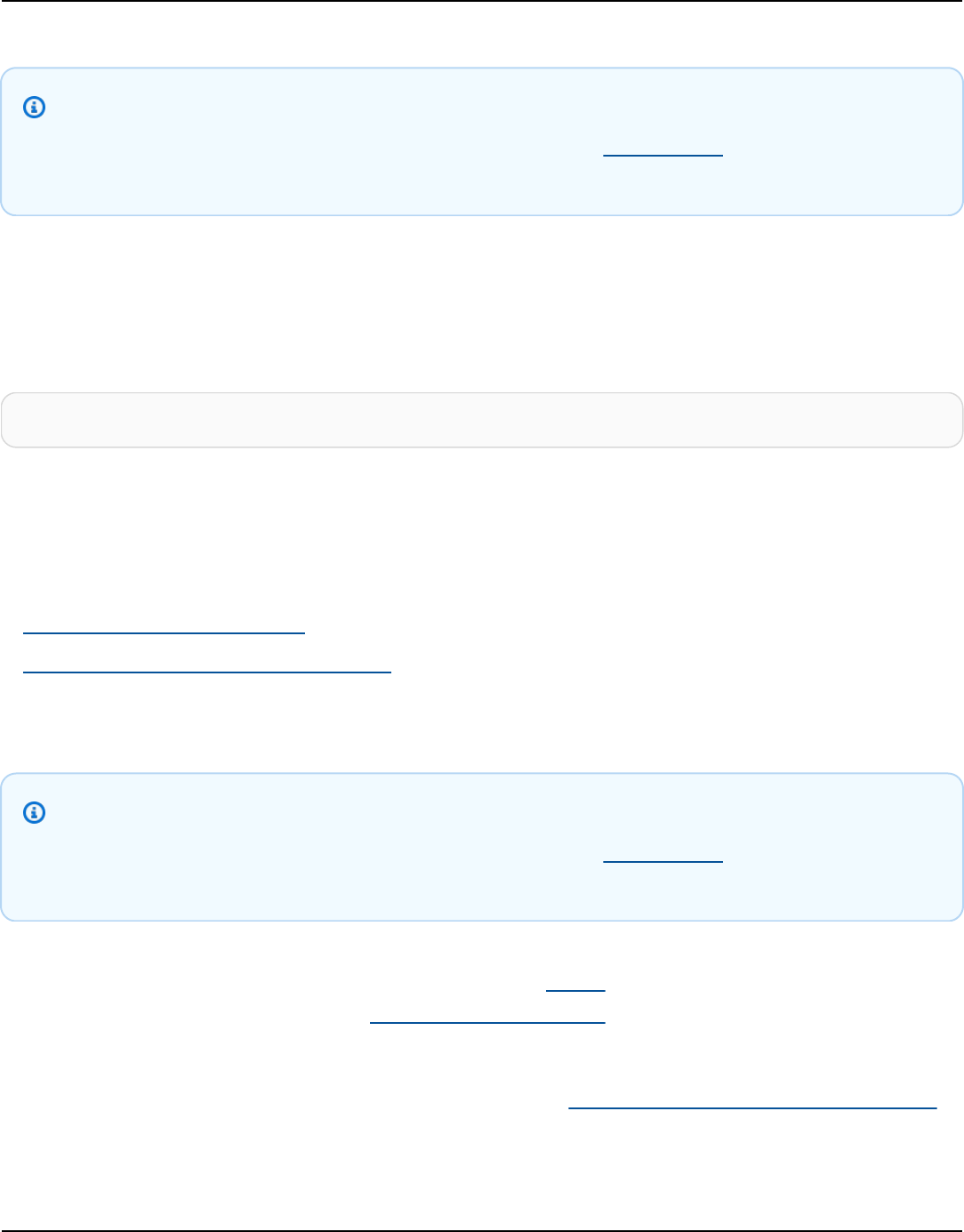
AWS Billing User Guide
Step 1: Finding available AWS services
Note
To provide feedback about AWS Price List, complete this short survey. Your responses will
be anonymous. Note: This survey is in English only.
You can use the service index file to find available AWS services and Savings Plans that are
provided by the AWS Price List Bulk API.
To download the service index file, navigate to the following URL.
https://pricing.us-east-1.amazonaws.com/offers/v1.0/aws/index.json
In the service index file, you can search for the service to find its prices. To download the service-
specific price list file, use either the offerCode or serviceCode.
For more information, see the following topics:
• Reading the service index file
• Step 1: Finding available AWS services
Step 2: Finding available versions for an AWS service
Note
To provide feedback about AWS Price List, complete this short survey. Your responses will
be anonymous. Note: This survey is in English only.
For an AWS service or Savings Plan that you retrieved in step 1, you can find all the historical
versions of the price lists by using the service version index file.
To download the service version index file, use the serviceCode or savingsPlanCode. To find
the values for serviceCode and savingsPlanCode, see Step 1: Finding available AWS services.
To download the service version index file for an AWS service, navigate to the following URL.
Replace <serviceCode> with your own information.
Get price list files manually Version 2.0 228
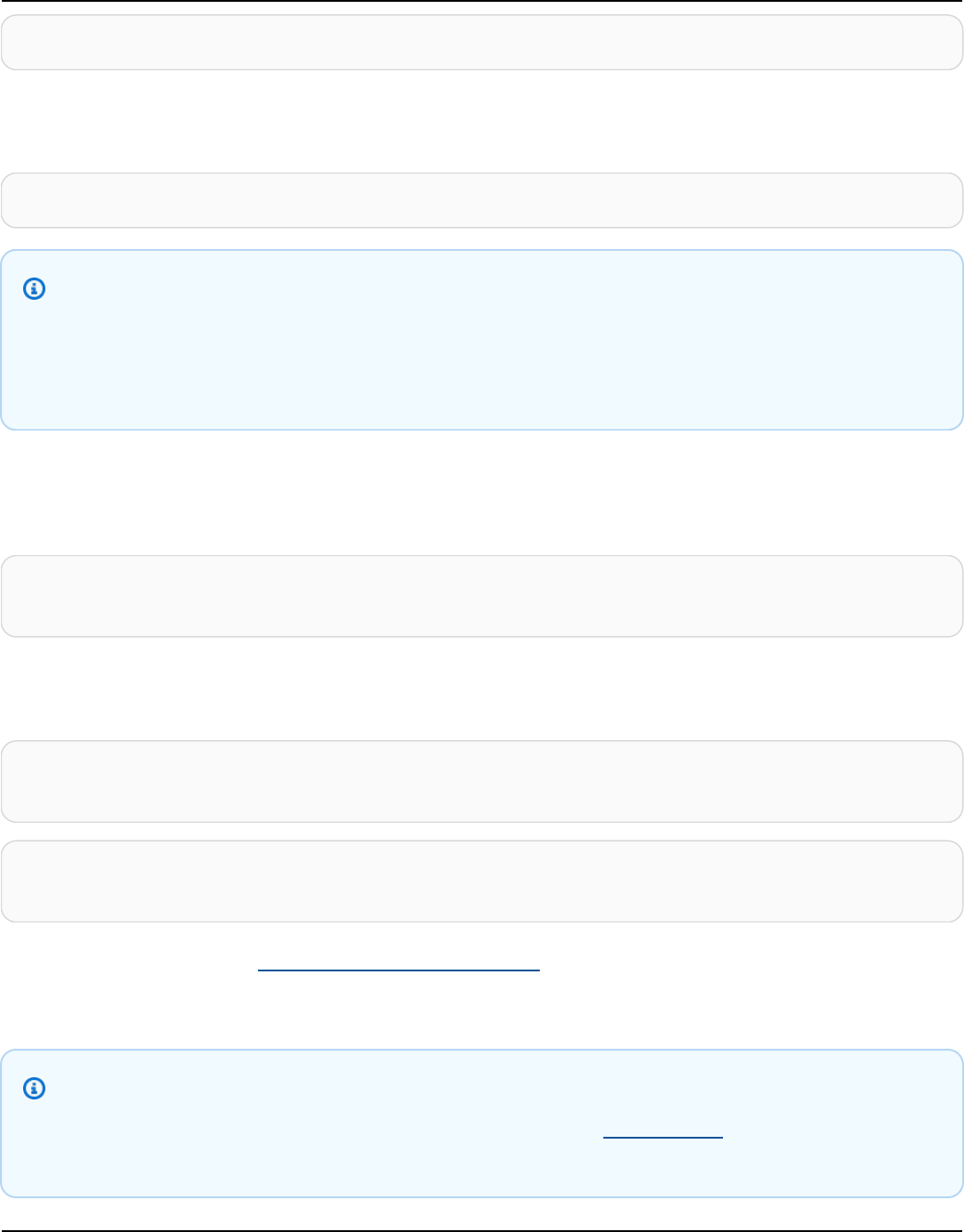
AWS Billing User Guide
https://pricing.us-east-1.amazonaws.com/offers/v1.0/aws/<serviceCode>/index.json
For example, Amazon Elastic Compute Cloud (Amazon EC2) appears in a URL like the following
URL.
https://pricing.us-east-1.amazonaws.com/offers/v1.0/aws/AmazonEC2/index.json
Note
In addition to the versions available in the service version index file, there is another version
named current. The current version points to the latest version of the price list files for
a specific AWS service.
To download the latest service version index file for Savings Plan, specify savingsPlanCode and
current in the URL. Replace <savingsPlanCode> with your own information.
https://pricing.us-east-1.amazonaws.com/savingsPlan/v1.0/aws/<savingsPlanCode>/current/
index.json
For example, the current version of AWSComputeSavingsPlan and
AWSMachineLearningSavingsPlans appears like the following URLs.
https://pricing.us-east-1.amazonaws.com/savingsPlan/v1.0/aws/AWSComputeSavingsPlan/
current/index.json
https://pricing.us-east-1.amazonaws.com/savingsPlan/v1.0/aws/
AWSMachineLearningSavingsPlans/current/index.json
For more information, see Reading the service index file.
Step 3: Finding available AWS Regions for a version of an AWS service
Note
To provide feedback about AWS Price List, complete this short survey. Your responses will
be anonymous. Note: This survey is in English only.
Get price list files manually Version 2.0 229
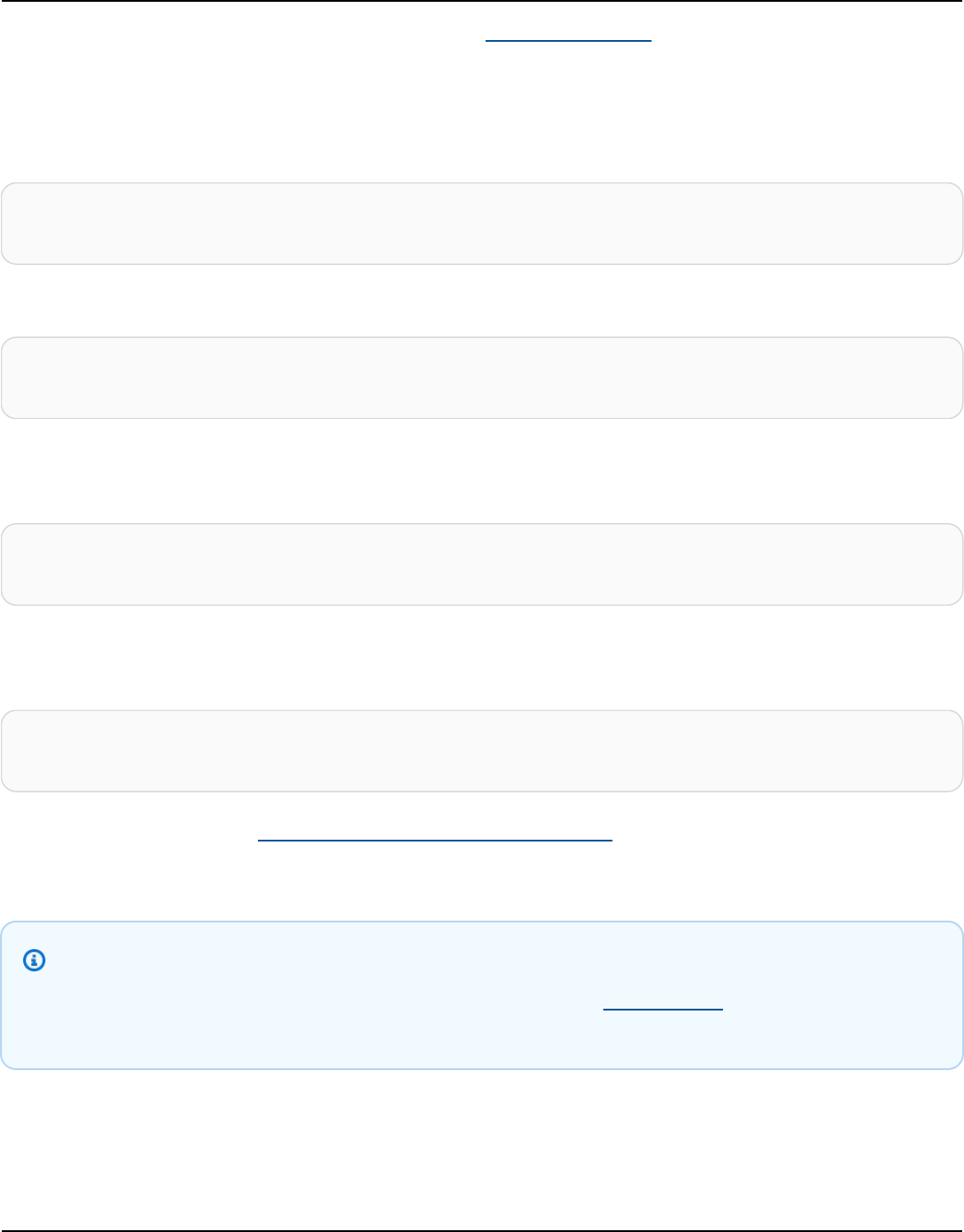
AWS Billing User Guide
For a version of an AWS service or Savings Plan in the previous step, you can find all the AWS
Regions and edge locations in which an AWS service provides products for purchase.
To download the service Region index file for an AWS service, navigate to the following URL.
Replace <serviceCode> and <version> with your own information.
https://pricing.us-east-1.amazonaws.com/offers/v1.0/aws/<serviceCode>/<version>/
region_index.json
For example, the service code for AmazonRDS and its current version has the following URL.
https://pricing.us-east-1.amazonaws.com/offers/v1.0/aws/AmazonRDS/current/
region_index.json
To download the service Region index file for Savings Plan, navigate to the following URL. Replace
<savingsPlanCode> with your own information.
https://pricing.us-east-1.amazonaws.com/savingsPlan/v1.0/aws/<savingsPlanCode>/current/
region_index.json
For example, a Savings Plan for AWSComputeSavingsPlan and its current version has the
following URL.
https://pricing.us-east-1.amazonaws.com/savingsPlan/v1.0/aws/AWSComputeSavingsPlan/
current/region_index.json
For more information, see Reading the service Region index file.
Step 4: Finding available price lists for an AWS Region and version of an AWS service
Note
To provide feedback about AWS Price List, complete this short survey. Your responses will
be anonymous. Note: This survey is in English only.
In the previous steps, you retrieved the following information about an AWS service:
• Service code
Get price list files manually Version 2.0 230

AWS Billing User Guide
• Savings Plan code
• Version
• AWS Regions
Next, you can use this information to find the prices in the service price list files. These files are
available in JSON and CSV formats.
Contents
• Finding service price list files
• Finding service price list files for Savings Plan
Finding service price list files
The service price list file provides the service related details, such as the following:
• The effective date of the prices in that file
• The version of the service price list
• The list of offered products and their details, along with prices in JSON and CSV formats
In the following URLs, you can change the URL to specify the format that you want (JSON or CSV).
To download the service price list file, navigate to the following URL. Replace each user input
placeholder with your own information.
https://pricing.us-east-1.amazonaws.com/offers/
v1.0/aws/<serviceCode>/<version>/<regionCode>/index.<format>
The following examples are for Amazon Relational Database Service (Amazon RDS). This service
appears as AmazonRDS in the URL.
Example Example: Current version of the price list file for Amazon RDS
To get the current version of the price list file for Amazon RDS in the US East (Ohio) Region, use the
following URL.
CSV format
Get price list files manually Version 2.0 231

AWS Billing User Guide
https://pricing.us-east-1.amazonaws.com/offers/v1.0/aws/AmazonRDS/current/us-east-2/
index.csv
JSON format
https://pricing.us-east-1.amazonaws.com/offers/v1.0/aws/AmazonRDS/current/us-east-2/
index.json
Example Example: Specific version of the price list file for Amazon RDS
To get the specific version of the price list file for Amazon RDS in the US East (Ohio) Region, use
the following URL.
CSV format
https://pricing.us-east-1.amazonaws.com/offers/v1.0/aws/AmazonRDS/20230328234721/us-
east-2/index.csv
JSON format
https://pricing.us-east-1.amazonaws.com/offers/v1.0/aws/AmazonRDS/20230328234721/us-
east-2/index.json
Finding service price list files for Savings Plan
The service price list file for Savings Plan provides Savings Plan related details, such as the
following:
• The effective date of the prices in that file
• The version of the service price list
• The list of offered products and their details, along with prices in JSON and CSV formats
In the following URLs, you can change the URL to specify the format that you want (JSON or CSV).
To download the service price list files for Savings Plan, use the following URL. Replace each user
input placeholder with your own information.
https://pricing.us-east-1.amazonaws.com/savingsPlan/
v1.0/aws/<savingsPlanCode>/<version>/<regionCode>/index.json
Get price list files manually Version 2.0 232
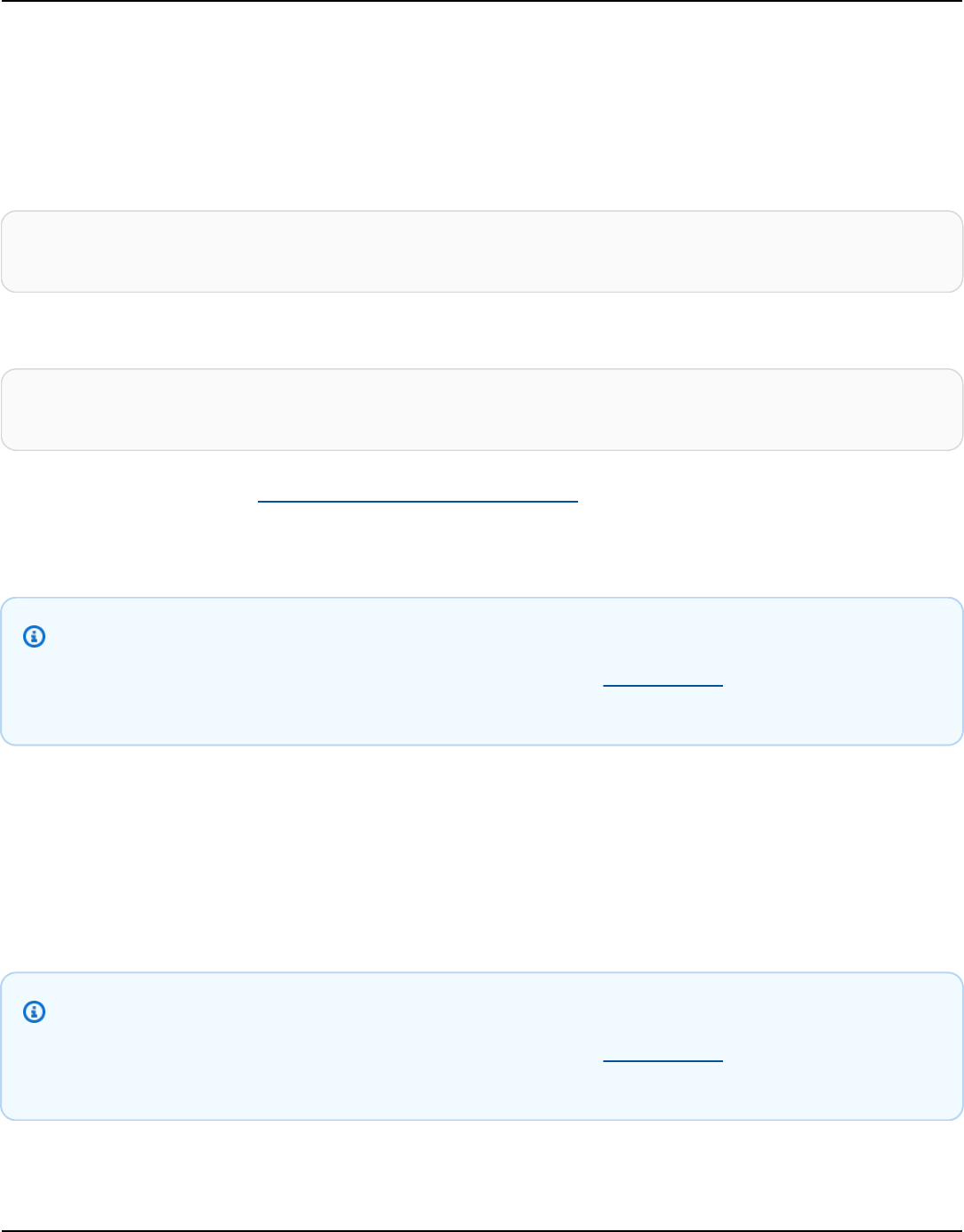
AWS Billing User Guide
Example Example: Service price list file for Amazon SageMaker
To get a specific version (20230509202901) of the price list file for SageMaker
(AWSComputeSavingsPlan) in the US East (Ohio) Region, use the following URL.
CSV format
https://pricing.us-east-1.amazonaws.com/savingsPlan/v1.0/aws/
AWSComputeSavingsPlan/20230509202901/us-east-2/index.csv
JSON format
https://pricing.us-east-1.amazonaws.com/savingsPlan/v1.0/aws/
AWSComputeSavingsPlan/20230509202901/us-east-2/index.json
For more information, see Reading the service price list files.
Reading the price list files
Note
To provide feedback about AWS Price List, complete this short survey. Your responses will
be anonymous. Note: This survey is in English only.
Use this section to understand how to read your price list files. This covers the service index file,
the service version index file, the Region index file, and the price list files for both AWS services and
Savings Plans use cases.
Reading the service index file
Note
To provide feedback about AWS Price List, complete this short survey. Your responses will
be anonymous. Note: This survey is in English only.
After you have the service index file, you can use it to find an service price list file.
Read the price list files Version 2.0 233

AWS Billing User Guide
The service index file is available as a JSON file. To read the file, you can use a text application or a
program that parses the JSON.
The service index file has two main sections:
• Metadata about the service index file
• Either a list of the services that AWS offers (for the service index file) and a list of AWS Regions
where a service is offered (for the service Region index file)
The information about the service index file includes the URL where you can download the prices
and a URL for the service Region index file for that service.
Example: Service index file
The service index file looks like the following.
{
"formatVersion":"The version number for the offer index format",
"disclaimer":"The disclaimers for this offer index",
"publicationDate":"The publication date of this offer index",
"offers":{
"firstService":{
"offerCode":"The service that this price list is for",
"currentVersionUrl":"The URL for this offer file",
"currentRegionIndexUrl":"The URL for the regional offer index file",
"savingsPlanVersionIndexUrl":"The URL for the Savings Plan index file (if
applicable)"
},
"secondService":{
"offerCode": ...,
"currentVersionUrl": ...,
"currentRegionIndexUrl": ...,
"savingsPlanVersionIndexUrl":...
},
...
},
}
Service index file definitions
The following list defines the terms that are used in the service index file:
Read the price list files Version 2.0 234

AWS Billing User Guide
FormatVersion
An attribute that tracks which format version the service version index file is in. The
formatVersion of the file is updated when the structure is changed. For example, the version
will change from v1 to v2.
Disclaimer
Any disclaimers that apply to the service version index file.
PublicationDate
The date and time in UTC format when a service version index file was published. For example,
this might look like 2015-04-09T02:22:05Z and 2015-09-10T18:21:05Z.
Offers
A list of available service price list files.
Offers:OfferCode
A unique code for the product of an AWS service. For example, this might be AmazonEC2 or
AmazonS3. The OfferCode is used as the lookup key for the index.
Offers:CurrentVersionUrl
The URL where you can download the most up-to-date service price list file.
Offers:currentRegionIndexUrl
A list of available service price list files by Region.
Offers:savingsPlanVersionIndexUrl
The list of applicable Savings Plan offers.
Reading the service version index file
Note
To provide feedback about AWS Price List, complete this short survey. Your responses will
be anonymous. Note: This survey is in English only.
The service version index file is available in JSON format. To read the file, you can use a text
program or an application that parses the JSON.
Read the price list files Version 2.0 235
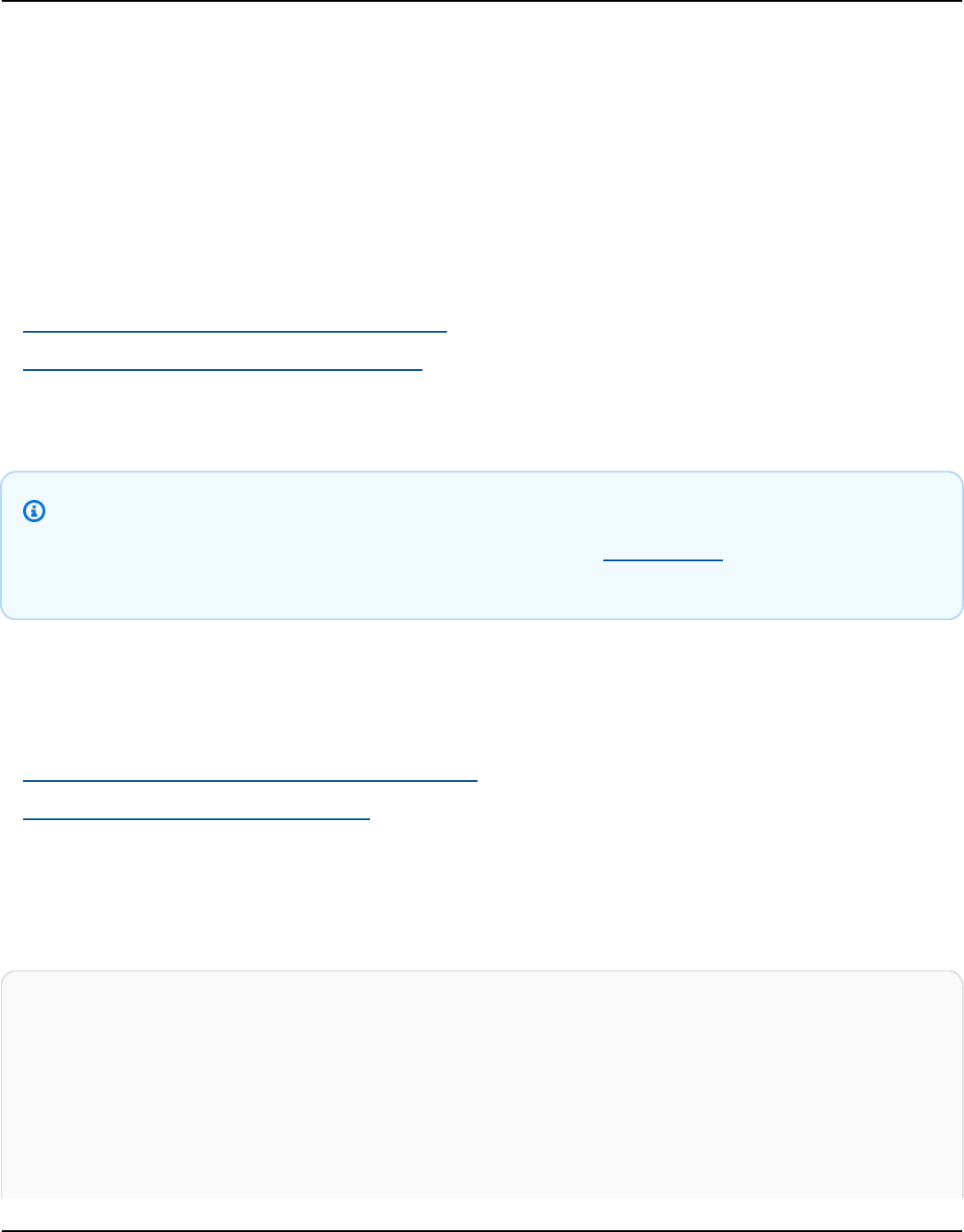
AWS Billing User Guide
The service version index file consists of two main sections:
• Metadata about the service version index file
• List of all versions of price list files available for an AWS service
The information about a service version includes the URL that you can use to download the prices
for that service for the specified time period.
Topics
• Service version index file for an AWS service
• Service version index file for Savings Plan
Service version index file for an AWS service
Note
To provide feedback about AWS Price List, complete this short survey. Your responses will
be anonymous. Note: This survey is in English only.
To understand the service version index file, see the following references:
Topics
• Example: Service version index file for a service
• Service version index file definitions
Example: Service version index file for a service
The service version index file looks like the following.
{
"formatVersion":"The version number for the service version index format",
"disclaimer":"The disclaimers for this service version index",
"publicationDate":"The publication date of this service version index",
"offerCode": "The service code/Savings Plan code",
"currentVersion": "The latest version of the service"
"versions":{
"firstVersion":{
Read the price list files Version 2.0 236

AWS Billing User Guide
"versionEffectiveBeginDate":"The date starting which this version is
effective",
"versionEffectiveEndDate":"The date until which this version is effective",
"offerVersionUrl":"The relative URL for the service price list file of this
version"
},
"secondVersion":{
"versionEffectiveBeginDate": ...,
"versionEffectiveEndDate": ...,
"offerVersionUrl": ...
},
...
},
}
Service version index file definitions
The following list defines the terms in the service version index file.
formatVersion
An attribute that tracks which format version the service version index file is in. The
formatVersion of the file is updated when the structure is changed. For example, the version
will change from v1 to v2.
disclaimer
Any disclaimers that apply to the service version index file.
publicationDate
The date and time in UTC format when a service version index file was published. For example,
2023-03-28T23:47:21Z.
offerCode
A unique code for the product of an AWS service. For example, AmazonRDS or AmazonS3.
currentVersion
The latest version number of the AWS service. For example, 20230328234721.
versions
The list of available versions for this AWS service.
Read the price list files Version 2.0 237

AWS Billing User Guide
versions:version
A unique code for the version of a price list for an AWS service. This is used as the lookup key in
the versions list. For example, 20230328234721,
versions:version:versionEffectiveBeginDate
The start date and time in UTC format, which this version is effective. For example,
2023-03-28T23:47:21Z.
versions:version:versionEffectiveEndDate
The end date and time in UTC format, which this version is effective. For example,
2023-03-28T23:47:21Z. If this property isn't set, this means that this version is the currently
active version.
versions:version:offerVersionUrl
The relative URL for the service price list files of the version. For example, /offers/v1.0/
aws/AmazonRDS/20230328234721/index.json.
Service version index file for Savings Plan
Note
To provide feedback about AWS Price List, complete this short survey. Your responses will
be anonymous. Note: This survey is in English only.
To understand the service version index file for Savings Plan, see the following references:
Contents
• Example: Service version index file for Savings Plan
• Service version index definitions
Example: Service version index file for Savings Plan
The service version index file for a Savings Plan looks like the following.
{
Read the price list files Version 2.0 238

AWS Billing User Guide
"disclaimer":"The disclaimers for this service version index",
"publicationDate":"The publication date of this service version index",
"currentOfferVersionUrl" "The relative URL of region index file for latest version
number of the service"
"versions":[
{
"publicationDate":"The publication date of this version of service from which
this version was effective",
"offerVersionUrl":"The relative URL for the service region index file of this
version"
},
{
"publicationDate": ...,
"offerVersionUrl": ...
},
...
],
}
Service version index definitions
The following list defines the terms in the service version index file.
disclaimer
Any disclaimers that apply to the service version index file.
publicationDate
The date and time in UTC format when a service version index file was published. For example,
2023-03-28T23:47:21Z.
currentOfferVersionUrl
The relative URL of the regional index file for latest version number of the service. For example,
/savingsPlan/v1.0/aws/AWSComputeSavingsPlan/current/region_index.json.
versions
The list of available version for this AWS service.
versions:version:publicationDate
The date and time in UTC format when an service version index file was published. For example,
2023-04-07T14:57:05Z
Read the price list files Version 2.0 239

AWS Billing User Guide
versions:version:offerVersionUrl
The relative URL for the service regional index file of this version. For example,
/savingsPlan/v1.0/aws/AWSComputeSavingsPlan/20230407145705/
region_index.json.
Reading the service Region index file
Note
To provide feedback about AWS Price List, complete this short survey. Your responses will
be anonymous. Note: This survey is in English only.
The service Region index file is available in JSON format. To read the file, you can use a text
program or an application that parses the JSON.
The service Region index file consists of two main sections:
• Metadata about the service Region index file
• List of all AWS Regions in which AWS services or Savings Plan are available
The information about a service Region includes the URL where you can download the prices for
that service for the specified time period and Region.
Topics
• Service Region index file for AWS services
• Service Region index file for Savings Plan
Service Region index file for AWS services
Note
To provide feedback about AWS Price List, complete this short survey. Your responses will
be anonymous. Note: This survey is in English only.
Read the price list files Version 2.0 240

AWS Billing User Guide
To understand the service version index file for AWS services, see the following references:
Contents
• Example: Service Region index file for an AWS service
• Service Region index definitions
Example: Service Region index file for an AWS service
The service Region index file for an AWS service looks like the following.
{
"formatVersion":"The version number for the service region index format",
"disclaimer":"The disclaimers for this service region index",
"publicationDate":"The publication date of this service region index",
"regions":{
"firstRegion":{
"regionCode":"A unique identifier that identifies this region",
"currentVersionUrl":"The relative URL for the service regional price list file
of this version"
},
"secondRegion":{
"regionCode": ...,
"currentVersionUrl": ...
},
...
}
}
Service Region index definitions
The following list defines the terms in the service Region index file.
formatVersion
An attribute that tracks which format version the service Region index file is in. The
formatVersion of the file is updated when the structure is changed. For example, the version
will change from v1 to v2.
disclaimer
Any disclaimers that apply to the service Region index file.
Read the price list files Version 2.0 241

AWS Billing User Guide
publicationDate
The date and time in UTC format when a service Region index file was published. For example,
2023-03-28T23:47:21Z.
regions
The list of available AWS Region for the AWS service.
regions:regionCode
A unique code for the Region in which this AWS service is offered. This is used as the lookup key
in the Regions list. For example, us-east-2 is the US East (Ohio) Region.
regions:regionCode:currentVersionUrl
The relative URL for the service Region index file of this version. For example, /offers/v1.0/
aws/AmazonRDS/20230328234721/us-east-2/index.json.
Service Region index file for Savings Plan
Note
To provide feedback about AWS Price List, complete this short survey. Your responses will
be anonymous. Note: This survey is in English only.
To understand the service Region index file for Savings Plan, see the following references:
Topics
• Example: Service Region index file for Savings Plan
• Service Region index definitions
Example: Service Region index file for Savings Plan
The service Region index file for Savings Plan looks like the following.
{
"disclaimer":"The disclaimers for this service version index",
"publicationDate":"The publication date of this service region index",
Read the price list files Version 2.0 242

AWS Billing User Guide
"regions":[
{
"regionCode":"A unique identifier that identifies this region",
"versionUrl":"The relative URL for the service regional price list file of
this version"
},
{
"regionCode": ...,
"versionUrl": ...
},
...
]
}
Service Region index definitions
The following list defines the terms in the service Region index file.
disclaimer
Any disclaimers that apply to the service Region index file.
publicationDate
The date and time in UTC format when a service Region index file was published. For example,
2023-03-28T23:47:21Z.
regions
The list of available AWS Region for the AWS service.
regions:regionCode
A unique code for the Region in which this AWS service is offered. This is used as the lookup key
in the Regions list. For example, us-east-2 is the (US East (Ohio) Region.
regions:versionUrl
The relative URL for the service Region index file of this version. For example, /savingsPlan/
v1.0/aws/AWSComputeSavingsPlan/20230407145705/us-east-2/index.json.
Read the price list files Version 2.0 243
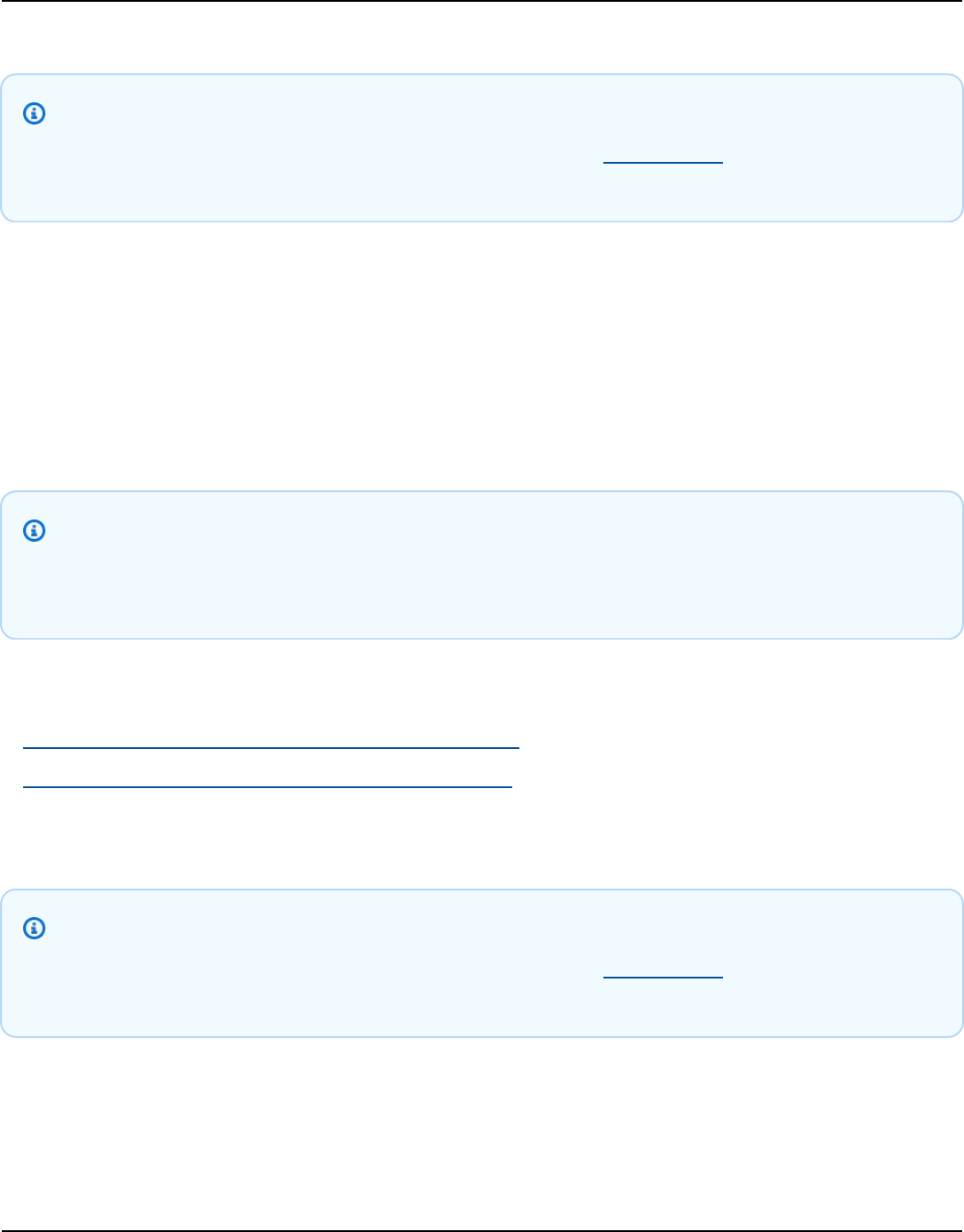
AWS Billing User Guide
Reading the service price list files
Note
To provide feedback about AWS Price List, complete this short survey. Your responses will
be anonymous. Note: This survey is in English only.
The service price list file lists the products and prices for a single AWS service or Savings Plan in all
AWS Regions or a single AWS service or Savings Plan in a specific Region.
Service price list files are available in CSV or JSON format.
To read the file, you can use a spreadsheet program to read and sort the CSV file or an application
that parses the JSON file.
Note
In the CSV file, the product and pricing details are combined into one section. In the JSON
file, the product details and pricing details are in separate sections.
Topics
• Reading the service price list file for an AWS service
• Reading the service price list file for a Savings Plan
Reading the service price list file for an AWS service
Note
To provide feedback about AWS Price List, complete this short survey. Your responses will
be anonymous. Note: This survey is in English only.
The service price list files for an AWS service includes the following types of information:
• Service price list file details – Metadata about the service price list files, such as format version
and publication date
Read the price list files Version 2.0 244

AWS Billing User Guide
• Product details – Product metadata that lists the products in a service price list file, along with
product information
• Pricing details (terms) – Prices for all products in this service price list file
Contents
• CSV file
• JSON file
• Service price list definitions
• Product details (products) definitions
• Product details (terms) definitions
CSV file
The first five rows of the CSV file contain the metadata for the price list file. The sixth row has the
column names for the products and their attributes, such as SKU, OfferTermCode, RateCode,
TermType, and more.
The number of columns depends on the service. The first few columns contain the pricing details,
and other columns contain the product details for a service.
JSON file
The product details and pricing details are in separate sections. The same product can be offered
under multiple terms, and the same term can apply to multiple products.
For example, an Amazon Elastic Compute Cloud (Amazon EC2) instance is available for an Hourly
or Reserved term. You can use the SKU of a product to identify the terms that are available for
that product.
Example Example: JSON
{
"formatVersion":"The version of the file format",
"disclaimer":"The disclaimers for the price list file",
"offerCode":"The code for the service",
"version":"The version of the price list file",
"publicationDate":"The publication date of the price list file",
Read the price list files Version 2.0 245

AWS Billing User Guide
"products": {
"sku": {
"sku":"The SKU of the product",
"productFamily":"The product family of the product",
"attributes": {
"attributeName":"attributeValue",
}
}
},
"terms": {
"termType": {
"sku": {
"sku": {
"offerTermCode":"The term code of the product",
"sku":"The SKU of the product",
"effectiveDate":"The effective date of the pricing details",
"termAttributesType":"The attribute type of the terms",
"termAttributes": {
"attributeName":"attributeValue",
},
"priceDimensions": {
"rateCode": {
"rateCode":"The rate code of the price",
"description":"The description of the term",
"unit":"The usage measurement unit for the price",
"startingRange":"The start range for the term",
"endingRange":"The end range for the term",
"pricePerUnit": {
"currencyCode":"currencyRate",
}
}
}
}
}
}
}
}
Service price list definitions
The following list defines the terms in the service price list files.
Read the price list files Version 2.0 246

AWS Billing User Guide
formatVersion
An attribute that tracks which format version the service price list file is in. The
formatVersion of the file is updated when the structure is changed. For example, the version
will change from v1 to v2.
disclaimer
Any disclaimers that apply to the service price list file.
offerCode
A unique code for the product of an AWS service. For example, AmazonEC2 for Amazon EC2 or
AmazonS3 for Amazon S3.
version
An attribute that tracks the version of the service price list file. Each time a new file
is published, it contains a new version number. For example, 20150409022205 and
20150910182105.
publicationDate
The date and time in UTC format when a service price list file was published. For example,
2015-04-09T02:22:05Z and 2015-09-10T18:21:05Z.
Product details (products) definitions
This section provides information about products in a service price list file for an AWS service.
Products are indexed by SKU.
products:sku
A unique code for a product. Use the SKU code to correlate product details and pricing.
For example, a product with a SKU of HCNSHWWAJSGVAHMH is available only for a price that also
lists HCNSHWWAJSGVAHMH as a SKU.
products:sku:productFamily
The category for the type of product. For example, compute for Amazon EC2 or storage for
Amazon S3.
Read the price list files Version 2.0 247

AWS Billing User Guide
products:sku:attributes
A list of all of the product attributes.
products:sku:attributes:Attribute Name
The name of a product attribute. For example, Instance Type, Processor, or OS.
products:sku:attributes:Attribute Value
The value of a product attribute. For example, m1.small (instance type), xen (type of
processor), or Linux (type of OS).
Product details (terms) definitions
This section provides information about the prices for products in a service price list file for an AWS
service.
Prices are indexed first by the terms (onDemand and reserved), and then by SKU.
terms:termType
The specific type of term that a term definition describes. The valid term types are reserved
and onDemand.
terms:termType:SKU
A unique code for a product. Use the SKU code to correlate product details and pricing.
For example, a product with a SKU of HCNSHWWAJSGVAHMH is available only for a price that also
lists HCNSHWWAJSGVAHMH as a SKU.
terms:termType:sku:Offer Term Code
A unique code for a specific type of term. For example, KCAKZHGHG.
Product and price combinations are referenced by the SKU code followed by the term code,
separated by a period. For example, U7ADXS4BEK5XXHRU.KCAKZHGHG.
terms:termType:sku:Effective Date
The date that an service price list file goes into effect. For example, if a term has an
EffectiveDate of November 1, 2017, the price isn't valid before that date.
Read the price list files Version 2.0 248

AWS Billing User Guide
terms:termType:sku:Term Attributes Type
A unique code for identifying what product and product offering are covered by a term. For
example, an EC2-Reserved attribute type means that a term is available for Amazon EC2
reserved hosts.
terms:termType:sku:Term Attributes
A list of all of the attributes that are applicable to a term type. The format appears as
attribute-name: attribute-value. For example, this can be the length of term and the
type of purchase covered by the term.
terms:termType:sku:Term Attributes:Attribute Name
The name of a TermAttribute. You can use it to look up specific attributes. For example, you
can look up terms by length or PurchaseOption.
terms:termType:sku:Term Attributes:Attribute Value
The value of a TermAttribute. For example, terms can have a length of one year and a
purchase option of All Upfront.
terms:termType:sku:Price Dimensions
The pricing details for the price list file, such as how usage is measured, the currency that you
can use to pay with, and the pricing tier limitations.
terms:termType:sku:Price Dimensions:Rate Code
A unique code for a product, offer, and pricing-tier combination. Product and term
combinations can have multiple price dimensions, such as free tier, low use tier, and high use
tier.
terms:termType:sku:Price Dimensions:Rate Code:Description
The description for a price or rate.
terms:termType:sku:Price Dimensions:Rate Code:Unit
The type of unit that each service uses to measure usage for billing. For example, Amazon EC2
uses hours, and Amazon S3 uses GB.
terms:termType:sku:Price Dimensions:Rate Code:Starting Range
The lower limit of the price tier covered by this price. For example, 0 GB or 1,001 API operation
calls.
Read the price list files Version 2.0 249

AWS Billing User Guide
terms:termType:sku:Price Dimensions:Rate Code:Ending Range
The upper limit of the price tier covered by this price. For example, 1,000 GB or 10,000 API
operation calls.
terms:termType:sku:Price Dimensions:Rate Code:Price Per Unit
A calculation of how much a single measured unit for a service costs.
terms:termType:sku:Price Dimensions:Rate Code:Price Per Unit:Currency Code
A code that indicates the currency for prices for a specific product.
terms:termType:sku:Price Dimensions:Rate Code:Price Per Unit:Currency Rate
The rate for a product in various supported currencies. For example, $1.2536 per unit.
Reading the service price list file for a Savings Plan
Note
To provide feedback about AWS Price List, complete this short survey. Your responses will
be anonymous. Note: This survey is in English only.
The service price list files for an AWS service includes the following types of information:
• Service price list file details – Metadata about the service price list file, such as the version, AWS
Region, and publication date
• Product details – Product metadata that lists the products in a service price list file along with
product information
• Pricing details (terms) – Prices for all products in the service price list file
Contents
• CSV file
• JSON file
• Service price list definitions
• Product details (products) definitions
Read the price list files Version 2.0 250

AWS Billing User Guide
• Pricing details (terms) definitions
CSV file
The first five rows of the CSV file are the metadata for the price list file. The sixth row has the
column names for the products and their attributes, such as SKU, RateCode, and more.
The number of columns varies depends on the Savings Plan. The first few columns contain the
pricing details, while other columns contain the product details for a Savings Plan.
JSON file
The product details and pricing details are in separate sections. A JSON service price list file looks
like the following example.
{
"version" : "The version of the price list file",
"publicationDate" : "The publication date of the price list file",
"regionCode" : "Region for which price list file is valid for",
"products" : [
{
"sku" : "The SKU of the product",
"productFamily" : "The product family of the product",
"serviceCode" : "Savings plan code",
"attributes" : {
"attributeName":"attributeValue",
}
},
...
],
"terms" : {
"savingsPlan" : [
{
"sku" : "The SKU of the product",
"description" : "Description of the product",
"effectiveDate" : "The effective date of the pricing details",
"leaseContractLength" : {
"duration" : "Length of the lease contract - it is a number",
"unit" : "Unit of the duration"
},
"rates" : [
{
"discountedSku" : "The SKU of the discounted on demand product",
Read the price list files Version 2.0 251

AWS Billing User Guide
"discountedUsageType" : "Usage type of the discounted product",
"discountedOperation" : "Operation of the discounted product",
"discountedServiceCode" : "Service code of the discounted product",
"rateCode" : "The rate code of this price detail",
"unit" : "Unit used to measure usage of the product",
"discountedRate" : {
"price" : "Price of the product",
"currency" : "Currency of the price"
}
},
...
]
},
...
]
}
}
Service price list definitions
The following list defines the terms in the service price list files.
regionCode
The Region code of the Region for which the price list is valid for.
version
An attribute that tracks the version of the price list file. Each time a new file is published, it
contains a new version number. For example, 20150409022205 and 20150910182105.
publicationDate
The date and time in UTC format when a service price list file was published. For example,
2015-04-09T02:22:05Z and 2015-09-10T18:21:05Z.
Product details (products) definitions
This section provides information about products in a price list file for a Savings Plan. Products are
indexed by SKU.
products:product:sku
A unique code for a product. Use the SKU code to correlate product details and pricing.
Read the price list files Version 2.0 252

AWS Billing User Guide
For example, a product with a SKU of HCNSHWWAJSGVAHMH is available only for a price that also
lists HCNSHWWAJSGVAHMH as a SKU.
products:product:productFamily
The category for the type of product. For example, EC2InstanceSavingsPlans for Compute
Savings Plans.
products:product:serviceCode
The service code of the Savings Plan. For example, ComputeSavingsPlans.
products:product:attributes
A list of all product attributes.
products:product:attributes:attributeName
The name of a product attribute. For example, Instance Type, Location Type, or
Purchase Option.
products:product:attributes:attributeValue
The value of a product attribute. For example, m1.small (instance type), AWS Local Zone (type
of location), or No Upfront (type of purchase option).
Pricing details (terms) definitions
This section provides information about the prices for products in a price list file for a Savings Plan.
Prices are indexed first by the terms (savingsPlan).
terms:termType
The specific type of term that a term definition describes. The valid term type is savingsPlan.
terms:termType:sku
A unique code for a product. Use the SKU code to correlate product details and pricing.
For example, a product with a SKU of T496KPMD8YQ8RZNC is available only for a price that also
lists 496KPMD8YQ8RZNC as a SKU.
terms:termType:sku:description
The description of the product.
Read the price list files Version 2.0 253

AWS Billing User Guide
terms:termType:sku:effectiveDate
The date that an service price list file goes into effect. For example, if a term has an
EffectiveDate of November 1, 2017, the price isn't valid before that date.
terms:termType:sku:leaseContractLength:duration
The length of the lease contract. This value is a number. For example, 1 or 3.
terms:termType:sku:rates
A list all of the discounted rates that are applicable to a Savings Plan product. One Savings Plan
product is a combination of multiple products from other services and this contains multiple
rates for the combination.
terms:termType:sku:rates:discountedSku
The SKU of the discounted on demand product.
terms:termType:sku:rates:discountedUsageType
The usage type of the discounted on-demand product.
terms:termType:sku:rates:discountedOperation
The operation of the discounted on-demand product.
terms:termType:sku:rates:discountedServiceCode
The service code of the discounted on-demand product.
terms:termType:sku:rates:rateCode
The rate code of this rate offered under the Savings Plan product. For
example,T496KPMD8YQ8RZNC.26PW7ZDSYZZ6YBTZ
terms:termType:sku:rates:unit
The unit used to measure usage of the product. For example, Hrs for an Amazon EC2 instance.
terms:termType:sku:rates:discountedRate:price
The price of the offered discounted product under Savings Plan product. For example, 3.434.
terms:termType:sku:rates:discountedRate:currency
The currency of the price of the offered discounted product under a Savings Plan product. For
example, USD.
Read the price list files Version 2.0 254

AWS Billing User Guide
Finding prices in the service price list file
Note
To provide feedback about AWS Price List, complete this short survey. Your responses will
be anonymous. Note: This survey is in English only.
The AWS Price List Bulk API provides prices for all AWS products for informational purposes,
including On-Demand and Reserved Instances pricing.
To find the prices and terms for a specific product, you can use the offer files. For example, you can
find a list of Amazon Elastic Compute Cloud (Amazon EC2) instance prices.
Note
The AWS Price List Bulk API is not a comprehensive source for limited period offers, such as
AWS Free Tier pricing. For information about Free Tier prices, see AWS Free Tier.
To find prices for the products you're interested in.
Contents
• Finding On-Demand prices for services
• Finding tiered prices for services
• Finding tiered prices for services with Free Tier
• Example
• Finding prices for services with Reserved Instances
Finding On-Demand prices for services
The following procedure shows how to find On-Demand prices for AWS services, such as Amazon
EC2.
To find an On-Demand price by using the CSV file
1. Download the CSV file for the service.
Find prices in the service price list file Version 2.0 255

AWS Billing User Guide
2. Open the CSV file with your preferred application.
3. Under the TermType column, filter to show OnDemand.
4. Find the usage type and operation that you want.
5. In the PricePerUnit column, see the corresponding price.
To find an On-Demand price by using the JSON file
1. Download the JSON file for the service.
2. Open the JSON file with your preferred application.
3. Under terms and On-Demand, find the SKU that you want.
If you don't know the SKU, search under products for the usage type and operation.
4. See the pricePerUnit to find the corresponding On-Demand price for the SKU.
Finding tiered prices for services
The following procedure shows how to find tiered prices for services, such as Amazon Simple
Storage Service (Amazon S3).
To find tiered prices for services by using the CSV file
1. Download the CSV file for the service.
2. Open the CSV file with your preferred application
3. Under the TermType column, filter to show OnDemand.
4. Find the usage type and operation that you want.
5. In the PricePerUnit column, see the corresponding price for each StartingRange and
EndingRange.
To find tiered prices for services by using the JSON file
1. Download the JSON file.
2. Open the JSON file with your preferred application.
3. Under terms and On-Demand find the SKU that you want.
If you don't know the SKU, search under products for the usage type and operation.
Find prices in the service price list file Version 2.0 256

AWS Billing User Guide
4. Under each beginRange and endRange, see the pricePerUnit to find the corresponding tiered
prices.
Finding tiered prices for services with Free Tier
The following procedure shows how to find AWS services that publish Free Tier prices in the AWS
Price List Bulk API, such as AWS Lambda.
All Free Tier prices are subject to the terms documented in AWS Free Tier.
To find prices for services with Free Tier by using the CSV file
1. Download the CSV file for the service.
2. Open the CSV file with your preferred application.
3. Under the TermType column, filter to show OnDemand.
4. Under the Location column, filter to show Any.
Any doesn't represent all AWS Regions in this scenario. It's a subset of Regions defined by
other line items in the CSV file, with a RelatedTo column matching the SKU for the location
Any entry.
5. To find a list of all eligible locations and products for a specific Free Tier SKU, find the Free Tier
SKU under the RelatedTo column.
6. To find the covered usage by Free Tier across all eligible locations, see the StartingRange and
EndingRange for the location Any.
Example
This example assumes there are no more entries in the price file where RelatedTo equals to the
SKU ABCD.
As shown in the following table, the Free Tier offer with SKU ABCD is valid in the Asia Pacific
(Singapore) and US East (Ohio) Regions, but not in AWS GovCloud (US). The covered
usage by Free Tier is 400,000 seconds total, used across both eligible Regions.
Find prices in the service price list file Version 2.0 257

AWS Billing User Guide
SKU StartingRage EndingRan
ge
Unit RelatedTo Location
ABCD 0 400000 seconds
Any
QWER 0 Inf seconds ABCD Asia
Pacific
(Singapor
e)
WERT 0 Inf seconds ABCD US East
(Ohio)
ERTY 0 Inf seconds
AWS
GovCloud
(US)
To find tiered prices for services with Free Tier by using the JSON file
1. Download the JSON file for the service.
2. Open the JSON file with your preferred application.
3. Under products, find the usagetype with the Region prefix Global.
4. Take note of the SKU, and look for the same SKU under terms and OnDemand.
5. For the amount of Free Tier usage, see the BeginRange and EndRange .
For a list of products and Regions covered by Free Tier, see appliesTo.
Finding prices for services with Reserved Instances
The following procedure shows how to find prices for services with Reserved Instances, such as
Amazon Relational Database Service (Amazon RDS).
To find prices for a Reserved Instance by using the CSV file
1. Download the Amazon EC2 CSV file.
2. Open the CSV file with your preferred application.
Find prices in the service price list file Version 2.0 258

AWS Billing User Guide
3. Under the TermType column, filter to show reserved.
4. Find the usage type and operation that you want.
5. For each LeaseContractLength, PurchaseOption, and OfferingClass, see the PricePerUnit
column for the corresponding price.
To find prices for Reserved Instances by using the JSON file
1. Download the JSON file for the service.
2. Open the JSON file with your preferred application.
3. Under terms and Reserved, find the SKU that you want.
If you don't know the SKU, search under products for the usage type and operation.
You can find prices for LeaseContractLength, PurchaseOption, and OfferingClass for the same
product.
Setting up price update notifications
Note
To provide feedback about AWS Price List, complete this short survey. Your responses will
be anonymous. Note: This survey is in English only.
Price list files can change anytime. When the price list files are updated, an Amazon Simple
Notification Service (Amazon SNS) notification is sent. You can set up to receive notifications when
prices change, such as when AWS lowers prices, or when new products and services are launched.
You can get notified every time a price changes or only once a day. If you choose to be notified
once a day, the notification includes all price changes applied during the previous day. We
recommend that you set up notifications and get the latest files when they change.
Contents
• Set up Amazon SNS notifications
• Notification structure for AWS services
• Notification structure for Savings Plans
Set up price update notifications Version 2.0 259

AWS Billing User Guide
Set up Amazon SNS notifications
You can use the AWS Management Console to sign up for Amazon SNS notifications.
To set up Amazon SNS notifications for price list file updates
1. Sign in to the AWS Management Console and open the Amazon SNS console at https://
console.aws.amazon.com/sns/v3/home.
2. If you're new to Amazon SNS, choose Get Started.
3. If necessary, change the AWS Region on the navigation bar to US East (N. Virginia).
4. On the navigation pane, choose Subscriptions.
5. Choose Create subscription.
6. For Topic ARN, enter the following as needed:
• For service pricing:
•
To get notified every time a price changes, enter: arn:aws:sns:us-
east-1:278350005181:price-list-api
•
To get notified about price changes once a day, enter: arn:aws:sns:us-
east-1:278350005181:daily-aggregated-price-list-api
•
For Savings Plans prices, enter: arn:aws:sns:us-
east-1:626627529009:SavingsPlanPublishNotifications
7.
For Protocol, use the default HTTP setting.
8. For Endpoint, specify the format that you want to receive the notification, such as Amazon
Simple Queue Service (Amazon SQS), AWS Lambda, or email.
9. Choose Create subscription.
When a price changes, you will receive a notification from your preferred format that you
specified in step 8.
Important
If you get an error message Couldn't create subscription. Error code: InvalidParameter -
Error message: Invalid parameter: TopicArn, it's likely that you're not using the US East (N.
Virginia) Region. The billing metric data is stored in this Region, even for resources in other
Regions. Return to step 3 and complete the rest of this procedure.
Set up Amazon SNS notifications Version 2.0 260

AWS Billing User Guide
Notification structure for AWS services
The pricing update notification has a subject line in the following format.
[Pricing Update] New <serviceCode> offer file available.
Example Example: Subject line
A price update notification for Amazon Relational Database Service (Amazon RDS) looks like the
following.
[Pricing Update] New AmazonRDS offer file available.
Example Example: Notification message
If you subscribed to AWS services such as Amazon SQS, Lambda, or other services, the structure of
the pricing update notification message body looks like the following.
{
"formatVersion":"v1.0",
"offerCode":"<serviceCode>",
"version":"<Version number of this new price list>",
"timeStamp":"<Publish date of this new price list>",
"url":{
"JSON":"<JSON URL of the current version price list>",
"CSV":"<CSV URL of the current version price list>"
},
"regionIndex":"<Region index url of the current version price list>",
"operation":"Publish"
}
For example, the notification message for Amazon RDS looks like the following.
{
"formatVersion":"v1.0",
"offerCode":"AmazonRDS",
"version":"20230328234721",
"timeStamp":"2023-03-28T23:47:21Z",
"url":{
"JSON":"https://pricing.us-east-1.amazonaws.com/offers/v1.0/aws/AmazonRDS/
current/index.json",
Notification structure for AWS services Version 2.0 261

AWS Billing User Guide
"CSV":"https://pricing.us-east-1.amazonaws.com/offers/v1.0/aws/AmazonRDS/
current/index.csv"
},
"regionIndex":"https://pricing.us-east-1.amazonaws.com/offers/v1.0/aws/AmazonRDS/
current/region_index.json",
"operation":"Publish"
}
Example Example: Email notification
If you subscribed to email, the structure of the pricing update email message body looks like the
following.
Hello,
You've received this notification because you subscribed to receiving updates from SNS
topic arn:aws:sns:us-east-1:278350005181:price-list-api.
We've published a new version of the offer file for Service <serviceCode>. To download
the offer file, use the following URLs:
- JSON format : <JSON URL of the current version price list>
- CSV format : <CSV URL url of the current version price list>
To download the index for the region-specific offer files, use the following URL:
- RegionIndexUrl : <Region index URL of the current version price list>
To get a daily email that shows all price changes made the previous day, subscribe to
the following SNS topic: arn:aws:sns:us-east-1:278350005181:daily-aggregated-price-
list-api.
To learn more about offer files and index files, see http://docs.aws.amazon.com/
awsaccountbilling/latest/aboutv2/price-changes.html.
Thank You,
Amazon Web Services Team
Am example email message for Amazon RDS looks like the following.
Hello,
You've received this notification because you subscribed to receiving updates from SNS
topic arn:aws:sns:us-east-1:278350005181:price-list-api.
We've published a new version of the offer file for Service AmazonRDS. To download the
offer file, use the following URLs:
Notification structure for AWS services Version 2.0 262

AWS Billing User Guide
- JSON format : https://pricing.us-east-1.amazonaws.com/offers/v1.0/aws/AmazonRDS/
current/index.json
- CSV format : https://pricing.us-east-1.amazonaws.com/offers/v1.0/aws/AmazonRDS/
current/index.csv
To download the index for the region-specific offer files, use the following URL:
- RegionIndexUrl : https://pricing.us-east-1.amazonaws.com/offers/v1.0/aws/
AmazonRDS/current/region_index.json
To get a daily email that shows all price changes made the previous day, subscribe to
the following SNS topic: arn:aws:sns:us-east-1:278350005181:daily-aggregated-price-
list-api.
To learn more about offer files and index files, see http://docs.aws.amazon.com/
awsaccountbilling/latest/aboutv2/price-changes.html.
Thank You,
Amazon Web Services Team
Notification structure for Savings Plans
The pricing update notification has a subject line in the following format.
[Pricing Update] New <Savings Plan name> is available.
Example Example: Subject line for Savings Plan
A subject line for Savings Plan looks like the following.
[Pricing Update] New AWS Compute Savings Plan is available.
Example Example: Notification message
If you subscribed to AWS services such as Amazon SQS, Lambda, or other services, the structure of
the pricing update notification message body looks like the following,
{
"version":"<Version number of this new price list>",
"offerCode":"<savingsPlanCode which can be used as input to API calls>",
"savingsPlanCode":"<savingsPlan Name>",
"topicArn":"arn:aws:sns:us-east-1:626627529009:SavingsPlanPublishNotifications",
"versionIndex":"<version index url of the version price list>",
Notification structure for Savings Plans Version 2.0 263

AWS Billing User Guide
"regionIndex":"<Region index URL of the version price list>"
}
For example, a notification for ComputeSavingsPlans looks like the following.
{
"version":"20230509202901",
"offerCode":"AWSComputeSavingsPlan",
"savingsPlanCode":"ComputeSavingsPlans",
"topicArn":"arn:aws:sns:us-east-1:626627529009:SavingsPlanPublishNotifications",
"versionIndex":"https://pricing.us-east-1.amazonaws.com/savingsPlan/v1.0/aws/
AWSComputeSavingsPlan/20230509202901/index.json",
"regionIndex":"https://pricing.us-east-1.amazonaws.com/savingsPlan/v1.0/aws/
AWSComputeSavingsPlan/20230509202901/region_index.json"
}
Example Example: Email notification
If you subscribed to email, the structure of the pricing update email body looks like the following.
Hello,
You've received this notification because you subscribed to receiving updates from SNS
topic arn:aws:sns:us-east-1:626627529009:SavingsPlanPublishNotifications.
We've published a new version of <Savings Plan name>.
To download the index of current region specific savings plans, use the following URL:
- <Region index URL of the version price list>
To download the index of previous versions of savings plans, use the following URL:
- <version index URL of the version price list>
To learn more about Savings Plans, see http://docs.aws.amazon.com/awsaccountbilling/
latest/aboutv2/price-changes.html.
To learn about finding Savings Plan prices in an offer file, see https://
docs.aws.amazon.com/awsaccountbilling/latest/aboutv2/sp-offer-file.html
Thank You,
Amazon Web Services Team
For example, an email body for Savings Plan looks like the following.
Notification structure for Savings Plans Version 2.0 264

AWS Billing User Guide
Hello,
You've received this notification because you subscribed to receiving updates from SNS
topic arn:aws:sns:us-east-1:626627529009:SavingsPlanPublishNotifications.
We've published a new version of Compute Savings Plans.
To download the index of current region specific savings plans, use the following URL:
- https://pricing.us-east-1.amazonaws.com/savingsPlan/v1.0/aws/
AWSComputeSavingsPlan/20230509202901/region_index.json
To download the index of previous versions of savings plans, use the following URL:
- https://pricing.us-east-1.amazonaws.com/savingsPlan/v1.0/aws/
AWSComputeSavingsPlan/20230509202901/index.json
To learn more about savings plans, see http://docs.aws.amazon.com/awsaccountbilling/
latest/aboutv2/price-changes.html.
To learn about finding Savings Plan prices in an offer file, see https://
docs.aws.amazon.com/awsaccountbilling/latest/aboutv2/sp-offer-file.html
Thank You,
Amazon Web Services Team
Notification structure for Savings Plans Version 2.0 265
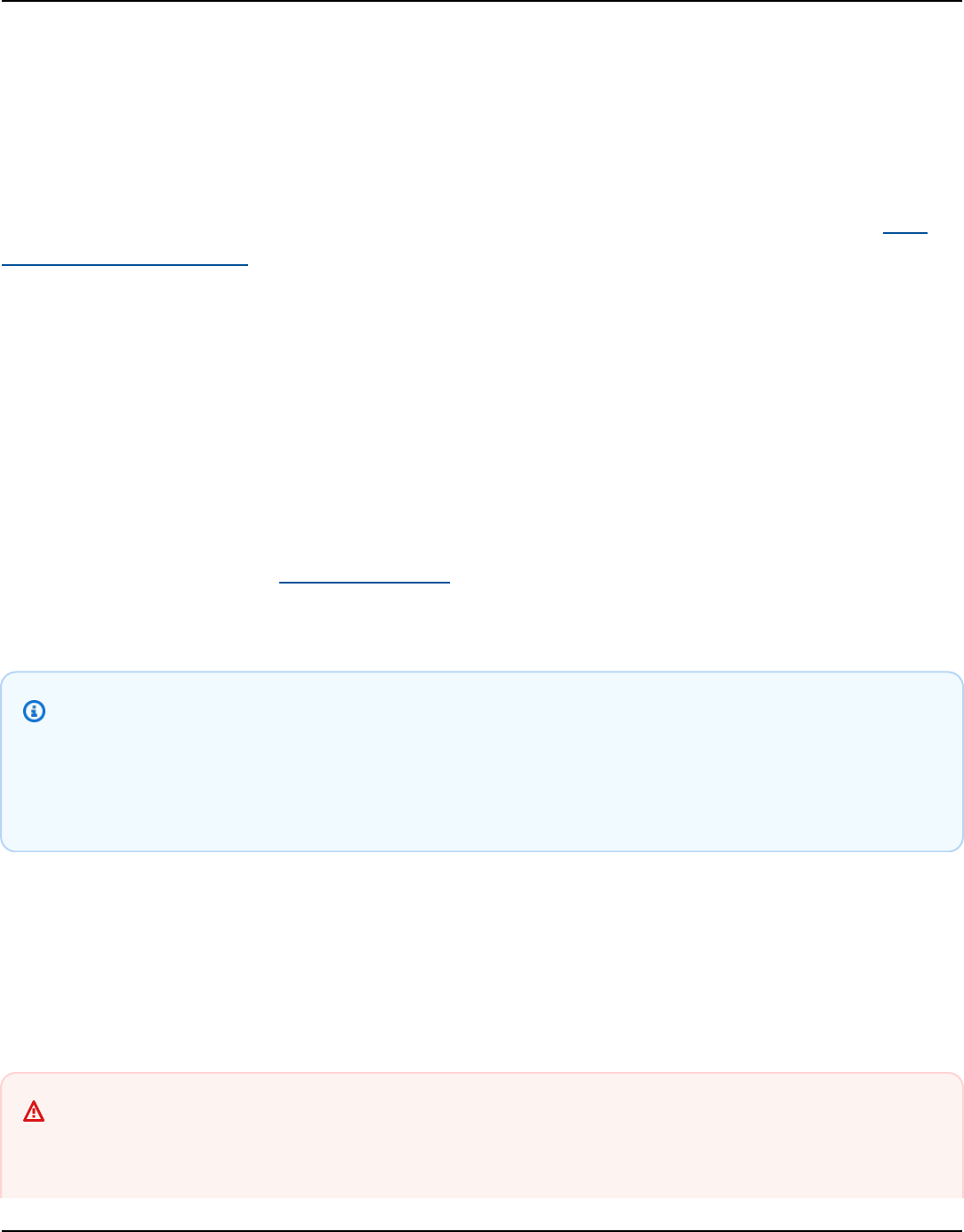
AWS Billing User Guide
Consolidating billing for AWS Organizations
You can use the consolidated billing feature in AWS Organizations to consolidate billing and
payment for multiple AWS accounts or multiple Amazon Web Services India Private Limited (AWS
India) accounts. Every organization in AWS Organizations has a management account that pays
the charges of all the member accounts. For more information about organizations, see the AWS
Organizations User Guide.
Consolidated billing has the following benefits:
• One bill – You get one bill for multiple accounts.
• Easy tracking – You can track the charges across multiple accounts and download the combined
cost and usage data.
• Combined usage – You can combine the usage across all accounts in the organization to share
the volume pricing discounts, Reserved Instance discounts, and Savings Plans. This can result in a
lower charge for your project, department, or company than with individual standalone accounts.
For more information, see Volume discounts.
• No extra fee – Consolidated billing is offered at no additional cost.
Note
The member account bills are for informational purpose only. The management account
might reallocate the additional volume discounts, Reserved Instance, or Savings Plans
discounts that your account receives.
If you have access to the management account, you can see a combined view of the AWS charges
that the member accounts incur. You also can get a cost report for each member account.
AWS and AWS India accounts can't be consolidated together. If your contact address is in India, you
can use AWS Organizations to consolidate AWS India accounts within your organization.
Important
When a member account leaves an organization, the member account can no longer access
Cost Explorer data that was generated when the account was in the organization. The data
Version 2.0 266

AWS Billing User Guide
isn't deleted, and the management account in the organization can still access the data.
If the member account rejoins the organization, the member account can access the data
again.
Topics
• Consolidated billing process
• Consolidated billing in AWS EMEA
• Consolidated billing in India
• Effective billing date, account activity, and volume discounts
• Reserved Instances
• Understanding Consolidated Bills
• Requesting shorter PDF invoices
• AWS Support charges for accounts in an AWS Organizations
Consolidated billing process
AWS Organizations provides consolidated billing so that you can track the combined costs of all
the member accounts in your organization. The following steps provide an overview of the process
for creating an organization and viewing your consolidated bill.
1. Open the AWS Organizations console or the AWS Billing and Cost Management console. If you
open the AWS Billing and Cost Management console, choose Consolidated Billing, and then
choose Get started. You are redirected to the AWS Organizations console.
2. Choose Create organization on the AWS Organizations console.
3. Create an organization from the account that you want to be the management account of
your new organization. For details, see Creating an Organization. The management account is
responsible for paying the charges of all the member accounts.
4. (Optional) Create accounts that are automatically member to the organization. For details, see
Creating an AWS account in Your Organization.
5. (Optional) Invite existing accounts to join your organization. For details, see Inviting an AWS
account to Join Your Organization.
6. Each month AWS charges your management account for all the member accounts in a
consolidated bill.
Consolidated billing process Version 2.0 267

AWS Billing User Guide
The management account is billed for all charges of the member accounts. However, unless
the organization is changed to support all features in the organization (not consolidated billing
features only) and member accounts are explicitly restricted by policies, each member account is
otherwise independent from the other member accounts. For example, the owner of a member
account can sign up for AWS services, access resources, and use AWS Premium Support unless
the management account restricts those actions. Each account owner continues to use their own
sign-in credentials, with account permissions assigned independently of other accounts in the
organization.
Securing the consolidated billing management account
The owner of the management account in an organization should secure the account by using AWS
Multi-Factor Authentication and a strong password that has a minimum of eight characters with
both uppercase and lowercase letters, at least one digit, and at least one special character. You can
change your password on the AWS Security Credentials page.
Consolidated billing in AWS EMEA
The consolidated daily invoice feature combines your charges, so that you receive fewer invoices
each day. You're automatically opted into this feature if you meet the following requirements:
• Your AWS account is invoiced through the Amazon Web Services EMEA SARL (AWS Europe)
entity. For more information, see Managing your payments in AWS Europe.
• You're using the pay by invoice payment method. This feature isn't available for credit card or
direct debit payment methods.
This feature consolidates the following:
• Daily subscriptions and out-of-cycle invoices into one invoice
• Credit memos into one invoice
For example, if you purchase three Reserved Instances and receive two credit memos today, you
receive a total of two invoices at the end of the day. One invoice includes your Reserved Instance
purchases, and the other includes your credit memos.
Consolidated billing in AWS EMEA Version 2.0 268

AWS Billing User Guide
Consolidation period
AWS processes subscription invoices and refunds between 23:59 to 24:00 midnight UTC. AWS then
generates the consolidated invoices and credit memos during the previous 24-hour period. Your
consolidated bill is available within minutes.
Services covered
Your daily invoice includes AWS service subscriptions, out-of-cycle purchases, and credit memos.
This feature doesn't include the following:
• AWS Marketplace purchases
• AWS monthly service and anniversary invoices
• Credit memos issued for different original invoices
For example, suppose that you receive credit memo A for original invoice ID 123, and another
credit memo B for original invoice ID 456. Both credit memos aren't consolidated, even if they're
issued on the same day. Credit memos are consolidated only if they're issued against the same
original invoice ID.
• AWS Support purchases, such as changing AWS Support plans
• Charges for some Amazon Route53 offerings (for example, purchasing a domain name), AWS
Partner Network, AWS Managed Services, and AWS conferences such as re:Invent, and re:Inforce
Currency and foreign exchange rate
Credit memos use the same currency and exchange rate as the original invoice.
For subscription invoices, AWS applies the latest currency preference to all one-time fees processed
during the previous 24-hour period. For example, if you purchase a Reserved Instance in the
morning, and then change your preferred currency in the afternoon, AWS converts the currency
for the morning purchase into the new preferred currency. This update appears in the consolidated
invoice generated for that day.
Changes to your AWS Cost and Usage Report
With consolidated billing, it can take up to 24 hours after AWS processes your one-time charges for
them to appear in your AWS Cost and Usage Report (AWS CUR), Cost Explorer, or cost budget alerts
set up using AWS Budgets.
Consolidation period Version 2.0 269

AWS Billing User Guide
You can continue to view your amortized one-time upfront Reserved Instance charges in AWS CUR,
Cost Explorer, or Budgets.
Turn off consolidated billing
By default, this feature is enabled for your account. If you don't want this feature, use the following
procedure.
To turn off consolidated billing
1. Sign in to the AWS Support Center Console.
2. Create an Account & billing support case.
3. For Service, choose Billing,
4. For Category, choose Consolidated Billing.
5. Follow the prompts to create your support case.
Note
Repeat this procedure if you want to turn on consolidated billing later.
Consolidated billing in India
If you sign up for a new account and choose India for your contact address, your user agreement is
with Amazon Web Services India Private Limited (AWS India), a local AWS seller in India. AWS India
manages your billing, and your invoice total is listed in rupees instead of in dollars. After you create
an account with AWS India, you can't change the country in your contact information.
If you have an existing account with an India address, your account is either with AWS or AWS India,
depending on when you opened the account. To learn whether your account is with AWS or AWS
India, see Finding the seller of record. If you're an existing AWS customer, you can continue to use
your AWS account. You can also choose to have both an AWS account and an AWS India account,
although they can't be consolidated into the same organization. (Currently, you can't migrate an
existing account from AWS to AWS India.) If you are in an AWS India organization, the management
account can edit the PAN numbers of all member accounts.
If you create an organization from a management account that is with AWS India, you can invite
only other AWS India accounts to join your organization. You can't invite AWS accounts.
Turn off consolidated billing Version 2.0 270

AWS Billing User Guide
If you create an organization from a management account that is with AWS, you can invite only
other AWS accounts to join your organization. You can't invite AWS India accounts.
Effective billing date, account activity, and volume discounts
When the member account owner accepts your request to join the organization, you immediately
become responsible for the member account's charges. If the member account joins in the middle
of the month, the management account is billed only for the latter part of the month.
For example, if a member account joins an organization on March 10, then AWS bills the
management account for the member account’s period of usage starting on March 10. The
member account's original owner is still billed for the first part of the month.
Billing and account activity
Each month, AWS charges the management account owner, and not the owners of the member
accounts. To see the total usage and charges across all the accounts in an organization, see
the Bills page of the management account. AWS updates the page multiple times each day.
Additionally, AWS makes a downloadable cost report available each day.
Although the owners of the member accounts aren't charged, they can still see their usage and
charges by going to their AWS Bills pages. They can't view or obtain data for the management
account or any other member accounts on the bill.
Volume discounts
For billing purposes, AWS treats all of the accounts in the organization as if they were one account.
Some services, such as AWS Data Transfer and Amazon S3, have volume pricing tiers across certain
usage dimensions that give you lower prices the more you use the service. With consolidated
billing, AWS combines the usage from all accounts to determine which volume pricing tiers to
apply, giving you a lower overall price whenever possible. AWS then allocates each member
account a portion of the overall volume discount based on the account's usage.
For example, let's say that Bob's consolidated bill includes both Bob's own account and Susan's
account. Bob's account is the management account, so he pays the charges for both himself and
Susan.
Bob transfers 8 TB of data during the month and Susan transfers 4 TB.
Effective billing date, account activity, and volume discounts Version 2.0 271

AWS Billing User Guide
For the purposes of this example, AWS charges $0.17 per GB for the first 10 TB of data transferred
and $0.13 for the next 40 TB. This translates into $174.08 per TB (= .17*1024) for the first 10 TB,
and $133.12 per TB (= .13*1024) for the next 40 TB. Remember that 1 TB = 1024 GB.
For the 12 TB that Bob and Susan used, Bob's management account is charged ($174.08 * 10 TB) +
($133.12 * 2 TB) = $1740.80 + $266.24 = $2,007.04.
Without the benefit of tiering across the consolidated bill, AWS would have charged Bob and Susan
each $174.08 per TB for their usage, for a total of $2,088.96.
To learn more about pricing, see AWS Pricing.
AWS Free Tier for AWS Organizations
For services such as Amazon EC2 that support a free tier, AWS applies the free tier to the total
usage across all accounts in an AWS organization. AWS doesn't apply the free tier to each account
individually.
AWS provides budgets that track whether you exceed the free tier limits or are forecasted to
go over the free tier limits. Free tier budgets are not enabled for organizations by default.
Management account can opt in to free tier usage alerts through the Billing and Cost Management
console. Free tier usage alerts aren't available to individual member accounts.
For more information about free tiers, see AWS Free Usage Tier FAQs. For more information about
AWS Free Tier usage alerts through AWS Budgets and opting in, see Using AWS Free Tier usage
alerts.
Reserved Instances
For billing purposes, the consolidated billing feature of AWS Organizations treats all the accounts
in the organization as one account. This means that all accounts in the organization can receive the
hourly cost benefit of Reserved Instances that are purchased by any other account.
You can turn off Reserved Instance discount sharing on the Preferences page on the Billing and
Cost Management console. For more information, see the section called “Reserved Instances and
Savings Plans discount sharing”.
Topics
• Billing examples for specific services
Reserved Instances Version 2.0 272

AWS Billing User Guide
• Reserved Instances and Savings Plans discount sharing
Billing examples for specific services
There are a few other things to know about how consolidated billing works with specific services in
AWS.
Amazon EC2 Reserved Instances
For an Amazon EC2 Reserved Instances example, suppose that Bob and Susan each have an
account in an organization. Susan has five Reserved Instances of the same type, and Bob has
none. During one particular hour, Susan uses three instances and Bob uses six, for a total of nine
instances on the organization's consolidated bill. AWS bills five instances as Reserved Instances,
and the remaining four instances as regular instances.
Bob receives the cost benefit from Susan's Reserved Instances only if he launches his instances in
the same Availability Zone where Susan purchased her Reserved Instances. For example, if Susan
specifies us-west-2a when she purchases her Reserved Instances, Bob must specify us-west-2a
when he launches his instances to get the cost benefit on the organization's consolidated bill.
However, the actual locations of Availability Zones are independent from one account to another.
For example, the us-west-2a Availability Zone for Bob's account might be in a different location
than the location for Susan's account.
Amazon RDS Reserved DB Instances
For an Amazon RDS Reserved DB Instances example, suppose that Bob and Susan each have an
account in an organization. Susan has five Reserved DB Instances, and Bob has none. During one
particular hour, Susan uses three DB Instances and Bob uses six, for a total of nine DB Instances
on the consolidated bill. AWS bills five as Reserved DB Instances, and the remaining four as On-
Demand DB Instances (for Amazon RDS Reserved DB Instance charges, see the pricing page). Bob
receives the cost benefit from Susan's Reserved DB Instances only if he launches his DB Instances in
the same region where Susan purchased her Reserved DB Instances.
Also, all of the relevant attributes of Susan's Reserved DB Instances should match the attributes
of the DB Instances launched by Bob as described in Reserved DB Instances. For example, let's say
Susan purchased a Reserved DB Instance in us-west-2 with the following attributes:
• DB Engine: Oracle
Billing examples for specific services Version 2.0 273

AWS Billing User Guide
•
DB Instance Class: m1.xlarge
• Deployment Type: Multi-AZ
This means that Bob must launch his DB Instances in us-west-2 with the exact same attributes to
get the cost benefit on the organization's consolidated bill.
Amazon ElastiCache reserved node instances
For an Amazon ElastiCache Reserved Nodes example, suppose Bob and Susan each have an account
in an organization. Susan has five Reserved Nodes, and Bob has none. During one particular hour,
Susan uses three nodes and Bob uses six. This makes a total of nine nodes used on the consolidated
bill.
AWS bills five as Reserved Nodes. AWS bills the remaining four as On-Demand nodes. (For Amazon
ElastiCache Reserved Nodes charges, see Amazon ElastiCache Pricing.) Bob receives the cost benefit
from Susan's Reserved Nodes only if he launches his On-Demand nodes in the same region where
Susan purchased her Reserved Nodes.
Also, to receive the cost benefit of Susan’s Reserved Nodes, all attributes of Bob's nodes must
match the attributes of the nodes launched by Susan. For example, let's say Susan purchased
Reserved Nodes in us-west-2 with the following attributes:
• Cache engine: Redis
•
Node type: cache.r3.large
Bob must launch his ElastiCache nodes in us-west-2 with the same attributes to get the cost
benefit on the organization's consolidated bill.
Amazon OpenSearch Service Reserved Instances
For an Amazon OpenSearch Service Reserved Nodes example, suppose Bob and Susan each have
an account in an organization. Susan has five Reserved Instances, and Bob has none. During one
particular hour, Susan uses three instances and Bob uses six. This makes a total of nine instances
used on the consolidated bill.
AWS bills five as Reserved Instances. AWS bills the remaining four as On-Demand instances. (For
Amazon OpenSearch Service Reserved Instance charges, see Amazon OpenSearch Service Pricing.)
Bob receives the cost benefit from Susan's Reserved Instances only if he launches his On-Demand
instances in the same AWS Region where Susan purchased her Reserved Instances.
Billing examples for specific services Version 2.0 274
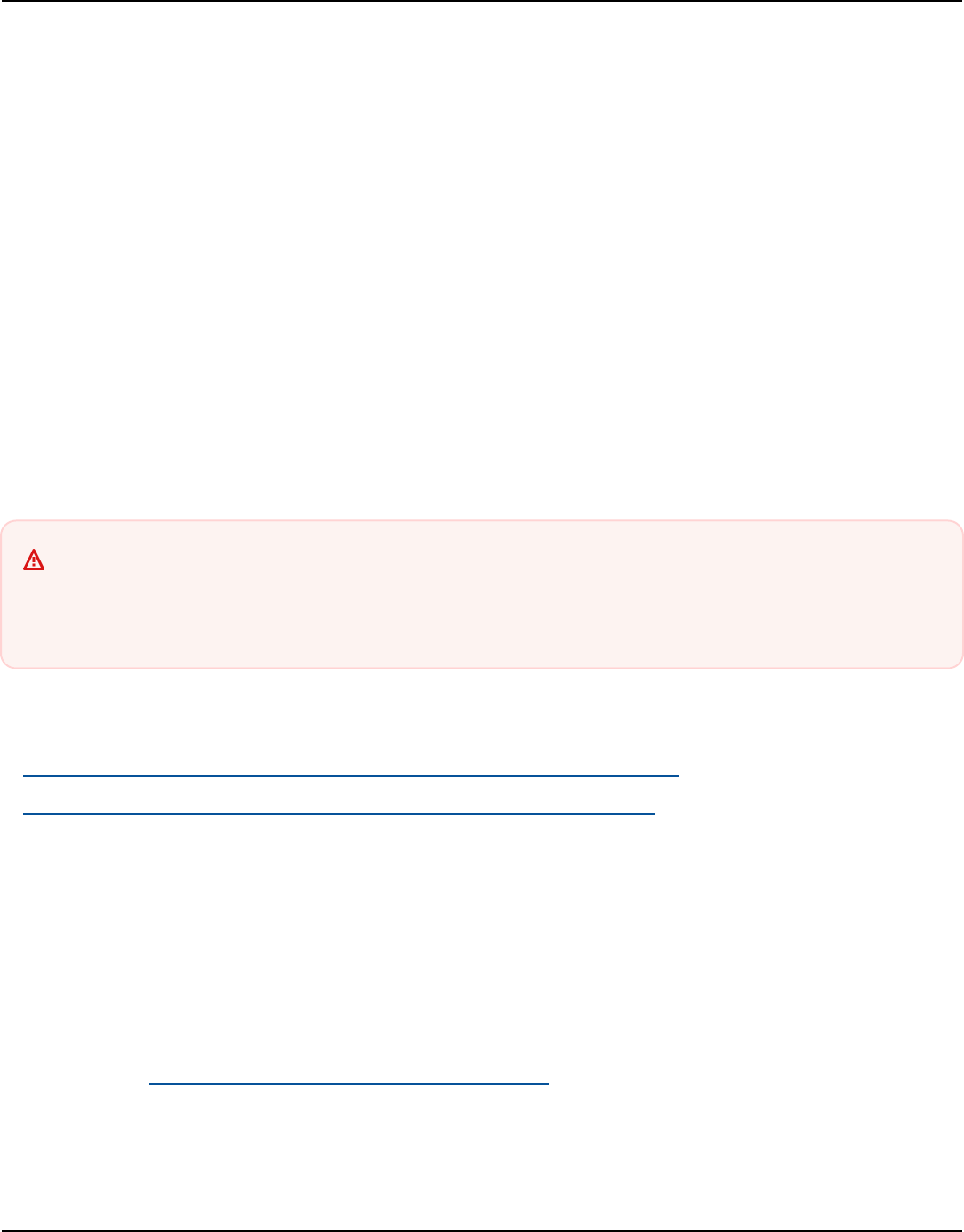
AWS Billing User Guide
To receive the cost benefit of Susan’s Reserved Instances, Bob also must use the same instance type
that Susan reserved. For example, let's say Susan purchased m4.large.elasticsearch instances
in us-west-2. Bob must launch his Amazon OpenSearch Service domains in us-west-2 with the
same instance type to get the cost benefit on the organization's consolidated bill.
Reserved Instances and Savings Plans discount sharing
The management account of an organization can deactivate Reserved Instance discount and
Savings Plans discount sharing for any accounts in that organization, including the management
account. This means that Reserved Instances and Savings Plans discounts aren't shared between
any accounts that have deactivated sharing.
To share an Reserved Instance or Savings Plans discount with an account, both accounts must have
sharing activated. You can change your preference at any time. Each estimated bill is computed by
using the last set of preferences. The final bill for the month is calculated based on the preferences
set at 23:59:59 UTC time on the last day of the month.
Important
Deactivating Reserved Instance and Savings Plans discount sharing can result in a higher
monthly bill.
Topics
• Deactivating shared Reserved Instances and Savings Plans discounts
• Activating shared Reserved Instances and Savings Plans discounts
Deactivating shared Reserved Instances and Savings Plans discounts
You can deactivate sharing discounts for individual member accounts.
To deactivate shared Reserved Instances and Savings Plans discounts
1. Sign in to the AWS Management Console and open the AWS Billing and Cost Management
console at https://console.aws.amazon.com/billing/.
2. In the navigation pane, choose Billing preferences.
3. Under Reserved Instances and Savings Plans discount sharing preference by account, select
the accounts that you want to deactivate discount sharing for.
Reserved Instances and Savings Plans discount sharing Version 2.0 275

AWS Billing User Guide
4. Choose Deactivate.
5. In the Deactivate Reserved Instance and Savings Plan sharing dialog box, choose Deactivate.
Tip
You can also choose Actions and then choose Deactivate All to deactivate Reserved
Instance and Savings Plans sharing for all accounts.
Activating shared Reserved Instances and Savings Plans discounts
You can use the console to activate Reserved Instance sharing discounts for an account.
You can share Savings Plans with a set of accounts. You can either choose to not share the benefit
with other accounts, or to open up line item eligibility for the entire consolidated billing family of
accounts.
To activate shared Reserved Instances and Savings Plans discounts
1. Sign in to the AWS Management Console and open the AWS Billing and Cost Management
console at https://console.aws.amazon.com/billing/.
Note
Ensure that you're signed in to the management account of your AWS Organizations.
2. In the navigation pane, choose Billing preferences.
3. Under Reserved Instances and Savings Plans discount sharing preference by account, select
the accounts that you want to activate discount sharing for.
4. Choose Activate.
5. In the Activate Reserved Instance and Savings Plan sharing dialog box, choose Activate.
Tip
You can also choose Actions and then choose Activate All to activate Reserved Instance
and Savings Plans sharing for all accounts.
Reserved Instances and Savings Plans discount sharing Version 2.0 276

AWS Billing User Guide
Understanding Consolidated Bills
If you manage an organization in AWS Organizations, you can use consolidated billing to view
aggregated usage costs for accounts in the organization. Consolidated billing can also help you
reduce those costs. For example, to ensure that you pay the lowest available prices for AWS
products and services, AWS offers pricing tiers that reward higher usage with lower prices and
discounted rates for purchasing instances in advance (known as reservations or Reserved Instances).
Using consolidated billing, you can combine usage from multiple accounts into a single invoice,
allowing you to reach the tiers with lower prices faster. You can also apply unused reservations
from one account to another account's instance usage.
Topics
• Calculating Consolidated Bills
• Pricing Tiers
• Reserved Instances
• Savings Plans
• Blended Rates and Costs
Calculating Consolidated Bills
In an organization, the management account is responsible for paying all charges that the member
accounts incur. If you're an administrator of a management account and you have the appropriate
permissions, you can view aggregated usage costs for Reserved Instance discounts and volume
tiering for all member accounts. You can also view the charges that individual member accounts
incur, because AWS creates a separate bill for each member account based on that account’s usage.
AWS also includes invoice summaries for each account in the management account invoice. During
each billing period, AWS calculates your estimated charges several times each day so that you can
track your costs as your organization incurs them. Your bill is not finalized until the beginning of
the next month.
Note
Like member accounts, a management account can incur usage charges. However, as a best
practice you shouldn't use the management account to run AWS services. An exception
is for services and resources that are required to manage the organization itself. For
Understanding Consolidated Bills Version 2.0 277

AWS Billing User Guide
example, as part of managing your consolidated billing you might create an S3 bucket in
the management account to store AWS Cost and Usage Reports.
Pricing Tiers
Some AWS services are priced in tiers, which specify unit costs for defined amounts of AWS usage.
As your usage increases, your usage crosses thresholds into new pricing tiers that specify lower
unit costs for additional usage in a month. Your AWS usage is measured every month. To measure
usage, AWS treats all accounts in an organization as a single account. Member accounts don't reach
tier thresholds individually. Instead, all usage in the organization is aggregated for each service,
which ensures faster access to lower-priced tiers. As each month begins, your service usage is reset
to zero.
Each AWS service publishes its pricing information independently. You can access all individual
pricing pages from the AWS Pricing page.
Calculating Costs for Amazon S3 Standard Storage
The following table shows an example of pricing tiers (your costs might vary). For more
information, see Amazon S3 pricing.
Amazon S3 Pricing Tiers
Tier description Price per GB Price per TB
First 1 TB/month $0.10 $100.00
Next 49 TB/month $0.08 $80.00
Next 450 TB/month $0.06 $60
The following table shows Amazon S3 usage for an organization that includes a management
account and three member accounts.
Example S3 Usage Blended Cost
Pricing Tiers Version 2.0 278

AWS Billing User Guide
Account Tier Storage
amount
(GB)
Storage
amount
(TB)
Unblended
rate (/GB)
Unblended
rate (/TB)
Unblended
cost
First TB/
month
1,000 1 $0.10 100 $100.00
Next 49
TB/month
49,000 49 $0.08 80 $3,920.00
Managemen
t
Next 450
TB/month
45,000 45 $0.06 60 $2,700.00
Total 95,000 95 $6,720.00
Account Tier Storage
amount
(GB)
Storage
amount
(TB)
Unblended
rate (/
GB)
Unblended
rate (/
TB)
Unblended
cost
Blended
rate (/
GB)
(=
$6,720/
95,000)
Blended
rate (/
TB)
(=
$6,720/
95)
Blended
cost
(=
Blended
rate *
storage)
First
TB/
month
1,000 1 $0.10 100 $100.00 0.070737 70.737 $70.37
Next
49 TB/
month
14,000 14 $0.08 80 $1,120.000.070737 70.737 $990.318
Member
1
Next
450
TB/
month
15,000 15 $0.06 60 $900.00 0.070737 70.737 $1,061.05
5
Pricing Tiers Version 2.0 279

AWS Billing User Guide
Account Tier Storage
amount
(GB)
Storage
amount
(TB)
Unblended
rate (/
GB)
Unblended
rate (/
TB)
Unblended
cost
Blended
rate (/
GB)
(=
$6,720/
95,000)
Blended
rate (/
TB)
(=
$6,720/
95)
Blended
cost
(=
Blended
rate *
storage)
Next
49 TB/
month
20,000 20 $0.08 80 $1,600.000.070737 70.737 $1,414.74Member
2
Next
450
TB/
month
15,000 15 $0.06 60 $900.00 0.070737 70.737 $1,061.55
Account Tier Storage
amount
(GB)
Storage
amount
(TB)
Unblended
rate (/
GB)
Unblended
rate (/
TB)
Unblended
cost
Blended
rate (/
GB)
(=
$6,720/
95,000)
Blended
rate (/
TB)
(=
$6,720/
95)
Blended
cost
(=
Blended
rate *
storage)
Next
49 TB/
month
15,000 15 $0.08 80 $1,200.000.070737 70.737 $1,061.55Member
3
Next
450
TB/
month
15,000 15 $0.06 60 $900.00 0.070737 70.737 $1,061.55
The costs in the preceding table are calculated as follows:
Pricing Tiers Version 2.0 280

AWS Billing User Guide
1. All usage for the organization adds up to 95 TB or 95,000 GB. This is rolled up into the
management account for recording purposes. The management account has no usage of its own.
Only the member accounts incur usage. Member 1 uses 1 TB of storage. This satisfies the first
pricing tier for the organization. The second pricing tier is satisfied by all three member accounts
(14 TB for member 1 + 20 TB for member 2 + 15 TB for member 3 = 49 TB). The third pricing
tier is applied to any usage over 49 TB. In this example, the third pricing tier is applied to total
member account usage of 45 TB.
2. The total cost is calculated by adding the cost of the first TB (1,000 GB * $0.10 = 1 TB * $100.00
= $100.00) to the cost of the next 49 TB (49,000 GB * $0.08 = 49 TB * $80.00 = $3920.00) and
the cost of the remaining 45 TB (45,000 GB * $0.06 = 45 TB * $60.00 = $2700.00), for a total of
$6,720 ($100.00 + $3920.00 + $2700.00 = $6720.00).
The preceding example shows how using consolidated billing in AWS Organizations helps lower the
overall monthly cost of storage. If you calculate the cost for each member account separately, the
total cost is $7,660 rather than $6,720. By aggregating the usage of the three accounts, you reach
the lower-priced tiers sooner. The most expensive storage, the first TB, is charged at the highest
price just once, rather than three times. For example, three TB of storage at the most expensive
rate of $100/TB would result in a charge of $300. Charging this storage as 1 TB ($100) and two
additional TB at $80 ($160) results in a total charge of $260.
Reserved Instances
AWS also offers discounted hourly rates in exchange for an upfront fee and term contract.
Zonal Reserved Instances
A Reserved Instance is a reservation that provides a discounted hourly rate in exchange for an
upfront fee and term contract. Services such as Amazon Elastic Compute Cloud (Amazon EC2) and
Amazon Relational Database Service (Amazon RDS) use this approach to sell reserved capacity
for hourly use of Reserved Instances. It is not a virtual machine. It is a commitment to pay in
advance for specific Amazon EC2 or Amazon RDS instances. In return, you get a discounted rate
as compared to On-Demand Instance usage. From a technical perspective, there is no difference
between a Reserved Instance and an On-Demand Instance. When you launch an instance, AWS
checks for qualifying usage across all accounts in an organization that can be applied to an active
reservation. For more information, see Reserved Instances in the Amazon EC2 User Guide and
Working with Reserved DB Instances in the Amazon Relational Database Service Developer Guide.
Reserved Instances Version 2.0 281

AWS Billing User Guide
When you reserve capacity with Reserved Instances, your hourly usage is calculated at a discounted
rate for instances of the same usage type in the same Availability Zone.
Regional Reserved Instances
Regional Reserved Instances don't reserve capacity. Instead, they provide Availability Zone
flexibility and in certain cases instance size flexibility. Availability Zone flexibility allows you to
run one or more instances in any Availability Zone in your reserved AWS Region. The Reserved
Instance discount is applied to any usage in any Availability Zone. Instance size flexibility provides
the Reserved Instance discount to instance usage regardless of size, within that instance family.
Instance size flexibility applies to only regional Reserved Instances on the Linux/Unix platform with
default tenancy. For more information about regional Reserved Instances, see Reservation Details
in the Cost and Usage Reports Guide in this documentation and Applying Reserved Instances in the
Amazon Elastic Compute Cloud User Guide for Linux Instances.
Calculating Costs for Amazon EC2 with Reserved Instances
AWS calculates the charges for Amazon EC2 instances by aggregating all the EC2 usage for a
specific instance type in a specific AWS Region for an organization.
Calculation Process
AWS calculates blended rates for Amazon EC2 instances using the following logic:
1. AWS aggregates usage for all accounts in an organization for the month or partial month, and
calculates costs based on unblended rates such as rates for On-Demand and Reserved Instances.
Line items for these costs are created for the management account. This bill computation model
attempts to apply the lowest unblended rates that each line item is eligible for. The allocation
logic first applies Reserved Instance hours, then free tier hours, and then On-Demand rates
to any remaining usage. In the AWS Cost and Usage Reports, you can see line items for these
aggregated costs.
2. AWS identifies each Amazon EC2 usage type in each AWS Region and allocates cost from the
aggregated management account to the corresponding member account line items for identical
usage types in the same region. In the AWS Cost and Usage Reports, the Unblended Rate
column shows that rate applied to each line item.
Reserved Instances Version 2.0 282

AWS Billing User Guide
Note
When AWS assigns Reserved Instance hours to member accounts, it always starts
with the account that purchased the reservation. If there are hours from the capacity
reservation left over, AWS applies them to other accounts that operate identical usage
types in the same Availability Zone.
AWS allocates a regional RI by instance size: The RI is applied first to the smallest
instance in the instance family, then to the next smallest, and so on. AWS applies an RI or
a fraction of an RI based on the normalization factor of the instance. The order in which
AWS applies RIs doesn't result in a price difference.
Savings Plans
Savings Plans is a flexible pricing model that can help you reduce your AWS usage bill. Compute
Savings Plans enables you to commit to an amount each hour, and receive discounted Amazon EC2,
Fargate, and AWS Lambda usage up to that amount.
Calculating Costs with Savings Plans
AWS calculates the charges for Amazon EC2, Fargate, and AWS Lambda by aggregating all usage
that's not covered by Reserved Instances, and applying the Savings Plans rates starting with the
highest discount.
The Savings Plans are applied to the account that owns the Savings Plans. Then, it is shared with
other accounts in the AWS organization. For more information, see Understanding How Savings
Plans are Applied to Your Usage in the Savings Plans User Guide.
Blended Rates and Costs
Blended rates are the averaged rates of the Reserved Instances and On-Demand Instances that are
used by member accounts in an organization in AWS Organizations. AWS calculates blended costs
by multiplying the blended rate for each service with an account’s usage of that service.
Savings Plans Version 2.0 283

AWS Billing User Guide
Note
• AWS shows each member account their charges as unblended costs. AWS continues to
apply all of the consolidated billing benefits such as reservations and tiered prices across
all member accounts in AWS Organizations.
• Blended rates for Amazon EC2 are calculated at the hourly level.
This section includes examples that show how AWS calculates blended rates for the following
services.
• Calculating Blended Rates for Amazon S3 Standard Storage
• Calculating Blended Rates for Amazon EC2
Calculating Blended Rates for Amazon S3 Standard Storage
AWS calculates blended rates for Amazon S3 standard storage by taking the total cost of storage
and dividing by the amount of data stored per month.
Using the example from Calculating Consolidated Bills where we calculated a cost of $6,720 for a
management account and three member accounts, we calculate the blended rates for the accounts
using the following logic:
1. The blended rate in GB is calculated by dividing the total cost ($6,720) by the amount of storage
(95,000 GB) to produce a blended rate of $0.070737/GB. The blended rate in TB is calculated by
dividing the total cost ($6,720) by the amount of storage (95 TB) to produce a blended rate of
$70.737/TB.
2. The blended cost for each member account is allocated by multiplying the blended rate (for GB
or TB) by the usage, resulting in the amounts listed in the Blended Cost column. For example,
Member 1 uses 14,000 GB of storage priced at the blended rate of $0.070737 (or 14 TB priced at
$70.737) for a blended cost of $990.318.
Calculating Blended Rates for Amazon EC2
The consolidated billing logic aggregates Amazon EC2 costs to the management account and then
allocates it to the member accounts based on proportional usage.
Blended Rates and Costs Version 2.0 284

AWS Billing User Guide
For this example, all usage is of the same usage type, occurs in the same Availability Zone, and
is for the same Reserved Instance term. This example covers Full Upfront and Partial Upfront
Reserved Instances.
The following table shows line items that represent the calculation of line items for Amazon EC2
usage for a 720-hour (30-day) month. Each instance is of the same usage type (t2.small) running
in the same Availability Zone. The organization has purchased three Reserved Instances for a one-
year term. Member Account 1 has three Reserved Instances. Member Account 2 has no Reserved
Instances, but uses an On-Demand Instance.
Line
item
account
Billing
type
Usage
type
Upfront
cost
Monthly
cost
Usage
available
Usage
quantity
Unblended
rate
Unblended
cost
Blended
rate
Blended
cost
RI, All
upfront
t2.small $274.00 $0.00 - 1440 - - - -Managemen
t
account
RI,
Partial
upfront
t2.small $70.00 $5.84 - 720 - - - -
RI
applied
t2.small - - 1440 1440 $0.00 $0.00 $0.00575$8.28Member
account
1
RI
applied
t2.small - - 720 720 $0.00 $0.00 $0.00575$4.14
Member
account
2
On-
Demand
t2.small - - - 720 $0.023 $16.56 $0.00575$4.14
Total 2160 2880 $16.56 $16.56
The data in the preceding table shows the following information:
• The organization purchased 1,440 hours of Reserved Instance capacity at a Full Upfront rate (two
EC2 instances).
Blended Rates and Costs Version 2.0 285

AWS Billing User Guide
• The organization purchased 720 hours of Reserved Instance capacity at a Partial Upfront rate
(one EC2 instance).
• Member account 1 completely uses the two Full Upfront Reserved Instances and the one Partial
Upfront Reserved Instance for a total usage of 2,160 hours. Member account 2 uses 720 hours of
an On-Demand Instance. Total usage for the organization is 2,880 hours (2160 + 720 = 2,880).
• The unblended rate for the three Reserved Instances is $0.00. The unblended cost of an RI is
always $0.00 because RI charges are not included in blended rate calculations.
• The unblended rate for the On-Demand Instance is $0.023. Unblended rates are associated with
the current price of the product. They can't be verified from information in the preceding table.
• The blended rate is calculated by dividing the total cost ($16.56) by the total amount of Amazon
EC2 usage (2,880 hours). This produces a rate of $0.005750000 dollars per hour.
Requesting shorter PDF invoices
The AWS PDF invoice contains the AWS service charges for the payer account (management
account) and associated member accounts that are part of your AWS Organizations.
This AWS PDF invoice has the following sections:
1. Overall invoice summary
2. AWS service summary for all accounts
3. Summary activity for member accounts
4. Detailed activity for member accounts
When you request this feature for your account, member account details are removed from the PDF
invoice, so that you receive fewer pages.
Note
This feature only removes the member account details from the PDF invoice. You can
continue to view this information in the Billing and Cost Management console and AWS
Cost Explorer.
You can request the following PDF invoice summary options:
Requesting shorter PDF invoices Version 2.0 286

AWS Billing User Guide
Invoice summary option 1
Option 1 contains the following sections:
1. Overall invoice summary
2. AWS service summary for all accounts
3. Summary activity for member accounts
Option 1 excludes the detailed activity for member accounts.
Invoice summary option 2
Option 2 contains the following sections:
1. Overall invoice summary
2. AWS service summary for all accounts
Option 2 excludes the summary activity and the detailed activity for member accounts.
To request either option, see the following procedure.
To request shorter PDF invoices
1. Sign in to the AWS Support Center Console as the payer account.
2. Create an Account & billing support case.
3. For Service, choose Billing.
4. For Category, choose Consolidated Billing.
5. Follow the prompts to create your support case.
6. In the case details, specify which PDF invoice summary that you want for your account: Option
1 or 2.
After the support agent completes your request, your next available invoice is updated to use
your requested invoice option. This feature doesn't apply to previously generated invoices.
Note
You can follow the same procedure to change your invoice summary option or request the
original PDF invoice summary for member accounts.
Requesting shorter PDF invoices Version 2.0 287

AWS Billing User Guide
AWS Support charges for accounts in an AWS Organizations
AWS calculates AWS Support fees independently for each member account. Typically an AWS
Support subscription for a member account does not apply to the entire organization. Each
account subscribes independently. Enterprise Support plan customers have the option to include
multiple accounts in an aggregated monthly billing. Monthly charges for the Developer, Business,
and Enterprise Support plans are based on each month's AWS usage, subject to a monthly
minimum. AWS Support fees associated with Reserved Instance and Savings Plan purchases apply
to the member accounts that made the purchase. For more information, see AWS Support Plan
Pricing.
Organization support charges Version 2.0 288

AWS Billing User Guide
Security in AWS Billing
Cloud security at AWS is the highest priority. As an AWS customer, you benefit from a data center
and network architecture that is built to meet the requirements of the most security-sensitive
organizations.
Security is a shared responsibility between AWS and you. The shared responsibility model describes
this as security of the cloud and security in the cloud:
• Security of the cloud – AWS is responsible for protecting the infrastructure that runs AWS
services in the AWS Cloud. AWS also provides you with services that you can use securely. Third-
party auditors regularly test and verify the effectiveness of our security as part of the AWS
Compliance Programs. To learn about the compliance programs that apply to AWS Billing and
Cost Management, see AWS Services in Scope by Compliance Program.
• Security in the cloud – Your responsibility is determined by the AWS service that you use. You
are also responsible for other factors including the sensitivity of your data, your company’s
requirements, and applicable laws and regulations.
This documentation helps you understand how to apply the shared responsibility model when
using Billing and Cost Management. The following topics show you how to configure Billing
and Cost Management to meet your security and compliance objectives. You also learn how to
use other AWS services that help you to monitor and secure your Billing and Cost Management
resources.
Topics
• Data protection in AWS Billing and Cost Management
• Identity and Access Management for AWS Billing
• Logging and monitoring in AWS Billing and Cost Management
• Compliance validation for AWS Billing and Cost Management
• Resilience in AWS Billing and Cost Management
• Infrastructure security in AWS Billing and Cost Management
Version 2.0 289

AWS Billing User Guide
Data protection in AWS Billing and Cost Management
The AWS shared responsibility model applies to data protection in AWS Billing and Cost
Management. As described in this model, AWS is responsible for protecting the global
infrastructure that runs all of the AWS Cloud. You are responsible for maintaining control over your
content that is hosted on this infrastructure. You are also responsible for the security configuration
and management tasks for the AWS services that you use. For more information about data
privacy, see the Data Privacy FAQ. For information about data protection in Europe, see the AWS
Shared Responsibility Model and GDPR blog post on the AWS Security Blog.
For data protection purposes, we recommend that you protect AWS account credentials and set
up individual users with AWS IAM Identity Center or AWS Identity and Access Management (IAM).
That way, each user is given only the permissions necessary to fulfill their job duties. We also
recommend that you secure your data in the following ways:
• Use multi-factor authentication (MFA) with each account.
• Use SSL/TLS to communicate with AWS resources. We require TLS 1.2 and recommend TLS 1.3.
• Set up API and user activity logging with AWS CloudTrail.
• Use AWS encryption solutions, along with all default security controls within AWS services.
• Use advanced managed security services such as Amazon Macie, which assists in discovering and
securing sensitive data that is stored in Amazon S3.
• If you require FIPS 140-3 validated cryptographic modules when accessing AWS through a
command line interface or an API, use a FIPS endpoint. For more information about the available
FIPS endpoints, see Federal Information Processing Standard (FIPS) 140-3.
We strongly recommend that you never put confidential or sensitive information, such as your
customers' email addresses, into tags or free-form text fields such as a Name field. This includes
when you work with Billing and Cost Management or other AWS services using the console, API,
AWS CLI, or AWS SDKs. Any data that you enter into tags or free-form text fields used for names
may be used for billing or diagnostic logs. If you provide a URL to an external server, we strongly
recommend that you do not include credentials information in the URL to validate your request to
that server.
Data protection Version 2.0 290

AWS Billing User Guide
Identity and Access Management for AWS Billing
AWS Identity and Access Management (IAM) is an AWS service that helps an administrator securely
control access to AWS resources. IAM administrators control who can be authenticated (signed in)
and authorized (have permissions) to use Billing resources. IAM is an AWS service that you can use
with no additional charge.
To start activating access to the Billing console, see IAM tutorial: grant access to the Billing console
in the IAM User Guide.
User types and billing permissions
This table summarizes the default actions that are permitted in Billing for each type of billing user.
User types and billing permissions
User type Description Billing permissions
Account owner The person or entity in whose
name your account is set up
as.
• Has full control of all Billing
and Cost Management
resources.
• Receives a monthly invoice
of AWS charges.
User A person or application
defined as a user in an
account by an account
owner or administrative user.
Accounts can contain multiple
users.
• Has permissions explicitl
y granted to the user or
a group that includes the
user.
• Can be granted permissio
n to view Billing and Cost
Management console
pages. For more informati
on, see Overview of
managing access permissio
ns.
• Can't close accounts.
Organization management
account owner
The person or entity associate
d with an AWS Organizations
• Has full control of all Billing
and Cost Managemen
Identity and Access Management Version 2.0 291

AWS Billing User Guide
User type Description Billing permissions
management account. The
management account pays
for AWS usage that is incurred
by a member account in an
organization.
t resources for the
management account only.
• Receives a monthly invoice
of AWS charges for the
management account and
member accounts.
• Views the activity of
member accounts in the
billing reports for the
management account.
Organization member
account owner
The person or entity associate
d with an AWS Organizat
ions member account. The
management account pays
for AWS usage that is incurred
by a member account in an
organization.
• Doesn't have permission to
review any usage reports or
account activity except for
its own. Doesn't have access
to usage reports or account
activity for other member
accounts in the organizat
ion or for the management
account.
• Doesn't have permission to
view billing reports.
• Has permission to update
account information
only for its own account.
Can't access other
member accounts or the
management account.
Overview of managing access permissions
Granting access to your billing information and tools
By default, IAM users don't have access to the AWS Billing and Cost Management console.
Overview of managing access Version 2.0 292

AWS Billing User Guide
When you create an AWS account, you begin with one sign-in identity that has complete access to
all AWS services and resources in the account. This identity is called the AWS account root user and
is accessed by signing in with the email address and password that you used to create the account.
We strongly recommend that you don't use the root user for your everyday tasks. Safeguard your
root user credentials and use them to perform the tasks that only the root user can perform. For
the complete list of tasks that require you to sign in as the root user, see Tasks that require root
user credentials in the IAM User Guide.
As an administrator, you can create roles under your AWS account that your users can assume.
After you create roles, you can attach your IAM policy to them, based on the access needed. For
example, you can grant some users limited access to some of your billing information and tools,
and grant others complete access to all of the information and tools.
To grant IAM entities access to the Billing and Cost Management console, complete the following:
• Activate IAM Access as the AWS account root user. You only need to complete this action once for
your account.
• Create your IAM identities, such as a user, group, or role.
• Use an AWS managed policy or create a customer managed policy that grants permission to
specific actions on the Billing and Cost Management console. For more information, see Using
identity-based policies for Billing.
For more information, see the IAM tutorial: Grant access to the Billing console in the IAM User
Guide.
Note
Permissions for Cost Explorer apply to all accounts and member accounts, regardless of the
IAM policies. For more information, see Controlling access to AWS Cost Explorer.
Activating access to the Billing and Cost Management console
IAM users and roles in an AWS account can't access the Billing and Cost Management console by
default. This is true even if they have IAM policies that grant access to certain Billing features. To
grant access, the AWS account root user can use the Activate IAM Access setting.
Overview of managing access Version 2.0 293

AWS Billing User Guide
If you use AWS Organizations, activate this setting in each management or member account where
you want to allow IAM user and role access to the Billing and Cost Management console. For more
information, see Activating IAM access to the AWS Billing and Cost Management console.
On the Billing console, the Activate IAM Access setting controls access to the following pages:
• Home
• Budgets
• Budgets Reports
• AWS Cost and Usage Reports
• Cost categories
• Cost allocation tags
• Bills
• Payments
• Credits
• Purchase Order
• Billing preferences
• Payment methods
• Tax settings
On the AWS Cost Management console, the Activate IAM Access setting controls access to the
following pages:
• Home
• Cost Explorer
• Reports
• Rightsizing recommendations
• Savings Plans recommendations
• Savings Plans utilization report
• Savings Plans coverage report
• Reservations overview
• Reservations recommendations
Overview of managing access Version 2.0 294
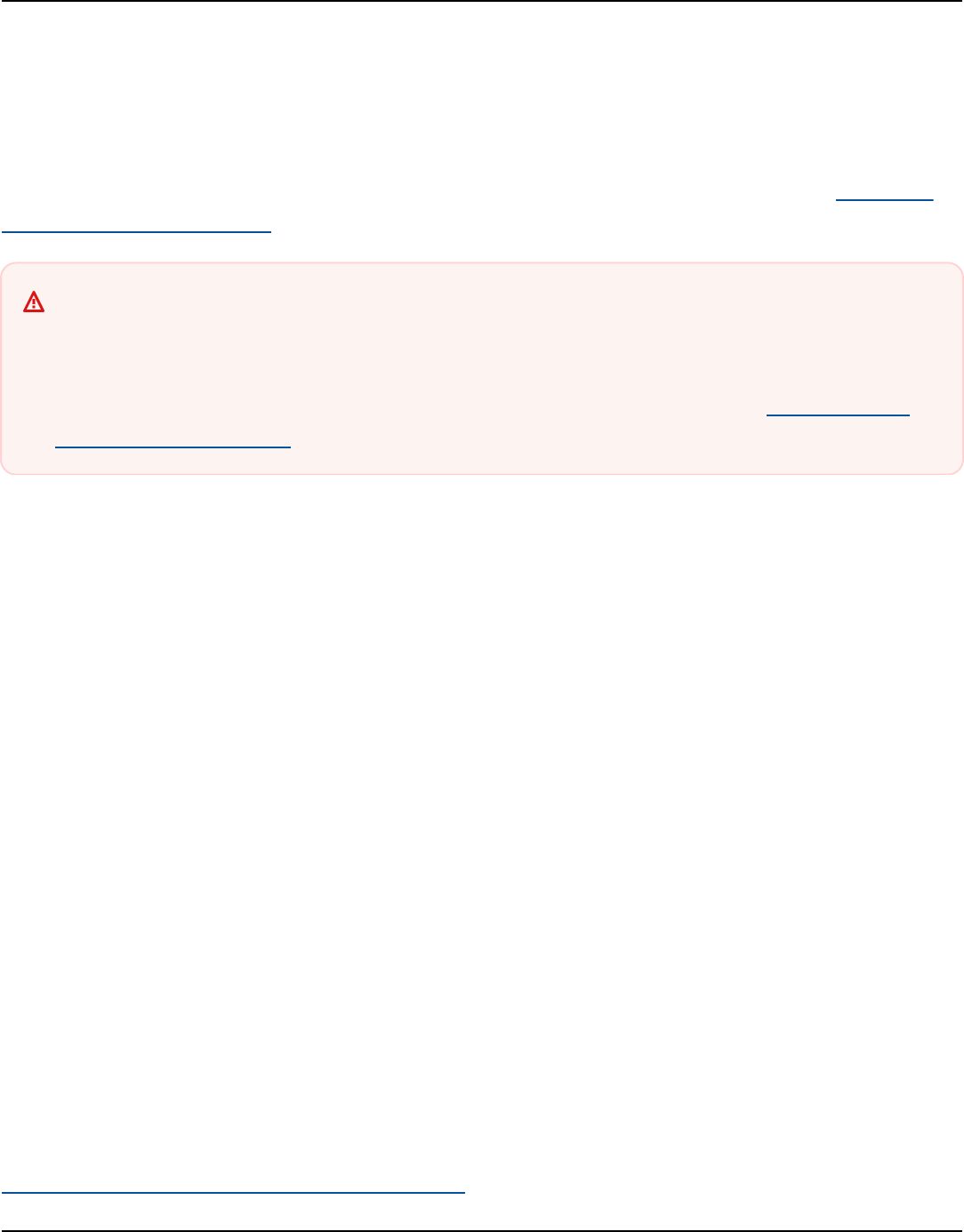
AWS Billing User Guide
• Reservations utilization report
• Reservations coverage report
• Preferences
For a list of pages the Activate IAM Access setting controls for the Billing console, see Activating
access to the Billing console in the Billing User Guide.
Important
Activating IAM access alone doesn't grant roles the necessary permissions for these Billing
and Cost Management console pages. In addition to activating IAM access, you must also
attach the required IAM policies to those roles. For more information, see Using identity-
based policies for Billing.
The Activate IAM Access setting doesn't control access to the following pages and resources:
• The console pages for AWS Cost Anomaly Detection, Savings Plans overview, Savings Plans
inventory, Purchase Savings Plans, and Savings Plans cart
• The Cost Management view in the AWS Console Mobile Application
• The Billing and Cost Management SDK APIs (AWS Cost Explorer, AWS Budgets, and AWS Cost and
Usage Reports APIs)
• AWS Systems Manager Application Manager
• The cost analysis capability in Amazon Q (preview)
Audience
How you use AWS Identity and Access Management (IAM) differs, depending on the work that you
do in Billing.
Service user – If you use the Billing service to do your job, then your administrator provides you
with the credentials and permissions that you need. As you use more Billing features to do your
work, you might need additional permissions. Understanding how access is managed can help you
request the right permissions from your administrator. If you cannot access a feature in Billing, see
Troubleshooting AWS Billing identity and access.
Audience Version 2.0 295

AWS Billing User Guide
Service administrator – If you're in charge of Billing resources at your company, you probably
have full access to Billing. It's your job to determine which Billing features and resources your
service users should access. You must then submit requests to your IAM administrator to change
the permissions of your service users. Review the information on this page to understand the basic
concepts of IAM. To learn more about how your company can use IAM with Billing, see How AWS
Billing works with IAM.
IAM administrator – If you're an IAM administrator, you might want to learn details about how you
can write policies to manage access to Billing. To view example Billing identity-based policies that
you can use in IAM, see Identity-based policy with AWS Billing.
Authenticating with identities
Authentication is how you sign in to AWS using your identity credentials. You must be
authenticated (signed in to AWS) as the AWS account root user, as an IAM user, or by assuming an
IAM role.
You can sign in to AWS as a federated identity by using credentials provided through an identity
source. AWS IAM Identity Center (IAM Identity Center) users, your company's single sign-on
authentication, and your Google or Facebook credentials are examples of federated identities.
When you sign in as a federated identity, your administrator previously set up identity federation
using IAM roles. When you access AWS by using federation, you are indirectly assuming a role.
Depending on the type of user you are, you can sign in to the AWS Management Console or the
AWS access portal. For more information about signing in to AWS, see How to sign in to your AWS
account in the AWS Sign-In User Guide.
If you access AWS programmatically, AWS provides a software development kit (SDK) and a
command line interface (CLI) to cryptographically sign your requests by using your credentials. If
you don't use AWS tools, you must sign requests yourself. For more information about using the
recommended method to sign requests yourself, see Signing AWS API requests in the IAM User
Guide.
Regardless of the authentication method that you use, you might be required to provide additional
security information. For example, AWS recommends that you use multi-factor authentication
(MFA) to increase the security of your account. To learn more, see Multi-factor authentication in the
AWS IAM Identity Center User Guide and Using multi-factor authentication (MFA) in AWS in the IAM
User Guide.
Authenticating with identities Version 2.0 296

AWS Billing User Guide
AWS account root user
When you create an AWS account, you begin with one sign-in identity that has complete access to
all AWS services and resources in the account. This identity is called the AWS account root user and
is accessed by signing in with the email address and password that you used to create the account.
We strongly recommend that you don't use the root user for your everyday tasks. Safeguard your
root user credentials and use them to perform the tasks that only the root user can perform. For
the complete list of tasks that require you to sign in as the root user, see Tasks that require root
user credentials in the IAM User Guide.
Federated identity
As a best practice, require human users, including users that require administrator access, to use
federation with an identity provider to access AWS services by using temporary credentials.
A federated identity is a user from your enterprise user directory, a web identity provider, the AWS
Directory Service, the Identity Center directory, or any user that accesses AWS services by using
credentials provided through an identity source. When federated identities access AWS accounts,
they assume roles, and the roles provide temporary credentials.
For centralized access management, we recommend that you use AWS IAM Identity Center. You can
create users and groups in IAM Identity Center, or you can connect and synchronize to a set of users
and groups in your own identity source for use across all your AWS accounts and applications. For
information about IAM Identity Center, see What is IAM Identity Center? in the AWS IAM Identity
Center User Guide.
IAM users and groups
An IAM user is an identity within your AWS account that has specific permissions for a single person
or application. Where possible, we recommend relying on temporary credentials instead of creating
IAM users who have long-term credentials such as passwords and access keys. However, if you have
specific use cases that require long-term credentials with IAM users, we recommend that you rotate
access keys. For more information, see Rotate access keys regularly for use cases that require long-
term credentials in the IAM User Guide.
An IAM group is an identity that specifies a collection of IAM users. You can't sign in as a group. You
can use groups to specify permissions for multiple users at a time. Groups make permissions easier
to manage for large sets of users. For example, you could have a group named IAMAdmins and give
that group permissions to administer IAM resources.
Authenticating with identities Version 2.0 297

AWS Billing User Guide
Users are different from roles. A user is uniquely associated with one person or application, but
a role is intended to be assumable by anyone who needs it. Users have permanent long-term
credentials, but roles provide temporary credentials. To learn more, see When to create an IAM user
(instead of a role) in the IAM User Guide.
IAM roles
An IAM role is an identity within your AWS account that has specific permissions. It is similar to an
IAM user, but is not associated with a specific person. You can temporarily assume an IAM role in
the AWS Management Console by switching roles. You can assume a role by calling an AWS CLI or
AWS API operation or by using a custom URL. For more information about methods for using roles,
see Using IAM roles in the IAM User Guide.
IAM roles with temporary credentials are useful in the following situations:
• Federated user access – To assign permissions to a federated identity, you create a role
and define permissions for the role. When a federated identity authenticates, the identity
is associated with the role and is granted the permissions that are defined by the role. For
information about roles for federation, see Creating a role for a third-party Identity Provider
in the IAM User Guide. If you use IAM Identity Center, you configure a permission set. To control
what your identities can access after they authenticate, IAM Identity Center correlates the
permission set to a role in IAM. For information about permissions sets, see Permission sets in
the AWS IAM Identity Center User Guide.
• Temporary IAM user permissions – An IAM user or role can assume an IAM role to temporarily
take on different permissions for a specific task.
• Cross-account access – You can use an IAM role to allow someone (a trusted principal) in a
different account to access resources in your account. Roles are the primary way to grant cross-
account access. However, with some AWS services, you can attach a policy directly to a resource
(instead of using a role as a proxy). To learn the difference between roles and resource-based
policies for cross-account access, see Cross account resource access in IAM in the IAM User Guide.
• Cross-service access – Some AWS services use features in other AWS services. For example, when
you make a call in a service, it's common for that service to run applications in Amazon EC2 or
store objects in Amazon S3. A service might do this using the calling principal's permissions,
using a service role, or using a service-linked role.
• Forward access sessions (FAS) – When you use an IAM user or role to perform actions in
AWS, you are considered a principal. When you use some services, you might perform an
action that then initiates another action in a different service. FAS uses the permissions of the
Authenticating with identities Version 2.0 298

AWS Billing User Guide
principal calling an AWS service, combined with the requesting AWS service to make requests
to downstream services. FAS requests are only made when a service receives a request that
requires interactions with other AWS services or resources to complete. In this case, you must
have permissions to perform both actions. For policy details when making FAS requests, see
Forward access sessions.
• Service role – A service role is an IAM role that a service assumes to perform actions on your
behalf. An IAM administrator can create, modify, and delete a service role from within IAM. For
more information, see Creating a role to delegate permissions to an AWS service in the IAM
User Guide.
• Service-linked role – A service-linked role is a type of service role that is linked to an AWS
service. The service can assume the role to perform an action on your behalf. Service-linked
roles appear in your AWS account and are owned by the service. An IAM administrator can
view, but not edit the permissions for service-linked roles.
• Applications running on Amazon EC2 – You can use an IAM role to manage temporary
credentials for applications that are running on an EC2 instance and making AWS CLI or AWS API
requests. This is preferable to storing access keys within the EC2 instance. To assign an AWS role
to an EC2 instance and make it available to all of its applications, you create an instance profile
that is attached to the instance. An instance profile contains the role and enables programs that
are running on the EC2 instance to get temporary credentials. For more information, see Using
an IAM role to grant permissions to applications running on Amazon EC2 instances in the IAM
User Guide.
To learn whether to use IAM roles or IAM users, see When to create an IAM role (instead of a user)
in the IAM User Guide.
Managing access using policies
You control access in AWS by creating policies and attaching them to AWS identities or resources.
A policy is an object in AWS that, when associated with an identity or resource, defines their
permissions. AWS evaluates these policies when a principal (user, root user, or role session) makes
a request. Permissions in the policies determine whether the request is allowed or denied. Most
policies are stored in AWS as JSON documents. For more information about the structure and
contents of JSON policy documents, see Overview of JSON policies in the IAM User Guide.
Administrators can use AWS JSON policies to specify who has access to what. That is, which
principal can perform actions on what resources, and under what conditions.
Managing access using policies Version 2.0 299

AWS Billing User Guide
By default, users and roles have no permissions. To grant users permission to perform actions on
the resources that they need, an IAM administrator can create IAM policies. The administrator can
then add the IAM policies to roles, and users can assume the roles.
IAM policies define permissions for an action regardless of the method that you use to perform the
operation. For example, suppose that you have a policy that allows the iam:GetRole action. A
user with that policy can get role information from the AWS Management Console, the AWS CLI, or
the AWS API.
Identity-based policies
Identity-based policies are JSON permissions policy documents that you can attach to an identity,
such as an IAM user, group of users, or role. These policies control what actions users and roles can
perform, on which resources, and under what conditions. To learn how to create an identity-based
policy, see Creating IAM policies in the IAM User Guide.
Identity-based policies can be further categorized as inline policies or managed policies. Inline
policies are embedded directly into a single user, group, or role. Managed policies are standalone
policies that you can attach to multiple users, groups, and roles in your AWS account. Managed
policies include AWS managed policies and customer managed policies. To learn how to choose
between a managed policy or an inline policy, see Choosing between managed policies and inline
policies in the IAM User Guide.
Resource-based policies
Resource-based policies are JSON policy documents that you attach to a resource. Examples of
resource-based policies are IAM role trust policies and Amazon S3 bucket policies. In services that
support resource-based policies, service administrators can use them to control access to a specific
resource. For the resource where the policy is attached, the policy defines what actions a specified
principal can perform on that resource and under what conditions. You must specify a principal
in a resource-based policy. Principals can include accounts, users, roles, federated users, or AWS
services.
Resource-based policies are inline policies that are located in that service. You can't use AWS
managed policies from IAM in a resource-based policy.
Managing access using policies Version 2.0 300

AWS Billing User Guide
Access control lists (ACLs)
Access control lists (ACLs) control which principals (account members, users, or roles) have
permissions to access a resource. ACLs are similar to resource-based policies, although they do not
use the JSON policy document format.
Amazon S3, AWS WAF, and Amazon VPC are examples of services that support ACLs. To learn more
about ACLs, see Access control list (ACL) overview in the Amazon Simple Storage Service Developer
Guide.
Other policy types
AWS supports additional, less-common policy types. These policy types can set the maximum
permissions granted to you by the more common policy types.
• Permissions boundaries – A permissions boundary is an advanced feature in which you set
the maximum permissions that an identity-based policy can grant to an IAM entity (IAM user
or role). You can set a permissions boundary for an entity. The resulting permissions are the
intersection of an entity's identity-based policies and its permissions boundaries. Resource-based
policies that specify the user or role in the Principal field are not limited by the permissions
boundary. An explicit deny in any of these policies overrides the allow. For more information
about permissions boundaries, see Permissions boundaries for IAM entities in the IAM User Guide.
• Service control policies (SCPs) – SCPs are JSON policies that specify the maximum permissions
for an organization or organizational unit (OU) in AWS Organizations. AWS Organizations is a
service for grouping and centrally managing multiple AWS accounts that your business owns. If
you enable all features in an organization, then you can apply service control policies (SCPs) to
any or all of your accounts. The SCP limits permissions for entities in member accounts, including
each AWS account root user. For more information about Organizations and SCPs, see Service
control policies in the AWS Organizations User Guide.
• Session policies – Session policies are advanced policies that you pass as a parameter when you
programmatically create a temporary session for a role or federated user. The resulting session's
permissions are the intersection of the user or role's identity-based policies and the session
policies. Permissions can also come from a resource-based policy. An explicit deny in any of these
policies overrides the allow. For more information, see Session policies in the IAM User Guide.
Managing access using policies Version 2.0 301
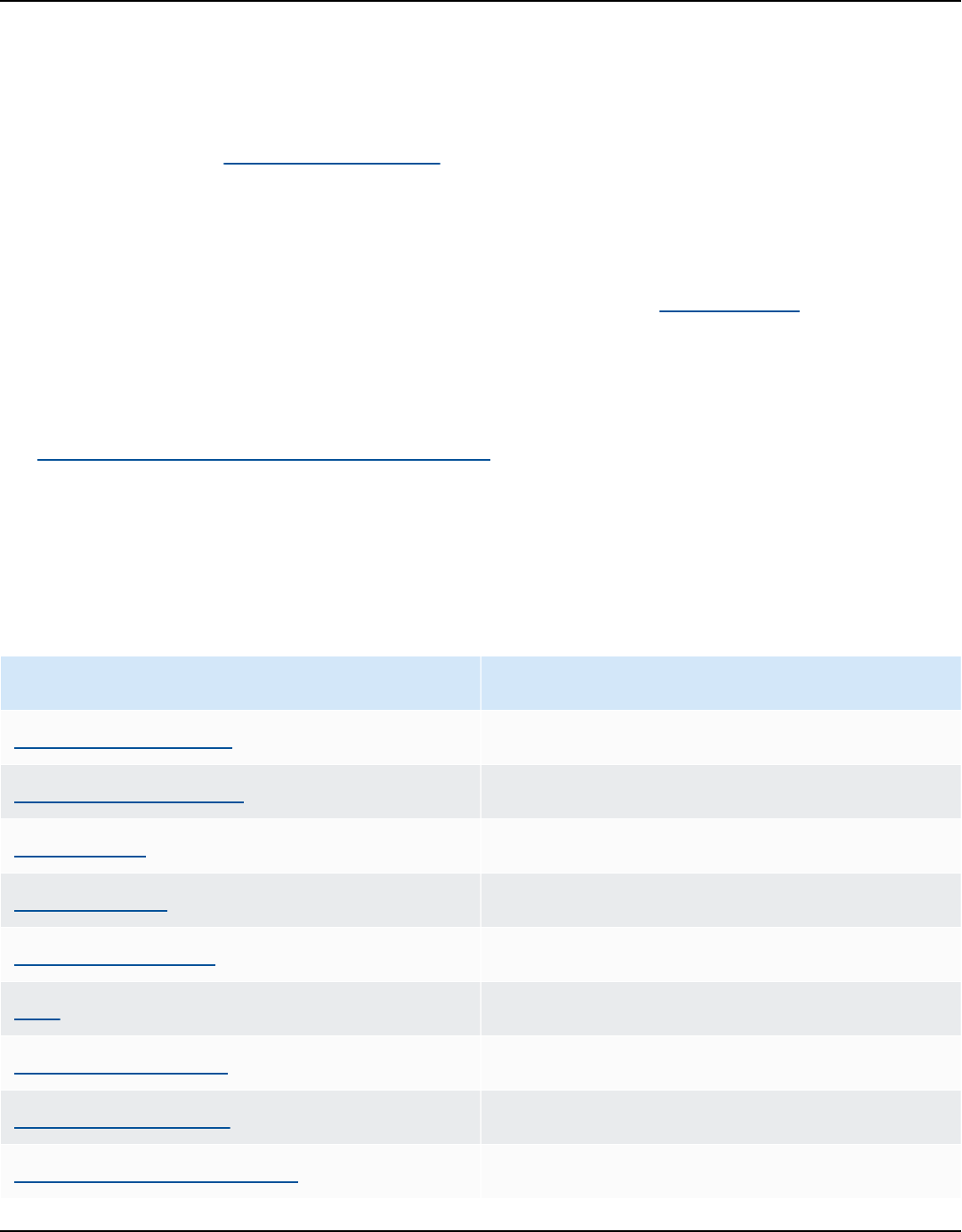
AWS Billing User Guide
Multiple policy types
When multiple types of policies apply to a request, the resulting permissions are more complicated
to understand. To learn how AWS determines whether to allow a request when multiple policy
types are involved, see Policy evaluation logic in the IAM User Guide.
How AWS Billing works with IAM
Billing integrates with the AWS Identity and Access Management (IAM) service so that you can
control who in your organization has access to specific pages on the Billing console. You can control
access to invoices and detailed information about charges and account activity, budgets, payment
methods, and credits.
For more information about how to activate access to the Billing and Cost Management Console,
see Tutorial: Delegate Access to the Billing Console in the IAM User Guide.
Before you use IAM to manage access to Billing, learn what IAM features are available to use with
Billing.
IAM features you can use with AWS Billing
IAM feature Billing support
Identity-based policies Yes
Resource-based policies No
Policy actions Yes
Policy resources Partial
Policy condition keys Yes
ACLs No
ABAC (tags in policies) Partial
Temporary credentials Yes
Forward access sessions (FAS) Yes
How AWS Billing works with IAM Version 2.0 302

AWS Billing User Guide
IAM feature Billing support
Service roles Yes
Service-linked roles No
To get a high-level view of how Billing and other AWS services work with most IAM features, see
AWS services that work with IAM in the IAM User Guide.
Identity-based policies for Billing
Supports identity-based policies: Yes
Identity-based policies are JSON permissions policy documents that you can attach to an identity,
such as an IAM user, group of users, or role. These policies control what actions users and roles can
perform, on which resources, and under what conditions. To learn how to create an identity-based
policy, see Creating IAM policies in the IAM User Guide.
With IAM identity-based policies, you can specify allowed or denied actions and resources as well
as the conditions under which actions are allowed or denied. You can't specify the principal in an
identity-based policy because it applies to the user or role to which it is attached. To learn about all
of the elements that you can use in a JSON policy, see IAM JSON policy elements reference in the
IAM User Guide.
Identity-based policy examples for Billing
To view examples of Billing identity-based policies, see Identity-based policy with AWS Billing.
Resource-based policies within Billing
Supports resource-based policies: No
Resource-based policies are JSON policy documents that you attach to a resource. Examples of
resource-based policies are IAM role trust policies and Amazon S3 bucket policies. In services that
support resource-based policies, service administrators can use them to control access to a specific
resource. For the resource where the policy is attached, the policy defines what actions a specified
principal can perform on that resource and under what conditions. You must specify a principal
in a resource-based policy. Principals can include accounts, users, roles, federated users, or AWS
services.
How AWS Billing works with IAM Version 2.0 303

AWS Billing User Guide
To enable cross-account access, you can specify an entire account or IAM entities in another
account as the principal in a resource-based policy. Adding a cross-account principal to a resource-
based policy is only half of establishing the trust relationship. When the principal and the resource
are in different AWS accounts, an IAM administrator in the trusted account must also grant
the principal entity (user or role) permission to access the resource. They grant permission by
attaching an identity-based policy to the entity. However, if a resource-based policy grants access
to a principal in the same account, no additional identity-based policy is required. For more
information, see Cross account resource access in IAM in the IAM User Guide.
Policy actions for Billing
Supports policy actions: Yes
Administrators can use AWS JSON policies to specify who has access to what. That is, which
principal can perform actions on what resources, and under what conditions.
The Action element of a JSON policy describes the actions that you can use to allow or deny
access in a policy. Policy actions usually have the same name as the associated AWS API operation.
There are some exceptions, such as permission-only actions that don't have a matching API
operation. There are also some operations that require multiple actions in a policy. These
additional actions are called dependent actions.
Include actions in a policy to grant permissions to perform the associated operation.
To see a list of Billing actions, see Actions defined by AWS Billing in the Service Authorization
Reference.
Policy actions in Billing use the following prefix before the action:
billing
To specify multiple actions in a single statement, separate them with commas.
"Action": [
"billing:action1",
"billing:action2"
]
How AWS Billing works with IAM Version 2.0 304

AWS Billing User Guide
To view examples of Billing identity-based policies, see Identity-based policy with AWS Billing.
Policy resources for Billing
Supports policy resources: Partial
Policy resources are only supported for monitors, subscriptions, and cost categories.
Administrators can use AWS JSON policies to specify who has access to what. That is, which
principal can perform actions on what resources, and under what conditions.
The Resource JSON policy element specifies the object or objects to which the action applies.
Statements must include either a Resource or a NotResource element. As a best practice,
specify a resource using its Amazon Resource Name (ARN). You can do this for actions that support
a specific resource type, known as resource-level permissions.
For actions that don't support resource-level permissions, such as listing operations, use a wildcard
(*) to indicate that the statement applies to all resources.
"Resource": "*"
To see a list of AWS Cost Explorer resource types, see Actions, resources, and condition keys for
AWS Cost Explorer in the Service Authorization Reference.
To view examples of Billing identity-based policies, see Identity-based policy with AWS Billing.
Policy condition keys for Billing
Supports service-specific policy condition keys: Yes
Administrators can use AWS JSON policies to specify who has access to what. That is, which
principal can perform actions on what resources, and under what conditions.
The Condition element (or Condition block) lets you specify conditions in which a statement
is in effect. The Condition element is optional. You can create conditional expressions that use
condition operators, such as equals or less than, to match the condition in the policy with values in
the request.
How AWS Billing works with IAM Version 2.0 305

AWS Billing User Guide
If you specify multiple Condition elements in a statement, or multiple keys in a single
Condition element, AWS evaluates them using a logical AND operation. If you specify multiple
values for a single condition key, AWS evaluates the condition using a logical OR operation. All of
the conditions must be met before the statement's permissions are granted.
You can also use placeholder variables when you specify conditions. For example, you can grant
an IAM user permission to access a resource only if it is tagged with their IAM user name. For more
information, see IAM policy elements: variables and tags in the IAM User Guide.
AWS supports global condition keys and service-specific condition keys. To see all AWS global
condition keys, see AWS global condition context keys in the IAM User Guide.
To see a list of Billing condition keys, actions, and resources, see Condition keys for AWS Billing in
the Service Authorization Reference.
To view examples of Billing identity-based policies, see Identity-based policy with AWS Billing.
Access control lists (ACLs) in Billing
Supports ACLs: No
Access control lists (ACLs) control which principals (account members, users, or roles) have
permissions to access a resource. ACLs are similar to resource-based policies, although they do not
use the JSON policy document format.
Attribute-based access control (ABAC) with Billing
Supports ABAC (tags in policies): Partial
ABAC (tags in policies) are only supported for monitors, subscriptions, and cost categories.
Attribute-based access control (ABAC) is an authorization strategy that defines permissions based
on attributes. In AWS, these attributes are called tags. You can attach tags to IAM entities (users or
roles) and to many AWS resources. Tagging entities and resources is the first step of ABAC. Then
you design ABAC policies to allow operations when the principal's tag matches the tag on the
resource that they are trying to access.
ABAC is helpful in environments that are growing rapidly and helps with situations where policy
management becomes cumbersome.
How AWS Billing works with IAM Version 2.0 306

AWS Billing User Guide
To control access based on tags, you provide tag information in the condition element of a policy
using the aws:ResourceTag/key-name, aws:RequestTag/key-name, or aws:TagKeys
condition keys.
If a service supports all three condition keys for every resource type, then the value is Yes for the
service. If a service supports all three condition keys for only some resource types, then the value is
Partial.
For more information about ABAC, see What is ABAC? in the IAM User Guide. To view a tutorial with
steps for setting up ABAC, see Use attribute-based access control (ABAC) in the IAM User Guide.
Using Temporary credentials with Billing
Supports temporary credentials: Yes
Some AWS services don't work when you sign in using temporary credentials. For additional
information, including which AWS services work with temporary credentials, see AWS services that
work with IAM in the IAM User Guide.
You are using temporary credentials if you sign in to the AWS Management Console using
any method except a user name and password. For example, when you access AWS using your
company's single sign-on (SSO) link, that process automatically creates temporary credentials. You
also automatically create temporary credentials when you sign in to the console as a user and then
switch roles. For more information about switching roles, see Switching to a role (console) in the
IAM User Guide.
You can manually create temporary credentials using the AWS CLI or AWS API. You can then use
those temporary credentials to access AWS. AWS recommends that you dynamically generate
temporary credentials instead of using long-term access keys. For more information, see
Temporary security credentials in IAM.
Forward access sessions for Billing
Supports forward access sessions (FAS): Yes
When you use an IAM user or role to perform actions in AWS, you are considered a principal.
When you use some services, you might perform an action that then initiates another action in a
different service. FAS uses the permissions of the principal calling an AWS service, combined with
the requesting AWS service to make requests to downstream services. FAS requests are only made
when a service receives a request that requires interactions with other AWS services or resources to
How AWS Billing works with IAM Version 2.0 307
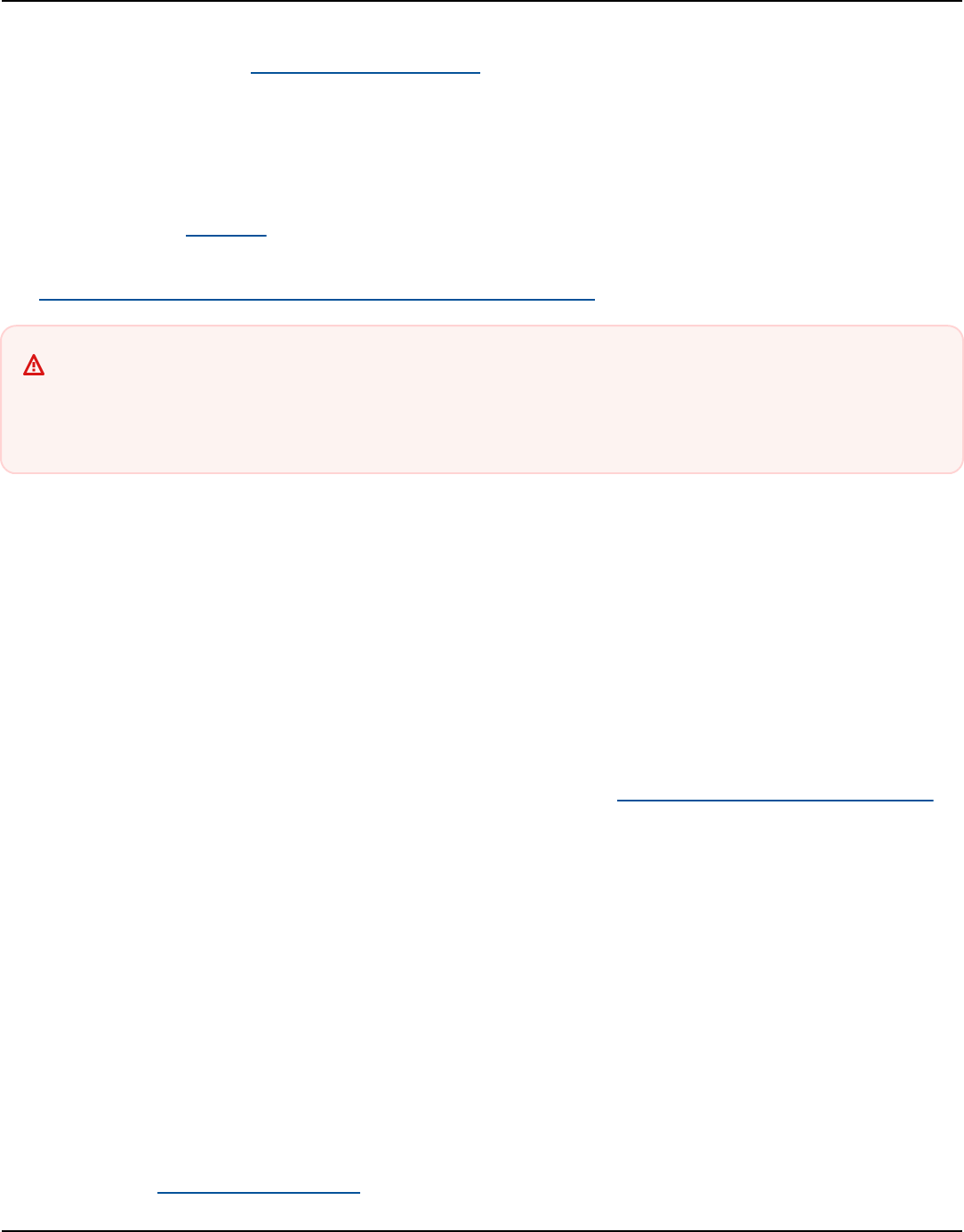
AWS Billing User Guide
complete. In this case, you must have permissions to perform both actions. For policy details when
making FAS requests, see Forward access sessions.
Service roles for Billing
Supports service roles: Yes
A service role is an IAM role that a service assumes to perform actions on your behalf. An IAM
administrator can create, modify, and delete a service role from within IAM. For more information,
see Creating a role to delegate permissions to an AWS service in the IAM User Guide.
Warning
Changing the permissions for a service role might break Billing functionality. Edit service
roles only when Billing provides guidance to do so.
Service-linked roles for Billing
Supports service-linked roles: No
A service-linked role is a type of service role that is linked to an AWS service. The service can
assume the role to perform an action on your behalf. Service-linked roles appear in your AWS
account and are owned by the service. An IAM administrator can view, but not edit the permissions
for service-linked roles.
For details about creating or managing service-linked roles, see AWS services that work with IAM.
Find a service in the table that includes a Yes in the Service-linked role column. Choose the Yes
link to view the service-linked role documentation for that service.
Identity-based policy with AWS Billing
By default, users and roles don't have permission to create or modify Billing resources. They also
can't perform tasks by using the AWS Management Console, AWS Command Line Interface (AWS
CLI), or AWS API. To grant users permission to perform actions on the resources that they need, an
IAM administrator can create IAM policies. The administrator can then add the IAM policies to roles,
and users can assume the roles.
To learn how to create an IAM identity-based policy by using these example JSON policy
documents, see Creating IAM policies in the IAM User Guide.
Identity-based policy with Billing Version 2.0 308

AWS Billing User Guide
For details about actions and resource types defined by Billing, including the format of the ARNs
for each of the resource types, see Actions, resources, and condition keys for AWS Billing in the
Service Authorization Reference.
Contents
• Policy best practices
• Using the Billing console
• Allow users to view their own permissions
• Using identity-based policies for Billing
• AWS Billing console actions
Policy best practices
Identity-based policies determine whether someone can create, access, or delete Billing resources
in your account. These actions can incur costs for your AWS account. When you create or edit
identity-based policies, follow these guidelines and recommendations:
• Get started with AWS managed policies and move toward least-privilege permissions – To
get started granting permissions to your users and workloads, use the AWS managed policies
that grant permissions for many common use cases. They are available in your AWS account. We
recommend that you reduce permissions further by defining AWS customer managed policies
that are specific to your use cases. For more information, see AWS managed policies or AWS
managed policies for job functions in the IAM User Guide.
• Apply least-privilege permissions – When you set permissions with IAM policies, grant only the
permissions required to perform a task. You do this by defining the actions that can be taken on
specific resources under specific conditions, also known as least-privilege permissions. For more
information about using IAM to apply permissions, see Policies and permissions in IAM in the
IAM User Guide.
• Use conditions in IAM policies to further restrict access – You can add a condition to your
policies to limit access to actions and resources. For example, you can write a policy condition to
specify that all requests must be sent using SSL. You can also use conditions to grant access to
service actions if they are used through a specific AWS service, such as AWS CloudFormation. For
more information, see IAM JSON policy elements: Condition in the IAM User Guide.
• Use IAM Access Analyzer to validate your IAM policies to ensure secure and functional
permissions – IAM Access Analyzer validates new and existing policies so that the policies
Identity-based policy with Billing Version 2.0 309

AWS Billing User Guide
adhere to the IAM policy language (JSON) and IAM best practices. IAM Access Analyzer provides
more than 100 policy checks and actionable recommendations to help you author secure and
functional policies. For more information, see IAM Access Analyzer policy validation in the IAM
User Guide.
• Require multi-factor authentication (MFA) – If you have a scenario that requires IAM users
or a root user in your AWS account, turn on MFA for additional security. To require MFA when
API operations are called, add MFA conditions to your policies. For more information, see
Configuring MFA-protected API access in the IAM User Guide.
For more information about best practices in IAM, see Security best practices in IAM in the IAM User
Guide.
Using the Billing console
To access the AWS Billing console, you must have a minimum set of permissions. These permissions
must allow you to list and view details about the Billing resources in your AWS account. If you
create an identity-based policy that is more restrictive than the minimum required permissions, the
console won't function as intended for entities (users or roles) with that policy.
You don't need to allow minimum console permissions for users that are making calls only to the
AWS CLI or the AWS API. Instead, allow access to only the actions that match the API operation
that they're trying to perform.
You can find access details such as permissions required to enable AWS Billing console,
administrator access, and read-only access in the AWS managed policies section.
Allow users to view their own permissions
This example shows how you might create a policy that allows IAM users to view the inline and
managed policies that are attached to their user identity. This policy includes permissions to
complete this action on the console or programmatically using the AWS CLI or AWS API.
{
"Version": "2012-10-17",
"Statement": [
{
"Sid": "ViewOwnUserInfo",
"Effect": "Allow",
"Action": [
Identity-based policy with Billing Version 2.0 310

AWS Billing User Guide
"iam:GetUserPolicy",
"iam:ListGroupsForUser",
"iam:ListAttachedUserPolicies",
"iam:ListUserPolicies",
"iam:GetUser"
],
"Resource": ["arn:aws:iam::*:user/${aws:username}"]
},
{
"Sid": "NavigateInConsole",
"Effect": "Allow",
"Action": [
"iam:GetGroupPolicy",
"iam:GetPolicyVersion",
"iam:GetPolicy",
"iam:ListAttachedGroupPolicies",
"iam:ListGroupPolicies",
"iam:ListPolicyVersions",
"iam:ListPolicies",
"iam:ListUsers"
],
"Resource": "*"
}
]
}
Using identity-based policies for Billing
Note
The following AWS Identity and Access Management (IAM) actions have reached the end of
standard support on July 2023:
•
aws-portal namespace
•
purchase-orders:ViewPurchaseOrders
•
purchase-orders:ModifyPurchaseOrders
If you're using AWS Organizations, you can use the bulk policy migrator scripts or bulk
policy migrator to update polices from your payer account. You can also use the old to
granular action mapping reference to verify the IAM actions that need to be added.
Identity-based policy with Billing Version 2.0 311

AWS Billing User Guide
If you have an AWS account, or are a part of an AWS Organizations created on or after
March 6, 2023, 11:00 AM (PDT), the fine-grained actions are already in effect in your
organization.
Important
In addition to IAM policies, you must grant IAM access to the Billing and Cost Management
console on the Account Settings console page.
For more information, see the following topics:
• Activating access to the Billing and Cost Management console
• IAM tutorial: Grant access to the billing console in the IAM User Guide
Use this section to see how an identity-based policies account administrator can attach permissions
policies to IAM identities (roles and groups) and grant permissions to perform operations on Billing
resources.
For more information about AWS accounts and users, see What Is IAM? in the IAM User Guide.
For information on how you can update customer managed policies, see Editing customer
managed policies (console) in the IAM User Guide.
AWS Billing console actions
This table summarizes the permissions that grant access to your billing console information and
tools. For examples of policies that use these permissions, see AWS Billing policy examples.
For a list of actions policies for the AWS Cost Management console, see AWS Cost Management
actions policies in the AWS Cost Management User Guide.
Permission name Description
aws-portal:ViewBilling
Grants permission to view the Billing and Cost
Management console pages.
aws-portal:ModifyBilling
Grants permission to modify the following
Billing and Cost Management console pages:
Identity-based policy with Billing Version 2.0 312

AWS Billing User Guide
Permission name Description
• Budgets
• Consolidated Billing
• Billing preferences
• Credits
• Tax settings
• Payment methods
• Purchase orders
• Cost Allocation Tags
To allow IAM users to modify these console
pages, you must allow both ModifyBil
ling and ViewBilling . For an example
policy, see Allow IAM users to modify billing
information.
aws-portal:ViewAccount
Grants permission to view Account Settings.
aws-portal:ModifyAccount
Grants permission to modify Account Settings.
To allow IAM users to modify account settings,
you must allow both ModifyAccount and
ViewAccount .
For an example of a policy that explicitly
denies an IAM user access to the Account
Settings console page, see Deny access to
account settings, but allow full access to all
other billing and usage information.
aws-portal:ViewPaymentMethods
Grants permission to view Payment Methods.
Identity-based policy with Billing Version 2.0 313

AWS Billing User Guide
Permission name Description
aws-portal:ModifyPaymentMethods
Grants permission to modify Payment
Methods.
To allow users to modify payment methods,
you must allow both ModifyPaymentMetho
ds and ViewPaymentMethods .
billing:ListBillingViews
Grants permission to get billing informati
on for pro forma billing groups. This is made
using AWS Billing Conductor on the Bills page,
or AWS Cost and Usage Reports.
For more information about viewing your
billing group details, see Viewing your billing
group details in the AWS Billing Conductor
User Guide.
sustainability:GetCarbonFoo
tprintSummary
Grants permission to view the AWS customer
carbon footprint tool and data. This is
accessible from the AWS Cost and Usage
Reports page of the Billing and Cost
Management console.
For an example of a policy, see Allow IAM
users to view your billing information and
carbon footprint report.
Identity-based policy with Billing Version 2.0 314

AWS Billing User Guide
Permission name Description
cur:DescribeReportDefinitions
Grants permission to view AWS Cost and
Usage Reports.
AWS Cost and Usage Reports permissions
apply to all reports that are created using the
AWS Cost and Usage Reports Service API and
the Billing and Cost Management console. If
you create reports using the Billing and Cost
Management console, we recommend that
you update the permissions for IAM users.
Not updating the permissions will result in
users losing access to viewing, editing, and
removing reports on the console reports page.
For an example of a policy, see Allow IAM
users to access the reports console page.
cur:PutReportDefinition
Grants permission to create AWS Cost and
Usage Reports.
AWS Cost and Usage Reports permissions
apply to all reports that are created using the
AWS Cost and Usage Reports Service API and
the Billing and Cost Management console. If
you create reports using the Billing and Cost
Management console, we recommend that
you update the permissions for IAM users.
Not updating the permissions will result in
users losing access to viewing, editing, and
removing reports on the console reports page.
For an example of a policy, see Allow IAM
users to access the reports console page.
Identity-based policy with Billing Version 2.0 315

AWS Billing User Guide
Permission name Description
cur:DeleteReportDefinition
Grants permission to delete AWS Cost and
Usage Reports.
AWS Cost and Usage Reports permissions
apply to all reports that are created using the
AWS Cost and Usage Reports Service API and
the Billing and Cost Management console. If
you create reports using the Billing and Cost
Management console, we recommend that
you update the permissions for IAM users.
Not updating the permissions will result in
users losing access to viewing, editing, and
removing reports on the console reports page.
For an example of a policy, see Create, view,
edit, or delete AWS Cost and Usage Reports.
cur:ModifyReportDefinition
Grants permission to modify AWS Cost and
Usage Reports.
AWS Cost and Usage Reports permissions
apply to all reports that are created using the
AWS Cost and Usage Reports Service API and
the Billing and Cost Management console. If
you create reports using the Billing and Cost
Management console, we recommend that
you update the permissions for IAM users.
Not updating the permissions will result in
users losing access to viewing, editing, and
removing reports on the console reports page.
For an example of a policy, see Create, view,
edit, or delete AWS Cost and Usage Reports.
Identity-based policy with Billing Version 2.0 316

AWS Billing User Guide
Permission name Description
ce:CreateCostCategoryDefinition
Grants permissions to create cost categories.
For an example policy, see View and manage
cost categories.
ce:DeleteCostCategoryDefinition
Grants permissions to delete cost categories.
For an example policy, see View and manage
cost categories.
ce:DescribeCostCategoryDefi
nition
Grants permissions to view cost categories.
For an example policy, see View and manage
cost categories.
ce:ListCostCategoryDefinitions
Grants permissions to list cost categories.
For an example policy, see View and manage
cost categories.
ce:UpdateCostCategoryDefinition
Grants permissions to update cost categories.
For an example policy, see View and manage
cost categories.
aws-portal:ViewUsage
Grants permission to view AWS usage Reports.
To allow IAM users to view usage reports,
you must allow both ViewUsage and
ViewBilling .
For an example policy, see Allow IAM users to
access the reports console page.
payments:ListTagsForResource
Allow or deny IAM users permission to view
tags for a payment method.
payments:TagResource
Allow or deny IAM users permission to add
tags for a payment method.
Identity-based policy with Billing Version 2.0 317

AWS Billing User Guide
Permission name Description
payments:UntagResource
Allow or deny IAM users permission to remove
tags from a payment method.
payments:ListPaymentInstruments
Allow or deny IAM users permission to list
their registered payment methods.
payments:UpdatePaymentInstrument
Allow or deny IAM users permission to update
their payment methods.
pricing:DescribeServices
Grants permission to view AWS service
products and pricing via the AWS Price List
Service API.
To allow IAM users to use AWS Price List
Service API, you must allow DescribeS
ervices , GetAttributeValues , and
GetProducts .
For an example policy, see Find products and
prices.
pricing:GetAttributeValues
Grants permission to view AWS service
products and pricing via the AWS Price List
Service API.
To allow IAM users to use AWS Price List
Service API, you must allow DescribeS
ervices , GetAttributeValues , and
GetProducts .
For an example policy, see Find products and
prices.
Identity-based policy with Billing Version 2.0 318

AWS Billing User Guide
Permission name Description
pricing:GetProducts
Grants permission to view AWS service
products and pricing via the AWS Price List
Service API.
To allow IAM users to use AWS Price List
Service API, you must allow DescribeS
ervices , GetAttributeValues , and
GetProducts .
For an example policy, see Find products and
prices.
purchase-orders:ViewPurchas
eOrders
Grants permission to view Purchase Orders.
For an example policy, see View and manage
purchase orders.
purchase-orders:ModifyPurch
aseOrders
Grants permission to modify Purchase Orders.
For an example policy, see View and manage
purchase orders.
tax:GetExemptions
Grants permission for read-only access to
view exemptions and exemption types by tax
console.
For an example policy, see Allow IAM users
to view US tax exemptions and create AWS
Support cases.
tax:UpdateExemptions
Grants permission to upload an exemption to
the US tax exemptions console.
For an example policy, see Allow IAM users
to view US tax exemptions and create AWS
Support cases.
Identity-based policy with Billing Version 2.0 319

AWS Billing User Guide
Permission name Description
support:CreateCase
Grants permission to file support cases,
required to upload exemption from tax
exemptions console.
For an example policy, see Allow IAM users
to view US tax exemptions and create AWS
Support cases.
support:AddAttachmentsToSet
Grants permission to attach documents to
support cases that are required to upload
exemption certificates to the tax exemption
console.
For an example policy, see Allow IAM users
to view US tax exemptions and create AWS
Support cases.
customer-verification:GetCu
stomerVerificationEligibility
(For customers with an India billing or contact
address only)
Grants permission to retrieve customer
verification eligibility.
customer-verification:GetCu
stomerVerificationDetails
(For customers with an India billing or contact
address only)
Grants permission to retrieve customer
verification data.
customer-verification:Creat
eCustomerVerificationDetails
(For customers with an India billing or contact
address only)
Grants permission to create customer verificat
ion data.
Identity-based policy with Billing Version 2.0 320

AWS Billing User Guide
Permission name Description
customer-verification:Updat
eCustomerVerificationDetails
(For customers with an India billing or contact
address only)
Grants permission to update customer
verification data.
mapcredit:ListAssociatedPrograms
Grants permission to view the associated
Migration Acceleration Program agreements
and dashboard for the payer account.
mapcredit:ListQuarterSpend
Grants permission to view the Migration
Acceleration Program eligible spend for the
payer account.
mapcredit:ListQuarterCredits
Grants permission to view the Migration
Acceleration Program credits for the payer
account.
AWS Billing policy examples
Note
The following AWS Identity and Access Management (IAM) actions have reached the end of
standard support on July 2023:
•
aws-portal namespace
•
purchase-orders:ViewPurchaseOrders
•
purchase-orders:ModifyPurchaseOrders
If you're using AWS Organizations, you can use the bulk policy migrator scripts or bulk
policy migrator to update polices from your payer account. You can also use the old to
granular action mapping reference to verify the IAM actions that need to be added.
AWS Billing policy examples Version 2.0 321

AWS Billing User Guide
If you have an AWS account, or are a part of an AWS Organizations created on or after
March 6, 2023, 11:00 AM (PDT), the fine-grained actions are already in effect in your
organization.
Important
• These policies require that you activate IAM user access to the Billing and Cost
Management console on the Account Settings console page. For more information, see
Activating access to the Billing and Cost Management console.
• To use AWS managed policies, see AWS managed policies.
This topic contains example policies that you can attach to your IAM user or group to control access
to your account's billing information and tools. The following basic rules apply to IAM policies for
Billing and Cost Management:
•
Version is always 2012-10-17.
•
Effect is always Allow or Deny.
•
Action is the name of the action or a wildcard (*).
The action prefix is budgets for AWS Budgets, cur for AWS Cost and Usage Reports, aws-
portal for AWS Billing, or ce for Cost Explorer.
•
Resource is always * for AWS Billing.
For actions that are performed on a budget resource, specify the budget Amazon Resource
Name (ARN).
• It's possible to have multiple statements in one policy.
For a list of actions policies for the AWS Cost Management console, see AWS Cost Management
policy examples in the AWS Cost Management user guide.
Topics
• Allow IAM users to view your billing information
• Allow IAM users to view your billing information and carbon footprint report
AWS Billing policy examples Version 2.0 322

AWS Billing User Guide
• Allow IAM users to access the reports console page
• Deny IAM users access to the Billing and Cost Management consoles
• Deny AWS Console cost and usage widget access for member accounts
• Deny AWS Console cost and usage widget access for specific IAM users and roles
• Allow IAM users to view your billing information, but deny access to carbon footprint report
• Allow IAM users to access carbon footprint reporting, but deny access to billing information
• Allow full access to AWS services but deny IAM users access to the Billing and Cost Management
consoles
• Allow IAM users to view the Billing and Cost Management consoles except for account settings
• Allow IAM users to modify billing information
• Deny access to account settings, but allow full access to all other billing and usage information
• Deposit reports into an Amazon S3 bucket
• Find products and prices
• View costs and usage
• Enable and disable AWS Regions
• View and manage cost categories
• Create, view, edit, or delete AWS Cost and Usage Reports
• View and manage purchase orders
• View and update the Cost Explorer preferences page
• View, create, update, and delete using the Cost Explorer reports page
• View, create, update, and delete reservation and Savings Plans alerts
• Allow read-only access to AWS Cost Anomaly Detection
• Allow AWS Budgets to apply IAM policies and SCPs
• Allow AWS Budgets to apply IAM policies and SCPs and target EC2 and RDS instances
• Allow IAM users to view US tax exemptions and create AWS Support cases
• (For customers with a billing or contact address in India) Allow read-only access to customer
verification information
• (For customers with a billing or contact address in India) View, create, and update customer
verification information
AWS Billing policy examples Version 2.0 323

AWS Billing User Guide
• View AWS Migration Acceleration Program information in the Billing console
Allow IAM users to view your billing information
To allow an IAM user to view your billing information without giving the IAM user access to
sensitive account information, use a policy similar to the following example policy. Such a policy
prevents users from accessing your password and account activity reports. This policy allows IAM
users to view the following Billing and Cost Management console pages, without giving them
access to the Account Settings or Reports console pages:
• Dashboard
• Cost Explorer
• Bills
• Orders and invoices
• Consolidated Billing
• Preferences
• Credits
• Advance Payment
{
"Version": "2012-10-17",
"Statement": [
{
"Effect": "Allow",
"Action": "aws-portal:ViewBilling",
"Resource": "*"
}
]
}
Allow IAM users to view your billing information and carbon footprint report
To allow an IAM user to view both billing information and carbon footprint reporting, use a
policy similar to the following example. This policy prevents users from accessing your password
and account activity reports. This policy allows IAM users to view the following Billing and Cost
Management console pages, without giving them access to the Account Settings or Reports
console pages:
AWS Billing policy examples Version 2.0 324

AWS Billing User Guide
• Dashboard
• Cost Explorer
• Bills
• Orders and invoices
• Consolidated Billing
• Preferences
• Credits
• Advance Payment
• The AWS customer carbon footprint tool section of the AWS Cost and Usage Reports page
{
"Version": "2012-10-17",
"Statement": [
{"Effect": "Allow",
"Action": "aws-portal:ViewBilling",
"Resource": "*"
},
{"Effect": "Allow",
"Action": "sustainability:GetCarbonFootprintSummary",
"Resource": "*"
}
]
}
Allow IAM users to access the reports console page
To allow an IAM user to access the Reports console page and to view the usage reports that
contain account activity information, use a policy similar to this example policy.
For definitions of each action, see AWS Billing console actions.
{
"Version": "2012-10-17",
"Statement": [
{
"Effect": "Allow",
"Action": [
AWS Billing policy examples Version 2.0 325

AWS Billing User Guide
"aws-portal:ViewUsage",
"aws-portal:ViewBilling",
"cur:DescribeReportDefinitions",
"cur:PutReportDefinition",
"cur:DeleteReportDefinition",
"cur:ModifyReportDefinition"
],
"Resource": "*"
}
]
}
Deny IAM users access to the Billing and Cost Management consoles
To explicitly deny an IAM user access to the all Billing and Cost Management console pages, use a
policy similar to this example policy.
{
"Version": "2012-10-17",
"Statement": [
{
"Effect": "Deny",
"Action": "aws-portal:*",
"Resource": "*"
}
]
}
Deny AWS Console cost and usage widget access for member accounts
To restrict member (linked) account access to cost and usage data, use your management (payer)
account to access the Cost Explorer preferences tab and uncheck Linked Account Access. This will
deny access to cost and usage data from the Cost Explorer (AWS Cost Management) console, Cost
Explorer API, and AWS Console Home page's cost and usage widget regardless of the IAM actions a
member account’s IAM user or role has.
Deny AWS Console cost and usage widget access for specific IAM users and roles
To deny AWS Console cost and usage widget access for specific IAM users and roles, use the
permissions policy below.
AWS Billing policy examples Version 2.0 326

AWS Billing User Guide
Note
Adding this policy to an IAM user or role will deny users access to Cost Explorer (AWS Cost
Management) console and Cost Explorer APIs as well.
{
"Version": "2012-10-17",
"Statement": [
{
"Effect": "Deny",
"Action": "ce:*",
"Resource": "*"
}
]
}
Allow IAM users to view your billing information, but deny access to carbon
footprint report
To allow an IAM user to both billing information in the Billing and Cost Management consoles, but
doesn't allow access to the AWS customer carbon footprint tool. This tool is located in the AWS
Cost and Usage Reports page.
{
"Version": "2012-10-17",
"Statement": [
{"Effect": "Allow",
"Action": "aws-portal:ViewBilling",
"Resource": "*"
},
{"Effect": "Deny",
"Action": "sustainability:GetCarbonFootprintSummary",
"Resource": "*"
}
]
}
AWS Billing policy examples Version 2.0 327
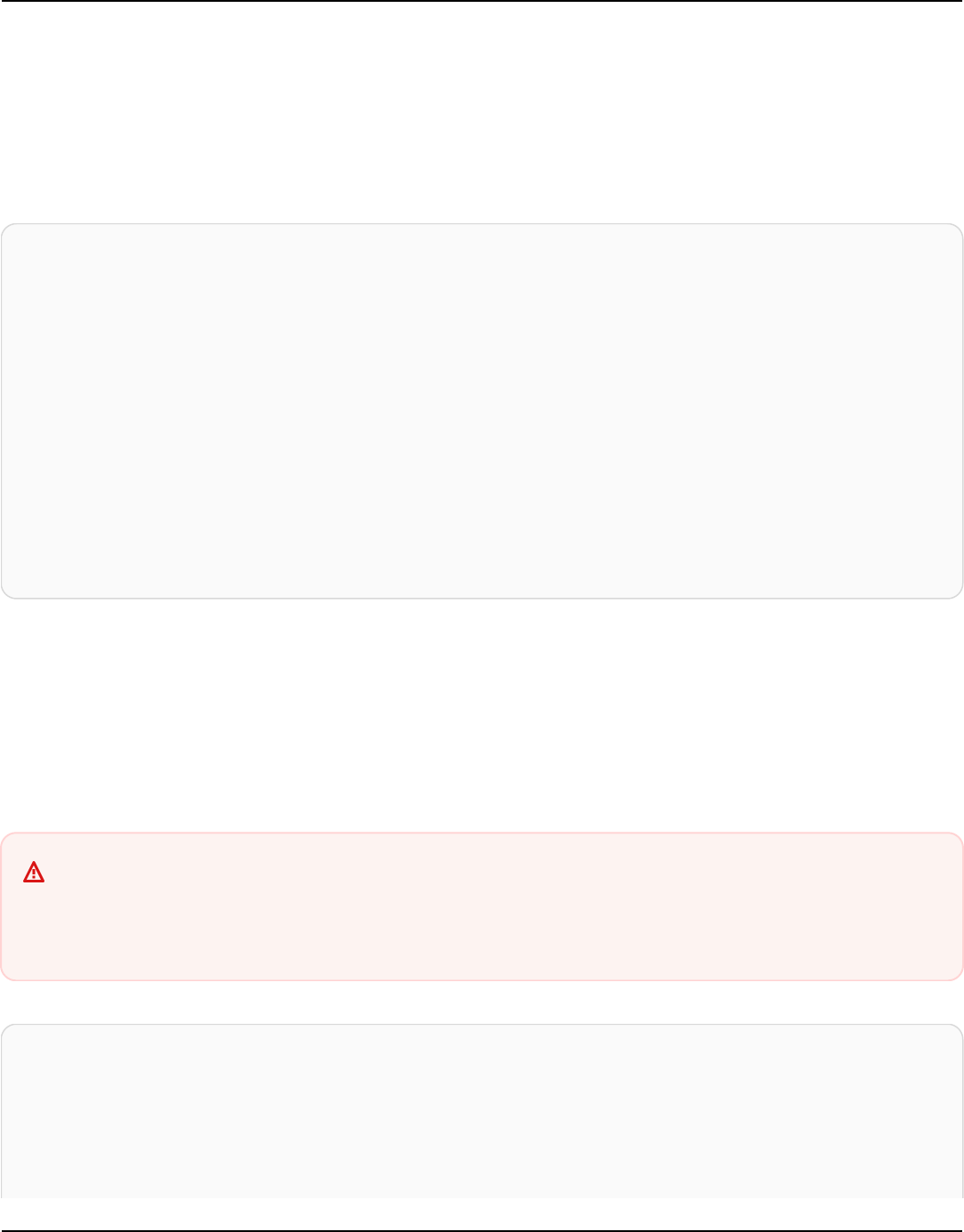
AWS Billing User Guide
Allow IAM users to access carbon footprint reporting, but deny access to billing
information
To allow an IAM users to access the AWS customer carbon footprint tool in the AWS Cost
and Usage Reports page, but denies access to view billing information in the Billing and Cost
Management consoles.
{
"Version": "2012-10-17",
"Statement": [
{"Effect": "Deny",
"Action": "aws-portal:ViewBilling",
"Resource": "*"
},
{"Effect": "Allow",
"Action": "sustainability:GetCarbonFootprintSummary",
"Resource": "*"
}
]
}
Allow full access to AWS services but deny IAM users access to the Billing and Cost
Management consoles
To deny IAM users access to everything on the Billing and Cost Management console, use the
following policy. Deny user access to AWS Identity and Access Management (IAM) to prevent access
to the policies that control access to billing information and tools.
Important
This policy doesn't allow any actions. Use this policy in combination with other policies that
allow specific actions.
{
"Version": "2012-10-17",
"Statement": [
{
"Effect": "Deny",
"Action": [
AWS Billing policy examples Version 2.0 328

AWS Billing User Guide
"aws-portal:*",
"iam:*"
],
"Resource": "*"
}
]
}
Allow IAM users to view the Billing and Cost Management consoles except for
account settings
This policy allows read-only access to all of the Billing and Cost Management console. This includes
the Payments Method and Reports console pages. However, this policy denies access to the
Account Settings page. This means it protects the account password, contact information, and
security questions.
{
"Version": "2012-10-17",
"Statement": [
{
"Effect": "Allow",
"Action": "aws-portal:View*",
"Resource": "*"
},
{
"Effect": "Deny",
"Action": "aws-portal:*Account",
"Resource": "*"
}
]
}
Allow IAM users to modify billing information
To allow IAM users to modify account billing information in the Billing and Cost Management
console, allow IAM users to view your billing information. The following policy example allows
an IAM user to modify the Consolidated Billing, Preferences, and Credits console pages. It also
allows an IAM user to view the following Billing and Cost Management console pages:
• Dashboard
• Cost Explorer
AWS Billing policy examples Version 2.0 329

AWS Billing User Guide
• Bills
• Orders and invoices
• Advance Payment
{
"Version": "2012-10-17",
"Statement": [
{
"Effect": "Allow",
"Action": "aws-portal:*Billing",
"Resource": "*"
}
]
}
Deny access to account settings, but allow full access to all other billing and
usage information
To protect your account password, contact information, and security questions, deny IAM user
access to Account Settings while still enabling full access to the rest of the functionality in the
Billing and Cost Management console. The following is an example policy.
{
"Version": "2012-10-17",
"Statement": [
{
"Effect": "Allow",
"Action": [
"aws-portal:*Billing",
"aws-portal:*Usage",
"aws-portal:*PaymentMethods"
],
"Resource": "*"
},
{
"Effect": "Deny",
"Action": "aws-portal:*Account",
"Resource": "*"
}
]
AWS Billing policy examples Version 2.0 330

AWS Billing User Guide
}
Deposit reports into an Amazon S3 bucket
The following policy allows Billing and Cost Management to save your detailed AWS bills to an
Amazon S3 bucket if you own both the AWS account and the Amazon S3 bucket. This policy must
be applied to the Amazon S3 bucket, rather than an IAM user. This is because it's a resource-based
policy, not a user-based policy. We recommend that you deny IAM user access to the bucket for IAM
users who don't need access to your bills.
Replace amzn-s3-demo-bucket1 with the name of your bucket.
For more information, see Using Bucket Policies and User Policies in the Amazon Simple Storage
Service User Guide.
{
"Version": "2012-10-17",
"Statement": [
{
"Effect": "Allow",
"Principal": {
"Service": "billingreports.amazonaws.com"
},
"Action": [
"s3:GetBucketAcl",
"s3:GetBucketPolicy"
],
"Resource": "arn:aws:s3:::amzn-s3-demo-bucket1"
},
{
"Effect": "Allow",
"Principal": {
"Service": "billingreports.amazonaws.com"
},
"Action": "s3:PutObject",
"Resource": "arn:aws:s3:::amzn-s3-demo-bucket1/*"
}
]
}
AWS Billing policy examples Version 2.0 331

AWS Billing User Guide
Find products and prices
To allow an IAM user to use the AWS Price List Service API, use the following policy to grant them
access.
This policy grants permission to use both the AWS Price List Bulk API AWS Price List Query API.
{
"Version": "2012-10-17",
"Statement": [
{
"Effect": "Allow",
"Action": [
"pricing:DescribeServices",
"pricing:GetAttributeValues",
"pricing:GetProducts",
"pricing:GetPriceListFileUrl",
"pricing:ListPriceLists"
],
"Resource": [
"*"
]
}
]
}
View costs and usage
To allow IAM users to use the AWS Cost Explorer API, use the following policy to grant them access.
{
"Version": "2012-10-17",
"Statement": [
{
"Effect": "Allow",
"Action": [
"ce:*"
],
"Resource": [
"*"
]
}
]
AWS Billing policy examples Version 2.0 332

AWS Billing User Guide
}
Enable and disable AWS Regions
For an example IAM policy that allows users to enable and disable Regions, see AWS: Allows
Enabling and Disabling AWS Regions in the IAM User Guide.
View and manage cost categories
To allow IAM users to use, view, and manage cost categories, use the following policy to grant
them access.
{
"Version": "2012-10-17",
"Statement": [
{
"Sid": "VisualEditor0",
"Effect": "Allow",
"Action": [
"aws-portal:ViewBilling",
"ce:GetCostAndUsage",
"ce:DescribeCostCategoryDefinition",
"ce:UpdateCostCategoryDefinition",
"ce:CreateCostCategoryDefinition",
"ce:DeleteCostCategoryDefinition",
"ce:ListCostCategoryDefinitions",
"ce:TagResource",
"ce:UntagResource",
"ce:ListTagsForResource",
"pricing:DescribeServices"
],
"Resource": "*"
}
]
}
Create, view, edit, or delete AWS Cost and Usage Reports
This policy allows an IAM user to create, view, edit, or delete sample-report using the API.
{
"Version": "2012-10-17",
AWS Billing policy examples Version 2.0 333

AWS Billing User Guide
"Statement": [
{
"Sid": "ManageSampleReport",
"Effect": "Allow",
"Action": [
"cur:PutReportDefinition",
"cur:DeleteReportDefinition",
"cur:ModifyReportDefinition"
],
"Resource": "arn:aws:cur:*:123456789012:definition/sample-report"
},
{
"Sid": "DescribeReportDefs",
"Effect": "Allow",
"Action": "cur:DescribeReportDefinitions",
"Resource": "*"
}
]
}
View and manage purchase orders
This policy allows an IAM user to view and manage purchase orders, using the following policy to
grant access.
{
"Version": "2012-10-17",
"Statement": [
{
"Sid": "VisualEditor0",
"Effect": "Allow",
"Action": [
"aws-portal:ViewBilling",
"purchase-orders:*"
],
"Resource": "*"
}
]
}
View and update the Cost Explorer preferences page
This policy allows an IAM user to view and update using the Cost Explorer preferences page.
AWS Billing policy examples Version 2.0 334

AWS Billing User Guide
{
"Version": "2012-10-17",
"Statement": [
{
"Sid": "VisualEditor0",
"Effect": "Allow",
"Action": [
"aws-portal:ViewBilling",
"ce:UpdatePreferences"
],
"Resource": "*"
}
]
}
The following policy allows IAM users to view Cost Explorer, but deny permission to view or edit the
Preferences page.
{
"Version": "2012-10-17",
"Statement": [
{
"Sid": "VisualEditor0",
"Effect": "Allow",
"Action": [
"aws-portal:ViewBilling"
],
"Resource": "*"
},
{
"Sid": "VisualEditor1",
"Effect": "Deny",
"Action": [
"ce:GetPreferences",
"ce:UpdatePreferences"
],
"Resource": "*"
}
]
}
AWS Billing policy examples Version 2.0 335

AWS Billing User Guide
The following policy allows IAM users to view Cost Explorer, but deny permission to edit the
Preferences page.
{
"Version": "2012-10-17",
"Statement": [
{
"Sid": "VisualEditor0",
"Effect": "Allow",
"Action": [
"aws-portal:ViewBilling"
],
"Resource": "*"
},
{
"Sid": "VisualEditor1",
"Effect": "Deny",
"Action": [
"ce:UpdatePreferences"
],
"Resource": "*"
}
]
}
View, create, update, and delete using the Cost Explorer reports page
This policy allows an IAM user to view, create, update, and delete using the Cost Explorer reports
page.
{
"Version": "2012-10-17",
"Statement": [
{
"Sid": "VisualEditor0",
"Effect": "Allow",
"Action": [
"aws-portal:ViewBilling",
"ce:CreateReport",
"ce:UpdateReport",
"ce:DeleteReport"
],
"Resource": "*"
AWS Billing policy examples Version 2.0 336

AWS Billing User Guide
}
]
}
The following policy allows IAM users to view Cost Explorer, but deny permission to view or edit the
Reports page.
{
"Version": "2012-10-17",
"Statement": [
{
"Sid": "VisualEditor0",
"Effect": "Allow",
"Action": [
"aws-portal:ViewBilling"
],
"Resource": "*"
},
{
"Sid": "VisualEditor1",
"Effect": "Deny",
"Action": [
"ce:DescribeReport",
"ce:CreateReport",
"ce:UpdateReport",
"ce:DeleteReport"
],
"Resource": "*"
}
]
}
The following policy allows IAM users to view Cost Explorer, but deny permission to edit the
Reports page.
{
"Version": "2012-10-17",
"Statement": [
{
"Sid": "VisualEditor0",
"Effect": "Allow",
"Action": [
"aws-portal:ViewBilling"
AWS Billing policy examples Version 2.0 337

AWS Billing User Guide
],
"Resource": "*"
},
{
"Sid": "VisualEditor1",
"Effect": "Deny",
"Action": [
"ce:CreateReport",
"ce:UpdateReport",
"ce:DeleteReport"
],
"Resource": "*"
}
]
}
View, create, update, and delete reservation and Savings Plans alerts
This policy allows an IAM user to view, create, update, and delete reservation expiration
alerts and Savings Plans alerts. To edit reservation expiration alerts or Savings Plans
alerts, a user needs all three granular actions: ce:CreateNotificationSubscription,
ce:UpdateNotificationSubscription, and ce:DeleteNotificationSubscription.
{
"Version": "2012-10-17",
"Statement": [
{
"Sid": "VisualEditor0",
"Effect": "Allow",
"Action": [
"aws-portal:ViewBilling",
"ce:CreateNotificationSubscription",
"ce:UpdateNotificationSubscription",
"ce:DeleteNotificationSubscription"
],
"Resource": "*"
}
]
}
The following policy allows IAM users to view Cost Explorer, but denies permission to view or edit
the Reservation Expiration Alerts and Savings Plans alert pages.
AWS Billing policy examples Version 2.0 338

AWS Billing User Guide
{
"Version": "2012-10-17",
"Statement": [
{
"Sid": "VisualEditor0",
"Effect": "Allow",
"Action": [
"aws-portal:ViewBilling"
],
"Resource": "*"
},
{
"Sid": "VisualEditor1",
"Effect": "Deny",
"Action": [
"ce:DescribeNotificationSubscription",
"ce:CreateNotificationSubscription",
"ce:UpdateNotificationSubscription",
"ce:DeleteNotificationSubscription"
],
"Resource": "*"
}
]
}
The following policy allows IAM users to view Cost Explorer, but denies permission to edit the
Reservation Expiration Alerts and Savings Plans alert pages.
{
"Version": "2012-10-17",
"Statement": [
{
"Sid": "VisualEditor0",
"Effect": "Allow",
"Action": [
"aws-portal:ViewBilling"
],
"Resource": "*"
},
{
"Sid": "VisualEditor1",
"Effect": "Deny",
"Action": [
AWS Billing policy examples Version 2.0 339

AWS Billing User Guide
"ce:CreateNotificationSubscription",
"ce:UpdateNotificationSubscription",
"ce:DeleteNotificationSubscription"
],
"Resource": "*"
}
]
}
Allow read-only access to AWS Cost Anomaly Detection
To allow IAM users read-only access to AWS Cost Anomaly Detection, use the following policy to
grant them access. ce:ProvideAnomalyFeedback is optional as a part of the read-only access.
{
"Version": "2012-10-17",
"Statement": [
{
"Action": [
"ce:Get*"
],
"Effect": "Allow",
"Resource": "*"
}
]
}
Allow AWS Budgets to apply IAM policies and SCPs
This policy allows AWS Budgets to apply IAM policies and service control policies (SCPs) on behalf
of the user.
{
"Version": "2012-10-17",
"Statement": [
{
"Effect": "Allow",
"Action": [
"iam:AttachGroupPolicy",
"iam:AttachRolePolicy",
"iam:AttachUserPolicy",
"iam:DetachGroupPolicy",
AWS Billing policy examples Version 2.0 340

AWS Billing User Guide
"iam:DetachRolePolicy",
"iam:DetachUserPolicy",
"organizations:AttachPolicy",
"organizations:DetachPolicy"
],
"Resource": "*"
}
]
}
Allow AWS Budgets to apply IAM policies and SCPs and target EC2 and RDS
instances
This policy allows AWS Budgets to apply IAM policies and service control policies (SCPs), and to
target Amazon EC2 and Amazon RDS instances on behalf of the user.
Trust policy
{
"Version": "2012-10-17",
"Statement": [
{
"Effect": "Allow",
"Principal": {
"Service": "budgets.amazonaws.com"
},
"Action": "sts:AssumeRole"
}
]
}
Permissions policy
{
"Version": "2012-10-17",
"Statement": [
{
"Effect": "Allow",
"Action": [
"ec2:DescribeInstanceStatus",
"ec2:StartInstances",
"ec2:StopInstances",
AWS Billing policy examples Version 2.0 341

AWS Billing User Guide
"iam:AttachGroupPolicy",
"iam:AttachRolePolicy",
"iam:AttachUserPolicy",
"iam:DetachGroupPolicy",
"iam:DetachRolePolicy",
"iam:DetachUserPolicy",
"organizations:AttachPolicy",
"organizations:DetachPolicy",
"rds:DescribeDBInstances",
"rds:StartDBInstance",
"rds:StopDBInstance",
"ssm:StartAutomationExecution"
],
"Resource": "*"
}
]
}
Allow IAM users to view US tax exemptions and create AWS Support cases
This policy allows an IAM user to view US tax exemptions and create AWS Support cases to upload
exemption certificates in the tax exemption console.
{
"Version": "2012-10-17",
"Statement": [
{
"Action": [
"aws-portal:*",
"tax:GetExemptions",
"tax:UpdateExemptions",
"support:CreateCase",
"support:AddAttachmentsToSet"
],
"Resource": [
"*"
],
"Effect": "Allow"
}
]
}
AWS Billing policy examples Version 2.0 342

AWS Billing User Guide
(For customers with a billing or contact address in India) Allow read-only access
to customer verification information
This policy allows IAM users read-only access to customer verification information.
For definitions of each action, see AWS Billing console actions.
{
"Version": "2012-10-17",
"Statement": [{
"Effect": "Allow",
"Action": [
"customer-verification:GetCustomerVerificationEligibility",
"customer-verification:GetCustomerVerificationDetails"
],
"Resource": "*"
}]
}
(For customers with a billing or contact address in India) View, create, and update
customer verification information
This policy allows IAM users to manage their customer verification information.
For definitions of each action, see AWS Billing console actions
{
"Version": "2012-10-17",
"Statement": [{
"Effect": "Allow",
"Action": [
"customer-verification:CreateCustomerVerificationDetails",
"customer-verification:UpdateCustomerVerificationDetails",
"customer-verification:GetCustomerVerificationEligibility",
"customer-verification:GetCustomerVerificationDetails"
],
"Resource": "*"
}]
}
AWS Billing policy examples Version 2.0 343

AWS Billing User Guide
View AWS Migration Acceleration Program information in the Billing console
This policy allows IAM users to view the Migration Acceleration Program agreements, credits, and
eligible spend for the payer's account in the Billing console.
For definitions of each action, see AWS Billing console actions.
{
"Version": "2012-10-17",
"Statement": [{
"Effect": "Allow",
"Action": [
"mapcredit:ListQuarterSpend",
"mapcredit:ListQuarterCredits",
"mapcredit:ListAssociatedPrograms"
],
"Resource": "*"
}]
}
Migrating access control for AWS Billing
Note
The following AWS Identity and Access Management (IAM) actions have reached the end of
standard support on July 2023:
•
aws-portal namespace
•
purchase-orders:ViewPurchaseOrders
•
purchase-orders:ModifyPurchaseOrders
If you're using AWS Organizations, you can use the bulk policy migrator scripts or bulk
policy migrator to update polices from your payer account. You can also use the old to
granular action mapping reference to verify the IAM actions that need to be added.
If you have an AWS account, or are a part of an AWS Organizations created on or after
March 6, 2023, 11:00 AM (PDT), the fine-grained actions are already in effect in your
organization.
Migrating access control Version 2.0 344

AWS Billing User Guide
You can use fine-grained access controls to provide individuals in your organization access to
AWS Billing and Cost Management services. For example, you can provide access to Cost Explorer
without providing access to the Billing and Cost Management console.
To use the fine-grained access controls, you'll need to migrate your policies from under aws-
portal to the new IAM actions.
The following IAM actions in your permission policies or service control policies (SCP) require
updating with this migration:
•
aws-portal:ViewAccount
•
aws-portal:ViewBilling
•
aws-portal:ViewPaymentMethods
•
aws-portal:ViewUsage
•
aws-portal:ModifyAccount
•
aws-portal:ModifyBilling
•
aws-portal:ModifyPaymentMethods
•
purchase-orders:ViewPurchaseOrders
•
purchase-orders:ModifyPurchaseOrders
To learn how to use the Affected policies tool to identify your impacted IAM policies, see How to
use the affected policies tool.
Note
API access to AWS Cost Explorer, AWS Cost and Usage Reports, and AWS Budgets remains
unaffected.
Activating access to the Billing and Cost Management console remain unchanged.
Topics
• Managing access permissions
• Using the console to bulk migrate your policies
• How to use the affected policies tool
• Use scripts to bulk migrate your policies to use fine-grained IAM actions
Migrating access control Version 2.0 345

AWS Billing User Guide
• Mapping fine-grained IAM actions reference
Managing access permissions
AWS Billing integrates with the AWS Identity and Access Management (IAM) service so that you can
control who in your organization can access specific pages on the Billing and Cost Management
console. This includes features like Payments, Billing, Credits, Free Tier, Payment preferences,
Consolidated billing, Tax settings, and Account pages.
Use the following IAM permissions for granular control for the Billing and Cost Management
console.
To provide fine-grained access, replace the aws-portal policy with account, billing,
payments, freetier, invoicing, tax, and consolidatedbilling.
Additionally, replace purchase-orders:ViewPurchaseOrders and purchase-
orders:ModifyPurchaseOrders with the fine-grained actions under purchase-orders,
account, and payments.
Using fine-grained AWS Billing actions
This table summarizes the permissions that allow or deny IAM users and roles access to your billing
information. For examples of policies that use these permissions, see AWS Billing policy examples.
For a list of actions for the AWS Cost Management console, see AWS Cost Management actions
policies in the AWS Cost Management User Guide.
Feature name in the Billing
and Cost Management
console
IAM action Description
Billing Home
account:GetAccount
Information
billing:Get*
payments:List*
tax:List*
Grants permission to view the
Home page. These are read-
only permissions.
Note
These are permissio
ns for the console
Migrating access control Version 2.0 346

AWS Billing User Guide
Feature name in the Billing
and Cost Management
console
IAM action Description
only. No API access
is available for these
permissions.
account:GetAccount
Information
billing:Get*
consolidatedbillin
g:Get*
consolidatedbillin
g:List*
invoicing:List*
payments:List*
Grants permission to view the
Bills page. These are read-
only permissions.
Note
These are permissio
ns for the console
only. No API access
is available for these
permissions.
Bills
invoicing:Get*
Grants permission to
download invoices from the
Bills page.
Note
This is a permissio
n for the console
only. No API access
is available for this
permission.
Migrating access control Version 2.0 347

AWS Billing User Guide
Feature name in the Billing
and Cost Management
console
IAM action Description
cur:Get*
Grants permission to
download CSV reports from
the Bills page.
Note
This is a permissio
n for the console
only. No API access
is available for this
permission.
billing:ListBillin
gViews
Grants permission to view the
ARN and description of each
AWS Billing Conductor billing
group created. This is required
to create a report preference
for specific groups.
Note
This is a permissio
n for the console
only. No API access
is available for this
permission.
Migrating access control Version 2.0 348

AWS Billing User Guide
Feature name in the Billing
and Cost Management
console
IAM action Description
account:GetAccount
Information
billing:Get*
payments:Get*
payments:List*
Grants permission to view the
Payments page. These are
read-only permissions to the
Payments due, Unapplied
funds, Transaction, and
Advance pay tabs.
Note
These are permissio
ns for the console
only. No API access
is available for these
permissions.
invoicing:Get*
Grants permission to
download an invoice from the
Transactions tab.
Note
This is a permissio
n for the console
only. No API access
is available for this
permission.
Payments
payments:Update*
Grants permission action
required to use Advance Pay
and set up payment details.
Migrating access control Version 2.0 349

AWS Billing User Guide
Feature name in the Billing
and Cost Management
console
IAM action Description
payments:Make*
invoicing:Get*
Grants permission to
generate a funding request
document for Advance Pay,
and make a payment.
billing:Get*
account:GetAccount
Information
Grants permission to view the
Credits page.
Credits
billing:RedeemCred
its
Grants permission to redeem
credits.
Migrating access control Version 2.0 350

AWS Billing User Guide
Feature name in the Billing
and Cost Management
console
IAM action Description
account:GetAccount
Information
account:GetContact
Information
payments:Get*
payments:List*
purchase-orders:Li
stPurchaseOrders
purchase-orders:Li
stPurchaseOrderInv
oices
tax:ListTaxRegistr
ations
consolidatedbillin
g:GetAccountBillin
gRole
Grants permission to view the
Purchase orders page.
purchase-orders:Ge
tPurchaseOrder
Grants permission to view
details of a purchase order.
purchase-orders:Ad
dPurchaseOrder
Grants permission to add a
purchase order.
Purchase orders
purchase-orders:De
letePurchaseOrder
Grants permission to delete a
purchase order.
Migrating access control Version 2.0 351

AWS Billing User Guide
Feature name in the Billing
and Cost Management
console
IAM action Description
purchase-orders:Up
datePurchaseOrder
purchase-orders:Up
datePurchaseOrderS
tatus
Grants permission to update
purchase orders and purchase
order status.
AWS Cost and Usage Reports
cur:GetClassic*
cur:DescribeReport
Definitions
Grants permission to view a
list of AWS CUR reports on
the AWS Cost and Usage
Reports page.
Note
cur:GetClassic*
is a permission for the
console only. No API
access is available for
this permission.
Migrating access control Version 2.0 352

AWS Billing User Guide
Feature name in the Billing
and Cost Management
console
IAM action Description
billing:ListBillin
gViews
Grants permission to view
the ARN and description of
each billing group created in
AWS Billing Conductor. This
is required to create a report
preference for specific groups.
Note
This is a permissio
n for the console
only. No API access
is available for this
permission.
s3:ListAllMyBuckets
s3:CreateBucket
s3:PutBucketPolicy
s3:GetBucketLocation
cur:Validate*
cur:PutReportDefin
ition
Grants permission actions
required to create a new AWS
CUR report.
Note
cur:Validate* is
a permission for the
console only. No API
access is available for
these permissions.
Migrating access control Version 2.0 353

AWS Billing User Guide
Feature name in the Billing
and Cost Management
console
IAM action Description
cur:Validate*
s3:CreateBucket
s3:ListAllMyBuckets
s3:PutBucketPolicy
s3:GetBucketLocation
cur:ModifyReportDe
finition
Grants permission to edit
AWS CUR definition.
Note
cur:Validate* is
a permission for the
console only. No API
access is available for
these permissions.
cur:DeleteReportDe
finition
Grants permission to delete
AWS CUR reports.
cur:GetUsage*
Grants permission to
download usage reports.
sustainability:Get
CarbonFootprintSum
mary
Grants permission to view
sustainability data for your
AWS account.
Migrating access control Version 2.0 354

AWS Billing User Guide
Feature name in the Billing
and Cost Management
console
IAM action Description
Cost categories
account:GetAccount
Information
ce:ListCostCategor
yDefinitions
ce:DescribeCostCat
egoryDefinition
ce:GetCostAndUsage
ce:ListTagsForReso
urce
consolidatedbillin
g:GetAccountBillin
gRole
Grants permission to view
cost categories.
Note
account:G
etAccount
Information is
a permission for the
console only. No API
access is available for
these permissions.
Migrating access control Version 2.0 355

AWS Billing User Guide
Feature name in the Billing
and Cost Management
console
IAM action Description
billing:Get*
ce:TagResource
ce:ListCostAllocat
ionTags
consolidatedbillin
g:List*
ce:CreateCostCateg
oryDefinition
pricing:DescribeSe
rvices
ce:GetDimensionVal
ues
ce:GetTags
Grants permission to create
cost categories.
Note
billing:Get*
and consolida
tedbillin
g:List* is a
permission for the
console only. No API
access is available for
these permissions.
ce:UpdateCostCateg
oryDefinition
ce:UntagResource
Grants permission to modify
cost categories.
ce:DeleteCostCateg
oryDefinition
Grants permission to delete
cost categories.
Migrating access control Version 2.0 356

AWS Billing User Guide
Feature name in the Billing
and Cost Management
console
IAM action Description
account:GetAccount
Information
ce:ListCostAllocat
ionTags
consolidatedbillin
g:GetAccountBillin
gRole
Grants permission to view
cost allocation tags.
Cost allocation tags
ce:UpdateCostAlloc
ationTagsStatus
Grants permission to activate
or deactivate cost allocation
tags.
AWS Budgets
budgets:ViewBudget
budgets:DescribeBu
dgetActionsForBudg
et
budgets:DescribeBu
dgetAction
budgets:DescribeBu
dgetActionsForAcco
unt
budgets:DescribeBu
dgetActionHistories
Grants permission to view the
Budgets page.
Migrating access control Version 2.0 357

AWS Billing User Guide
Feature name in the Billing
and Cost Management
console
IAM action Description
budgets:CreateBudg
etAction
budgets:ExecuteBud
getAction
budgets:DeleteBudg
etAction
budgets:UpdateBudg
etAction
budgets:ModifyBudget
Grants permission to create,
delete, and modify Budgets
and Budgets actions.
Free tier
billing:Get*
freetier:Get*
Grants permission to view
free tier usage limits and
month to date usage status.
Billing preferences
account:GetAccount
Information
billing:Get*
consolidatedbillin
g:Get*
consolidatedbillin
g:List*
cur:GetClassic*
cur:Validate*
freetier:Get*
invoicing:Get*
Grants permission actions
required to view all sections
on the Billing preferences
page.
Note
These are permissio
ns for the console
only. No API access
is available for these
permissions.
Migrating access control Version 2.0 358

AWS Billing User Guide
Feature name in the Billing
and Cost Management
console
IAM action Description
billing:Update*
freetier:Put*
cur:PutClassic*
s3:ListAllMyBuckets
s3:CreateBucket
s3:PutBucketPolicy
s3:GetBucketLocation
invoicing:Put*
Grants permission to make
the following changes in the
Billing preferences page:
• Turn credit sharing to RI
or Savings Plans discount
sharing on or off
• Set Free Tier Usage Alert
preferences
• Set detailed billing reports
delivery settings and
preferences
• Set or update the PDF
invoice by email preferenc
es
Note
billing:Update* ,
freetier:Put* ,
cur:PutClassic*
are permissions for
the console only. No
API access is available
for these permissions.
Migrating access control Version 2.0 359

AWS Billing User Guide
Feature name in the Billing
and Cost Management
console
IAM action Description
account:GetAccount
Information
billing:Get*
payments:GetPaymen
tInstrument
payments:List*
payments:GetPaymen
tStatus
Grants permission to view the
Payment preferences page.
Note
These are permissio
ns for the console
only. No API access
is available for these
permissions.
payments:Update*
payments:Make*
payments:CreatePay
mentInstrument
payments:DeletePay
mentInstrument
Grants permission to create or
update payment methods.
Note
payments:Make*
is only required if a
payment card requires
multi-factor authentic
ation (MFA).
Payment preferences
tax:PutTaxRegistra
tion
tax:Delete*
payments:UpdatePay
mentPreferences
payments:CreatePay
mentInstrument
Grants permission to update
or delete tax registration
numbers.
Migrating access control Version 2.0 360

AWS Billing User Guide
Feature name in the Billing
and Cost Management
console
IAM action Description
payments:Update*
Grants permission to update
payment profiles.
Note
This is a permissio
n for the console
only. No API access
is available for this
permission.
tax:List*
tax:Get*
Grants permission to view tax
settings.
tax:BatchPut*
Grants permission action
required to update tax
settings.
tax:Put*
Grants permission to set tax
inheritance.
Tax settings
tax:UpdateExemptions
support:CreateCase
support:AddAttachm
entsToSet
Grants permission to update
tax exemption.
Migrating access control Version 2.0 361

AWS Billing User Guide
Feature name in the Billing
and Cost Management
console
IAM action Description
account:Get*
account:List*
billing:Get*
payments:List*
Grants permission to view
Account settings.
Note
billing:Get* is
a permission for the
console only. No API
access is available for
this permission.
account:CloseAccount
Grants permission to close
AWS accounts.
Note
This is a permissio
n for the console
only. No API access
is available for this
permission.
account:DisableReg
ion
Grants permission to turn
off an AWS Region on the
Account page.
account:EnableRegion
Grants permission to turn
on an AWS Region on the
Account page.
Account
account:PutAlterna
teContact
Grants permission to write
alternate contacts for the
account.
Migrating access control Version 2.0 362

AWS Billing User Guide
Feature name in the Billing
and Cost Management
console
IAM action Description
account:PutChallen
geQuestions
Grants permission to set
security challenge questions
for the account.
Note
This permission is for
the console only. No
API access is available
for this permission.
account:PutContact
Information
Grants permission action
required to set or write
main contact information,
including address, for the
account.
Migrating access control Version 2.0 363

AWS Billing User Guide
Feature name in the Billing
and Cost Management
console
IAM action Description
billing:PutContrac
tInformation
Grants permission to set the
account contract informati
on, if the account is used
to service public-sector
customers. Information that
can be pulled includes end
user organization names,
contract number, and PO
numbers.
Note
This permission is for
the console only. No
API access is available
for this permission.
billing:Update*
Grants permission action
required to turn on or turn
off the Activate IAM Access
setting on the Account page.
payments:Update*
Grants permission to set
advance pay, currency
preference, billing contact
details and address, and
payment terms and condition
s.
Migrating access control Version 2.0 364

AWS Billing User Guide
Using the console to bulk migrate your policies
Note
The following AWS Identity and Access Management (IAM) actions have reached the end of
standard support on July 2023:
•
aws-portal namespace
•
purchase-orders:ViewPurchaseOrders
•
purchase-orders:ModifyPurchaseOrders
If you're using AWS Organizations, you can use the bulk policy migrator scripts or bulk
policy migrator to update polices from your payer account. You can also use the old to
granular action mapping reference to verify the IAM actions that need to be added.
If you have an AWS account, or are a part of an AWS Organizations created on or after
March 6, 2023, 11:00 AM (PDT), the fine-grained actions are already in effect in your
organization.
This section covers how you can use the AWS Billing and Cost Management console to migrate your
legacy policies from your Organizations accounts or standard accounts to the fine-grained actions
in bulk. You can complete migrating your legacy policies using the console in two ways:
Using the AWS recommended migration process
This is a streamlined, single-action process where you migrates legacy actions to the fine-
grained actions as mapped by AWS. For more information, see Using recommended actions to
bulk migrate legacy policies.
Using the customized migration process
This process allows you to review and change the actions recommended by AWS prior to the
bulk migration, as well as customize which accounts in your organization are migrated. For
more information, see Customizing actions to bulk migrate legacy policies.
Prerequisites for bulk migrating using the console
Both migration options require you to consent in the console so that AWS can recommend fine-
grained actions to the legacy IAM actions you have assigned. To do this, you will need to login to
Migrating access control Version 2.0 365

AWS Billing User Guide
your AWS account as an IAM principal with the following IAM actions to continue with the policy
updates.
Management account
// Required to view page
"ce:GetConsoleActionSetEnforced",
"aws-portal:GetConsoleActionSetEnforced",
"purchase-orders:GetConsoleActionSetEnforced",
"ce:UpdateConsoleActionSetEnforced",
"aws-portal:UpdateConsoleActionSetEnforced",
"purchase-orders:UpdateConsoleActionSetEnforced",
"iam:GetAccountAuthorizationDetails",
"s3:CreateBucket",
"s3:DeleteObject",
"s3:ListAllMyBuckets",
"s3:GetObject",
"s3:PutObject",
"s3:ListBucket",
"s3:PutBucketAcl",
"s3:PutEncryptionConfiguration",
"s3:PutBucketVersioning",
"s3:PutBucketPublicAccessBlock",
"lambda:GetFunction",
"lambda:DeleteFunction",
"lambda:CreateFunction",
"lambda:InvokeFunction",
"lambda:RemovePermission",
"scheduler:GetSchedule",
"scheduler:DeleteSchedule",
"scheduler:CreateSchedule",
"cloudformation:ActivateOrganizationsAccess",
"cloudformation:CreateStackSet",
"cloudformation:CreateStackInstances",
"cloudformation:DescribeStackSet",
"cloudformation:DescribeStackSetOperation",
"cloudformation:ListStackSets",
"cloudformation:DeleteStackSet",
"cloudformation:DeleteStackInstances",
"cloudformation:ListStacks",
"cloudformation:ListStackInstances",
"cloudformation:ListStackSetOperations",
"cloudformation:CreateStack",
Migrating access control Version 2.0 366

AWS Billing User Guide
"cloudformation:UpdateStackInstances",
"cloudformation:UpdateStackSet",
"cloudformation:DescribeStacks",
"ec2:DescribeRegions",
"iam:GetPolicy",
"iam:GetPolicyVersion",
"iam:GetUserPolicy",
"iam:GetGroupPolicy",
"iam:GetRole",
"iam:GetRolePolicy",
"iam:CreatePolicyVersion",
"iam:DeletePolicyVersion",
"iam:ListAttachedRolePolicies",
"iam:ListPolicyVersions",
"iam:PutUserPolicy",
"iam:PutGroupPolicy",
"iam:PutRolePolicy",
"iam:SetDefaultPolicyVersion",
"iam:GenerateServiceLastAccessedDetails",
"iam:GetServiceLastAccessedDetails",
"iam:GenerateOrganizationsAccessReport",
"iam:GetOrganizationsAccessReport",
"organizations:ListAccounts",
"organizations:ListPolicies",
"organizations:DescribePolicy",
"organizations:UpdatePolicy",
"organizations:DescribeOrganization",
"organizations:ListAccountsForParent",
"organizations:ListRoots",
"sts:AssumeRole",
"sso:ListInstances",
"sso:ListPermissionSets",
"sso:GetInlinePolicyForPermissionSet",
"sso:DescribePermissionSet",
"sso:PutInlinePolicyToPermissionSet",
"sso:ProvisionPermissionSet",
"sso:DescribePermissionSetProvisioningStatus",
"notifications:ListNotificationHubs" // Added to ensure Notifications API does not
return 403
Member account or standard account
// Required to view page
Migrating access control Version 2.0 367

AWS Billing User Guide
"ce:GetConsoleActionSetEnforced",
"aws-portal:GetConsoleActionSetEnforced",
"purchase-orders:GetConsoleActionSetEnforced",
"ce:UpdateConsoleActionSetEnforced", // Not needed for member account
"aws-portal:UpdateConsoleActionSetEnforced", // Not needed for member account
"purchase-orders:UpdateConsoleActionSetEnforced", // Not needed for member account
"iam:GetAccountAuthorizationDetails",
"ec2:DescribeRegions",
"s3:CreateBucket",
"s3:DeleteObject",
"s3:ListAllMyBuckets",
"s3:GetObject",
"s3:PutObject",
"s3:ListBucket",
"s3:PutBucketAcl",
"s3:PutEncryptionConfiguration",
"s3:PutBucketVersioning",
"s3:PutBucketPublicAccessBlock",
"iam:GetPolicy",
"iam:GetPolicyVersion",
"iam:GetUserPolicy",
"iam:GetGroupPolicy",
"iam:GetRolePolicy",
"iam:GetRole",
"iam:CreatePolicyVersion",
"iam:DeletePolicyVersion",
"iam:ListAttachedRolePolicies",
"iam:ListPolicyVersions",
"iam:PutUserPolicy",
"iam:PutGroupPolicy",
"iam:PutRolePolicy",
"iam:SetDefaultPolicyVersion",
"iam:GenerateServiceLastAccessedDetails",
"iam:GetServiceLastAccessedDetails",
"notifications:ListNotificationHubs" // Added to ensure Notifications API does not
return 403
Topics
• Using recommended actions to bulk migrate legacy policies
• Customizing actions to bulk migrate legacy policies
• Rollingback your bulk migration policy changes
Migrating access control Version 2.0 368

AWS Billing User Guide
• Confirming your migration
Using recommended actions to bulk migrate legacy policies
You can migrate all of your legacy policies by using the fine-grained actions mapped by AWS.
For AWS Organizations, this applies to all legacy policies across all accounts. Once you complete
your migration process, the fine-grained actions are effective. You have the option to test the
bulk migration process using test accounts before committing your entire organization. For more
information, see the following section.
To migrate all of your policies using fine-grained actions mapped by AWS
1. Sign in to the AWS Management Console.
2.
In the search bar at the top of the page, enter Bulk Policy Migrator.
3. On the Manage new IAM actions page, choose Confirm and migrate.
4. Remain on the Migration in progress page until the migration is complete. See the status bar
for progress.
5. Once the Migration in progress section updates to Migration successful, you are redirected to
the Manage new IAM actions page.
Testing your bulk migration
You can test the bulk migration from legacy policies to AWS recommended fine-grained actions
using test accounts before committing to migrating your entire organization. Once you complete
your migration process on your test accounts, the fine-grained actions are applied to your test
accounts.
To use your test accounts for bulk migration
1. Sign in to the AWS Management Console.
2.
In the search bar at the top of the page, enter Bulk Policy Migrator.
3. On the Manage new IAM actions page, choose Customize.
4. Once the accounts and policies load in the Migrate accounts table, select one or more test
accounts from the list of AWS accounts.
5. (Optional) To change the mapping between your legacy policy and AWS recommended fine-
grained actions, choose View default mapping. Change the mapping, and choose Save.
Migrating access control Version 2.0 369

AWS Billing User Guide
6. Choose Confirm and migrate.
7. Remain on the console page until migration is complete.
Customizing actions to bulk migrate legacy policies
You can customize your bulk migration in various ways, instead of using the AWS recommended
action for all of your accounts. You have the option to review any changes needed to your legacy
policies before migrating, choose specific accounts in your Organizations to migrate at a time, and
change the access range by updating the mapped fine-grained actions.
To review your affected policies before bulk migrating
1. Sign in to the AWS Management Console.
2.
In the search bar at the top of the page, enter Bulk Policy Migrator.
3. On the Manage new IAM actions page, choose Customize.
4. Once the accounts and policies load in the Migrate accounts table, choose the number in the
Number of affected IAM policies column to see the affected policies. You will also see when
that policy was used last to access the Billing and Cost Management consoles.
5. Choose a policy name to open it in the IAM console to view definitions and manually update
the policy.
Notes
• Doing this might log you out of your current account if the policy is from another
member account.
• You won't be redirected to the corresponding IAM page if your current account has a
bulk migration in progress.
6. (Optional) Choose View default mapping to see the legacy policies to understand the fine-
grained policy mapped by AWS.
To migrate a select group of accounts to migrate from your organization
1. Sign in to the AWS Management Console.
2.
In the search bar at the top of the page, enter Bulk Policy Migrator.
3. On the Manage new IAM actions page, choose Customize.
Migrating access control Version 2.0 370

AWS Billing User Guide
4. Once the accounts and policies load in the Migrate accounts table, select one or more
accounts to migrate.
5. Choose Confirm and migrate.
6. Remain on the console page until migration is complete.
To change the access range by updating the mapped fine-grained actions
1. Sign in to the AWS Management Console.
2.
In the search bar at the top of the page, enter Bulk Policy Migrator.
3. On the Manage new IAM actions page, choose Customize.
4. Choose View default mapping.
5. Choose Edit.
6. Add or remove IAM actions for the Billing and Cost Management services you want to control
access to. For more information about fine-grained actions and the access it controls, see
Mapping fine-grained IAM actions reference.
7. Choose Save changes.
The updated mapping is used for all future migrations from the account you're logged into. This
can be changed at any time.
Rollingback your bulk migration policy changes
You can rollback all policy changes you make during the bulk migration process safely, using the
steps provided in the bulk migration tool. The rollback feature works at an account-level. You can
rollback policy updates for all accounts, or specific groups of migrated accounts. However, you can't
rollback changes for specific policies in an account.
To rollback bulk migration changes
1. Sign in to the AWS Management Console.
2.
In the search bar at the top of the page, enter Bulk Policy Migrator.
3. On the Manage new IAM actions page, choose the Rollback changes tab.
4.
Select any accounts to rollback. The accounts must have Migrated showing in the Rollback
status column.
5. Choose Rollback changes button.
Migrating access control Version 2.0 371

AWS Billing User Guide
6. Remain on the console page until rollback is complete.
Confirming your migration
You can see if there are any AWS Organizations accounts that still need to migrate by using the
migration tool.
To confirm if all accounts migrated
1. Sign in to the AWS Management Console.
2.
In the search bar at the top of the page, enter Bulk Policy Migrator.
3. On the Manage new IAM actions page, choose the Migrate accounts tab.
All accounts have migrated successfully if the table doesn't show any remaining accounts.
How to use the affected policies tool
Note
The following AWS Identity and Access Management (IAM) actions have reached the end of
standard support on July 2023:
•
aws-portal namespace
•
purchase-orders:ViewPurchaseOrders
•
purchase-orders:ModifyPurchaseOrders
If you're using AWS Organizations, you can use the bulk policy migrator scripts or bulk
policy migrator to update polices from your payer account. You can also use the old to
granular action mapping reference to verify the IAM actions that need to be added.
If you have an AWS account, or are a part of an AWS Organizations created on or after
March 6, 2023, 11:00 AM (PDT), the fine-grained actions are already in effect in your
organization.
You can use the Affected policies tool in the Billing console to identify IAM policies (excluding
SCPs), and reference the IAM actions affected by this migration. Use the Affected policies tool to
do the following tasks:
Migrating access control Version 2.0 372
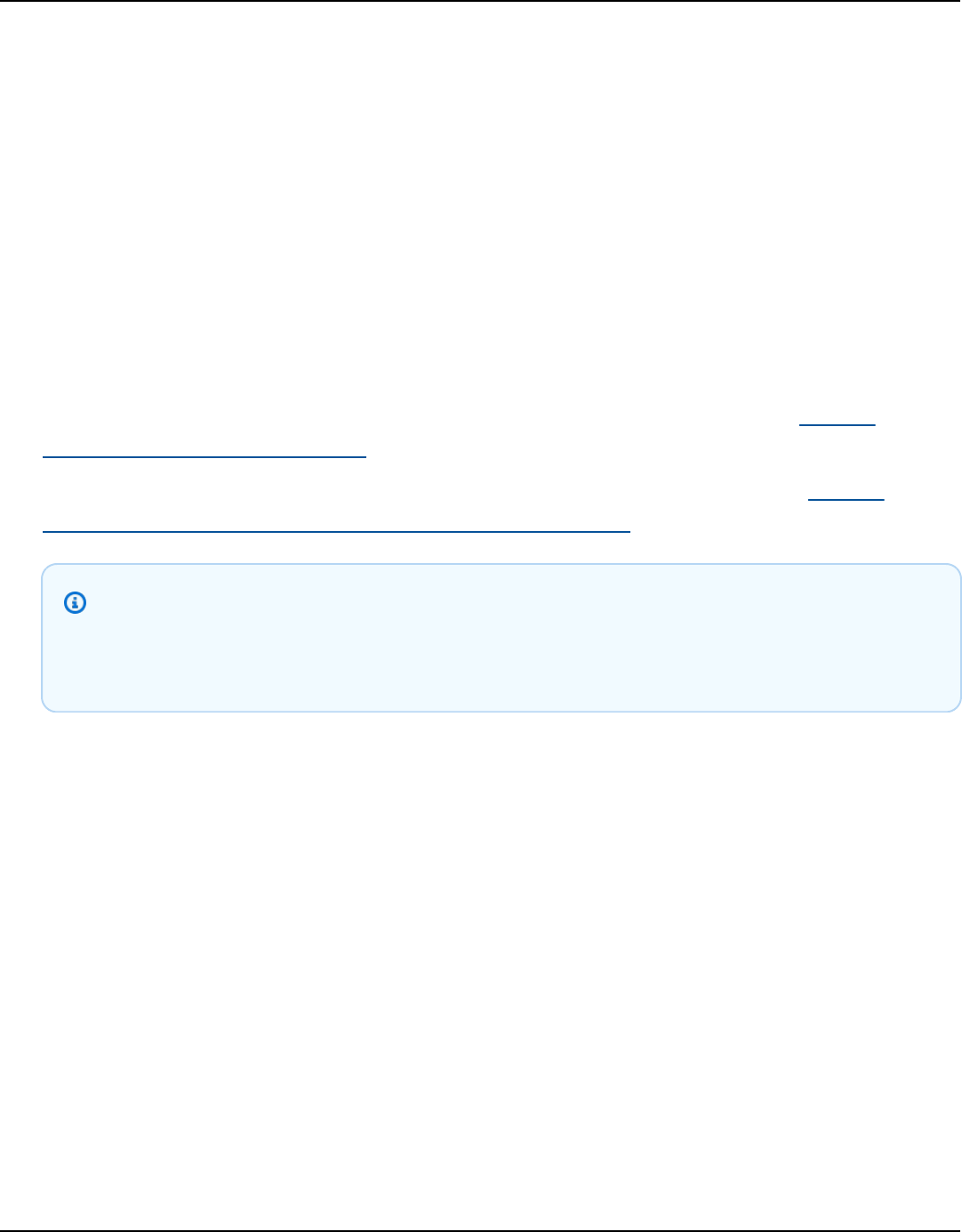
AWS Billing User Guide
• Identify IAM policies and reference the IAM actions affected by this migration
• Copy the updated policy to your clipboard
• Open the affected policy in IAM policy editor
• Save the updated policy for your account
• Turn on the fine-grained permissions and disable the old actions
This tool operates within the boundaries of the AWS account you're signed into, and information
regarding other AWS Organizations accounts are not disclosed.
To use the Affected policies tool
1. Sign in to the AWS Management Console and open the AWS Billing console at https://
console.aws.amazon.com/billing/.
2. Paste the following URL into your browser to access the Affected policies tool: https://
console.aws.amazon.com/poliden/home?region=us-east-1#/.
Note
You must have the iam:GetAccountAuthorizationDetails permission to view
this page.
3. Review the table that lists the affected IAM policies. Use the Deprecated IAM actions column
to review specific IAM actions referenced in a policy.
4. Under the Copy updated policy column, choose Copy to copy the updated policy to
your clipboard. The updated policy contains the existing policy and the suggested
fine-grained actions appended to it as a separate Sid block. This block has the prefix
AffectedPoliciesMigrator at the end of the policy.
5. Under the Edit Policy in IAM Console column, choose Edit to go to IAM policy editor. You will
see the JSON of your existing policy.
6. Replace the entire existing policy with the updated policy that you copied in step 4. You can
make any other changes as needed.
7. Choose Next and then choose Save changes.
8. Repeat steps 3 to 7 for all affected policies.
Migrating access control Version 2.0 373

AWS Billing User Guide
9. After you update your policies, refresh the Affected policies tool to confirm there are no
affected policies listed. The New IAM Actions Found column should have Yes for all policies
and the Copy and Edit buttons will be disabled. Your affected policies are updated.
To enable fine-grained actions for your account
After you update your policies, follow this procedure to enable the fine-grained actions for your
account.
Only the management account (payer) of an organization or individual accounts can use the
Manage New IAM Actions section. An individual account can enable the new actions for itself. A
management account can enable new actions for the entire organization or a subset of member
accounts. If you're a management account, update the affected policies for all member accounts
and enable the new actions for your organization. For more information, see the How to toggle
accounts between new fine-grained actions or existing IAM actions? section in the AWS blog post.
Note
To do this, you must have the following permissions:
•
aws-portal:GetConsoleActionSetEnforced
•
aws-portal:UpdateConsoleActionSetEnforced
•
ce:GetConsoleActionSetEnforced
•
ce:UpdateConsoleActionSetEnforced
•
purchase-orders:GetConsoleActionSetEnforced
•
purchase-orders:UpdateConsoleActionSetEnforced
If you don't see the Manage New IAM Actions section, this means your account has already
enabled the fine-grained IAM actions.
1. Under Manage New IAM Actions, the Current Action Set Enforced setting will have the
Existing status.
Choose Enable New actions (Fine Grained) and then choose Apply changes.
Migrating access control Version 2.0 374

AWS Billing User Guide
2. In the dialog box, choose Yes. The Current Action Set Enforced status will change to
Fine Grained. This means the new actions are enforced for your AWS account or for your
organization.
3. (Optional) You can then update your existing policies to remove any of the old actions.
Example Example: Before and after IAM policy
The following IAM policy has the old aws-portal:ViewPaymentMethods action.
{
"Version": "2012-10-17",
"Statement": [
{
"Effect": "Allow",
"Action": [
"aws-portal:ViewPaymentMethods"
],
"Resource": "*"
}
]
}
After you copy the updated policy, the following example has the new Sid block with the fine-
grained actions.
{
"Version": "2012-10-17",
"Statement": [
{
"Effect": "Allow",
"Action": [
"aws-portal:ViewPaymentMethods"
],
"Resource": "*"
},
{
"Sid": "AffectedPoliciesMigrator0",
"Effect": "Allow",
"Action": [
"account:GetAccountInformation",
"invoicing:GetInvoicePDF",
Migrating access control Version 2.0 375

AWS Billing User Guide
"payments:GetPaymentInstrument",
"payments:GetPaymentStatus",
"payments:ListPaymentPreferences"
],
"Resource": "*"
}
]
}
Related resources
For more information, see Sid in the IAM User Guide.
For more information about the new fine-grained actions, see the Mapping fine-grained IAM
actions reference and Using fine-grained Billing actions.
Use scripts to bulk migrate your policies to use fine-grained IAM actions
Note
The following AWS Identity and Access Management (IAM) actions have reached the end of
standard support on July 2023:
•
aws-portal namespace
•
purchase-orders:ViewPurchaseOrders
•
purchase-orders:ModifyPurchaseOrders
If you're using AWS Organizations, you can use the bulk policy migrator scripts or bulk
policy migrator to update polices from your payer account. You can also use the old to
granular action mapping reference to verify the IAM actions that need to be added.
If you have an AWS account, or are a part of an AWS Organizations created on or after
March 6, 2023, 11:00 AM (PDT), the fine-grained actions are already in effect in your
organization.
To help migrate your IAM policies to use new actions, known as fine-grained actions, you can use
scripts from the AWS Samples website.
You run these scripts from the payer account of your organization to identify the following affected
policies in your organization that use the old IAM actions:
Migrating access control Version 2.0 376

AWS Billing User Guide
• Customer managed IAM policies
• Role, group, and user IAM inline policies
• Service control policies (SCPs) (applies to the payer account only)
• Permission sets
The scripts generate suggestions for new actions that correspond to existing actions that are used
in the policy. You then review the suggestions and use the scripts to add the new actions across
all affected policies in your organization. You don't need to update AWS managed policies or AWS
managed SCPs (for example, AWS Control Tower and AWS Organizations SCPs).
You use these scripts to:
• Streamline the policy updates to help you manage the affected policies from the payer account.
• Reduce the amount of time that you need to update the policies. You don't need to sign into
each member account and manually update the policies.
• Group identical policies from different member accounts together. You can then review and
apply the same updates across all identical policies, instead of reviewing them one by one.
• Ensure that user access remains unaffected after AWS retires the old IAM actions on July 6, 2023.
For more information about policies and service control policies (SCPs), see the following topics:
• Managing IAM policies in the IAM User Guide
• Service control policies (SCPs) in the AWS Organizations User Guide
• Custom permissions in the IAM Identity Center User Guide
Overview
Follow this topic to complete the following steps:
Topics
• Prerequisites
• Step 1: Set up your environment
• Step 2: Create the CloudFormation StackSet
• Step 3: Identify the affected policies
• Step 4: Review the suggested changes
Migrating access control Version 2.0 377

AWS Billing User Guide
• Step 5: Update the affected policies
• Step 6: Revert your changes (Optional)
• IAM policy examples
Prerequisites
To get started, you must do the following:
• Download and install Python 3
• Sign in to your payer account and verify that you have an IAM principal that has the following
IAM permissions:
"iam:GetAccountAuthorizationDetails",
"iam:GetPolicy",
"iam:GetPolicyVersion",
"iam:GetUserPolicy",
"iam:GetGroupPolicy",
"iam:GetRole",
"iam:GetRolePolicy",
"iam:CreatePolicyVersion",
"iam:DeletePolicyVersion",
"iam:ListAttachedRolePolicies",
"iam:ListPolicyVersions",
"iam:PutUserPolicy",
"iam:PutGroupPolicy",
"iam:PutRolePolicy",
"iam:SetDefaultPolicyVersion",
"organizations:ListAccounts",
"organizations:ListPolicies",
"organizations:DescribePolicy",
"organizations:UpdatePolicy",
"organizations:DescribeOrganization",
"sso:DescribePermissionSet",
"sso:DescribePermissionSetProvisioningStatus",
"sso:GetInlinePolicyForPermissionSet",
"sso:ListInstances",
"sso:ListPermissionSets",
"sso:ProvisionPermissionSet",
"sso:PutInlinePolicyToPermissionSet",
"sts:AssumeRole"
Migrating access control Version 2.0 378
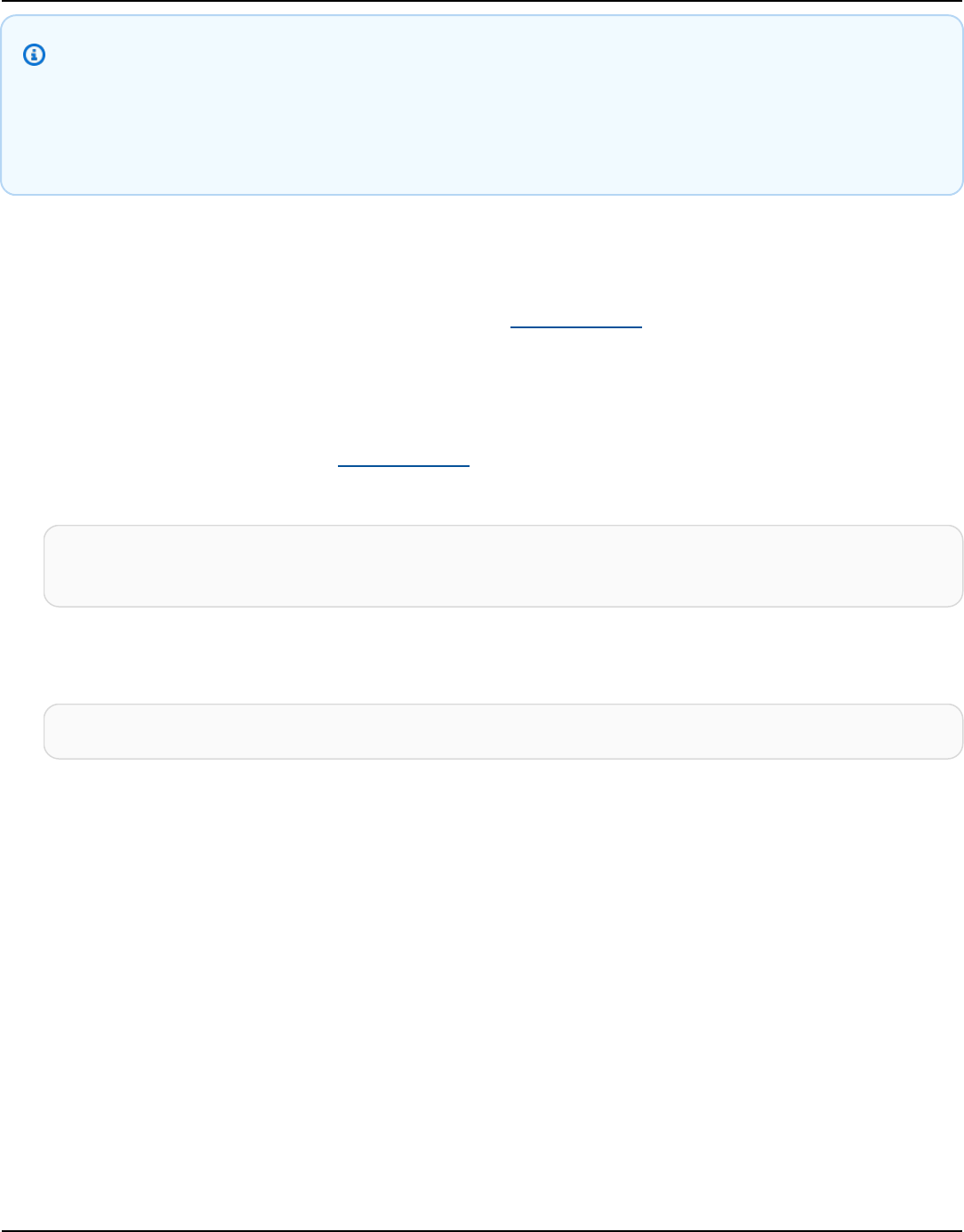
AWS Billing User Guide
Tip
To get started, we recommend that you use a subset of an account, such as a test account,
to verify that the suggested changes are expected.
You can then run the scripts again for remaining accounts in your organization.
Step 1: Set up your environment
To get started, download the required files from the AWS Samples website. You then run
commands to set up your environment.
To set up your environment
1. Clone the repository from the AWS Samples website. In a command line window, you can use
the following command:
git clone https://github.com/aws-samples/bulk-policy-migrator-scripts-for-account-
cost-billing-consoles.git
2. Navigate to the directory where you downloaded the files. You can use the following
command:
cd bulk-policy-migrator-scripts-for-account-cost-billing-consoles
In the repository, you can find the following scripts and resources:
•
billing_console_policy_migrator_role.json – The CloudFormation template that
creates the BillingConsolePolicyMigratorRole IAM role in member accounts of your
organization. This role allows the scripts to assume the role, and then read and update the
affected policies.
•
action_mapping_config.json– Contains the one-to-many mapping of the old actions to
the new actions. The scripts use this file to suggest the new actions for each affected policy
that contains the old actions.
Each old action corresponds to multiple fine-grained actions. The new actions suggested in
the file provide users access to the same AWS services before the migration.
Migrating access control Version 2.0 379
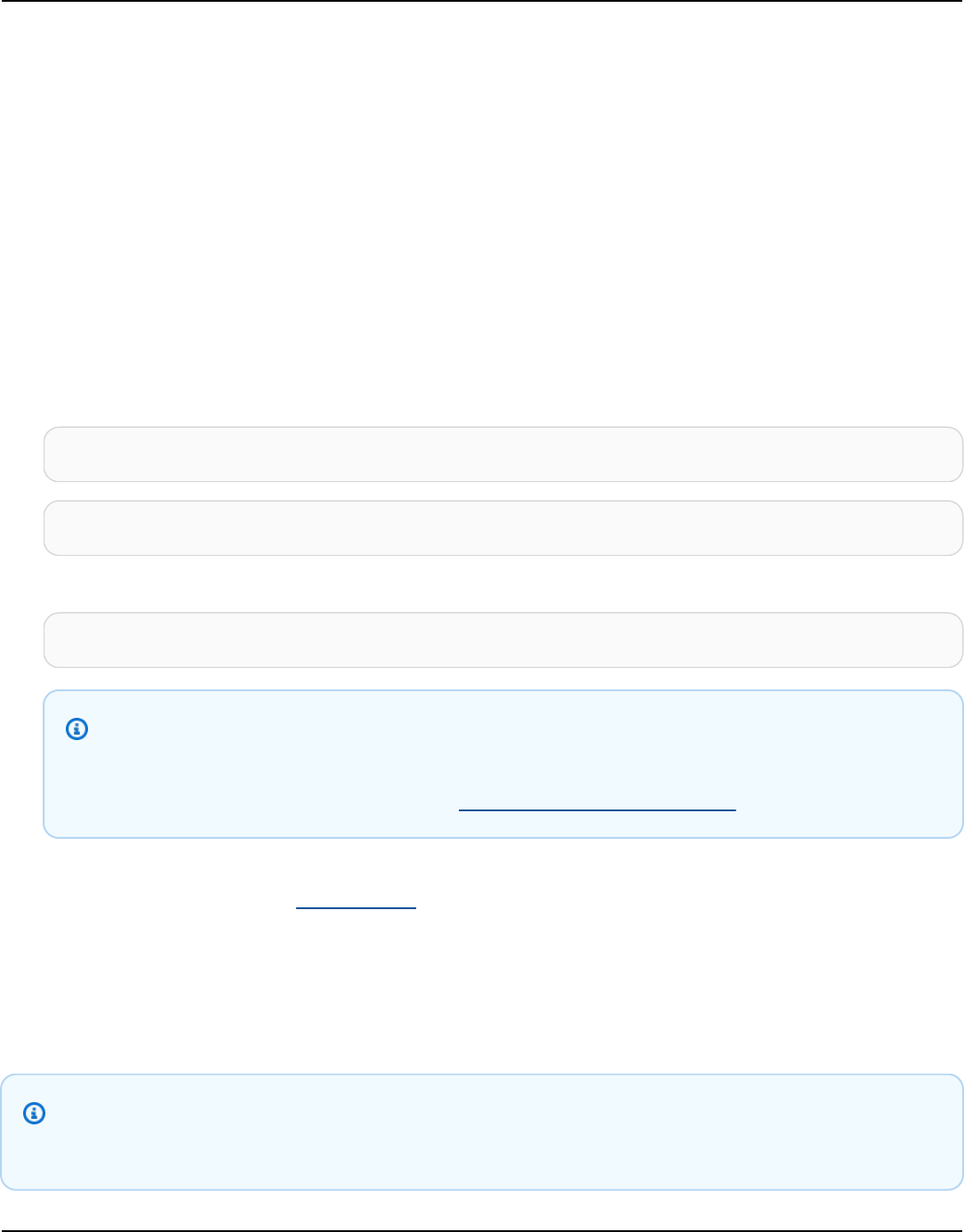
AWS Billing User Guide
•
identify_affected_policies.py – Scans and identifies affected policies in your
organization. This script generates a affected_policies_and_suggestions.json file
that lists the affected policies along with the suggested new actions.
Affected policies that use the same set of old actions are grouped together in the JSON file,
so that you can review or update the suggested new actions.
•
update_affected_policies.py – Updates the affected policies in your organization. The
script inputs theaffected_policies_and_suggestions.json file, and then adds the
suggested new actions to the policies.
•
rollback_affected_policies.py – (Optional) Reverts changes made to the affected
policies. This script removes the new fine-grained actions from the affected policies.
3. Run the following commands to set up and activate the virtual environment.
python3 -m venv venv
source venv/bin/activate
4. Run the following command to install the AWS SDK for Python (Boto3) dependency.
pip install -r requirements.txt
Note
You must configure your AWS credentials to use the AWS Command Line Interface
(AWS CLI). For more information, see AWS SDK for Python (Boto3).
For more information, see the README.md file.
Step 2: Create the CloudFormation StackSet
Follow this procedure to create a CloudFormation stack set. This stack set then creates the
BillingConsolePolicyMigratorRole IAM role for all member accounts in your organization.
Note
You only need to complete this step once from the management account (payer account).
Migrating access control Version 2.0 380

AWS Billing User Guide
To create the CloudFormation StackSet
1.
In a text editor, open the billing_console_policy_migrator_role.json file, and
replace each instance of <management_account> with the account ID of the payer account
(for example, 123456789012).
2. Save the file.
3. Sign in to the AWS Management Console as the payer account.
4. In the CloudFormation console, create a stack set with the
billing_console_policy_migrator_role.json file that you updated.
For more information, see Creating a stack set on the AWS CloudFormation console in the
AWS CloudFormation User Guide.
After CloudFormation creates the stack set, each member account in your organization has an
BillingConsolePolicyMigratorRole IAM role.
The IAM role contains the following permissions:
"iam:GetAccountAuthorizationDetails",
"iam:GetPolicy",
"iam:GetPolicyVersion",
"iam:GetUserPolicy",
"iam:GetGroupPolicy",
"iam:GetRolePolicy",
"iam:CreatePolicyVersion",
"iam:DeletePolicyVersion",
"iam:ListPolicyVersions",
"iam:PutUserPolicy",
"iam:PutGroupPolicy",
"iam:PutRolePolicy",
"iam:SetDefaultPolicyVersion"
Notes
• For each member account, the scripts call the AssumeRole API operation to get
temporary credentials to assume the BillingConsolePolicyMigratorRole IAM role.
• The scripts call the ListAccounts API operation to get all member accounts.
Migrating access control Version 2.0 381

AWS Billing User Guide
• The scripts also call IAM API operations to perform the read and write permissions to the
policies.
Step 3: Identify the affected policies
After you create the stack set and downloaded the files, run the
identify_affected_policies.py script. This script assumes the
BillingConsolePolicyMigratorRole IAM role for each member account, and then identifies
the affected policies.
To identify the affected policies
1. Navigate to the directory where you downloaded the scripts.
cd policy_migration_scripts/scripts
2.
Run the identify_affected_policies.py script.
You can use the following input parameters:
• AWS accounts that you want the script to scan. To specify accounts, use the following input
parameters:
•
--all – Scans all member accounts in your organization.
python3 identify_affected_policies.py --all
•
--accounts – Scans a subset of member accounts in your organization.
python3 identify_affected_policies.py --accounts 111122223333, 444455556666,
777788889999
•
--exclude-accounts– Excludes specific member accounts in your organization.
python3 identify_affected_policies.py --all --exclude-accounts 111111111111,
222222222222, 333333333333
•
–-action-mapping-config-file– (Optional) Specify the path to the
action_mapping_config.json file. The script uses this file to generate suggested
Migrating access control Version 2.0 382

AWS Billing User Guide
updates for affected policies. If you don't specify the path, the script uses the
action_mapping_config.json file in the folder.
python3 identify_affected_policies.py –-action-mapping-config-file c:\Users\username
\Desktop\Scripts\action_mapping_config.json –-all
Note
You can't specify organizational units (OUs) with this script.
After you run the script, it creates two JSON files in a Affected_Policies_<Timestamp> folder:
•
affected_policies_and_suggestions.json
•
detailed_affected_policies.json
affected_policies_and_suggestions.json
Lists the affected policies with the suggested new actions. Affected policies that use the same
set of old actions are grouped together in the file.
This file contains the following sections:
• Metadata that provides an overview of the accounts that you specified in the script, including:
• Accounts scanned and the input parameter used for the
identify_affected_policies.py script
• Number of affected accounts
• Number of affected policies
• Number of similar policy groups
• Similar policy groups – Includes the list of accounts and policy details, including the following
sections:
•
ImpactedPolicies – Specifies which policies are affected and included in the group
•
ImpactedPolicyStatements – Provides information about the Sid blocks that currently
use the old actions in the affected policy. This section includes the old actions and IAM
elements, such as Effect, Principal, NotPrincipal, NotAction, and Condition.
Migrating access control Version 2.0 383
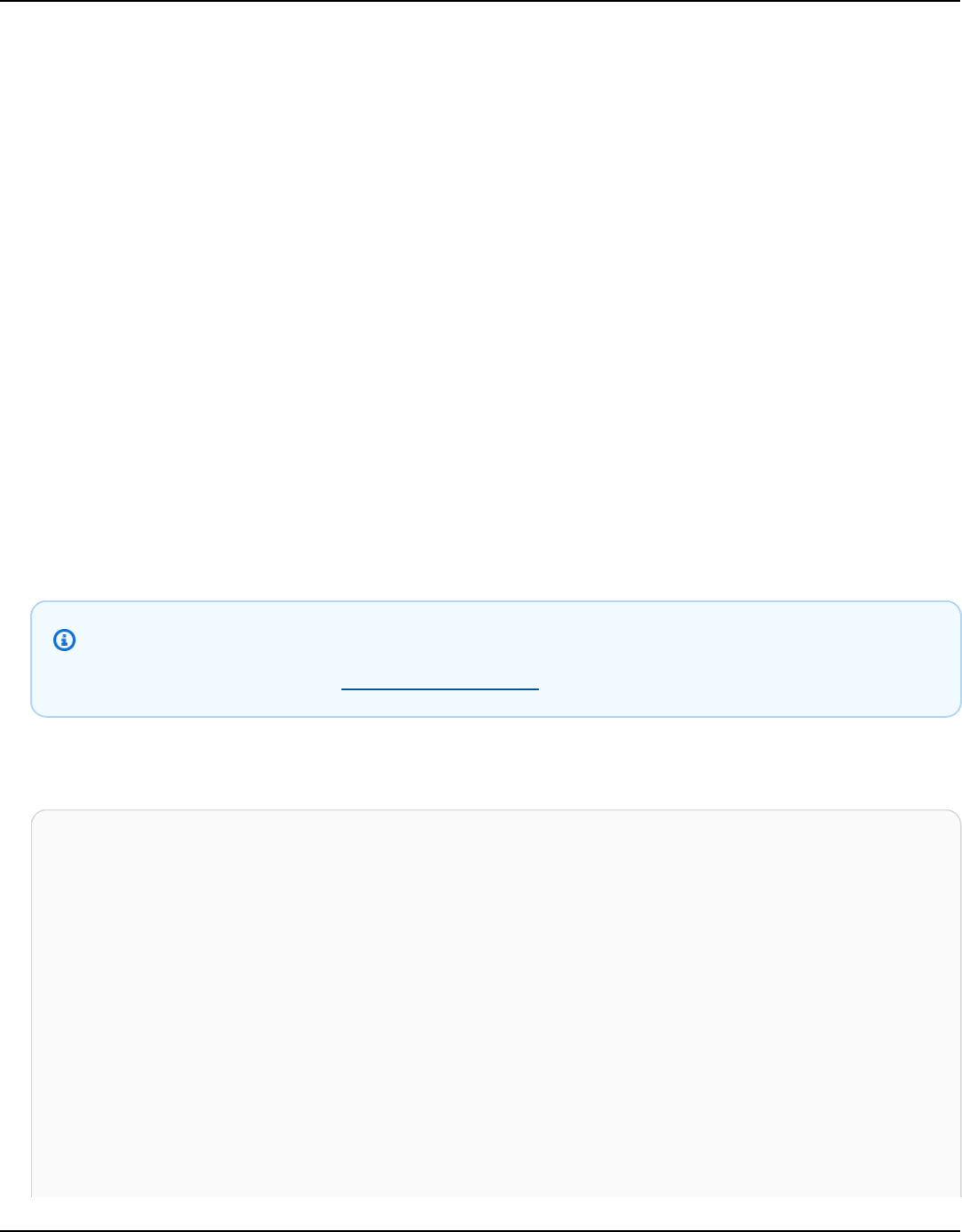
AWS Billing User Guide
•
SuggestedPolicyStatementsToAppend – Provides the suggested new actions that are
added as new SID block.
When you update the policies, this block is appended at the end of the policies.
Example Example affected_policies_and_suggestions.json file
This file groups together policies that are similar based on the following criteria:
•
Same old actions used – Policies that have the same old actions across all SID blocks.
• Matching details – In addition to affected actions, the policies have identical IAM
elements,such as:
•
Effect (Allow/Deny)
•
Principal (who is allowed or denied access)
•
NotAction (what actions are not allowed)
•
NotPrincipal (who is explicitly denied access)
•
Resource (which AWS resources the policy applies to)
•
Condition (any specific conditions under which the policy applies)
Note
For more information, see IAM policy examples.
Example Example affected_policies_and_suggestions.json
[{
"AccountsScanned": [
"111111111111",
"222222222222"
],
"TotalAffectedAccounts": 2,
"TotalAffectedPolicies": 2,
"TotalSimilarPolicyGroups": 2
},
{
"GroupName": "Group1",
"ImpactedPolicies": [{
"Account": "111111111111",
"PolicyType": "UserInlinePolicy",
Migrating access control Version 2.0 384

AWS Billing User Guide
"PolicyName": "Inline-Test-Policy-Allow",
"PolicyIdentifier": "1111111_1-user:Inline-Test-Policy-Allow"
},
{
"Account": "222222222222",
"PolicyType": "UserInlinePolicy",
"PolicyName": "Inline-Test-Policy-Allow",
"PolicyIdentifier": "222222_1-group:Inline-Test-Policy-Allow"
}
],
"ImpactedPolicyStatements": [
[{
"Sid": "VisualEditor0",
"Effect": "Allow",
"Action": [
"aws-portal:ViewAccounts"
],
"Resource": "*"
}]
],
"SuggestedPolicyStatementsToAppend": [{
"Sid": "BillingConsolePolicyMigrator0",
"Effect": "Allow",
"Action": [
"account:GetAccountInformation",
"account:GetAlternateContact",
"account:GetChallengeQuestions",
"account:GetContactInformation",
"billing:GetContractInformation",
"billing:GetIAMAccessPreference",
"billing:GetSellerOfRecord",
"payments:ListPaymentPreferences"
],
"Resource": "*"
}]
},
{
"GroupName": "Group2",
"ImpactedPolicies": [{
"Account": "111111111111",
"PolicyType": "UserInlinePolicy",
"PolicyName": "Inline-Test-Policy-deny",
"PolicyIdentifier": "1111111_2-user:Inline-Test-Policy-deny"
},
Migrating access control Version 2.0 385

AWS Billing User Guide
{
"Account": "222222222222",
"PolicyType": "UserInlinePolicy",
"PolicyName": "Inline-Test-Policy-deny",
"PolicyIdentifier": "222222_2-group:Inline-Test-Policy-deny"
}
],
"ImpactedPolicyStatements": [
[{
"Sid": "VisualEditor0",
"Effect": "deny",
"Action": [
"aws-portal:ModifyAccount"
],
"Resource": "*"
}]
],
"SuggestedPolicyStatementsToAppend": [{
"Sid": "BillingConsolePolicyMigrator1",
"Effect": "Deny",
"Action": [
"account:CloseAccount",
"account:DeleteAlternateContact",
"account:PutAlternateContact",
"account:PutChallengeQuestions",
"account:PutContactInformation",
"billing:PutContractInformation",
"billing:UpdateIAMAccessPreference",
"payments:UpdatePaymentPreferences"
],
"Resource": "*"
}]
}
]
detailed_affected_policies.json
Contains the definition of all affected policies that the identify_affected_policies.py
script identified for member accounts.
The file groups similar policies together. You can use this file as reference, so that you can
review and manage policy changes without needing to sign in to each member account to
review the updates for each policy and account individually.
Migrating access control Version 2.0 386

AWS Billing User Guide
You can search the file for the policy name (for example,
YourCustomerManagedReadOnlyAccessBillingUser) and then review the affected policy
definitions.
Example Example: detailed_affected_policies.json
[{
"Account": "111111111111",
"PolicyType": "CustomerManagedPolicy",
"PolicyName": "AwsPortalviewAccount",
"PolicyIdentifier": "arn:aws:iam::111111111111:policy/AwsPortalviewAccount",
"PolicyDocument": {
"Version": "2012-10-17",
"Statement": [{
"Sid": "VisualEditor0",
"Effect": "Allow",
"Action": [
"aws-portal:ViewAccount"
],
"Resource": "*"
}]
}
},
{
"Account": "222222222222",
"PolicyType": "CustomerManagedPolicy",
"PolicyName": "AwsPortalviewAccount",
"PolicyIdentifier": "arn:aws:iam::222222222222:policy/AwsPortalviewAccount",
"PolicyDocument": {
"Version": "2012-10-17",
"Statement": [{
"Sid": "VisualEditor0",
"Effect": "Allow",
"Action": [
"aws-portal:ViewAccount"
],
"Resource": "*"
}]
}
},
Migrating access control Version 2.0 387

AWS Billing User Guide
{
"Account": "111111111111",
"PolicyType": "CustomerManagedPolicy",
"PolicyName": "AwsPortalModifyAccount",
"PolicyIdentifier": "arn:aws:iam::111111111111:policy/
AwsPortalModifyAccount",
"PolicyDocument": {
"Version": "2012-10-17",
"Statement": [{
"Sid": "VisualEditor0",
"Effect": "Deny",
"Action": [
"aws-portal:ModifyAccount"
],
"Resource": "*"
}]
}
},
{
"Account": "222222222222",
"PolicyType": "CustomerManagedPolicy",
"PolicyName": "AwsPortalModifyAccount",
"PolicyIdentifier": "arn:aws:iam::222222222222:policy/
AwsPortalModifyAccount",
"PolicyDocument": {
"Version": "2012-10-17",
"Statement": [{
"Sid": "VisualEditor0",
"Effect": "Deny",
"Action": [
"aws-portal:ModifyAccount"
],
"Resource": "*"
}]
}
}
]
Migrating access control Version 2.0 388

AWS Billing User Guide
Step 4: Review the suggested changes
After the script creates the affected_policies_and_suggestions.json file, review it and
make any changes.
To review the affected policies
1.
In a text editor, open the affected_policies_and_suggestions.json file.
2.
In the AccountsScanned section, verify that the number of similar groups identified across
the scanned accounts is expected.
3. Review the suggested fine-grained actions that will be added to the affected policies.
4. Update your file as needed and then save it.
Example 1: Update the action_mapping_config.json file
You can update the suggested mappings in the action_mapping_config.json. After you
update the file, you can rerun the identify_affected_policies.py script. This script
generates updated suggestions for the affected policies.
You can make multiple versions of the action_mapping_config.json file to change the policies
for different accounts with different permissions. For example, you might create one file named
action_mapping_config_testing.json to migrate permissions for your test accounts and
action_mapping_config_production.json for your production accounts.
Example 2: Update the affected_policies_and_suggestions.json file
To make changes to the suggested replacements for a specific affected policy
group, you can directly edit the suggested replacements section within the
affected_policies_and_suggestions.json file.
Any changes that you make in this section are applied to all policies within that specific affected
policy group.
Example 3: Customize a specific policy
If you find that a policy within an affected policy group that needs different changes than the
suggested updates, you can do the following:
•
Exclude specific accounts from the identify_affected_policies.py script. You can then
review those excluded accounts separately.
Migrating access control Version 2.0 389

AWS Billing User Guide
•
Update the affected Sid blocks by removing the affected policies and accounts that need
different permissions. Create a JSON block that includes only the specific accounts or excludes
them from the current update affected policy run.
When you rerun the identify_affected_policies.py script, only the relevant accounts
appear in the updated block. You can then refine the suggested replacements for that specific
Sid block.
Step 5: Update the affected policies
After you review and refine the suggested replacements, run the
update_affected_policies.py script. The script takes the
affected_policies_and_suggestions.json file as input. This script assumes the
BillingConsolePolicyMigratorRole IAM role to update the affected policies listed in the
affected_policies_and_suggestions.json file.
To update the affected policies
1. If you haven't already, open a command line window for the AWS CLI.
2.
Enter the following command to run the update_affected_policies.py script. You can
enter the following input parameter:
•
The directory path of the affected_policies_and_suggestions.json file that contains a
list of the affected policies to be updated. This file is an output of the previous step.
python3 update_affected_policies.py --affected-policies-directory
Affected_Policies_<Timestamp>
The update_affected_policies.py script updates the affected policies within the
affected_policies_and_suggestions.json file with the suggested new actions. The script
adds a Sid block to the policies, identified as BillingConsolePolicyMigrator#, where #
corresponds to an incremental counter (for example, 1, 2, 3).
For example, if there are multiple Sid blocks in the affected policy that use old actions, the script
adds multiple Sid blocks that appear as BillingConsolePolicyMigrator# to correspond to
each Sid block.
Migrating access control Version 2.0 390

AWS Billing User Guide
Important
•
The script doesn't remove old IAM actions from the policies, and or change existing Sid
blocks in the policies. Instead, it creates Sid blocks and appends them to the end of the
policy. These new Sid blocks have the suggested new actions from the JSON file. This
ensures that the permissions of the original policies aren't changed.
• We recommend that you do not change the name of the
BillingConsolePolicyMigrator# Sid blocks in case you need to revert your
changes.
Example Example: Policy with appended Sid blocks
See the appended Sid blocks in the BillingConsolePolicyMigrator1 and
BillingConsolePolicyMigrator2 blocks.
{
"Version": "2012-10-17",
"Statement": [{
"Effect": "Allow",
"Action": [
"ce:*",
"aws-portal:ViewAccount"
],
"Resource": "*",
"Principal": {
"AWS": "arn:aws:iam::111111111111:BillingRole"
},
"Condition": {
"BoolIfExists": {
"aws:MultiFactorAuthPresent": "true"
}
}
},
{
"Sid": "BillingConsolePolicyMigrator1",
"Effect": "Allow",
"Action": [
"account:GetAccountInformation",
"account:GetAlternateContact",
"account:GetChallengeQuestions",
Migrating access control Version 2.0 391

AWS Billing User Guide
"account:GetContactInformation",
"billing:GetContractInformation",
"billing:GetIAMAccessPreference",
"billing:GetSellerOfRecord",
"payments:ListPaymentPreferences"
],
"Resource": "*",
"Principal": {
"AWS": "arn:aws:iam::111111111111:BillingRole"
},
"Condition": {
"BoolIfExists": {
"aws:MultiFactorAuthPresent": "true"
}
}
},
{
"Sid": "BillingConsolePolicyMigrator2",
"Effect": "Deny",
"Action": [
"account:CloseAccount",
"account:DeleteAlternateContact",
"account:PutAlternateContact",
"account:PutChallengeQuestions",
"account:PutContactInformation",
"billing:PutContractInformation",
"billing:UpdateIAMAccessPreference",
"payments:UpdatePaymentPreferences"
],
"Resource": "*"
}
]
}
The script generates a status report that contains unsuccessful operations and outputs the JSON
file locally.
Example Example: Status report
[{
"Account": "111111111111",
"PolicyType": "Customer Managed Policy"
"PolicyName": "AwsPortalViewPaymentMethods",
Migrating access control Version 2.0 392

AWS Billing User Guide
"PolicyIdentifier": "identifier",
"Status": "FAILURE", // FAILURE or SKIPPED
"ErrorMessage": "Error message details"
}]
Important
•
If you re-run the identify_affected_policies.py and
update_affected_policies.py scripts , they skip all policies that contain the
BillingConsolePolicyMigratorRole#Sid block. The scripts assume that those
policies were previously scanned and updated, and that they don't require additional
updates. This prevents the script from duplicating the same actions in the policy.
• After you update the affected policies, you can use the new IAM by using the affected
policies tool. If you identify any issues, you can use the tool to switch back to the
previous actions. You can also use a script to revert your policy updates.
For more information, see How to use the affected policies tool and the Changes to AWS
Billing, Cost Management, and Account Consoles Permissions blog post.
• To manage your updates, you can:
• Run the scripts for each account individually.
• Run the script in batches for similar accounts, such as testing, QA, and production
accounts.
• Run the script for all accounts.
• Choose a mix between updating some accounts in batches, and then updating others
individually.
Step 6: Revert your changes (Optional)
The rollback_affected_policies.py script reverts the changes applied to each
affected policy for the specified accounts. The script removes all Sid blocks that
the update_affected_policies.py script appended. These Sid blocks have the
BillingConsolePolicyMigratorRole# format.
To revert your changes
1. If you haven't already, open a command line window for the AWS CLI.
Migrating access control Version 2.0 393

AWS Billing User Guide
2.
Enter the following command to run the rollback_affected_policies.py script. You can
enter the following input parameters:
•
--accounts
• Specifies a comma-separated list of the AWS account IDs that you want to include in the
rollback.
• The following example scans the policies in the specified AWS accounts, and removes any
statements with the BillingConsolePolicyMigrator# Sid block.
python3 rollback_affected_policies.py –-accounts 111122223333, 555555555555,
666666666666
•
--all
• Includes all AWS account IDs in your organization.
• The following example scans all policies in your organization, and removes any statements
with the BillingConsolePolicyMigratorRole# Sid block.
python3 rollback_affected_policies.py –-all
•
--exclude-accounts
• Specifies a comma-separated list of the AWS account IDs that you want to exclude from the
rollback.
You can use this parameter only when you also specify the --all parameter.
• The following example scans the policies for all AWS accounts in your organization, except for
the specified accounts.
python3 rollback_affected_policies.py --all --exclude-accounts 777777777777,
888888888888, 999999999999
IAM policy examples
Policies are considered similar if they have identical:
•
Affected actions across all Sid blocks.
• Details in the following IAM elements:
Migrating access control Version 2.0 394

AWS Billing User Guide
•
Effect (Allow/Deny)
•
Principal (who is allowed or denied access)
•
NotAction (what actions are not allowed)
•
NotPrincipal (who is explicitly denied access)
•
Resource (which AWS resources the policy applies to)
•
Condition (any specific conditions under which the policy applies)
The following examples show policies which IAM might or might not consider similar based on the
differences between them.
Example Example 1: Policies are considered similar
Each policy type is different, but both policies contain one Sid block with the same affected
Action.
Policy 1: Group inline IAM policy
{
"Version": "2012-10-17",
"Statement": [{
"Sid": "VisualEditor0",
"Effect": "Allow",
"Action": [
"aws-portal:ViewAccount",
"aws-portal:*Billing"
],
"Resource": "*"
}]
}
Policy 2: Customer managed IAM policy
{
"Version": "2012-10-17",
"Statement": [{
"Sid": "VisualEditor0",
"Effect": "Allow",
"Action": [
"aws-portal:ViewAccount",
Migrating access control Version 2.0 395

AWS Billing User Guide
"aws-portal:*Billing"
],
"Resource": "*"
}]
}
Example Example 2: Policies are considered similar
Both policies contain one Sid block with the same affected Action. Policy 2 contains additional
actions, but these actions aren't affected.
Policy 1
{
"Version": "2012-10-17",
"Statement": [{
"Sid": "VisualEditor0",
"Effect": "Allow",
"Action": [
"aws-portal:ViewAccount",
"aws-portal:*Billing"
],
"Resource": "*"
}]
}
Policy 2
{
"Version": "2012-10-17",
"Statement": [{
"Sid": "VisualEditor0",
"Effect": "Allow",
"Action": [
"aws-portal:ViewAccount",
"aws-portal:*Billing",
"athena:*"
],
"Resource": "*"
}]
}
Migrating access control Version 2.0 396

AWS Billing User Guide
Example Example 3: Policies aren't considered similar
Both policies contain one Sid block with the same affected Action. However, policy 2 contains a
Condition element that isn't present in policy 1.
Policy 1
{
"Version": "2012-10-17",
"Statement": [{
"Sid": "VisualEditor0",
"Effect": "Allow",
"Action": [
"aws-portal:ViewAccount",
"aws-portal:*Billing"
],
"Resource": "*"
}]
}
Policy 2
{
"Version": "2012-10-17",
"Statement": [{
"Sid": "VisualEditor0",
"Effect": "Allow",
"Action": [
"aws-portal:ViewAccount",
"aws-portal:*Billing",
"athena:*"
],
"Resource": "*",
"Condition": {
"BoolIfExists": {
"aws:MultiFactorAuthPresent": "true"
}
}
}]
}
Migrating access control Version 2.0 397

AWS Billing User Guide
Example Example 4: Policies are considered similar
Policy 1 has a single Sid block with an affected Action. Policy 2 has multiple Sid blocks, but the
affected Action appears in only one block.
Policy 1
{
"Version": "2012-10-17",
"Statement": [{
"Sid": "VisualEditor0",
"Effect": "Allow",
"Action": [
"aws-portal:View*"
],
"Resource": "*"
}]
}}
Policy 2
{
"Version": "2012-10-17",
"Statement": [{
"Sid": "VisualEditor0",
"Effect": "Allow",
"Action": [
"aws-portal:View*"
],
"Resource": "*"
},
{
"Sid": "VisualEditor1",
"Effect": "Allow",
"Action": [
"cloudtrail:Get*"
],
"Resource": "*"
}
]
}
Migrating access control Version 2.0 398

AWS Billing User Guide
Example Example 5: Policies aren't considered similar
Policy 1 has a single Sid block with an affected Action. Policy 2 has multiple Sid blocks, and the
affected Action appears in multiple blocks.
Policy 1
{
"Version": "2012-10-17",
"Statement": [{
"Sid": "VisualEditor0",
"Effect": "Allow",
"Action": [
"aws-portal:View*"
],
"Resource": "*"
}]
}
Policy 2
{
"Version": "2012-10-17",
"Statement": [{
"Sid": "VisualEditor0",
"Effect": "Allow",
"Action": [
"aws-portal:View*"
],
"Resource": "*"
},
{
"Sid": "VisualEditor1",
"Effect": "Deny",
"Action": [
"aws-portal:Modify*"
],
"Resource": "*"
}
]
}
Migrating access control Version 2.0 399

AWS Billing User Guide
Example Example 6: Policies are considered similar
Both policies have multiple Sid blocks, with the same affected Action in each Sid block.
Policy 1
{
"Version": "2012-10-17",
"Statement": [{
"Sid": "VisualEditor0",
"Effect": "Allow",
"Action": [
"aws-portal:*Account",
"iam:Get*"
],
"Resource": "*"
},
{
"Sid": "VisualEditor1",
"Effect": "Deny",
"Action": [
"aws-portal:Modify*",
"iam:Update*"
],
"Resource": "*"
}
]
}
Policy 2
{
"Version": "2012-10-17",
"Statement": [{
"Sid": "VisualEditor0",
"Effect": "Allow",
"Action": [
"aws-portal:*Account",
"athena:Get*"
],
"Resource": "*"
},
{
Migrating access control Version 2.0 400

AWS Billing User Guide
"Sid": "VisualEditor1",
"Effect": "Deny",
"Action": [
"aws-portal:Modify*",
"athena:Update*"
],
"Resource": "*"
}
]
}
Example Example 7
The following two policies aren't considered similar.
Policy 1 has a single Sid block with an affected Action. Policy 2 has a Sid block with the same
affected Action. However, policy 2 also contains another Sid block with different actions.
Policy 1
{
"Version": "2012-10-17",
"Statement": [{
"Sid": "VisualEditor0",
"Effect": "Allow",
"Action": [
"aws-portal:*Account",
"iam:Get*"
],
"Resource": "*"
},
{
"Sid": "VisualEditor1",
"Effect": "Deny",
"Action": [
"aws-portal:Modify*",
"iam:Update*"
],
"Resource": "*"
}
]
}
Migrating access control Version 2.0 401

AWS Billing User Guide
Policy 2
{
"Version": "2012-10-17",
"Statement": [{
"Sid": "VisualEditor0",
"Effect": "Allow",
"Action": [
"aws-portal:*Account",
"athena:Get*"
],
"Resource": "*"
},
{
"Sid": "VisualEditor1",
"Effect": "Deny",
"Action": [
"aws-portal:*Billing",
"athena:Update*"
],
"Resource": "*"
}
]
}
Mapping fine-grained IAM actions reference
Note
The following AWS Identity and Access Management (IAM) actions have reached the end of
standard support on July 2023:
•
aws-portal namespace
•
purchase-orders:ViewPurchaseOrders
•
purchase-orders:ModifyPurchaseOrders
If you're using AWS Organizations, you can use the bulk policy migrator scripts or bulk
policy migrator to update polices from your payer account. You can also use the old to
granular action mapping reference to verify the IAM actions that need to be added.
Migrating access control Version 2.0 402

AWS Billing User Guide
If you have an AWS account, or are a part of an AWS Organizations created on or after
March 6, 2023, 11:00 AM (PDT), the fine-grained actions are already in effect in your
organization.
You will need to migrate the following IAM actions in your permission policies or service control
policies (SCP):
•
aws-portal:ViewAccount
•
aws-portal:ViewBilling
•
aws-portal:ViewPaymentMethods
•
aws-portal:ViewUsage
•
aws-portal:ModifyAccount
•
aws-portal:ModifyBilling
•
aws-portal:ModifyPaymentMethods
•
purchase-orders:ViewPurchaseOrders
•
purchase-orders:ModifyPurchaseOrders
You can use this topic to view the mapping of the old to new fine-grained actions for each IAM
action that we're retiring.
Overview
1. Review your affected IAM policies in your AWS account. To do so, follow the steps in the
Affected policies tool to identify your affected IAM policies. See How to use the affected
policies tool.
2. Use the IAM console to add the new granular permissions to your policy. For example, if your
policy allows the purchase-orders:ModifyPurchaseOrders permission, you will need to
add each action in the Mapping for purchase-orders:ModifyPurchaseOrders table.
Old policy
The following policy allows a user to add, delete, or modify any purchase order in the account.
{
"Version": "2012-10-17",
Migrating access control Version 2.0 403
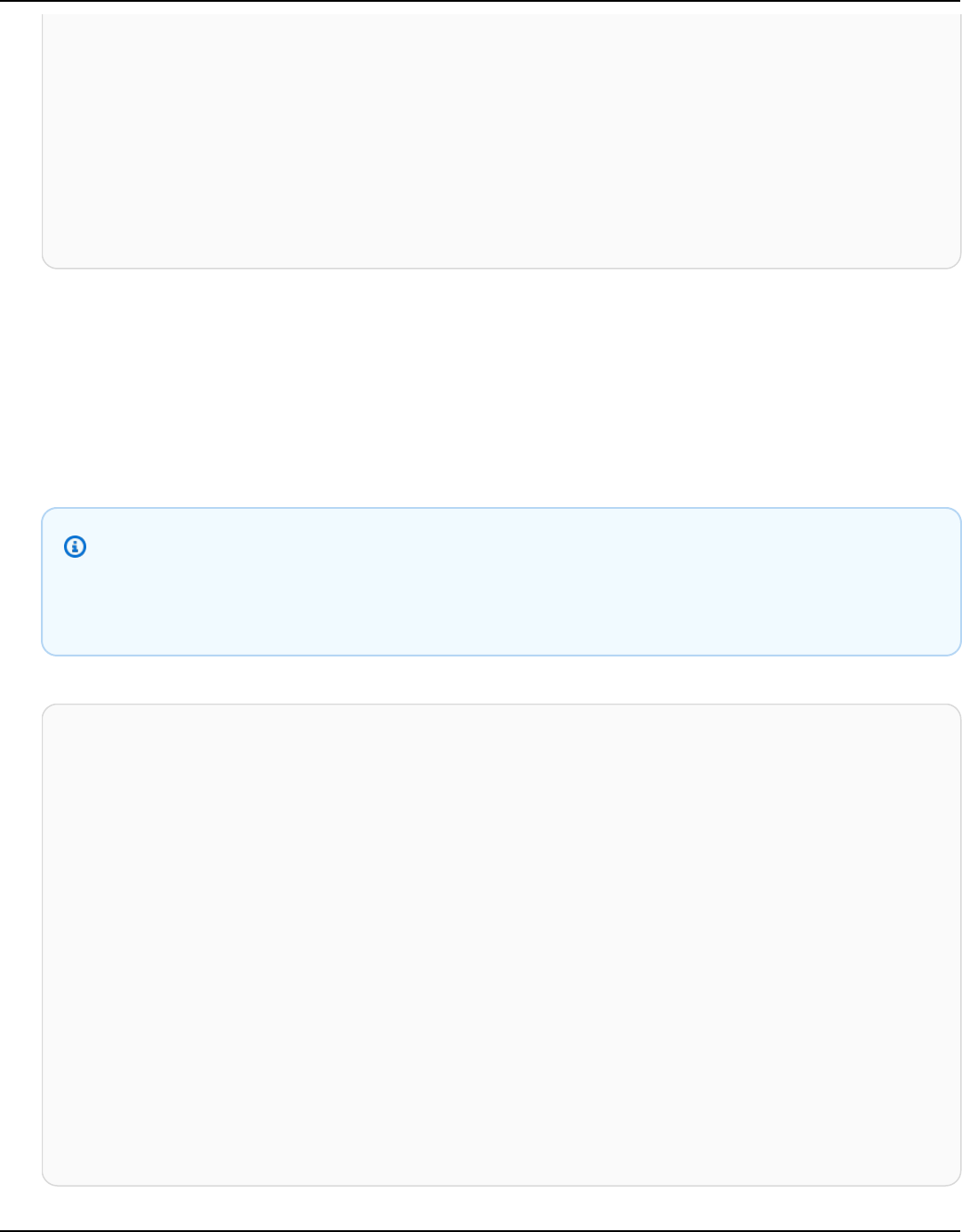
AWS Billing User Guide
"Statement": [
{
"Sid": "VisualEditor0",
"Effect": "Allow",
"Action": "purchase-orders:ModifyPurchaseOrders",
"Resource": "arn:aws:purchase-orders::123456789012:purchase-order/*"
}
]
}
New policy
The following policy also allows a user to add, delete, or modify any purchase order
in the account. Note that each granular permission appears after the old purchase-
orders:ModifyPurchaseOrders permission. These permissions give you more control over
what actions you want to allow or deny.
Tip
We recommend that you keep the old permissions to ensure that you don't lose
permissions until this migration is complete.
{
"Version": "2012-10-17",
"Statement": [
{
"Sid": "VisualEditor0",
"Effect": "Allow",
"Action": [
"purchase-orders:ModifyPurchaseOrders",
"purchase-orders:AddPurchaseOrder",
"purchase-orders:DeletePurchaseOrder",
"purchase-orders:UpdatePurchaseOrder",
"purchase-orders:UpdatePurchaseOrderStatus"
],
"Resource": "arn:aws:purchase-orders::123456789012:purchase-order/*"
}
]
}
Migrating access control Version 2.0 404
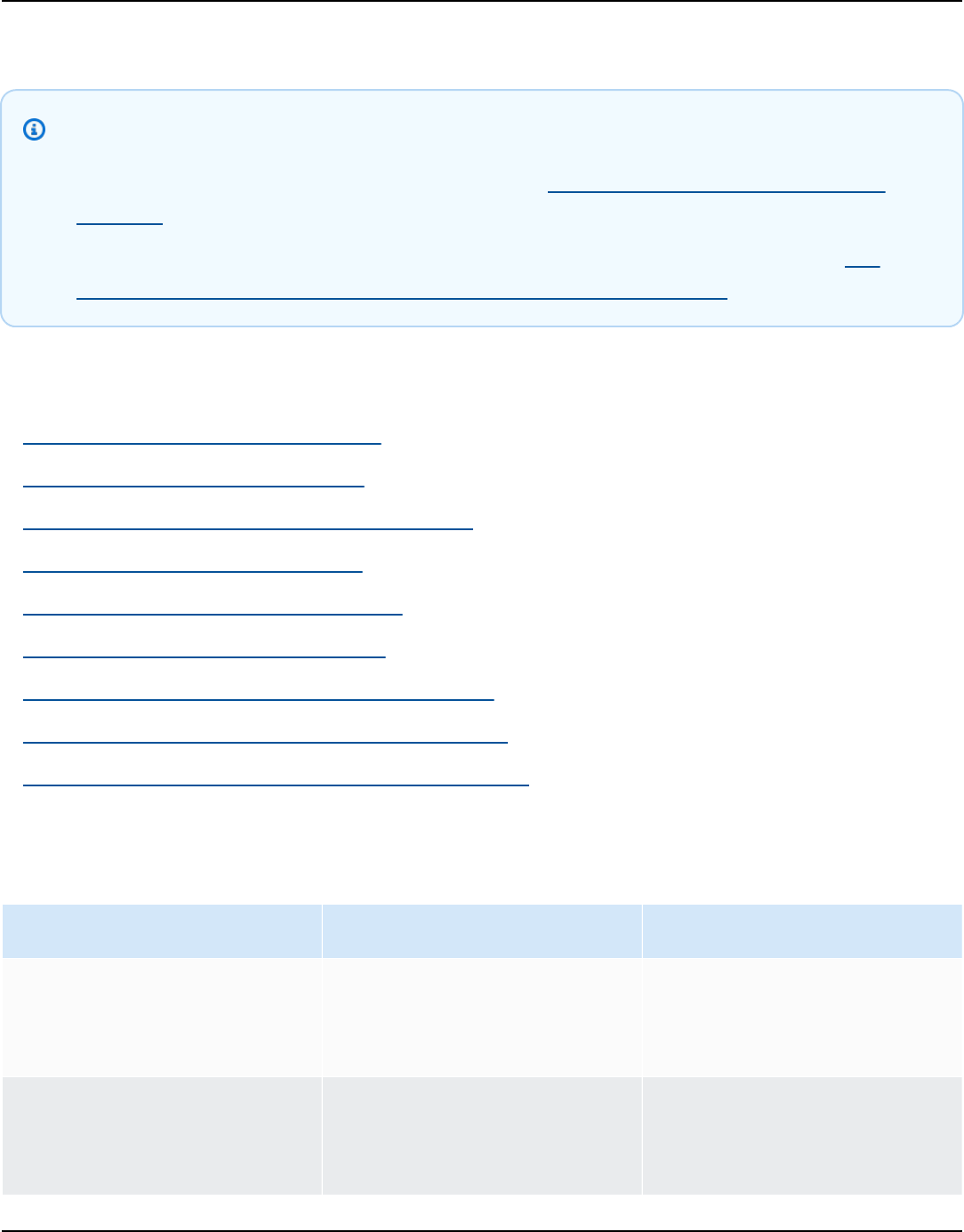
AWS Billing User Guide
3. Save your changes.
Notes
• To edit policies manually in the IAM console, see Editing customer managed policies
(console) in the IAM User Guide.
• To bulk migrate your IAM policies to use fine-grained actions (new actions), see Use
scripts to bulk migrate your policies to use fine-grained IAM actions.
Contents
• Mapping for aws-portal:ViewAccount
• Mapping for aws-portal:ViewBilling
• Mapping for aws-portal:ViewPaymentMethods
• Mapping for aws-portal:ViewUsage
• Mapping for aws-portal:ModifyAccount
• Mapping for aws-portal:ModifyBilling
• Mapping for aws-portal:ModifyPaymentMethods
• Mapping for purchase-orders:ViewPurchaseOrders
• Mapping for purchase-orders:ModifyPurchaseOrders
Mapping for aws-portal:ViewAccount
New action Description Access level
account:GetAccount
Information
Grants permission to retrieve
the account information for
an account
Read
account:GetAlterna
teContact
Grants permission to retrieve
the alternate contacts for an
account
Read
Migrating access control Version 2.0 405

AWS Billing User Guide
New action Description Access level
account:GetChallen
geQuestions
Grants permission to retrieve
the challenge questions for
an account
Read
account:GetContact
Information
Grants permission to retrieve
the primary contact informati
on for an account
Read
billing:GetContrac
tInformation
Grants permission to view the
account's contract informati
on including the contract
number, end-user organizat
ion names, purchase order
numbers, and if the account is
used to service public-sector
customers
Read
billing:GetIAMAcce
ssPreference
Grants permission to retrieve
the state of the Allow IAM
Access billing preference
Read
billing:GetSellerO
fRecord
Grants permission to retrieve
the account's default seller of
record
Read
payments:ListPayme
ntPreferences
Grants permission to get
payment preferences (for
example, preferred payment
currency, preferred payment
method)
Read
Migrating access control Version 2.0 406

AWS Billing User Guide
Mapping for aws-portal:ViewBilling
New action Description Access level
account:GetAccount
Information
Grants permission to retrieve
the account information for
an account
Read
billing:GetBilling
Data
Grants permission to perform
queries on billing information
Read
billing:GetBilling
Details
Grants permission to view
detailed line item billing
information
Read
billing:GetBilling
Notifications
Grants permission to view
notifications sent by AWS
related to your accounts
billing information
Read
billing:GetBilling
Preferences
Grants permission to view
billing preferences such as
Reserved Instances, Savings
Plans, and credits sharing
Read
billing:GetContrac
tInformation
Grants permission to view the
account's contract informati
on including the contract
number, end-user organizat
ion names, purchase order
numbers, and if the account is
used to service public-sector
customers
Read
billing:GetCredits
Grants permission to view
credits that have been
redeemed
Read
Migrating access control Version 2.0 407

AWS Billing User Guide
New action Description Access level
billing:GetIAMAcce
ssPreference
Grants permission to retrieve
the state of the Allow IAM
Access billing preference
Read
billing:GetSellerO
fRecord
Grants permission to retrieve
the account's default seller of
record
Read
billing:ListBillin
gViews
Grants permission to get
billing information for your
proforma billing groups
List
ce:DescribeNotific
ationSubscription
Grants permission to view
reservation expiration alerts
Read
ce:DescribeReport
Grants permission to view
Cost Explorer reports page
Read
ce:GetAnomalies
Grants permission to retrieve
anomalies
Read
ce:GetAnomalyMonit
ors
Grants permission to query
anomaly monitors
Read
ce:GetAnomalySubsc
riptions
Grants permission to query
anomaly subscriptions
Read
ce:GetCostAndUsage
Grants permission to retrieve
the cost and usage metrics for
your account
Read
ce:GetCostAndUsage
WithResources
Grants permission to retrieve
the cost and usage metrics
with resources for your
account
Read
Migrating access control Version 2.0 408

AWS Billing User Guide
New action Description Access level
ce:GetCostCategories
Grants permission to query
cost category names and
values for a specified time
period
Read
ce:GetCostForecast
Grants permission to retrieve
a cost forecast for a forecast
time period
Read
ce:GetDimensionVal
ues
Grants permission to retrieve
all available filter values for a
filter for a period of time
Read
ce:GetPreferences
Grants permission to view
the Cost Explorer preferences
page
Read
ce:GetReservationC
overage
Grants permission to retrieve
the reservation coverage for
your account
Read
ce:GetReservationP
urchaseRecommendat
ion
Grants permission to retrieve
the reservation recommend
ations for your account
Read
ce:GetReservationU
tilization
Grants permission to retrieve
the reservation utilization for
your account
Read
ce:GetRightsizingR
ecommendation
Grants permission to retrieve
the rightsizing recommend
ations for your account
Read
ce:GetSavingsPlans
Coverage
Grants permission to retrieve
the Savings Plans coverage
for your account
Read
Migrating access control Version 2.0 409

AWS Billing User Guide
New action Description Access level
ce:GetSavingsPlans
PurchaseRecommenda
tion
Grants permission to retrieve
the Savings Plans recommend
ations for your account
Read
ce:GetSavingsPlans
Utilization
Grants permission to retrieve
the Savings Plans utilization
for your account
Read
ce:GetSavingsPlans
UtilizationDetails
Grants permission to retrieve
the Savings Plans utilization
details for your account
Read
ce:GetTags
Grants permission to query
tags for a specified time
period
Read
ce:GetUsageForecast
Grants permission to retrieve
a usage forecast for a forecast
time period
Read
ce:ListCostAllocat
ionTags
Grants permission to list cost
allocation tags
List
ce:ListSavingsPlan
sPurchaseRecommend
ationGeneration
Grants permission to retrieve
a list of your historical
recommendation generations
Read
consolidatedbillin
g:GetAccountBillin
gRole
Grants permission to get
account role (payer, linked,
regular)
Read
consolidatedbillin
g:ListLinkedAccoun
ts
Grants permission to get
list of member and linked
accounts
List
cur:GetClassicReport
Grants permission to get the
CSV report for your bill
Read
Migrating access control Version 2.0 410

AWS Billing User Guide
New action Description Access level
cur:GetClassicRepo
rtPreferences
Grants permission to get the
classic report enablement
status for usage reports
Read
cur:ValidateReport
Destination
Grants permission to
validates if the Amazon S3
bucket exists with appropria
te permissions for AWS CUR
delivery
Read
freetier:GetFreeTi
erAlertPreference
Grants permission to get AWS
Free Tier alert preference (by
email address)
Read
freetier:GetFreeTi
erUsage
Grants permission to get AWS
Free Tier usage limits and
month-to-date (MTD) usage
status
Read
invoicing:GetInvoi
ceEmailDeliveryPre
ferences
Grants permission to get
invoice email delivery
preferences
Read
invoicing:GetInvoi
cePDF
Grants permission to get the
invoice PDF
Read
invoicing:ListInvo
iceSummaries
Grants permission to get
invoice summary informati
on for your account or linked
account
List
payments:GetPaymen
tInstrument
Grants permission to get
information about a payment
instrument
Read
Migrating access control Version 2.0 411

AWS Billing User Guide
New action Description Access level
payments:GetPaymen
tStatus
Grants permission to get
payment status of invoices
Read
payments:ListPayme
ntPreferences
Grants permission to get
payment preferences (for
example, preferred payment
currency, preferred payment
method)
Read
tax:GetTaxInherita
nce
Grants permission to view tax
inheritance status
Read
tax:GetTaxRegistra
tionDocument
Grants permission to
download tax registration
documents
Read
tax:ListTaxRegistr
ations
Grants permission to view tax
registration
Read
Mapping for aws-portal:ViewPaymentMethods
New action Description Access level
account:GetAccount
Information
Grants permission to retrieve
the account information for
an account
Read
invoicing:GetInvoi
cePDF
Grants permission to get the
invoice PDF
Read
payments:GetPaymen
tInstrument
Grants permission to get
information about a payment
instrument
Read
payments:GetPaymen
tStatus
Grants permission to get
payment status of invoices
Read
Migrating access control Version 2.0 412

AWS Billing User Guide
New action Description Access level
payments:ListPayme
ntPreferences
Grants permission to get
payment preferences (for
example, preferred payment
currency, preferred payment
method)
List
Mapping for aws-portal:ViewUsage
New action Description Access level
cur:GetUsageReport
Grants permission to get a list
of AWS services, the usage
type and operation for the
usage report workflow, and to
download usage reports
Read
Mapping for aws-portal:ModifyAccount
New action Description Access level
account:CloseAccount
Grants permission to close an
account
Write
account:DeleteAlte
rnateContact
Grants permission to delete
the alternate contacts for an
account
Write
account:PutAlterna
teContact
Grants permission to modify
the alternate contacts for an
account
Write
account:PutChallen
geQuestions
Grants permission to modify
the challenge questions for
an account
Write
Migrating access control Version 2.0 413

AWS Billing User Guide
New action Description Access level
account:PutContact
Information
Grants permission to update
the primary contact informati
on for an account
Write
billing:PutContrac
tInformation
Grants permission to set the
account's contract informati
on end-user organization
names and if the account is
used to service public-sector
customers
Write
billing:UpdateIAMA
ccessPreference
Grants permission to update
the Allow IAM Access billing
preference
Write
payments:UpdatePay
mentPreferences
Grants permission to update
payment preferences (for
example, preferred payment
currency, preferred payment
method)
Write
Mapping for aws-portal:ModifyBilling
New action Description Access level
billing:PutContrac
tInformation
Grants permission to set the
account's contract informati
on end-user organization
names and if the account is
used to service public-sector
customers
Write
billing:RedeemCred
its
Grants permission to redeem
an AWS credit
Write
Migrating access control Version 2.0 414

AWS Billing User Guide
New action Description Access level
billing:UpdateBill
ingPreferences
Grants permission to update
billing preferences such as
Reserved Instances, Savings
Plans, and credits sharing
Write
ce:CreateAnomalyMo
nitor
Grants permission to create a
new anomaly monitor
Write
ce:CreateAnomalySu
bscription
Grants permission to create a
new anomaly subscription
Write
ce:CreateNotificat
ionSubscription
Grants permission to create
reservation expiration alerts
Write
ce:CreateReport
Grants permission to create
Cost Explorer reports
Write
ce:DeleteAnomalyMo
nitor
Grants permission to delete
an anomaly monitor
Write
ce:DeleteAnomalySu
bscription
Grants permission to delete
an anomaly subscription
Write
ce:DeleteNotificat
ionSubscription
Grants permission to delete
reservation expiration alerts
Write
ce:DeleteReport
Grants permission to delete
Cost Explorer reports
Write
ce:ProvideAnomalyF
eedback
Grants permission to provide
feedback on detected
anomalies
Write
ce:StartSavingsPla
nsPurchaseRecommen
dationGeneration
Grants permission to request
a Savings Plans recommend
ation generation
Write
Migrating access control Version 2.0 415

AWS Billing User Guide
New action Description Access level
ce:UpdateAnomalyMo
nitor
Grants permission to update
an existing anomaly monitor
Write
ce:UpdateAnomalySu
bscription
Grants permission to update
an existing anomaly subscript
ion
Write
ce:UpdateCostAlloc
ationTagsStatus
Grants permission to update
existing cost allocation tags
status
Write
ce:UpdateNotificat
ionSubscription
Grants permission to update
reservation expiration alerts
Write
ce:UpdatePreferences
Grants permission to edit the
Cost Explorer preferences
page
Write
cur:PutClassicRepo
rtPreferences
Grants permission to enable
classic reports
Write
freetier:PutFreeTi
erAlertPreference
Grants permission to set AWS
Free Tier alert preference (by
email address)
Write
invoicing:PutInvoi
ceEmailDeliveryPre
ferences
Grants permission to update
invoice email delivery
preferences
Write
payments:CreatePay
mentInstrument
Grants permission to create a
payment instrument
Write
payments:DeletePay
mentInstrument
Grants permission to delete a
payment instrument
Write
Migrating access control Version 2.0 416

AWS Billing User Guide
New action Description Access level
payments:MakePayment
Grants permission to make
a payment, authenticate a
payment, verify a payment
method, and generate a
funding request document for
Advance Pay
Write
payments:UpdatePay
mentPreferences
Grants permission to update
payment preferences (for
example, preferred payment
currency, preferred payment
method)
Write
tax:BatchPutTaxReg
istration
Grants permission to batch
update tax registrations
Write
tax:DeleteTaxRegis
tration
Grants permission to delete
tax registration data
Write
tax:PutTaxInherita
nce
Grants permission to set tax
inheritance
Write
Mapping for aws-portal:ModifyPaymentMethods
New action Description Access level
account:GetAccount
Information
Grants permission to retrieve
the account information for
an account
Read
payments:DeletePay
mentInstrument
Grants permission to delete a
payment instrument
Write
payments:CreatePay
mentInstrument
Grants permission to create a
payment instrument
Write
Migrating access control Version 2.0 417

AWS Billing User Guide
New action Description Access level
payments:MakePayment
Grants permission to make
a payment, authenticate a
payment, verify a payment
method, and generate a
funding request document for
Advance Pay
Write
payments:UpdatePay
mentPreferences
Grants permission to update
payment preferences (for
example, preferred payment
currency, preferred payment
method)
Write
Mapping for purchase-orders:ViewPurchaseOrders
New action Description Access level
invoicing:GetInvoi
cePDF
Grants permission to get
invoice PDF
Get
payments:ListPayme
ntPreferences
Grants permission to get
payment preferences (for
example, preferred payment
currency, preferred payment
method)
List
purchase-orders:Ge
tPurchaseOrder
Grants permission to get a
purchase order
Read
purchase-orders:Li
stPurchaseOrderInv
oices
Grants permission to view
purchase orders and details
List
purchase-orders:Li
stPurchaseOrders
Grants permission to get all
available purchase orders
List
Migrating access control Version 2.0 418

AWS Billing User Guide
Mapping for purchase-orders:ModifyPurchaseOrders
New action Description Access level
purchase-orders:Ad
dPurchaseOrder
Grants permission to add a
purchase order
Write
purchase-orders:De
letePurchaseOrder
Grants permission to delete a
purchase order.
Write
purchase-orders:Up
datePurchaseOrder
Grants permission to update
an existing purchase order
Write
purchase-orders:Up
datePurchaseOrderS
tatus
Grants permission to set
purchase order status
Write
AWS managed policies
Managed policies are standalone identity-based policies that you can attach to multiple users,
groups, and roles in your AWS account. You can use AWS managed policies to control access in
Billing.
An AWS managed policy is a standalone policy that's created and administered by AWS. AWS
managed policies are designed to provide permissions for many common use cases. AWS managed
policies make it easier for you to assign appropriate permissions to users, groups, and roles than if
you had to write the policies yourself.
You can't change the permissions defined in AWS managed policies. AWS occasionally updates the
permissions that are defined in an AWS managed policy. When this occurs, the update affects all
principal entities (users, groups, and roles) that the policy is attached to.
Billing provides several AWS managed policies for common use cases.
Topics
• AWSPurchaseOrdersServiceRolePolicy
• AWSBillingReadOnlyAccess
• Billing
AWS managed policies Version 2.0 419

AWS Billing User Guide
• AWSAccountActivityAccess
• AWSPriceListServiceFullAccess
• Updates to AWS managed policies for AWS Billing
AWSPurchaseOrdersServiceRolePolicy
This managed policy grants full access to the Billing and Cost Management console and to
the purchase orders console. The policy allows the user to view, create, update, and delete the
account's purchase orders.
{
"Version":"2012-10-17",
"Statement":[
{
"Effect":"Allow",
"Action":[
"account:GetAccountInformation",
"account:GetContactInformation",
"aws-portal:*Billing",
"consolidatedbilling:GetAccountBillingRole",
"invoicing:GetInvoicePDF",
"payments:GetPaymentInstrument",
"payments:ListPaymentPreferences",
"purchase-orders:AddPurchaseOrder",
"purchase-orders:DeletePurchaseOrder",
"purchase-orders:GetPurchaseOrder",
"purchase-orders:ListPurchaseOrderInvoices",
"purchase-orders:ListPurchaseOrders",
"purchase-orders:ListTagsForResource",
"purchase-orders:ModifyPurchaseOrders",
"purchase-orders:TagResource",
"purchase-orders:UntagResource",
"purchase-orders:UpdatePurchaseOrder",
"purchase-orders:UpdatePurchaseOrderStatus",
"purchase-orders:ViewPurchaseOrders",
"tax:ListTaxRegistrations"
],
"Resource":"*"
}
]
}
AWS managed policies Version 2.0 420

AWS Billing User Guide
AWSBillingReadOnlyAccess
This managed policy grants users access to view the AWS Billing and Cost Management console.
{
"Version": "2012-10-17",
"Statement": [
{
"Sid": "VisualEditor0",
"Effect": "Allow",
"Action": [
"account:GetAccountInformation",
"aws-portal:ViewBilling",
"billing:GetBillingData",
"billing:GetBillingDetails",
"billing:GetBillingNotifications",
"billing:GetBillingPreferences",
"billing:GetContractInformation",
"billing:GetCredits",
"billing:GetIAMAccessPreference",
"billing:GetSellerOfRecord",
"billing:ListBillingViews",
"budgets:DescribeBudgetActionsForBudget",
"budgets:DescribeBudgetAction",
"budgets:DescribeBudgetActionsForAccount",
"budgets:DescribeBudgetActionHistories",
"budgets:ViewBudget",
"ce:DescribeCostCategoryDefinition",
"ce:GetCostAndUsage",
"ce:GetDimensionValues",
"ce:GetTags",
"ce:ListCostCategoryDefinitions",
"ce:ListCostAllocationTags",
"ce:ListCostAllocationTagBackfillHistory",
"ce:ListTagsForResource",
"consolidatedbilling:GetAccountBillingRole",
"consolidatedbilling:ListLinkedAccounts",
"cur:DescribeReportDefinitions",
"cur:GetClassicReport",
"cur:GetClassicReportPreferences",
"cur:GetUsageReport",
"freetier:GetFreeTierAlertPreference",
"freetier:GetFreeTierUsage",
"invoicing:GetInvoiceEmailDeliveryPreferences",
AWS managed policies Version 2.0 421

AWS Billing User Guide
"invoicing:GetInvoicePDF",
"invoicing:ListInvoiceSummaries",
"mapcredit:ListAssociatedPrograms",
"mapcredit:ListQuarterCredits",
"mapcredit:ListQuarterSpend",
"payments:GetPaymentInstrument",
"payments:GetPaymentStatus",
"payments:ListPaymentInstruments",
"payments:ListPaymentPreferences",
"payments:ListTagsForResource",
"purchase-orders:GetPurchaseOrder",
"purchase-orders:ListPurchaseOrderInvoices",
"purchase-orders:ListPurchaseOrders",
"purchase-orders:ListTagsForResource",
"purchase-orders:ViewPurchaseOrders",
"sustainability:GetCarbonFootprintSummary",
"tax:GetTaxInheritance",
"tax:GetTaxRegistrationDocument",
"tax:ListTaxRegistrations"
],
"Resource": "*"
}
]
}
Billing
This managed policy grants users permission to view and edit the AWS Billing and Cost
Management console. This includes viewing account usage, modifying budgets and payment
methods.
{
"Version": "2012-10-17",
"Statement": [
{
"Sid": "VisualEditor0",
"Effect": "Allow",
"Action": [
"account:GetAccountInformation",
"aws-portal:*Billing",
"aws-portal:*PaymentMethods",
"aws-portal:*Usage",
"billing:GetBillingData",
AWS managed policies Version 2.0 422

AWS Billing User Guide
"billing:GetBillingDetails",
"billing:GetBillingNotifications",
"billing:GetBillingPreferences",
"billing:GetContractInformation",
"billing:GetCredits",
"billing:GetIAMAccessPreference",
"billing:GetSellerOfRecord",
"billing:ListBillingViews",
"billing:PutContractInformation",
"billing:RedeemCredits",
"billing:UpdateBillingPreferences",
"billing:UpdateIAMAccessPreference",
"budgets:CreateBudgetAction",
"budgets:DeleteBudgetAction",
"budgets:DescribeBudgetActionsForBudget",
"budgets:DescribeBudgetAction",
"budgets:DescribeBudgetActionsForAccount",
"budgets:DescribeBudgetActionHistories",
"budgets:ExecuteBudgetAction",
"budgets:ModifyBudget",
"budgets:UpdateBudgetAction",
"budgets:ViewBudget",
"ce:CreateNotificationSubscription",
"ce:CreateReport",
"ce:CreateCostCategoryDefinition",
"ce:DeleteNotificationSubscription",
"ce:DeleteCostCategoryDefinition",
"ce:DescribeCostCategoryDefinition",
"ce:DeleteReport",
"ce:GetCostAndUsage",
"ce:GetDimensionValues",
"ce:GetTags",
"ce:ListCostAllocationTags",
"ce:ListCostAllocationTagBackfillHistory",
"ce:ListCostCategoryDefinitions",
"ce:ListTagsForResource",
"ce:StartCostAllocationTagBackfill",
"ce:UpdateCostAllocationTagsStatus",
"ce:UpdateNotificationSubscription",
"ce:TagResource",
"ce:UpdatePreferences",
"ce:UpdateReport",
"ce:UntagResource",
"ce:UpdateCostCategoryDefinition",
AWS managed policies Version 2.0 423

AWS Billing User Guide
"consolidatedbilling:GetAccountBillingRole",
"consolidatedbilling:ListLinkedAccounts",
"cur:DeleteReportDefinition",
"cur:DescribeReportDefinitions",
"cur:GetClassicReport",
"cur:GetClassicReportPreferences",
"cur:GetUsageReport",
"cur:ModifyReportDefinition",
"cur:PutClassicReportPreferences",
"cur:PutReportDefinition",
"cur:ValidateReportDestination",
"freetier:GetFreeTierAlertPreference",
"freetier:GetFreeTierUsage",
"freetier:PutFreeTierAlertPreference",
"invoicing:GetInvoiceEmailDeliveryPreferences",
"invoicing:GetInvoicePDF",
"invoicing:ListInvoiceSummaries",
"invoicing:PutInvoiceEmailDeliveryPreferences",
"mapcredit:ListAssociatedPrograms",
"mapcredit:ListQuarterCredits",
"mapcredit:ListQuarterSpend",
"payments:CreatePaymentInstrument",
"payments:DeletePaymentInstrument",
"payments:GetPaymentInstrument",
"payments:GetPaymentStatus",
"payments:ListPaymentInstruments",
"payments:ListPaymentPreferences",
"payments:ListTagsForResource",
"payments:MakePayment",
"payments:TagResource",
"payments:UntagResource",
"payments:UpdatePaymentInstrument",
"payments:ListPaymentInstruments",
"payments:UpdatePaymentPreferences",
"pricing:DescribeServices",
"purchase-orders:AddPurchaseOrder",
"purchase-orders:DeletePurchaseOrder",
"purchase-orders:GetPurchaseOrder",
"purchase-orders:ListPurchaseOrderInvoices",
"purchase-orders:ListPurchaseOrders",
"purchase-orders:ListTagsForResource",
"purchase-orders:ModifyPurchaseOrders",
"purchase-orders:TagResource",
"purchase-orders:UntagResource",
AWS managed policies Version 2.0 424

AWS Billing User Guide
"purchase-orders:UpdatePurchaseOrder",
"purchase-orders:UpdatePurchaseOrderStatus",
"purchase-orders:ViewPurchaseOrders",
"support:AddAttachmentsToSet",
"support:CreateCase",
"sustainability:GetCarbonFootprintSummary",
"tax:BatchPutTaxRegistration",
"tax:DeleteTaxRegistration",
"tax:GetExemptions",
"tax:GetTaxInheritance",
"tax:GetTaxInterview",
"tax:GetTaxRegistration",
"tax:GetTaxRegistrationDocument",
"tax:ListTaxRegistrations",
"tax:PutTaxInheritance",
"tax:PutTaxInterview",
"tax:PutTaxRegistration",
"tax:UpdateExemptions"
],
"Resource": "*"
}
]
}
AWSAccountActivityAccess
This managed policy grants users permission to view the Account activity page.
{
"Version": "2012-10-17",
"Statement": [
{
"Sid": "VisualEditor0",
"Effect": "Allow",
"Action": [
"account:GetRegionOptStatus",
"account:GetAccountInformation",
"account:GetAlternateContact",
"account:GetChallengeQuestions",
"account:GetContactInformation",
"account:ListRegions",
"aws-portal:ViewBilling",
"billing:GetIAMAccessPreference",
AWS managed policies Version 2.0 425

AWS Billing User Guide
"billing:GetSellerOfRecord",
"payments:ListPaymentPreferences"
],
"Resource": "*"
}
]
}
AWSPriceListServiceFullAccess
This managed policy grants users full access to the AWS Price List Service.
{
"Version": "2012-10-17",
"Statement": [
{
"Sid": "AWSPriceListServiceFullAccess",
"Effect": "Allow",
"Action": [
"pricing:*"
],
"Resource": "*"
}
]
}
Updates to AWS managed policies for AWS Billing
View details about updates to AWS managed policies for AWS Billing since this service began
tracking these changes. For automatic alerts about changes to this page, subscribe to the RSS feed
on the AWS Billing Document history page.
AWS managed policies Version 2.0 426

AWS Billing User Guide
Change Description Date
AWSPriceListServiceFullAcce
ss – Updated policy
We added the documenta
tion for AWSPriceL
istServiceFullAcce
ss policy for the AWS
Price List Service. The policy
was initially launched in
2017. We updated Sid":
"AWSPriceListServi
ceFullAccess to the
existing policy.
July 2, 2024
Billing and AWSBillin
gReadOnlyAccess – Update
to existing policies
We added the following
cost allocation tag-related
permissions to Billing:
•
payments:ListTagsF
orResource
•
payments:TagResour
ce
•
payments:UntagReso
urce
•
payments:ListPayme
ntInstruments
•
payments:ListPayme
ntInstruments
•
payments:UpdatePay
mentInstrument
We added the following
tag-related permission to
AWSBillingReadOnly
Access :
•
payments:ListTagsF
orResource
•
payments:ListPayme
ntInstruments
May 31, 2024
Billing and AWSBillin
gReadOnlyAccess – Update to
existing policies
We added the following
cost allocation tag-related
permissions to Billing:
March 25, 2024
AWS managed policies Version 2.0 427

AWS Billing User Guide
Change Description Date
AWSPriceListServiceFullAcce
ss – Updated policy
We added the documenta
tion for AWSPriceL
istServiceFullAcce
ss policy for the AWS
Price List Service. The policy
was initially launched in
2017. We updated Sid":
"AWSPriceListServi
ceFullAccess to the
existing policy.
July 2, 2024
Billing and AWSBillin
gReadOnlyAccess – Update
to existing policies
We added the following
cost allocation tag-related
permissions to Billing:
•
payments:ListTagsF
orResource
•
payments:TagResour
ce
•
payments:UntagReso
urce
•
payments:ListPayme
ntInstruments
•
payments:ListPayme
ntInstruments
•
payments:UpdatePay
mentInstrument
We added the following
tag-related permission to
AWSBillingReadOnly
Access :
•
payments:ListTagsF
orResource
•
payments:ListPayme
ntInstruments
May 31, 2024
•
ce:ListCostAllocat
ionTagBackfillHist
ory
AWS managed policies Version 2.0 428

AWS Billing User Guide
Change Description Date
AWSPriceListServiceFullAcce
ss – Updated policy
We added the documenta
tion for AWSPriceL
istServiceFullAcce
ss policy for the AWS
Price List Service. The policy
was initially launched in
2017. We updated Sid":
"AWSPriceListServi
ceFullAccess to the
existing policy.
July 2, 2024
Billing and AWSBillin
gReadOnlyAccess – Update
to existing policies
We added the following
cost allocation tag-related
permissions to Billing:
•
payments:ListTagsF
orResource
•
payments:TagResour
ce
•
payments:UntagReso
urce
•
payments:ListPayme
ntInstruments
•
payments:ListPayme
ntInstruments
•
payments:UpdatePay
mentInstrument
We added the following
tag-related permission to
AWSBillingReadOnly
Access :
•
payments:ListTagsF
orResource
•
payments:ListPayme
ntInstruments
May 31, 2024
•
ce:StartCostAlloca
tionTagBackfill
AWS managed policies Version 2.0 429

AWS Billing User Guide
Change Description Date
AWSPriceListServiceFullAcce
ss – Updated policy
We added the documenta
tion for AWSPriceL
istServiceFullAcce
ss policy for the AWS
Price List Service. The policy
was initially launched in
2017. We updated Sid":
"AWSPriceListServi
ceFullAccess to the
existing policy.
July 2, 2024
Billing and AWSBillin
gReadOnlyAccess – Update
to existing policies
We added the following
cost allocation tag-related
permissions to Billing:
•
payments:ListTagsF
orResource
•
payments:TagResour
ce
•
payments:UntagReso
urce
•
payments:ListPayme
ntInstruments
•
payments:ListPayme
ntInstruments
•
payments:UpdatePay
mentInstrument
We added the following
tag-related permission to
AWSBillingReadOnly
Access :
•
payments:ListTagsF
orResource
•
payments:ListPayme
ntInstruments
May 31, 2024
•
ce:GetTags
AWS managed policies Version 2.0 430

AWS Billing User Guide
Change Description Date
AWSPriceListServiceFullAcce
ss – Updated policy
We added the documenta
tion for AWSPriceL
istServiceFullAcce
ss policy for the AWS
Price List Service. The policy
was initially launched in
2017. We updated Sid":
"AWSPriceListServi
ceFullAccess to the
existing policy.
July 2, 2024
Billing and AWSBillin
gReadOnlyAccess – Update
to existing policies
We added the following
cost allocation tag-related
permissions to Billing:
•
payments:ListTagsF
orResource
•
payments:TagResour
ce
•
payments:UntagReso
urce
•
payments:ListPayme
ntInstruments
•
payments:ListPayme
ntInstruments
•
payments:UpdatePay
mentInstrument
We added the following
tag-related permission to
AWSBillingReadOnly
Access :
•
payments:ListTagsF
orResource
•
payments:ListPayme
ntInstruments
May 31, 2024
•
ce:GetDimensionVal
ues
AWS managed policies Version 2.0 431

AWS Billing User Guide
Change Description Date
AWSPriceListServiceFullAcce
ss – Updated policy
We added the documenta
tion for AWSPriceL
istServiceFullAcce
ss policy for the AWS
Price List Service. The policy
was initially launched in
2017. We updated Sid":
"AWSPriceListServi
ceFullAccess to the
existing policy.
July 2, 2024
Billing and AWSBillin
gReadOnlyAccess – Update
to existing policies
We added the following
cost allocation tag-related
permissions to Billing:
•
payments:ListTagsF
orResource
•
payments:TagResour
ce
•
payments:UntagReso
urce
•
payments:ListPayme
ntInstruments
•
payments:ListPayme
ntInstruments
•
payments:UpdatePay
mentInstrument
We added the following
tag-related permission to
AWSBillingReadOnly
Access :
•
payments:ListTagsF
orResource
•
payments:ListPayme
ntInstruments
May 31, 2024
We added the following
cost allocation tag-related
AWS managed policies Version 2.0 432

AWS Billing User Guide
Change Description Date
AWSPriceListServiceFullAcce
ss – Updated policy
We added the documenta
tion for AWSPriceL
istServiceFullAcce
ss policy for the AWS
Price List Service. The policy
was initially launched in
2017. We updated Sid":
"AWSPriceListServi
ceFullAccess to the
existing policy.
July 2, 2024
Billing and AWSBillin
gReadOnlyAccess – Update
to existing policies
We added the following
cost allocation tag-related
permissions to Billing:
•
payments:ListTagsF
orResource
•
payments:TagResour
ce
•
payments:UntagReso
urce
•
payments:ListPayme
ntInstruments
•
payments:ListPayme
ntInstruments
•
payments:UpdatePay
mentInstrument
We added the following
tag-related permission to
AWSBillingReadOnly
Access :
•
payments:ListTagsF
orResource
•
payments:ListPayme
ntInstruments
May 31, 2024
permission to AWSBillin
gReadOnlyAccess :
AWS managed policies Version 2.0 433

AWS Billing User Guide
Change Description Date
AWSPriceListServiceFullAcce
ss – Updated policy
We added the documenta
tion for AWSPriceL
istServiceFullAcce
ss policy for the AWS
Price List Service. The policy
was initially launched in
2017. We updated Sid":
"AWSPriceListServi
ceFullAccess to the
existing policy.
July 2, 2024
Billing and AWSBillin
gReadOnlyAccess – Update
to existing policies
We added the following
cost allocation tag-related
permissions to Billing:
•
payments:ListTagsF
orResource
•
payments:TagResour
ce
•
payments:UntagReso
urce
•
payments:ListPayme
ntInstruments
•
payments:ListPayme
ntInstruments
•
payments:UpdatePay
mentInstrument
We added the following
tag-related permission to
AWSBillingReadOnly
Access :
•
payments:ListTagsF
orResource
•
payments:ListPayme
ntInstruments
May 31, 2024
•
ce:ListCostAllocat
ionTagBackfillHist
ory
AWS managed policies Version 2.0 434

AWS Billing User Guide
Change Description Date
AWSPriceListServiceFullAcce
ss – Updated policy
We added the documenta
tion for AWSPriceL
istServiceFullAcce
ss policy for the AWS
Price List Service. The policy
was initially launched in
2017. We updated Sid":
"AWSPriceListServi
ceFullAccess to the
existing policy.
July 2, 2024
Billing and AWSBillin
gReadOnlyAccess – Update
to existing policies
We added the following
cost allocation tag-related
permissions to Billing:
•
payments:ListTagsF
orResource
•
payments:TagResour
ce
•
payments:UntagReso
urce
•
payments:ListPayme
ntInstruments
•
payments:ListPayme
ntInstruments
•
payments:UpdatePay
mentInstrument
We added the following
tag-related permission to
AWSBillingReadOnly
Access :
•
payments:ListTagsF
orResource
•
payments:ListPayme
ntInstruments
May 31, 2024
•
ce:GetTags
AWS managed policies Version 2.0 435

AWS Billing User Guide
Change Description Date
AWSPriceListServiceFullAcce
ss – Updated policy
We added the documenta
tion for AWSPriceL
istServiceFullAcce
ss policy for the AWS
Price List Service. The policy
was initially launched in
2017. We updated Sid":
"AWSPriceListServi
ceFullAccess to the
existing policy.
July 2, 2024
Billing and AWSBillin
gReadOnlyAccess – Update
to existing policies
We added the following
cost allocation tag-related
permissions to Billing:
•
payments:ListTagsF
orResource
•
payments:TagResour
ce
•
payments:UntagReso
urce
•
payments:ListPayme
ntInstruments
•
payments:ListPayme
ntInstruments
•
payments:UpdatePay
mentInstrument
We added the following
tag-related permission to
AWSBillingReadOnly
Access :
•
payments:ListTagsF
orResource
•
payments:ListPayme
ntInstruments
May 31, 2024
•
ce:GetDimensionVal
ues
AWS managed policies Version 2.0 436

AWS Billing User Guide
Change Description Date
AWSPriceListServiceFullAcce
ss – Updated policy
We added the documenta
tion for AWSPriceL
istServiceFullAcce
ss policy for the AWS
Price List Service. The policy
was initially launched in
2017. We updated Sid":
"AWSPriceListServi
ceFullAccess to the
existing policy.
July 2, 2024
Billing and AWSBillin
gReadOnlyAccess – Update
to existing policies
We added the following
cost allocation tag-related
permissions to Billing:
•
payments:ListTagsF
orResource
•
payments:TagResour
ce
•
payments:UntagReso
urce
•
payments:ListPayme
ntInstruments
•
payments:ListPayme
ntInstruments
•
payments:UpdatePay
mentInstrument
We added the following
tag-related permission to
AWSBillingReadOnly
Access :
•
payments:ListTagsF
orResource
•
payments:ListPayme
ntInstruments
May 31, 2024
Billing and AWSBillin
gReadOnlyAccess – Update to
existing policies
We added the following
cost allocation tag-related
permissions to Billing:
July 26, 2023
AWS managed policies Version 2.0 437

AWS Billing User Guide
Change Description Date
AWSPriceListServiceFullAcce
ss – Updated policy
We added the documenta
tion for AWSPriceL
istServiceFullAcce
ss policy for the AWS
Price List Service. The policy
was initially launched in
2017. We updated Sid":
"AWSPriceListServi
ceFullAccess to the
existing policy.
July 2, 2024
Billing and AWSBillin
gReadOnlyAccess – Update
to existing policies
We added the following
cost allocation tag-related
permissions to Billing:
•
payments:ListTagsF
orResource
•
payments:TagResour
ce
•
payments:UntagReso
urce
•
payments:ListPayme
ntInstruments
•
payments:ListPayme
ntInstruments
•
payments:UpdatePay
mentInstrument
We added the following
tag-related permission to
AWSBillingReadOnly
Access :
•
payments:ListTagsF
orResource
•
payments:ListPayme
ntInstruments
May 31, 2024
•
ce:ListCostAllocat
ionTags
AWS managed policies Version 2.0 438

AWS Billing User Guide
Change Description Date
AWSPriceListServiceFullAcce
ss – Updated policy
We added the documenta
tion for AWSPriceL
istServiceFullAcce
ss policy for the AWS
Price List Service. The policy
was initially launched in
2017. We updated Sid":
"AWSPriceListServi
ceFullAccess to the
existing policy.
July 2, 2024
Billing and AWSBillin
gReadOnlyAccess – Update
to existing policies
We added the following
cost allocation tag-related
permissions to Billing:
•
payments:ListTagsF
orResource
•
payments:TagResour
ce
•
payments:UntagReso
urce
•
payments:ListPayme
ntInstruments
•
payments:ListPayme
ntInstruments
•
payments:UpdatePay
mentInstrument
We added the following
tag-related permission to
AWSBillingReadOnly
Access :
•
payments:ListTagsF
orResource
•
payments:ListPayme
ntInstruments
May 31, 2024
•
ce:UpdateCostAlloc
ationTagsStatus
AWS managed policies Version 2.0 439

AWS Billing User Guide
Change Description Date
AWSPriceListServiceFullAcce
ss – Updated policy
We added the documenta
tion for AWSPriceL
istServiceFullAcce
ss policy for the AWS
Price List Service. The policy
was initially launched in
2017. We updated Sid":
"AWSPriceListServi
ceFullAccess to the
existing policy.
July 2, 2024
Billing and AWSBillin
gReadOnlyAccess – Update
to existing policies
We added the following
cost allocation tag-related
permissions to Billing:
•
payments:ListTagsF
orResource
•
payments:TagResour
ce
•
payments:UntagReso
urce
•
payments:ListPayme
ntInstruments
•
payments:ListPayme
ntInstruments
•
payments:UpdatePay
mentInstrument
We added the following
tag-related permission to
AWSBillingReadOnly
Access :
•
payments:ListTagsF
orResource
•
payments:ListPayme
ntInstruments
May 31, 2024
We added the following
cost allocation tag-related
AWS managed policies Version 2.0 440

AWS Billing User Guide
Change Description Date
AWSPriceListServiceFullAcce
ss – Updated policy
We added the documenta
tion for AWSPriceL
istServiceFullAcce
ss policy for the AWS
Price List Service. The policy
was initially launched in
2017. We updated Sid":
"AWSPriceListServi
ceFullAccess to the
existing policy.
July 2, 2024
Billing and AWSBillin
gReadOnlyAccess – Update
to existing policies
We added the following
cost allocation tag-related
permissions to Billing:
•
payments:ListTagsF
orResource
•
payments:TagResour
ce
•
payments:UntagReso
urce
•
payments:ListPayme
ntInstruments
•
payments:ListPayme
ntInstruments
•
payments:UpdatePay
mentInstrument
We added the following
tag-related permission to
AWSBillingReadOnly
Access :
•
payments:ListTagsF
orResource
•
payments:ListPayme
ntInstruments
May 31, 2024
permission to AWSBillin
gReadOnlyAccess :
AWS managed policies Version 2.0 441

AWS Billing User Guide
Change Description Date
AWSPriceListServiceFullAcce
ss – Updated policy
We added the documenta
tion for AWSPriceL
istServiceFullAcce
ss policy for the AWS
Price List Service. The policy
was initially launched in
2017. We updated Sid":
"AWSPriceListServi
ceFullAccess to the
existing policy.
July 2, 2024
Billing and AWSBillin
gReadOnlyAccess – Update
to existing policies
We added the following
cost allocation tag-related
permissions to Billing:
•
payments:ListTagsF
orResource
•
payments:TagResour
ce
•
payments:UntagReso
urce
•
payments:ListPayme
ntInstruments
•
payments:ListPayme
ntInstruments
•
payments:UpdatePay
mentInstrument
We added the following
tag-related permission to
AWSBillingReadOnly
Access :
•
payments:ListTagsF
orResource
•
payments:ListPayme
ntInstruments
May 31, 2024
•
ce:ListCostAllocat
ionTags
AWS managed policies Version 2.0 442

AWS Billing User Guide
Change Description Date
AWSPriceListServiceFullAcce
ss – Updated policy
We added the documenta
tion for AWSPriceL
istServiceFullAcce
ss policy for the AWS
Price List Service. The policy
was initially launched in
2017. We updated Sid":
"AWSPriceListServi
ceFullAccess to the
existing policy.
July 2, 2024
Billing and AWSBillin
gReadOnlyAccess – Update
to existing policies
We added the following
cost allocation tag-related
permissions to Billing:
•
payments:ListTagsF
orResource
•
payments:TagResour
ce
•
payments:UntagReso
urce
•
payments:ListPayme
ntInstruments
•
payments:ListPayme
ntInstruments
•
payments:UpdatePay
mentInstrument
We added the following
tag-related permission to
AWSBillingReadOnly
Access :
•
payments:ListTagsF
orResource
•
payments:ListPayme
ntInstruments
May 31, 2024
AWSPurchaseOrdersS
erviceRolePolicy, Billing, and
We added the following
purchase order tag-related
July 17, 2023
AWS managed policies Version 2.0 443

AWS Billing User Guide
Change Description Date
AWSPriceListServiceFullAcce
ss – Updated policy
We added the documenta
tion for AWSPriceL
istServiceFullAcce
ss policy for the AWS
Price List Service. The policy
was initially launched in
2017. We updated Sid":
"AWSPriceListServi
ceFullAccess to the
existing policy.
July 2, 2024
Billing and AWSBillin
gReadOnlyAccess – Update
to existing policies
We added the following
cost allocation tag-related
permissions to Billing:
•
payments:ListTagsF
orResource
•
payments:TagResour
ce
•
payments:UntagReso
urce
•
payments:ListPayme
ntInstruments
•
payments:ListPayme
ntInstruments
•
payments:UpdatePay
mentInstrument
We added the following
tag-related permission to
AWSBillingReadOnly
Access :
•
payments:ListTagsF
orResource
•
payments:ListPayme
ntInstruments
May 31, 2024
permissions to Billing and
AWS managed policies Version 2.0 444

AWS Billing User Guide
Change Description Date
AWSPriceListServiceFullAcce
ss – Updated policy
We added the documenta
tion for AWSPriceL
istServiceFullAcce
ss policy for the AWS
Price List Service. The policy
was initially launched in
2017. We updated Sid":
"AWSPriceListServi
ceFullAccess to the
existing policy.
July 2, 2024
Billing and AWSBillin
gReadOnlyAccess – Update
to existing policies
We added the following
cost allocation tag-related
permissions to Billing:
•
payments:ListTagsF
orResource
•
payments:TagResour
ce
•
payments:UntagReso
urce
•
payments:ListPayme
ntInstruments
•
payments:ListPayme
ntInstruments
•
payments:UpdatePay
mentInstrument
We added the following
tag-related permission to
AWSBillingReadOnly
Access :
•
payments:ListTagsF
orResource
•
payments:ListPayme
ntInstruments
May 31, 2024
AWSBillingReadOnlyAccess –
Update to existing policies
AWS managed policies Version 2.0 445

AWS Billing User Guide
Change Description Date
AWSPriceListServiceFullAcce
ss – Updated policy
We added the documenta
tion for AWSPriceL
istServiceFullAcce
ss policy for the AWS
Price List Service. The policy
was initially launched in
2017. We updated Sid":
"AWSPriceListServi
ceFullAccess to the
existing policy.
July 2, 2024
Billing and AWSBillin
gReadOnlyAccess – Update
to existing policies
We added the following
cost allocation tag-related
permissions to Billing:
•
payments:ListTagsF
orResource
•
payments:TagResour
ce
•
payments:UntagReso
urce
•
payments:ListPayme
ntInstruments
•
payments:ListPayme
ntInstruments
•
payments:UpdatePay
mentInstrument
We added the following
tag-related permission to
AWSBillingReadOnly
Access :
•
payments:ListTagsF
orResource
•
payments:ListPayme
ntInstruments
May 31, 2024
AWSPurchaseOrdersS
erviceRolePolicy :
AWS managed policies Version 2.0 446

AWS Billing User Guide
Change Description Date
AWSPriceListServiceFullAcce
ss – Updated policy
We added the documenta
tion for AWSPriceL
istServiceFullAcce
ss policy for the AWS
Price List Service. The policy
was initially launched in
2017. We updated Sid":
"AWSPriceListServi
ceFullAccess to the
existing policy.
July 2, 2024
Billing and AWSBillin
gReadOnlyAccess – Update
to existing policies
We added the following
cost allocation tag-related
permissions to Billing:
•
payments:ListTagsF
orResource
•
payments:TagResour
ce
•
payments:UntagReso
urce
•
payments:ListPayme
ntInstruments
•
payments:ListPayme
ntInstruments
•
payments:UpdatePay
mentInstrument
We added the following
tag-related permission to
AWSBillingReadOnly
Access :
•
payments:ListTagsF
orResource
•
payments:ListPayme
ntInstruments
May 31, 2024
•
purchase-orders:Li
stTagsForResource
AWS managed policies Version 2.0 447

AWS Billing User Guide
Change Description Date
AWSPriceListServiceFullAcce
ss – Updated policy
We added the documenta
tion for AWSPriceL
istServiceFullAcce
ss policy for the AWS
Price List Service. The policy
was initially launched in
2017. We updated Sid":
"AWSPriceListServi
ceFullAccess to the
existing policy.
July 2, 2024
Billing and AWSBillin
gReadOnlyAccess – Update
to existing policies
We added the following
cost allocation tag-related
permissions to Billing:
•
payments:ListTagsF
orResource
•
payments:TagResour
ce
•
payments:UntagReso
urce
•
payments:ListPayme
ntInstruments
•
payments:ListPayme
ntInstruments
•
payments:UpdatePay
mentInstrument
We added the following
tag-related permission to
AWSBillingReadOnly
Access :
•
payments:ListTagsF
orResource
•
payments:ListPayme
ntInstruments
May 31, 2024
•
purchase-orders:Ta
gResource
AWS managed policies Version 2.0 448

AWS Billing User Guide
Change Description Date
AWSPriceListServiceFullAcce
ss – Updated policy
We added the documenta
tion for AWSPriceL
istServiceFullAcce
ss policy for the AWS
Price List Service. The policy
was initially launched in
2017. We updated Sid":
"AWSPriceListServi
ceFullAccess to the
existing policy.
July 2, 2024
Billing and AWSBillin
gReadOnlyAccess – Update
to existing policies
We added the following
cost allocation tag-related
permissions to Billing:
•
payments:ListTagsF
orResource
•
payments:TagResour
ce
•
payments:UntagReso
urce
•
payments:ListPayme
ntInstruments
•
payments:ListPayme
ntInstruments
•
payments:UpdatePay
mentInstrument
We added the following
tag-related permission to
AWSBillingReadOnly
Access :
•
payments:ListTagsF
orResource
•
payments:ListPayme
ntInstruments
May 31, 2024
•
purchase-orders:Un
tagResource
AWS managed policies Version 2.0 449

AWS Billing User Guide
Change Description Date
AWSPriceListServiceFullAcce
ss – Updated policy
We added the documenta
tion for AWSPriceL
istServiceFullAcce
ss policy for the AWS
Price List Service. The policy
was initially launched in
2017. We updated Sid":
"AWSPriceListServi
ceFullAccess to the
existing policy.
July 2, 2024
Billing and AWSBillin
gReadOnlyAccess – Update
to existing policies
We added the following
cost allocation tag-related
permissions to Billing:
•
payments:ListTagsF
orResource
•
payments:TagResour
ce
•
payments:UntagReso
urce
•
payments:ListPayme
ntInstruments
•
payments:ListPayme
ntInstruments
•
payments:UpdatePay
mentInstrument
We added the following
tag-related permission to
AWSBillingReadOnly
Access :
•
payments:ListTagsF
orResource
•
payments:ListPayme
ntInstruments
May 31, 2024
We added the following
tag-related permission to
AWS managed policies Version 2.0 450

AWS Billing User Guide
Change Description Date
AWSPriceListServiceFullAcce
ss – Updated policy
We added the documenta
tion for AWSPriceL
istServiceFullAcce
ss policy for the AWS
Price List Service. The policy
was initially launched in
2017. We updated Sid":
"AWSPriceListServi
ceFullAccess to the
existing policy.
July 2, 2024
Billing and AWSBillin
gReadOnlyAccess – Update
to existing policies
We added the following
cost allocation tag-related
permissions to Billing:
•
payments:ListTagsF
orResource
•
payments:TagResour
ce
•
payments:UntagReso
urce
•
payments:ListPayme
ntInstruments
•
payments:ListPayme
ntInstruments
•
payments:UpdatePay
mentInstrument
We added the following
tag-related permission to
AWSBillingReadOnly
Access :
•
payments:ListTagsF
orResource
•
payments:ListPayme
ntInstruments
May 31, 2024
AWSBillingReadOnly
Access :
AWS managed policies Version 2.0 451

AWS Billing User Guide
Change Description Date
AWSPriceListServiceFullAcce
ss – Updated policy
We added the documenta
tion for AWSPriceL
istServiceFullAcce
ss policy for the AWS
Price List Service. The policy
was initially launched in
2017. We updated Sid":
"AWSPriceListServi
ceFullAccess to the
existing policy.
July 2, 2024
Billing and AWSBillin
gReadOnlyAccess – Update
to existing policies
We added the following
cost allocation tag-related
permissions to Billing:
•
payments:ListTagsF
orResource
•
payments:TagResour
ce
•
payments:UntagReso
urce
•
payments:ListPayme
ntInstruments
•
payments:ListPayme
ntInstruments
•
payments:UpdatePay
mentInstrument
We added the following
tag-related permission to
AWSBillingReadOnly
Access :
•
payments:ListTagsF
orResource
•
payments:ListPayme
ntInstruments
May 31, 2024
•
purchase-orders:Li
stTagsForResource
AWS managed policies Version 2.0 452

AWS Billing User Guide
Change Description Date
AWSPriceListServiceFullAcce
ss – Updated policy
We added the documenta
tion for AWSPriceL
istServiceFullAcce
ss policy for the AWS
Price List Service. The policy
was initially launched in
2017. We updated Sid":
"AWSPriceListServi
ceFullAccess to the
existing policy.
July 2, 2024
Billing and AWSBillin
gReadOnlyAccess – Update
to existing policies
We added the following
cost allocation tag-related
permissions to Billing:
•
payments:ListTagsF
orResource
•
payments:TagResour
ce
•
payments:UntagReso
urce
•
payments:ListPayme
ntInstruments
•
payments:ListPayme
ntInstruments
•
payments:UpdatePay
mentInstrument
We added the following
tag-related permission to
AWSBillingReadOnly
Access :
•
payments:ListTagsF
orResource
•
payments:ListPayme
ntInstruments
May 31, 2024
AWSPurchaseOrdersS
erviceRolePolicy, Billing, and
Added updated action set
across all policies.
March 06, 2023
AWS managed policies Version 2.0 453

AWS Billing User Guide
Change Description Date
AWSPriceListServiceFullAcce
ss – Updated policy
We added the documenta
tion for AWSPriceL
istServiceFullAcce
ss policy for the AWS
Price List Service. The policy
was initially launched in
2017. We updated Sid":
"AWSPriceListServi
ceFullAccess to the
existing policy.
July 2, 2024
Billing and AWSBillin
gReadOnlyAccess – Update
to existing policies
We added the following
cost allocation tag-related
permissions to Billing:
•
payments:ListTagsF
orResource
•
payments:TagResour
ce
•
payments:UntagReso
urce
•
payments:ListPayme
ntInstruments
•
payments:ListPayme
ntInstruments
•
payments:UpdatePay
mentInstrument
We added the following
tag-related permission to
AWSBillingReadOnly
Access :
•
payments:ListTagsF
orResource
•
payments:ListPayme
ntInstruments
May 31, 2024
AWSBillingReadOnlyAccess –
Update to existing policies
AWS managed policies Version 2.0 454

AWS Billing User Guide
Change Description Date
AWSPriceListServiceFullAcce
ss – Updated policy
We added the documenta
tion for AWSPriceL
istServiceFullAcce
ss policy for the AWS
Price List Service. The policy
was initially launched in
2017. We updated Sid":
"AWSPriceListServi
ceFullAccess to the
existing policy.
July 2, 2024
Billing and AWSBillin
gReadOnlyAccess – Update
to existing policies
We added the following
cost allocation tag-related
permissions to Billing:
•
payments:ListTagsF
orResource
•
payments:TagResour
ce
•
payments:UntagReso
urce
•
payments:ListPayme
ntInstruments
•
payments:ListPayme
ntInstruments
•
payments:UpdatePay
mentInstrument
We added the following
tag-related permission to
AWSBillingReadOnly
Access :
•
payments:ListTagsF
orResource
•
payments:ListPayme
ntInstruments
May 31, 2024
AWSAccountActivityAccess
– New AWS managed policy
documented for AWS Billing
AWS managed policies Version 2.0 455

AWS Billing User Guide
Change Description Date
AWSPriceListServiceFullAcce
ss – Updated policy
We added the documenta
tion for AWSPriceL
istServiceFullAcce
ss policy for the AWS
Price List Service. The policy
was initially launched in
2017. We updated Sid":
"AWSPriceListServi
ceFullAccess to the
existing policy.
July 2, 2024
Billing and AWSBillin
gReadOnlyAccess – Update
to existing policies
We added the following
cost allocation tag-related
permissions to Billing:
•
payments:ListTagsF
orResource
•
payments:TagResour
ce
•
payments:UntagReso
urce
•
payments:ListPayme
ntInstruments
•
payments:ListPayme
ntInstruments
•
payments:UpdatePay
mentInstrument
We added the following
tag-related permission to
AWSBillingReadOnly
Access :
•
payments:ListTagsF
orResource
•
payments:ListPayme
ntInstruments
May 31, 2024
AWSPurchaseOrdersS
erviceRolePolicy – Update to
an existing policy
AWS Billing removed
unnecessary permissions.
November 18, 2021
AWS managed policies Version 2.0 456

AWS Billing User Guide
Change Description Date
AWSPriceListServiceFullAcce
ss – Updated policy
We added the documenta
tion for AWSPriceL
istServiceFullAcce
ss policy for the AWS
Price List Service. The policy
was initially launched in
2017. We updated Sid":
"AWSPriceListServi
ceFullAccess to the
existing policy.
July 2, 2024
Billing and AWSBillin
gReadOnlyAccess – Update
to existing policies
We added the following
cost allocation tag-related
permissions to Billing:
•
payments:ListTagsF
orResource
•
payments:TagResour
ce
•
payments:UntagReso
urce
•
payments:ListPayme
ntInstruments
•
payments:ListPayme
ntInstruments
•
payments:UpdatePay
mentInstrument
We added the following
tag-related permission to
AWSBillingReadOnly
Access :
•
payments:ListTagsF
orResource
•
payments:ListPayme
ntInstruments
May 31, 2024
AWS Billing started tracking
changes
AWS Billing started tracking
changes for its AWS managed
policies.
November 18, 2021
AWS managed policies Version 2.0 457
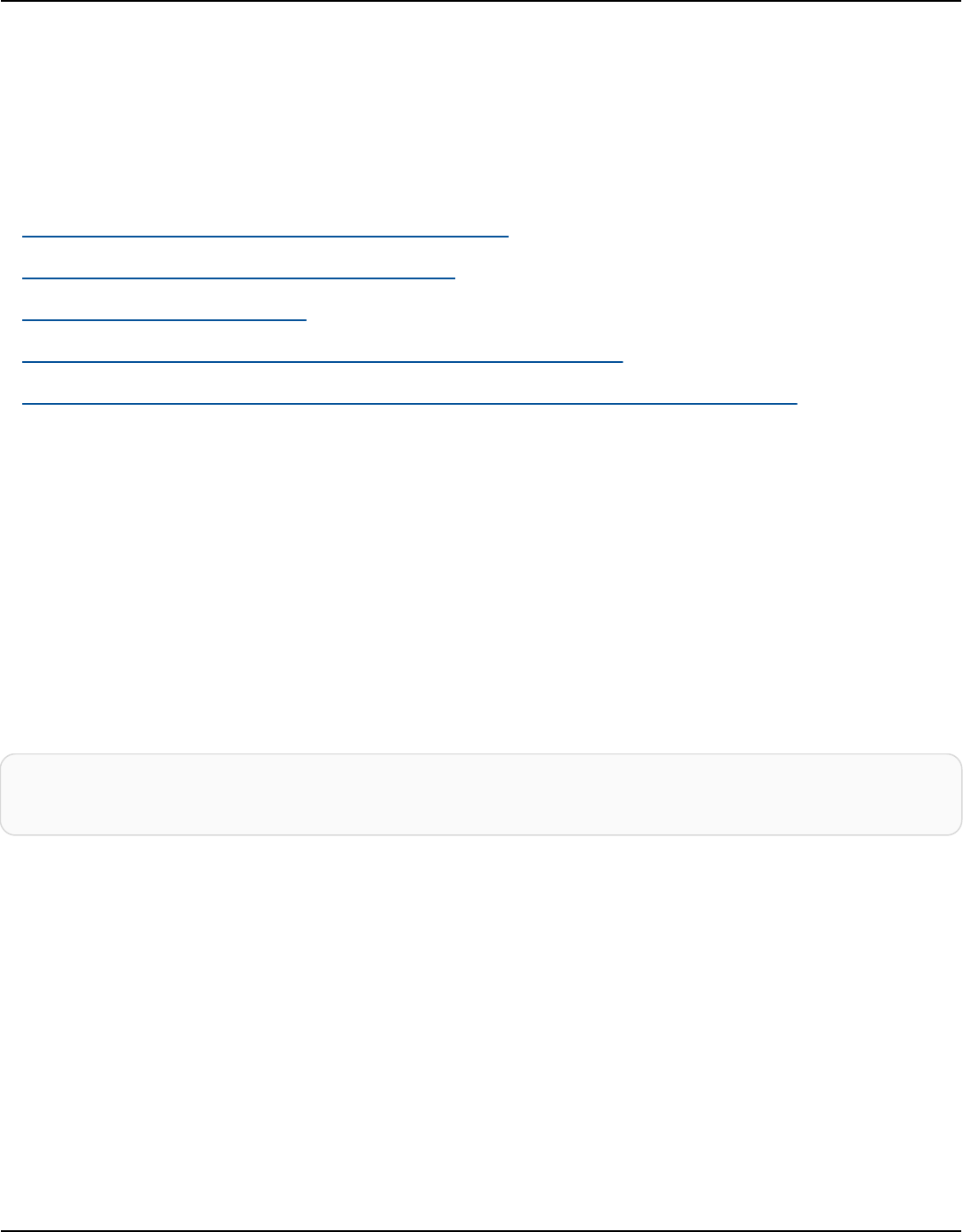
AWS Billing User Guide
Troubleshooting AWS Billing identity and access
Use the following information to help you diagnose and fix common issues that you might
encounter when working with Billing and IAM.
Topics
• I am not authorized to perform an action in Billing
• I am not authorized to perform iam:PassRole
• I want to view my access keys
• I'm an administrator and want to allow others to access Billing
• I want to allow people outside of my AWS account to access my Billing resources
I am not authorized to perform an action in Billing
If the AWS Management Console tells you that you're not authorized to perform an action, then
you must contact your administrator for assistance. Your administrator is the person who provided
you with your sign-in credentials.
The following example error occurs when the mateojackson user tries to use the console to
view details about a fictional my-example-widget resource but does not have the fictional
billing:GetWidget permissions.
User: arn:aws:iam::123456789012:user/mateojackson is not authorized to perform:
billing:GetWidget on resource: my-example-widget
In this case, Mateo asks his administrator to update his policies to allow him to access the my-
example-widget resource using the billing:GetWidget action.
I am not authorized to perform iam:PassRole
If you receive an error that you're not authorized to perform the iam:PassRole action, your
policies must be updated to allow you to pass a role to Billing.
Some AWS services allow you to pass an existing role to that service instead of creating a new
service role or service-linked role. To do this, you must have permissions to pass the role to the
service.
Troubleshooting Version 2.0 458
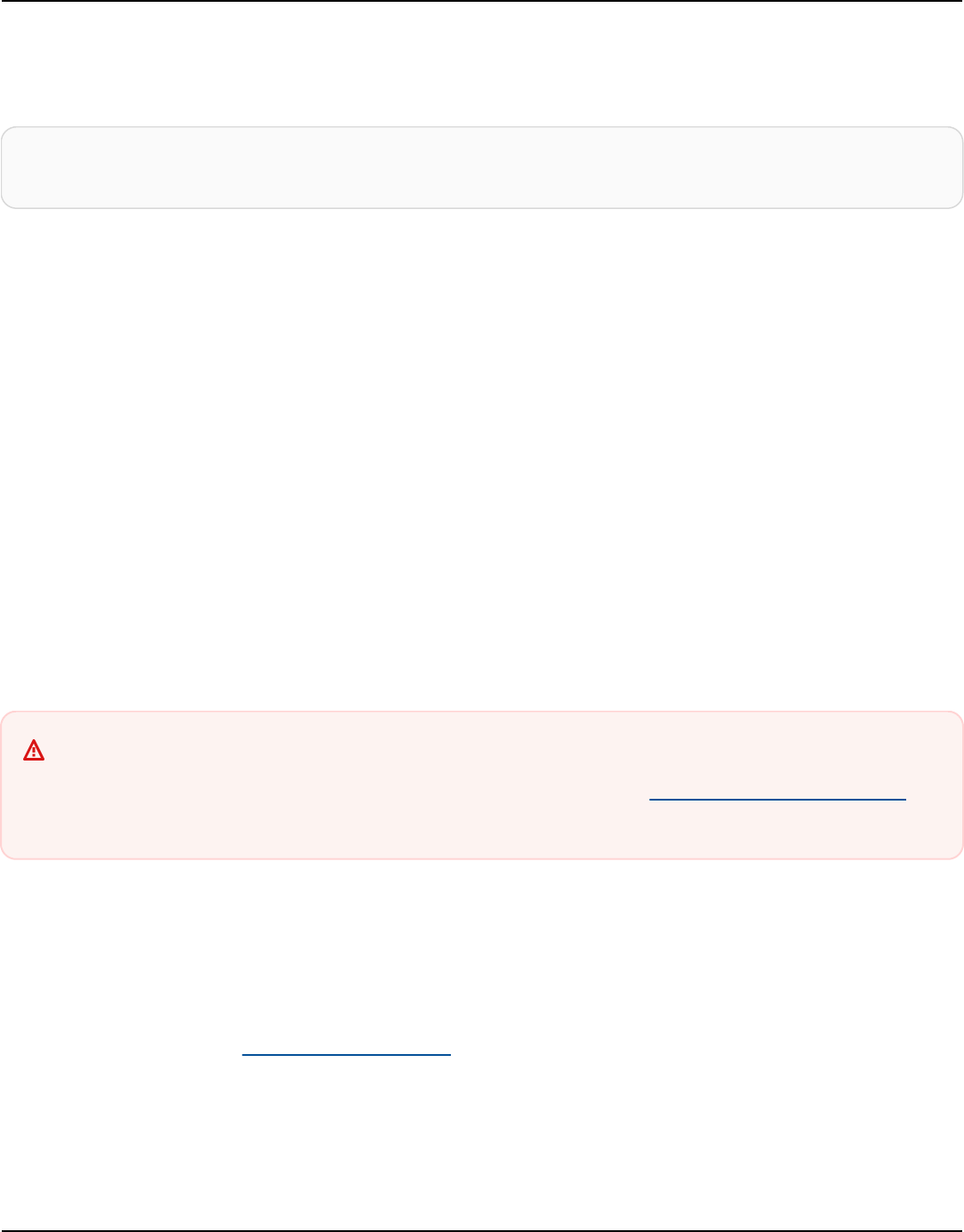
AWS Billing User Guide
The following example error occurs when an IAM user named marymajor tries to use the console
to perform an action in Billing. However, the action requires the service to have permissions that
are granted by a service role. Mary does not have permissions to pass the role to the service.
User: arn:aws:iam::123456789012:user/marymajor is not authorized to perform:
iam:PassRole
In this case, Mary's policies must be updated to allow her to perform the iam:PassRole action.
If you need help, contact your AWS administrator. Your administrator is the person who provided
you with your sign-in credentials.
I want to view my access keys
After you create your IAM user access keys, you can view your access key ID at any time. However,
you can't view your secret access key again. If you lose your secret key, you must create a new
access key pair.
Access keys consist of two parts: an access key ID (for example, AKIAIOSFODNN7EXAMPLE) and
a secret access key (for example, wJalrXUtnFEMI/K7MDENG/bPxRfiCYEXAMPLEKEY). Like a
user name and password, you must use both the access key ID and secret access key together to
authenticate your requests. Manage your access keys as securely as you do your user name and
password.
Important
Do not provide your access keys to a third party, even to help find your canonical user ID. By
doing this, you might give someone permanent access to your AWS account.
When you create an access key pair, you are prompted to save the access key ID and secret access
key in a secure location. The secret access key is available only at the time you create it. If you lose
your secret access key, you must add new access keys to your IAM user. You can have a maximum of
two access keys. If you already have two, you must delete one key pair before creating a new one.
To view instructions, see Managing access keys in the IAM User Guide.
I'm an administrator and want to allow others to access Billing
To allow others to access Billing, you must grant permission to the people or applications that need
access. If you are using AWS IAM Identity Center to manage people and applications, you assign
Troubleshooting Version 2.0 459

AWS Billing User Guide
permission sets to users or groups to define their level of access. Permission sets automatically
create and assign IAM policies to IAM roles that are associated with the person or application. For
more information, see Permission sets in the AWS IAM Identity Center User Guide.
If you are not using IAM Identity Center, you must create IAM entities (users or roles) for the people
or applications that need access. You must then attach a policy to the entity that grants them
the correct permissions in Billing. After the permissions are granted, provide the credentials to
the user or application developer. They will use those credentials to access AWS. To learn more
about creating IAM users, groups, policies, and permissions, see IAM Identities and Policies and
permissions in IAM in the IAM User Guide.
I want to allow people outside of my AWS account to access my Billing resources
You can create a role that users in other accounts or people outside of your organization can use to
access your resources. You can specify who is trusted to assume the role. For services that support
resource-based policies or access control lists (ACLs), you can use those policies to grant people
access to your resources.
To learn more, consult the following:
• To learn whether Billing supports these features, see How AWS Billing works with IAM.
• To learn how to provide access to your resources across AWS accounts that you own, see
Providing access to an IAM user in another AWS account that you own in the IAM User Guide.
• To learn how to provide access to your resources to third-party AWS accounts, see Providing
access to AWS accounts owned by third parties in the IAM User Guide.
• To learn how to provide access through identity federation, see Providing access to externally
authenticated users (identity federation) in the IAM User Guide.
• To learn the difference between using roles and resource-based policies for cross-account access,
see Cross account resource access in IAM in the IAM User Guide.
Logging and monitoring in AWS Billing and Cost Management
Monitoring is an important part of maintaining the reliability, availability, and performance of
your AWS account. There are several tools available to monitor your Billing and Cost Management
usage.
Logging and monitoring Version 2.0 460

AWS Billing User Guide
AWS Cost and Usage Reports
AWS Cost and Usage Reports tracks your AWS usage and provides estimated charges associated
with your account. Each report contains line items for each unique combination of AWS products,
usage type, and operation that you use in your AWS account. You can customize the AWS Cost and
Usage Reports to aggregate the information either by the hour or by the day.
For more information about AWS Cost and Usage Reports, see the Cost and Usage Report Guide.
AWS CloudTrail
Billing and Cost Management is integrated with AWS CloudTrail, a service that provides a record
of actions taken by a user, role, or an AWS service in Billing and Cost Management. CloudTrail
captures all write and modify API calls for Billing and Cost Management as events, including
calls from the Billing and Cost Management console and from code calls to the Billing and Cost
Management APIs.
For more information about AWS CloudTrail, see the Logging Billing and Cost Management API
calls with AWS CloudTrail.
Logging Billing and Cost Management API calls with AWS CloudTrail
Billing and Cost Management is integrated with AWS CloudTrail, a service that provides a record
of actions taken by a user, role, or an AWS service in Billing and Cost Management. CloudTrail
captures API calls for Billing and Cost Management as events, including calls from the Billing and
Cost Management console and from code calls to the Billing and Cost Management APIs. For a full
list of CloudTrail events related to Billing, see AWS Billing CloudTrail events.
If you create a trail, you can enable continuous delivery of CloudTrail events to an Amazon
S3 bucket, including events for Billing and Cost Management. If you don't configure a trail,
you can still view the most recent events in the CloudTrail console in Event history. Using the
information collected by CloudTrail, you can determine the request that was made to Billing and
Cost Management, the IP address from which the request was made, who made the request, when
it was made, and additional details.
To learn more about CloudTrail, including how to configure and enable it, see the AWS CloudTrail
User Guide.
AWS Cost and Usage Reports Version 2.0 461

AWS Billing User Guide
AWS Billing CloudTrail events
This section shows a full list of the CloudTrail events related to Billing and Cost Management. For a
CloudTrail list for Payments events, see Payments CloudTrail events.
Notes
The following CloudTrail events use a different event source instead of
billingconsole.amazonaws.com:
•
CreateCustomerCase, GetTaxExemptionTypes, and BatchGetTaxExemptions use
taxconsole.amazonaws.com.
•
CreateCustomerVerificationDetails, GetCustomerVerificationDetails
GetCustomerVerificationEligibility, and
UpdateCustomerVerificationDetails use customer-
verification.amazonaws.com.
•
AddPurchaseOrder, DeletePurchaseOrder, ListPurchaseOrders,
GetPurchaseOrder, ListPurchaseOrderInvoices,
UpdatePurchaseOrderStatus, UpdatePurchaseOrder, TagResource,
UntagResource, and ListTagsForResource use purchase-
orders.amazonaws.com.
Event name Definition
AddPurchaseOrder
Logs the creation of a purchase order.
AcceptFxP
aymentCur
rencyTerm
sAndConditions
Logs the acceptance of the terms and conditions of paying in a
currency other than USD.
BatchGetT
axExemptions
Logs the access to US tax exemptions of an account, and any linked
accounts.
CloseAccount
Logs the closing of an account.
Logging API calls with CloudTrail Version 2.0 462

AWS Billing User Guide
Event name Definition
CreateCus
tomerCase
Logs the creation of a customer support case to validate US tax
exemption for an account.
CreateCus
tomerVeri
ficationDetails
(For customers with an India billing or contact address only)
Logs the creation of the customer verification details of the account.
CreateOri
gamiRepor
tPreference
Logs the creation of the cost and usage report; management account
only.
DeletePur
chaseOrder
Logs the deletion of a purchase order.
DeleteOri
gamiRepor
tPreferences
Logs the deletion of the cost and usage report; management account
only.
DownloadC
ommercialInvoice
Logs the download of a commercial invoice.
DownloadE
CSVForBil
lingPeriod
Logs the download of the eCSV file (monthly usage report) for a
specific billing period.
DownloadR
egistrati
onDocument
Logs the download of the tax registration document.
DownloadT
axInvoice
Logs the download of a tax invoice.
EnableBil
lingAlerts
Logs the opt-in of receiving CloudWatch billing alerts for estimated
charges.
FindECSVF
orBillingPeriod
Logs the retrieval of the ECSV file for a specific billing period.
Logging API calls with CloudTrail Version 2.0 463

AWS Billing User Guide
Event name Definition
GetAccoun
tEDPStatus
Logs the retrieval of the account’s EDP status.
GetAddresses
Logs the access to tax address, billing address, and contact address of
an account.
GetAllAccounts
Logs the access to all member account numbers of the management
account.
GetAllAcc
ountDetails
Logs the access to tax registration details of all member accounts of
the management account.
GetBillsF
orBillingPeriod
Logs the access of the account's usage and charges for a specific
billing period.
GetBillsF
orLinkedAccount
Logs the access of a management account retrieving the usage and
charges of one of the member accounts in the consolidated billing
family for a specific billing period.
GetCommer
cialInvoi
cesForBil
lingPeriod
Logs the access to the account's commercial invoices metadata for
the specific billing period.
GetConsol
idatedBil
lingFamil
ySummary
Logs the access of the management account retrieving the summary
of the entire consolidated billing family.
GetCustom
erVerific
ationEligibility
(For customers with an India billing or contact address only)
Logs the retrieval of the customer verification eligibility of the
account.
GetCustom
erVerific
ationDetails
(For customers with an India billing or contact address only)
Logs the retrieval of the customer verification details of the account.
Logging API calls with CloudTrail Version 2.0 464

AWS Billing User Guide
Event name Definition
GetLinked
AccountNames
Logs the retrieval from a management account of the member
account names belonging to its consolidated billing family for a
specific billing period.
GetPurchaseOrder
Logs the retrieval of a purchase order.
GetSuppor
tedCountryCodes
Logs the access to all country codes supported by tax console.
GetTaxExe
mptionTypes
Logs the access to all supported US exemption types by tax console.
GetTaxInheritance
Logs the access to tax inheritance preference (turning on or off) of an
account.
GetTaxInv
oicesMetadata
Logs the retrieval of tax invoices metadata.
GetTaxReg
istration
Logs the access to the tax registration number of an account.
GetTotal
Logs the retrieval of the account’s total charges.
GetTotalA
mountForForecast
Logs the access to the forecasted charges for the specific billing
period.
ListCostA
llocationTags
Logs the retrieval and listing of cost allocation tags.
ListPurch
aseOrders
Logs the retrieval and listing of purchase orders.
ListPurch
aseOrderInvoices
Logs of the retrieval and list of invoices associated to a purchase
order.
ListTagsF
orResource
Lists the tags associated with a resource. For payments, this action
refers to a payment method. For purchase-orders , this action
refers to a purchase order.
Logging API calls with CloudTrail Version 2.0 465

AWS Billing User Guide
Event name Definition
PreviewTa
xRegistra
tionChange
Logs the preview of tax registration changes before confirmation.
RedeemPromoCode
Logs the redemption of promotional credits for an account.
SetAccoun
tContract
Metadata
Logs the creation, deletion, or update of the necessary contract
information for public sector customers.
SetAccoun
tPreferences
Logs the updates of the account name, email, and password.
SetAdditi
onalContacts
Logs the creation, deletion, or update of the alternate contacts for
billing, operations, and security communications.
SetContactAddress
Logs the creation, deletion, or update of the account owner contact
information, including the address and phone number.
SetCreatedByOptIn Logs the opt-in of the awscreatedby cost allocation tag preferenc
e.
SetCreditSharing
Logs the history of the credit sharing preference for the managemen
t account.
SetFreeti
erBudgets
Preference
Logs the preference (opt-in or opt-out) of receiving Free Tier usage
alerts.
SetFxPaym
entCurrency
Logs the creation, deletion, or update of the preferred currency used
to pay your invoice.
SetIAMAcc
essPreference
Logs the creation, deletion, or update of the IAM users ability to
access to the billing console. This setting is only for customers with
root access.
Logging API calls with CloudTrail Version 2.0 466

AWS Billing User Guide
Event name Definition
SetPANInformation
Logs the creating, deletion, or update of PAN information under AWS
India.
SetPayInformation
Logs the payment method history (invoice or credit/debit card) for
the account.
SetRISharing
Logs the history of the RI/Savings Plans sharing preference for the
management account.
SetSecuri
tyQuestions
Logs the creation, deletion, or update of the security challenge
questions to help AWS identify you as the owner of the account.
SetTagKeysState
Logs the active or inactive state of a particular cost allocation tag.
SetTaxInheritance
Logs the preference (opt-in or opt-out) of tax inheritance.
SetTaxReg
istration
Logs the creation, deletion, or update of the tax registration number
for an account.
TagResource Logs the tagging of a resource. For payments, this action refers to
a payment method. For purchase-orders , this action refers to a
purchase order.
UntagResource Logs the deletion of tags from a resource. For payments, this action
refers to a payment method. For purchase-orders , this action
refers to a purchase order.
UpdateCus
tomerVeri
ficationDetails
(For customers with an India billing or contact address only)
Logs the update of the customer verification details of the account.
UpdateOri
gamiRepor
tPreference
Logs the update of the cost and usage report; management account
only.
UpdatePur
chaseOrder
Logs the update of a purchase order.
Logging API calls with CloudTrail Version 2.0 467

AWS Billing User Guide
Event name Definition
UpdatePur
chaseOrderStatus
Logs the update of a purchase order status.
ValidateAddress
Logs the validation of the tax address of an account.
Payments CloudTrail events
This section shows a full list of the CloudTrail events for the Payments feature in the
AWS Billing console. These CloudTrail events use payments.amazonaws.com instead of
billingconsole.amazonaws.com.
Event name Definition
Instrumen
ts_Authenticate
Logs the payment instrument authentication.
Instrumen
ts_Create
Logs the creation of payment instruments.
Instrumen
ts_Delete
Logs the deletion of payment instruments.
Instruments_Get
Logs the access of payment instruments.
Instruments_List
Logs the list of payment instrument metadata.
Instrumen
ts_StartCreate
Logs the operations before payment instrument creation.
Instrumen
ts_Update
Logs the update of payment instruments.
ListTagsF
orResource
Logs the list of tags associated with a payments resource.
Policy_Ge
tPaymentI
Logs the access of payment instrument eligibility.
Logging API calls with CloudTrail Version 2.0 468

AWS Billing User Guide
Event name Definition
nstrument
Eligibility
Preferenc
es_BatchG
etPayment
Profiles
Logs the access of payment profiles.
Preferenc
es_Create
PaymentProfile
Logs the creation of payment profiles.
Preferenc
es_Delete
PaymentProfile
Logs the deletion of payment profiles.
Preferenc
es_ListPa
ymentProfiles
Logs the list of payment profiles metadata.
Preferenc
es_Update
PaymentProfile
Logs the update of payment profiles.
TagResource
Logs the tagging of a payments resource.
TermsAndC
onditions
_AcceptTe
rmsAndCon
ditionsFo
rProgramB
yAccountId
Logs the accepted payments terms and conditions.
Logging API calls with CloudTrail Version 2.0 469

AWS Billing User Guide
Event name Definition
TermsAndC
onditions
_GetAccep
tedTermsA
ndConditi
onsForPro
gramByAccountId
Logs the access of accepted terms and conditions.
TermsAndC
onditions
_GetRecom
mendedTer
msAndCond
itionsForProgram
Logs the access of recommended terms and conditions.
UntagResource
Logs the deletion of tags from a payments resource.
Billing and Cost Management information in CloudTrail
CloudTrail is enabled on your AWS account when you create the account. When supported event
activity occurs in Billing and Cost Management, that activity is recorded in a CloudTrail event along
with other AWS service events in Event history. You can view, search, and download recent events
in your AWS account. For more information, see Viewing Events with CloudTrail Event History in
the AWS CloudTrail User Guide.
For an ongoing record of events in your AWS account, including events for Billing and Cost
Management, create a trail. A trail enables CloudTrail to deliver log files to an Amazon S3 bucket.
By default, when you create a trail in the console, the trail applies to all AWS Regions. The trail logs
events from all Regions in the AWS partition and delivers the log files to the Amazon S3 bucket
that you specify. Additionally, you can configure other AWS services to further analyze and act
upon the event data collected in CloudTrail logs.
For more information, see the following:
• Overview for Creating a Trail
• CloudTrail Supported Services and Integrations
Logging API calls with CloudTrail Version 2.0 470

AWS Billing User Guide
• Configuring Amazon SNS Notifications for CloudTrail
• Receiving CloudTrail Log Files from Multiple Regions and Receiving CloudTrail Log Files from
Multiple Accounts
Every event or log entry contains information about who generated the request. The identity
information helps you determine the following:
• Whether the request was made with root or IAM user credentials.
• Whether the request was made with temporary security credentials for a role or federated user.
• Whether the request was made by another AWS service.
For more information, see the CloudTrail userIdentity Element in the AWS CloudTrail User Guide.
CloudTrail log entry examples
The following examples are provided for specific Billing and Cost Management CloudTrail log entry
scenarios.
Topics
• Billing and Cost Management log file entries
• Tax console
• Payments
Billing and Cost Management log file entries
A trail is a configuration that enables delivery of events as log files to an Amazon S3 bucket that
you specify. CloudTrail log files contain one or more log entries. An event represents a single
request from any source and includes information about the requested action, the date and time of
the action, request parameters, and so on. CloudTrail log files are not an ordered stack trace of the
public API calls, so they don't appear in any specific order.
The following example shows a CloudTrail log entry that demonstrates the SetContactAddress
action.
{
"eventVersion": "1.05",
"userIdentity": {
Logging API calls with CloudTrail Version 2.0 471

AWS Billing User Guide
"accountId": "111122223333",
"accessKeyId": "AIDACKCEVSQ6C2EXAMPLE"
},
"eventTime": "2018-05-30T16:44:04Z",
"eventSource": "billingconsole.amazonaws.com",
"eventName": "SetContactAddress",
"awsRegion": "us-east-1",
"sourceIPAddress": "100.100.10.10",
"requestParameters": {
"website": "https://amazon.com",
"city": "Seattle",
"postalCode": "98108",
"fullName": "Jane Doe",
"districtOrCounty": null,
"phoneNumber": "206-555-0100",
"countryCode": "US",
"addressLine1": "Nowhere Estates",
"addressLine2": "100 Main Street",
"company": "AnyCompany",
"state": "Washington",
"addressLine3": "Anytown, USA",
"secondaryPhone": "206-555-0101"
},
"responseElements": null,
"eventID": "5923c499-063e-44ac-80fb-b40example9f",
"readOnly": false,
"eventType": "AwsConsoleAction",
"recipientAccountId": "1111-2222-3333"
}
Tax console
The following example shows a CloudTrail log entry that uses the CreateCustomerCase action.
{
"eventVersion":"1.05",
"userIdentity":{
"accountId":"111122223333",
"accessKeyId":"AIDACKCEVSQ6C2EXAMPLE"
},
"eventTime":"2018-05-30T16:44:04Z",
"eventSource":"taxconsole.amazonaws.com",
"eventName":"CreateCustomerCase",
"awsRegion":"us-east-1",
Logging API calls with CloudTrail Version 2.0 472

AWS Billing User Guide
"sourceIPAddress":"100.100.10.10",
"requestParameters":{
"state":"NJ",
"exemptionType":"501C",
"exemptionCertificateList":[
{
"documentName":"ExemptionCertificate.png"
}
]
},
"responseElements":{
"caseId":"case-111122223333-iris-2022-3cd52e8dbf262242"
},
"eventID":"5923c499-063e-44ac-80fb-b40example9f",
"readOnly":false,
"eventType":"AwsConsoleAction",
"recipientAccountId":"1111-2222-3333"
}
Payments
The following example shows a CloudTrail log entry that uses the Instruments_Create action.
{
"eventVersion": "1.08",
"userIdentity": {
"type": "Root",
"principalId": "111122223333",
"arn": "arn:aws:iam::111122223333:<iam>",
"accountId": "111122223333",
"accessKeyId": "AIDACKCEVSQ6C2EXAMPLE",
"sessionContext": {
"sessionIssuer": {},
"webIdFederationData": {},
"attributes": {
"creationDate": "2024-05-01T00:00:00Z",
"mfaAuthenticated": "false"
}
}
},
"eventTime": "2024-05-01T00:00:00Z",
"eventSource": "payments.amazonaws.com",
"eventName": "Instruments_Create",
"awsRegion": "us-east-1",
Logging API calls with CloudTrail Version 2.0 473

AWS Billing User Guide
"sourceIPAddress": "100.100.10.10",
"userAgent": "AWS",
"requestParameters": {
"accountId": "111122223333",
"paymentMethod": "CreditCard",
"address": "HIDDEN_DUE_TO_SECURITY_REASONS",
"accountHolderName": "HIDDEN_DUE_TO_SECURITY_REASONS",
"cardNumber": "HIDDEN_DUE_TO_SECURITY_REASONS",
"cvv2": "HIDDEN_DUE_TO_SECURITY_REASONS",
"expirationMonth": "HIDDEN_DUE_TO_SECURITY_REASONS",
"expirationYear": "HIDDEN_DUE_TO_SECURITY_REASONS",
"tags": {
"Department": "Finance"
}
},
"responseElements": {
"paymentInstrumentArn": "arn:aws:payments::111122223333:payment-
instrument:4251d66c-1b05-46ea-890c-6b4acf6b24ab",
"paymentInstrumentId": "111122223333",
"paymentMethod": "CreditCard",
"consent": "NotProvided",
"creationDate": "2024-05-01T00:00:00Z",
"address": "HIDDEN_DUE_TO_SECURITY_REASONS",
"accountHolderName": "HIDDEN_DUE_TO_SECURITY_REASONS",
"expirationMonth": "HIDDEN_DUE_TO_SECURITY_REASONS",
"expirationYear": "HIDDEN_DUE_TO_SECURITY_REASONS",
"issuer": "Visa",
"tail": "HIDDEN_DUE_TO_SECURITY_REASONS"
},
"requestID": "7c7df9c2-c381-4880-a879-2b9037ce0573",
"eventID": "c251942f-6559-43d2-9dcd-2053d2a77de3",
"readOnly": true,
"eventType": "AwsApiCall",
"managementEvent": true,
"recipientAccountId": "111122223333",
"eventCategory": "Management",
"sessionCredentialFromConsole": "true"
}
Logging API calls with CloudTrail Version 2.0 474

AWS Billing User Guide
Compliance validation for AWS Billing and Cost Management
Third-party auditors assess the security and compliance of AWS services as part of multiple
AWS compliance programs. Billing and Cost Management is not in scope of any AWS compliance
programs.
For a list of AWS services in scope of specific compliance programs, see AWS Services in Scope by
Compliance Program. For general information, see AWS Compliance Programs.
You can download third-party audit reports using AWS Artifact. For more information, see
Downloading Reports in AWS Artifact.
Your compliance responsibility when using Billing and Cost Management is determined by
the sensitivity of your data, your company's compliance objectives, and applicable laws and
regulations. AWS provides the following resources to help with compliance:
• Security and Compliance Quick Start Guides – These deployment guides discuss architectural
considerations and provide steps for deploying security- and compliance-focused baseline
environments on AWS.
• AWS Compliance Resources – This collection of workbooks and guides might apply to your
industry and location.
• Evaluating Resources with Rules in the AWS Config Developer Guide – The AWS Config service
assesses how well your resource configurations comply with internal practices, industry
guidelines, and regulations.
• AWS Security Hub – This AWS service provides a comprehensive view of your security state within
AWS that helps you check your compliance with security industry standards and best practices.
Resilience in AWS Billing and Cost Management
The AWS global infrastructure is built around AWS Regions and Availability Zones. AWS Regions
provide multiple physically separated and isolated Availability Zones, which are connected with
low-latency, high-throughput, and highly redundant networking. With Availability Zones, you
can design and operate applications and databases that automatically fail over between zones
without interruption. Availability Zones are more highly available, fault tolerant, and scalable than
traditional single or multiple data center infrastructures.
For more information about AWS Regions and Availability Zones, see AWS Global Infrastructure.
Compliance validation Version 2.0 475

AWS Billing User Guide
Infrastructure security in AWS Billing and Cost Management
As a managed service, AWS Billing and Cost Management is protected by AWS global network
security. For information about AWS security services and how AWS protects infrastructure, see
AWS Cloud Security. To design your AWS environment using the best practices for infrastructure
security, see Infrastructure Protection in Security Pillar AWS Well‐Architected Framework.
You use AWS published API calls to access Billing and Cost Management through the network.
Clients must support the following:
• Transport Layer Security (TLS). We require TLS 1.2 and recommend TLS 1.3.
• Cipher suites with perfect forward secrecy (PFS) such as DHE (Ephemeral Diffie-Hellman) or
ECDHE (Elliptic Curve Ephemeral Diffie-Hellman). Most modern systems such as Java 7 and later
support these modes.
Additionally, requests must be signed by using an access key ID and a secret access key that is
associated with an IAM principal. Or you can use the AWS Security Token Service (AWS STS) to
generate temporary security credentials to sign requests.
Infrastructure security Version 2.0 476

AWS Billing User Guide
Quotas and restrictions
You can use the following tables to find the current quotas, restrictions, and naming constraints
within the AWS Billing and Cost Management console.
Notes
• To learn more about quotas and restrictions for AWS Cost Management, see Quotas and
restrictions in the AWS Cost Management User Guide.
• For more information about other AWS service quotas, see AWS service quotas in the
AWS General Reference.
Topics
• Cost categories
• Purchase orders
• Advance Pay
• Cost allocation tags
• AWS Price List
• Bulk policy migrator
• Payment methods
Cost categories
See the following quotas and restrictions for cost categories.
Description Quotas and restrictions
The total number of cost categories for a
management account.
50
The number of cost category rules for a cost
category (API).
500
Cost categories Version 2.0 477

AWS Billing User Guide
Description Quotas and restrictions
The number of cost category rules for a cost
category (UI).
100
Cost category names. • Names must be unique
• Case sensitive
Cost category value names. Names don't have to be unique
The type and number of characters allowed in
a cost category name and value name.
•
Numbers: 0-9
• Unicode letters
•
Space, if it's not used at the beginning or
end of the name
•
The following symbols: underscore (_) or en
dash (-)
The number of split charge rules for a cost
category.
10
Purchase orders
See the following quotas and restrictions for purchase orders.
Description Quotas and restrictions
The type of characters that you can use in a
purchase order ID.
•
A-Z and a-z
•
Space
•
The following symbols: _.:/=+-%@
The number of characters allowed in a
purchase order ID.
100
The number of contacts allowed for a
purchase order.
20
Purchase orders Version 2.0 478

AWS Billing User Guide
Description Quotas and restrictions
The number of tags allowed for a purchase
order.
50
The number of line items allowed for a
purchase order.
100
Advance Pay
See the following quotas and restrictions for Advance Pay.
Description Quotas and restrictions
User entity AWS Inc
Currency USD
Fund usage after funds are added to your
Advance Pay.
• Funds can only be used to pay for eligible
AWS charges. Non-eligible charges (for
example, AWS Marketplace invoices) are
charged using the default payment method
at the time of Advance Pay registration.
• Funds can't be withdrawn, refunded, or
transferred.
• Funds can't be converted to other currencie
s.
If there are unused funds in your Advance Pay. • You can't change your seller on record.
• You can't change your preferred currency.
• You can't change your default payment
method.
Advance Pay Version 2.0 479

AWS Billing User Guide
Cost allocation tags
You can adjust the maximum number of active cost allocation tag keys from Service Quotas. For
more information, see Requesting a quota increase in the Service Quotas User Guide.
Note
Tags that are automatically activated don’t count towards your cost allocation tag quota,
such as the awsApplication tag.
See the following quotas and restrictions for cost allocation tags.
Description Quotas and restrictions
The maximum number of active cost allocatio
n tag keys for each payer account.
500
The number of cost allocation tags that can be
activated or deactivated for one request, by
using the API or the console.
20
AWS Price List
Some Price List Query API and Price List Bulk API operations are throttled by using a token bucket
scheme to maintain service availability. These quotas are per AWS account on a per Region basis.
The following table shows the quotas for each API operation.
Price List Query API
API operation Token bucket size Refill rate per second
DescribeServices
10 5
GetAttributeValues
10 5
GetProducts
10 5
Cost allocation tags Version 2.0 480

AWS Billing User Guide
Price List Bulk API
API operation Token bucket size Refill rate per second
DescribeServices
10 5
GetPriceListFileUrl
10 5
ListPriceLists
10 5
Bulk policy migrator
See the following quotas and restrictions for bulk policy migrator.
Description Quotas and restrictions
The maximum number of affected accounts in
an organization that you can migrate.
200
The maximum number of affected policies in
an organization that you can migrate.
1,000
Payment methods
See the following quotas and restrictions for payments.
Description Quotas and restrictions
Tagging payment instruments This feature supports the following payment
methods:
• Credit cards
• Bank accounts (ACH)
This feature doesn't support the following
payment methods:
Bulk policy migrator Version 2.0 481

AWS Billing User Guide
Description Quotas and restrictions
• Advance pay
• Net Banking
• China bank redirect
• PIX
• United Payments Interface (UPI)
• Pay by invoice
Payment methods Version 2.0 482

AWS Billing User Guide
Document history
The following table describes the documentation for this release of the AWS Billing User Guide.
Change Description Date
Updated documentation for
AWS managed policies
Added documentation for
AWSPriceListServic
eFullAccess – Added
documentation for the
AWSPriceListServic
eFullAccess policy
to provide full access to
the AWS Price List Service.
Updated Sid": "AWSPrice
ListServiceFullAcc
ess to existing policy.
June 24, 2024
Added documentation for
payment access using tags
Added new page for
managing payment access
using tags. Updated existing
managed policies Billing
and AWSBillingReadOnly
Access to add permissions
to manage payments using
tags.
May 31, 2024
Updated documentation for
AWS managed policies
Billing and AWSBillin
gReadOnlyAccess –
Updated existing policies to
add permissions for the cost
allocation tag backfill feature.
March 27, 2024
Updated documentation For AWS India accounts, you
can use a Unified Payment
Interface (UPI) payment
method to pay your AWS bills.
March 14, 2024
Version 2.0 483

AWS Billing User Guide
Updated documentation for
AWS managed policies
Billing and AWSBillin
gReadOnlyAccess –
Updated existing policies
to add permissions for the
AWS Migration Acceleration
Program.
January 18, 2024
Updated documentation
We updated the Billing
and AWSBillingReadOnly
Access managed policies
with additional cur,
sustainability , ce,
budgets, pricing, and
support actions.
January 17, 2024
Updated documentation You can save your credit or
debit card details for AWS
accounts with Amazon Web
Services India Private Limited.
December 18, 2023
Updated documentation You can view your cost
categories by using different
cost types.
December 14, 2023
Version 2.0 484

AWS Billing User Guide
Updated documentation For an overview of your AWS
cloud financial management
data, use the AWS Billing and
Cost Management widgets
on the Billing and Cost
Management home page.
See the following updates:
• Using the AWS Billing and
Cost Management home
page
• Understanding the
differences between AWS
Billing data and AWS Cost
Explorer data
November 26, 2023
Updated documentation Learn about the Free Tier API:
See the following updates:
• AWS Billing and Cost
Management API Reference
• Using the Free Tier API
November 26, 2023
Updated documentation Updated information about
how to use the affected IAM
policies tool
November 14, 2023
Version 2.0 485

AWS Billing User Guide
Updated documentation
The awsApplication user-
defined cost allocation tag
is automatically added and
activated for your applicati
ons that you create in AWS
Service Catalog AppRegistry.
See the following updates:
• User-defined cost allocation
tags
• Activating user-defined cost
allocation tags
• Quotas and restrictions
November 14, 2023
Updated documentation Learn more about the seller
of record (SOR) when you sign
up for an AWS account.
November 10, 2023
Updated documentation for
payments
Updated information about
verifying your credit card
payment method.
November 8, 2023
Updates for Amazon Web
Services India Private Limited
customer verification
AWS India customers can
verify their identity informati
on when signing up for an
AWS account.
October 27, 2023
Updated documentation You can use the Billing
preferences page to activate
or deactivate credit sharing,
and discount sharing for
Reserved Instances and
Savings Plans for member
accounts in AWS Organizat
ions.
October 19, 2023
Version 2.0 486

AWS Billing User Guide
Updated documentation for
AWS Price List
Updated documentation,
including example AWS CLI
commands, definitions, and
notifications for the AWS
Price List Bulk API and AWS
Price List Query API.
October 3, 2023
Updates to payment methods For AWS accounts in AWS
Europe, you can link and
verify your bank account in
the Billing console.
September 15, 2023
Updated documentation To ensure that your invoices
are issued correctly, you
can use the monthly billing
checklist topic to review your
billing information.
September 1, 2023
Update for cost allocation
tags
You can use the Last updated
date and Last used month
fields to learn when your
cost allocation tags were last
updated or used.
August 23, 2023
Update for the AWS Price List
Query API
Added endpoint for the
Europe (Frankfurt) Region.
August 15, 2023
Updated AWS managed
policies
Billing and AWSBillin
gReadOnlyAccess –
Updated existing policies
to add permissions for cost
allocation tags.
July 26, 2023
Updates to the payments
documentation
You can use the table on the
Payments page to view credit
memos that were partially
applied.
July 25, 2023
Version 2.0 487

AWS Billing User Guide
Updated documentation for
AWS managed policies
AWSPurchaseOrdersS
erviceRolePolicy ,
Billing, and AWSBillin
gReadOnlyAccess –
Updated existing policies to
add permissions for purchase
order tags.
July 17, 2023
Updated reference
documentation for IAM fine-
grained actions
Added documentation so that
you can see how the old IAM
actions map to the new fine-
grained IAM actions.
June 28, 2023
Updated documentation for
the Account page
Updated documentation for
the AWS Billing console.
June 22, 2023
Updated documentation Added tag support for
purchase orders
You can add tags to your
purchase orders. For more
information, see the following
topics:
• Adding a purchase order
• Editing your purchase
orders
• Use tags to manage access
to purchase orders
• Purchase orders quotas
June 19, 2023
Use scripts to bulk migrate to
IAM fine-grained actions
Added documentation so that
you can bulk migrate your
policies to the new IAM fine-
grained actions.
June 8, 2023
Version 2.0 488

AWS Billing User Guide
Updates to payment methods Added a new feature to
manage PIX payment
methods in Brazil.
June 6, 2023
Consolidated billing for AWS
EMEA
Added the consolidated
billing feature for accounts
that are invoiced through the
Amazon Web Services EMEA
SARL (AWS Europe) entity.
June 6, 2023
Added support for shorter
PDF invoices
Added documentation for
how to request shorter PDF
invoices.
May 30, 2023
Added new cost category
dimension
Added the Usage Type
dimension for AWS Billing.
May 16, 2023
New and updated managed
policies
AWSPurchaseOrdersS
erviceRolePolicy ,
Billing, and AWSBillin
gReadOnlyAccess –
Updated existing policies.
AWSAccountActivity
Access – New AWS
managed policy documented
for AWS Billing
March 6, 2023
New customer carbon
footprint tool
Added a new customer carbon
footprint tool feature to
view estimates of the carbon
emissions associated with
your AWS products and
services.
February 28, 2022
New payment profiles Added a new payment
profiles feature to assign
automatic payment methods
to invoices.
February 17, 2022
Version 2.0 489

AWS Billing User Guide
AWSPurchaseOrdersS
erviceRolePolicy – Update to
an existing policy
AWS Billing removed
unnecessary permissions.
November 18, 2021
AWS Billing started tracking
changes for AWS managed
policies
AWS Billing started tracking
changes for its AWS managed
policies.
November 18, 2021
New AWS Cost Management
guide
Split the Billing and Cost
Management user guide and
aligned the feature details
into the Billing guide and
AWS Cost Management guide
to align with the console.
October 20, 2021
New AWS Cost Anomaly
Detection
Added a new AWS Cost
Anomaly Detection feature
that uses machine learning
to continuously monitor your
cost and usage to detect
unusual spends.
December 16, 2020
New Purchase Order
Management
Added a new purchase order
feature to configure how your
purchases are reflected on
your invoices.
October 15, 2020
New Budgets Actions Added a new AWS Budgets
actions feature to run an
action on your behalf when a
budget exceeds a certain cost
or usage threshold.
October 15, 2020
New Added a new feature to map
AWS costs into meaningful
categories.
April 20, 2020
Version 2.0 490

AWS Billing User Guide
New Heritage Tax feature Added a new feature that
enables you to use your tax
registration information with
your linked accounts.
March 19, 2020
New china bank redirect
payment method
Added a new payment
method that allows China
CNY customers using AWS to
pay their overdue payments
using China Bank Redirect.
February 20, 2020
New security chapter Added a new security chapter
that provides informati
on about various security
controls. Former "Controlling
Access" chapter contents have
been migrated here.
February 6, 2020
New AWS Cost and Usage
Reports user guide
Migrated and reorganized all
AWS Cost and Usage Reports
content to a separate user
guide.
January 21, 2020
New reporting method using
AWS Budgets
Added a new reporting
functionality using AWS
Budgets reports.
June 27, 2019
Added normalized units to
Cost Explorer
Cost Explorer reports now
include normalized units.
February 5, 2019
Credit application changes AWS changed how they apply
credits.
January 17, 2019
New payment behavior AWS India customers can now
enable the auto-charge ability
for their payments.
December 20, 2018
Version 2.0 491

AWS Billing User Guide
New AWS Price List Service
endpoint
Added a new endpoint for
AWS Price List Service.
December 17, 2018
Updated the Cost Explorer UI Updated the Cost Explorer UI. November 15, 2018
Integrated Amazon Athena
into AWS Cost and Usage
Reports
Added the ability to upload
the data from an AWS Cost
and Usage Reports into
Athena.
November 15, 2018
Added Budgets history Added the ability to see the
history of a budget.
November 13, 2018
Expanded budget services Expanded RI budgets to
Amazon OpenSearch Service.
November 8, 2018
Added a new payment
method
Added the SEPA Direct Debit
payment method.
October 25, 2018
Added On-Demand capacity
reservations
Added documentation about
AWS Cost and Usage Reports
line items that apply to
capacity reservations.
October 25, 2018
Redesigned AWS Budgets
experience
Updated the AWS Budgets UI
and workflow.
October 23, 2018
New Reserved Instance
recommendation columns
Added new columns to the
Cost Explorer RI recommend
ations.
October 18, 2018
New AWS CloudTrail actions More actions added to
CloudTrail logging.
October 18, 2018
Added a new Reserved
Instance report
Expanded RI reports to
Amazon OpenSearch Service.
October 10, 2018
New AWS Cost and Usage
Reports columns
New columns added to the
AWS Cost and Usage Reports.
September 27, 2018
Version 2.0 492

AWS Billing User Guide
Cost Explorer walkthrough Cost Explorer now provides
a walkthrough for the most
common functionality.
September 24, 2018
Added CloudTrail events Added additional CloudTrail
events.
August 13, 2018
Added a new payment
method
Added the ACH Direct Debit
payment method.
July 24, 2018
Updated the AWS free tier
widget
Updated the AWS Free Tier
Widget.
July 19, 2018
Added RI purchase
recommendations for
additional services
Added RI purchase
recommendations for
additional services in Cost
Explorer.
July 11, 2018
Added RI purchase
recommendations for linked
accounts
Added RI purchase
recommendations for linked
accounts in Cost Explorer.
June 27, 2018
Added support for AWS Cost
and Usage Reports data
refreshes
AWS Cost and Usage Reports
can now update after finalizat
ion if AWS applies refunds,
credits, or support fees to an
account.
June 20, 2018
Added CloudTrail support Added support for CloudTrail
event logging.
June 7, 2018
Added AWS CloudFormation
for Budgets
Added Budgets templates for
AWS CloudFormation.
May 22, 2018
Updated RI allocation
behavior for linked accounts
Updated the RI allocation
behavior size-flexible RI for
linked accounts.
May 9, 2018
RI coverage alerts Added RI coverage alerts. May 8, 2018
Version 2.0 493

AWS Billing User Guide
Unblend linked account bills Linked account bills no longer
show the blended rate for the
organization.
May 7, 2018
Updated AWS tax settings Added the ability to bulk edit
tax settings.
April 25, 2018
Added Amazon RDS
recommendations to Cost
Explorer
Added Amazon RDS
Recommendations to Cost
Explorer.
April 19, 2018
Added a new Cost Explorer
dimension and AWS Cost and
Usage Reports line item
Added a new Cost Explorer
dimension and AWS Cost and
Usage Reports line item.
March 27, 2018
Added purchase recommend
ations to the Cost Explorer
API
Added access to the Amazon
EC2 Reserved Instance (RI)
purchase recommendations
via the Cost Explorer API.
March 20, 2018
Added RI coverage for
Amazon RDS, Amazon
Redshift, and ElastiCache
Reserved Instance (RI)
coverage for Amazon RDS,
Amazon Redshift, and
ElastiCache .
March 13, 2018
Added RI coverage to the Cost
Explorer API
Added GetReserv
ationCoverage to the
Cost Explorer API.
February 22, 2018
Added AWS free tier alerts Added AWS Free Tier alerts
that enable you stay under
the free tier limits.
December 13, 2017
RI recommendations Added RI recommendations
based on previous usage.
November 20, 2017
Cost Explorer API Activated API access Cost
Explorer.
November 20, 2017
Version 2.0 494

AWS Billing User Guide
RI utilization alerts for
additional services
Added notifications for
additional services.
November 10, 2017
Added RI reports Expanded RI reports to
Amazon RDS, Redshift, and
ElastiCache.
November 10, 2017
Discount sharing preferences Updated preferences so that
AWS credits and RI discount
sharing can be turned off.
November 6, 2017
New Amazon S3 console Updated for the new Amazon
S3 console.
September 15, 2017
RI utilization alerts Added notifications for when
RI utilization drops below
a preset percentage-based
threshold.
August 21, 2017
Updated Cost Explorer UI Released a new Cost Explorer
UI.
August 16, 2017
AWS Marketplace data
integration
Added AWS Marketplace so
that customers can see their
data reflected in all billing
artifacts, including the Bills
page, Cost Explorer, and
more.
August 10, 2017
Consolidated billing with
organizations
Updated the consolidated
billing with organizations
behavior.
June 20, 2017
Version 2.0 495

AWS Billing User Guide
Linked account access and
usage type groups in AWS
Budgets
Added support for creating
cost and usage budgets
based on specific usage types
and usage type groups, and
extended budget creation
capabilities to all account
types.
June 19, 2017
Regional offer files The AWS Price List API now
offers regional offer files for
each service.
April 20, 2017
Added Cost Explorer
advanced options
You can now filter Cost
Explorer reports by additiona
l advanced options, such as
refunds, credits, RI upfront
fees, RI recurring charges, and
support charges.
March 22, 2017
Added a Cost Explorer report You can now track your
Reserved Instance (RI)
coverage in Cost Explorer.
March 20, 2017
Added Cost Explorer filters You can now filter Cost
Explorer reports by tenancy,
platform, and the Amazon
EC2 Spot and Scheduled
Reserved Instance purchase
options.
March 20, 2017
Cost Explorer and Budgets for
AWS India
AWS India users can now use
Cost Explorer and Budgets.
March 6, 2017
Version 2.0 496

AWS Billing User Guide
Added grouping for Cost
Explorer usage types
Cost Explorer supports
grouping for both cost
and usage data, enabling
customers to identify their
cost drivers by cross-ref
erencing their cost and usage
charts.
February 24, 2017
Added a Cost Explorer report You can now track your
monthly Amazon EC2
Reserved Instance (RI) utilizati
on in Cost Explorer.
December 16, 2016
Added a Cost Explorer report You can now track your
daily Amazon EC2 Reserved
Instance (RI) utilization in Cost
Explorer.
December 15, 2016
Added AWS generated cost
allocation tags
You can now activate the AWS
generated tag createdBy
to track who created an AWS
resource.
December 12, 2016
Added Cost Explorer
advanced options
You can now exclude tagged
resources from your Cost
Explorer reports.
November 18, 2016
Amazon QuickSight integrati
on for AWS Cost and Usage
Reports
AWS Cost and Usage Reports
now provide customized
queries for uploading your
data into Amazon QuickSight.
November 15, 2016
Expanded AWS Budgets
functionality
You can now use AWS
Budgets to track usage data.
October 20, 2016
Expanded Cost Explorer
functionality
You can now use Cost
Explorer to visualize your
costs by usage type groups.
September 15, 2016
Version 2.0 497

AWS Billing User Guide
Improved Amazon Redshift
integration for AWS Cost and
Usage Reports
AWS Cost and Usage Reports
now provide customized
queries for uploading your
data into Amazon Redshift.
August 18, 2016
AWS Cost and Usage Reports You can now create and
download AWS Cost and
Usage Reports.
December 16, 2015
AWS price list API You can now download offer
files that list the products,
prices, and restrictions for a
single AWS service.
December 9, 2015
Cost Explorer report manager You can now save Cost
Explorer queries.
November 12, 2015
AWS free tier tracking You can now track how much
of your free tier limit you've
used.
August 12, 2015
Budgets and forecasting You can now manage your
AWS usage and costs using
AWS Budgets and cost
forecasts.
June 29, 2015
Amazon Web Services India
Private Limited
You can now manage your
account settings and payment
methods for an Amazon Web
Services India Private Limited
(AWS India) account.
June 1, 2015
Expanded Cost Explorer
functionality
You can now use Cost
Explorer to visualize your
costs by Availability Zone, API
operation, purchase option, or
multiple cost allocation tags.
February 19, 2015
Version 2.0 498

AWS Billing User Guide
Preferred payment currencies You can now change the
currency associated with your
credit card.
February 16, 2015
Expanded Cost Explorer
functionality
You can now use Cost
Explorer to visualize your
costs by Amazon EC2 instance
type or region.
January 5, 2015
Avoiding unexpected charges Revised and expanded
Avoiding Unexpected Charges
and Using the Free Tier.
August 19, 2014
IAM user permissions You can now enable
AWS Identity and Access
Management (IAM) users and
federated users to access
and manage your account
settings, view your bills, and
perform cost managemen
t. For example, you can
grant people in your finance
department full access to the
financial setup and control of
your AWS account, without
having to give them access
to your production AWS
environment.
July 7, 2014
Cost Explorer launched Cost Explorer provides a
visualization of your AWS
costs that enables you to
analyze your costs in multiple
ways.
April 8, 2014
Version 2.0 499



